Brussels is rich in history, architecture, gastronomy, culture and so much more! Warm, welcoming and quirky, Brussels is a bustling city where there’s always something going on. Visit us to discover hidden gems and meet people with hearts as big as this vibrant city.
Spring in Brussels
Spring is finally here! And it's the perfect time to take full advantage of Brussels. Just like nature, the city is in full swing: the terraces are filling up, the cultural calendar is bursting with all kinds of events and the capital is overflowing with joie de vivre. Strolls through the city's districts, aperitifs on rooftops, visits to museums or shopping sprees... Follow our advice for an unforgettable stay!

Surrealist Brussels
In 1924, André Breton published his "Manifesto of Surrealism". 100 years on, the Belgian capital is paying tribute to this deliberately subversive, dreamlike and abundant movement

Must-see attractions
You’ve just arrived in Brussels and you don't know where to start? Don't worry, we've put together a list of must-see attractions for you.


Upcoming events
Cracked perspective.
Molenbeek-Saint-Jean
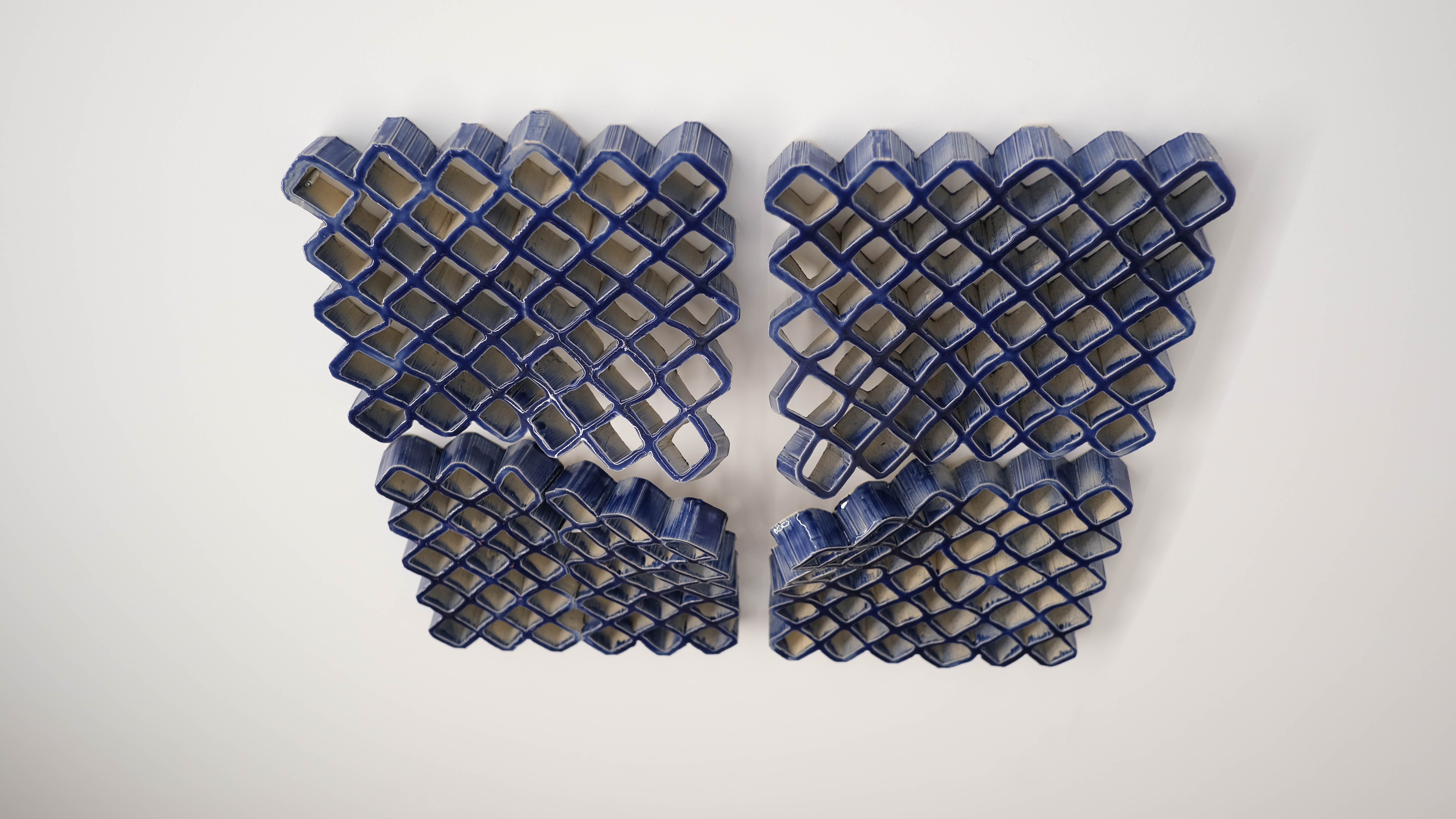
Antica Brussels Fine Art Fair
The fair will bring together important Belgian and international galleries presenting a selection of paintings, furniture, sculptures and objects that will take us on a trip through the major periods from the “Haute Époque” to the present day.
Preview: Wednesday 17 April 2024 from 2 pm to 10 pm (by invitation only) Vernissage: Thursday 18 April 2024 from 2 pm to 10 pm Exhibition: Friday 19 to Sunday 21 April 2024 from 11 am to 7 pm
Belgian and European visitors, collectors and buyers loyal to Antica Fine Art Fair, will be walking the halls of Tour&Taxis to meet around a hundred galleries from Belgium, France, the Netherlands, Germany, Italy, Switzerland, Spain and Luxembourg...
Tour & Taxis - Shed 2-3
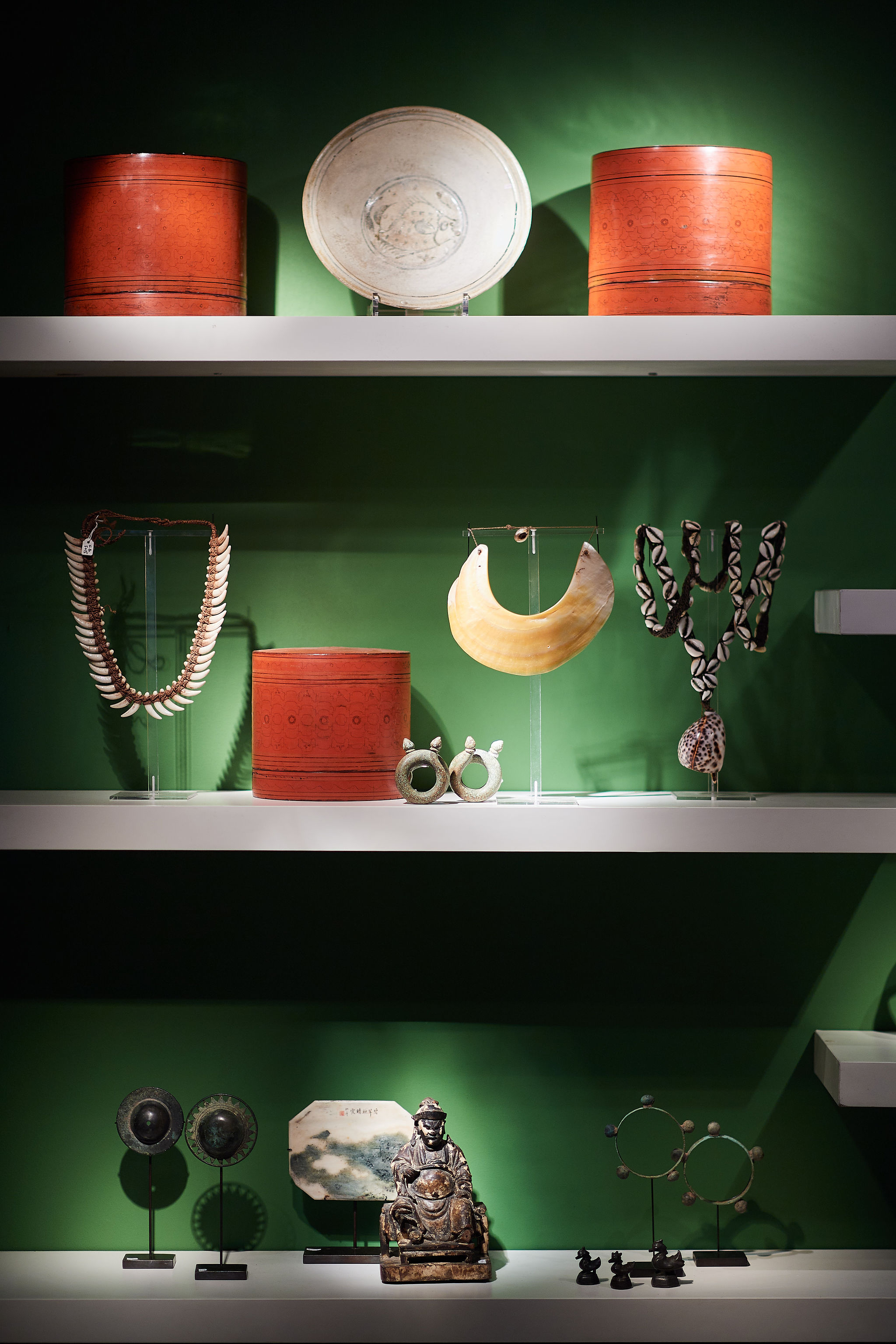
A la scène comme à la ville
Théâtre National Wallonie-Bruxelles

UNIQUE - Beyond photography
Group show that reflects the commitment of the artists to reappropriate the medium during their creative process. Nicolas Andry (BE), Pepe Atocha (PE), Sylvie Bonnot (FR), Aliki Christoforou (BE), Dana Cojbuc (RO), Antoine De Winter (BE), Gundi Falk (AT), Marina Font (AR), Lior Gal (IL), Audrey Guttman (BE), Romane Iskaria (FR), Morvarid K (IR), Kíra Krász (HU), Douglas Mandry (CH), Alice Pallot (FR), Raphaëlle Peria (FR), Luc Praet (BE), Anys Reimann (DE), Stephan Vanfleteren (BE), Laure Winants (BE), Vincent Zanni (CH).
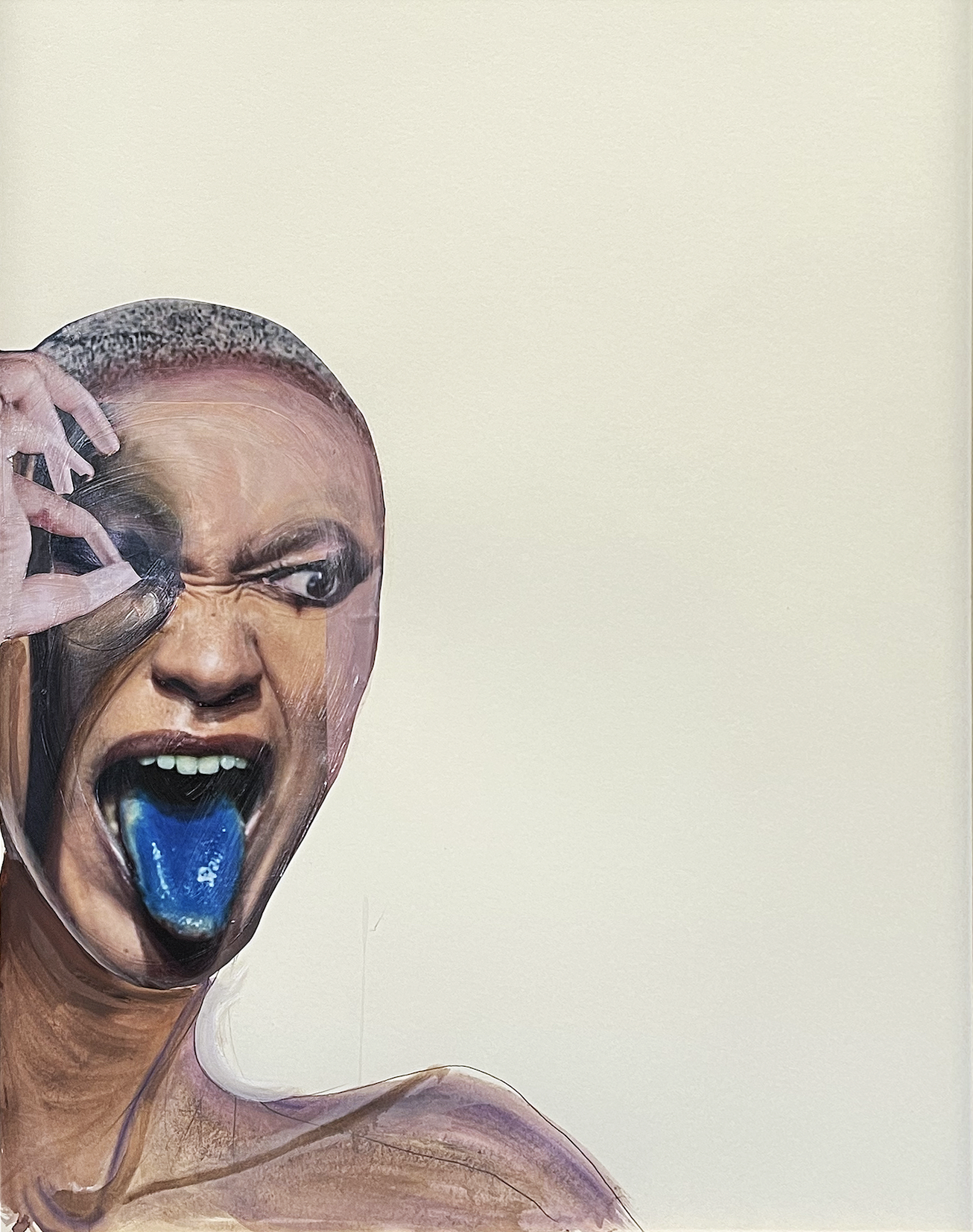
Parcours d'Artistes de Saint-Gilles 2024
Commune de Saint-Gilles
Saint-Gilles
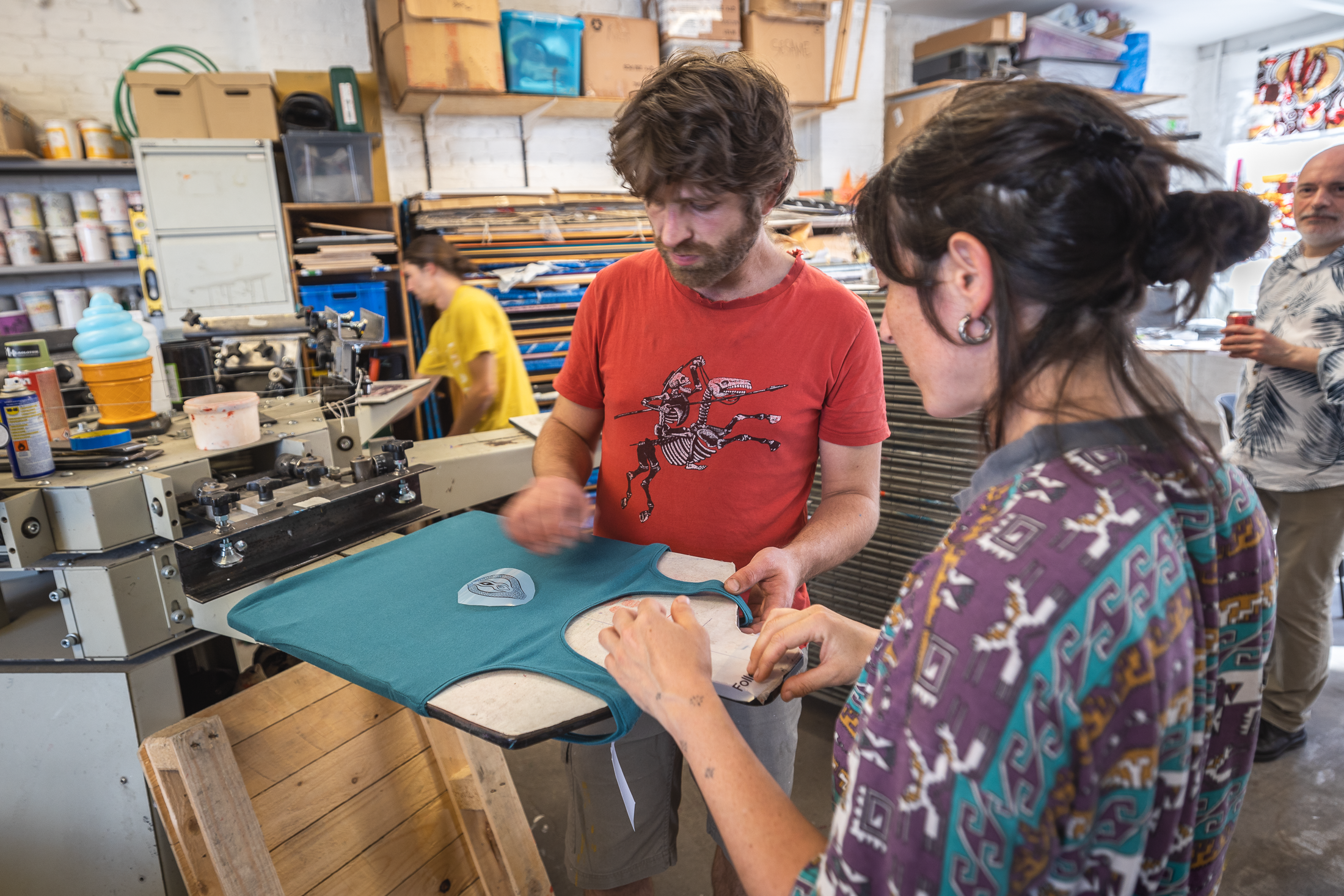
Les Nuits Botanique 2024
Saint-Josse-Ten-Noode

(PAS SI) FRAGILE! 2024
(Pas si) Fragile! the Next Performance Art Generation is a biennial springboard for emerging artists working in performance art: Its formula modifies with each new iteration. 2024’s edition will unfold at Studio Thor, which has been running the project ever since 2020, at Les Halles de Schaerbeek and at La Balsamine.
(Pas si) Fragile! the Next Performance Art Generation is a biennial springboard for emerging artists working in performance art: Its formula modifies with each new iteration. 2024’s edition will unfold at Studio Thor, which has been running the project ever since 2020, at Les Halles de Schaerbeek and at La Balsamine. As with previous iterations, (Pas si) Fragile! will feature a host of young artists who have recently graduated from Wallonia-Brussels’ visual arts schools. These institutions devote part of their curriculum to performance art, responding to the new dynamic generated by these practices within the professional artistic field. This year its scope will differ somewhat, however, for this endeavour will be expanded to include the presentation of work by some fifteen young artists from right across Europe: Finland, Greece, Ireland, Poland and Slovenia. In total, some thirty emerging artists will animate this intensive three-day programme, at the intersection of local practice here in Belgium and two projects featuring an international dimension, namely Performing Identity and Time For Live Art. PARTNERS (Pas si) Fragile ! 2024 is a production by Studio Thor, in collaboration with ENSAV – La Cambre, Les Halles de Schaerbeek and La Balsamine as part of the Time For Live Art and Performing Identity projects. With the participation of Maison des Arts and Commune de Saint-Josse. With the support of the Wallonia-Brussels Federation (Service de la Danse and Brussels Promotion), Wallonia-Brussels International, and the European Union (Creative Europe and Erasmus+ / strategic partnerships). The professional programme has been developped with the collaboration of WBTD and the Wallonie-Brussels Center in Paris. Belgian selection made thanks to the suggestions of erg, Le 75, ARBA/ESA (ISAC), Arts², Beaux-Arts de Liège, Académie des Beaux-Arts de Tournai. Time For Live Art brings together Studio Thor (BE), New Performance Turku Biennale (FI), MIRfestival, Athens (GR) and Infinite Present / Glej, Ljubljana (SI). Performing Identity brings together ENSAV – La Cambre (Brussels), ESA Le 75 (Brussels), Magdalena Abakanowicz University of the Arts (Poznan, PL), Burren College of Art (Ballyvaughan, IE), in collaboration with the festivals Verao Azul / CasaBranca (PT), New Performance Turku Biennale (FI) and (Pas si) Fragile ! (BE).
Halles de Schaerbeek, Studio Thor, La Balsamine
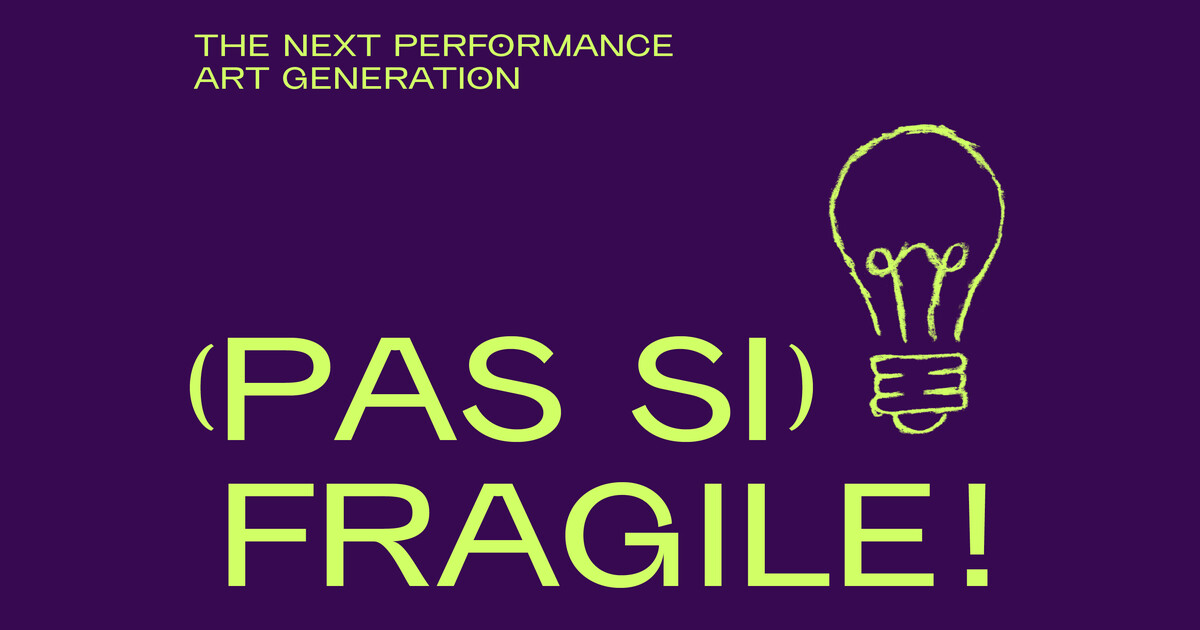
After a first highly successful edition, the Kora Days return in 2024! Bozar dedicates four days to West Africa’s flagship instrument, the kora.
Just this once, the festival takes on an extra dimension. Kora Days 2024 will explore the connection between the kora and another well-known stringed instrument: the guitar. In addition, on this occasion, the great Toumani Diabaté honours us with an exceptional concert that unites him with the Orchestre National de Lille: a meeting between the kora and symphonic music that Toumani himself explored with the late Ali Farka Touré on their legendary album Ali et Toumani (2010). The full Kora Days programme will be announced later, but already save the date!
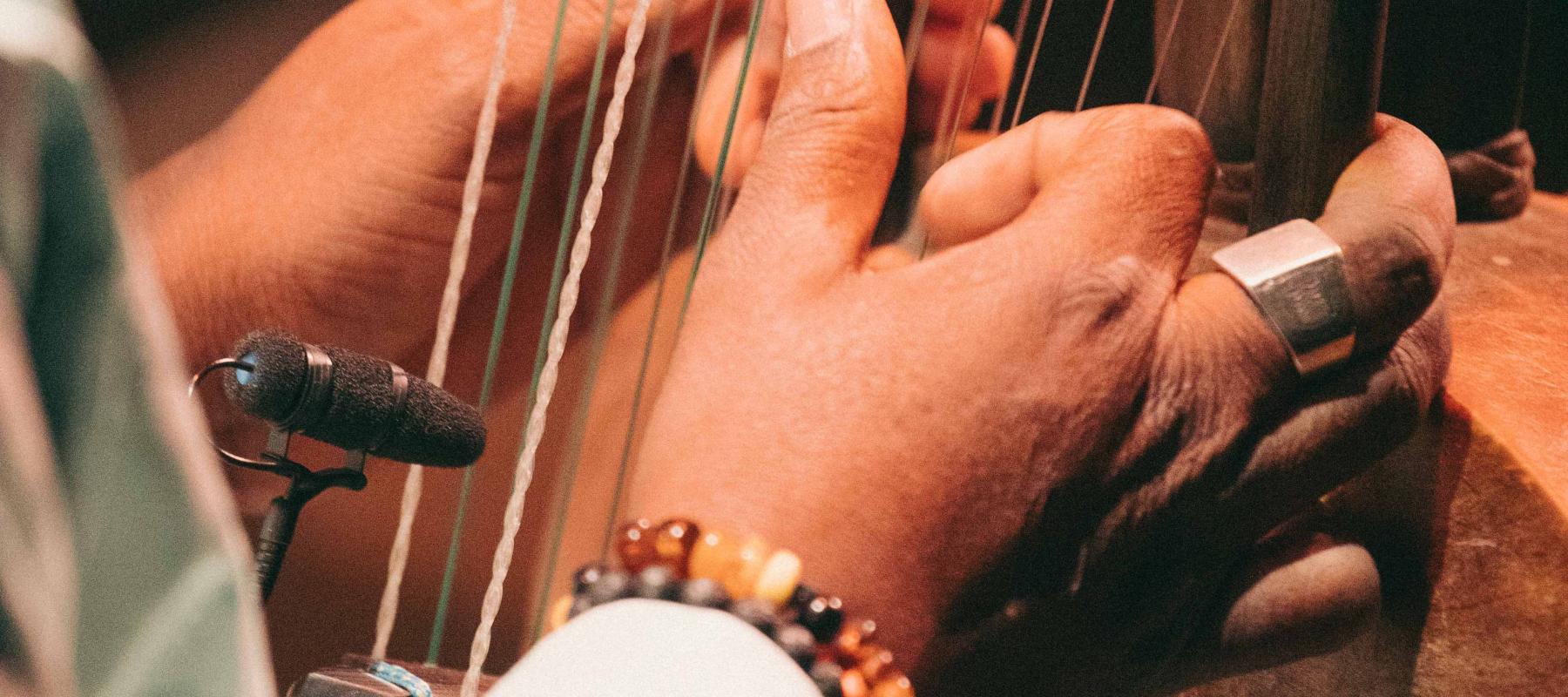
Brussels Short Film Festival
The Brussels Short Film Festival is back for its 27th edition! Once again this year, the Brussels Short Film Festival takes over the iconic venues of Flagey, Vendômes and Cinéma Galeries, next spring from April 24th to May 4th 2024. On the programme: 11 days of festival, more than 250 short films, films in competitions (national, international and Next Generation) and out of competition programs (Night of the Shorts, Oscars, free Open Air screenings…), youth-focused workshops, a range of professional activities and a Marquee to take a break. Get ready for another captivating cinematic experience! Save the dates and stay tuned for details of the programme and special guests.
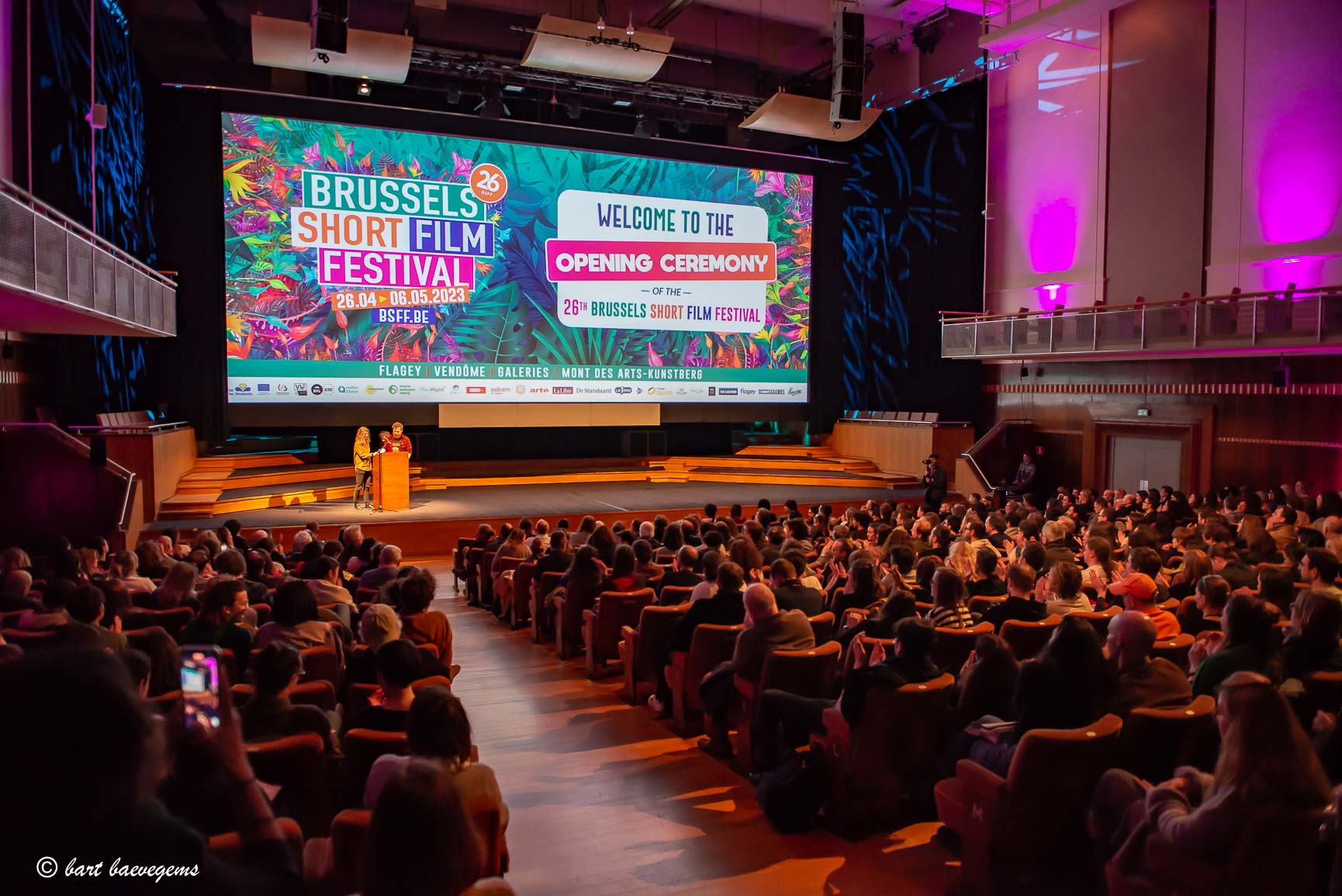
Art Brussels
Brussels Expo
Fairs and shows
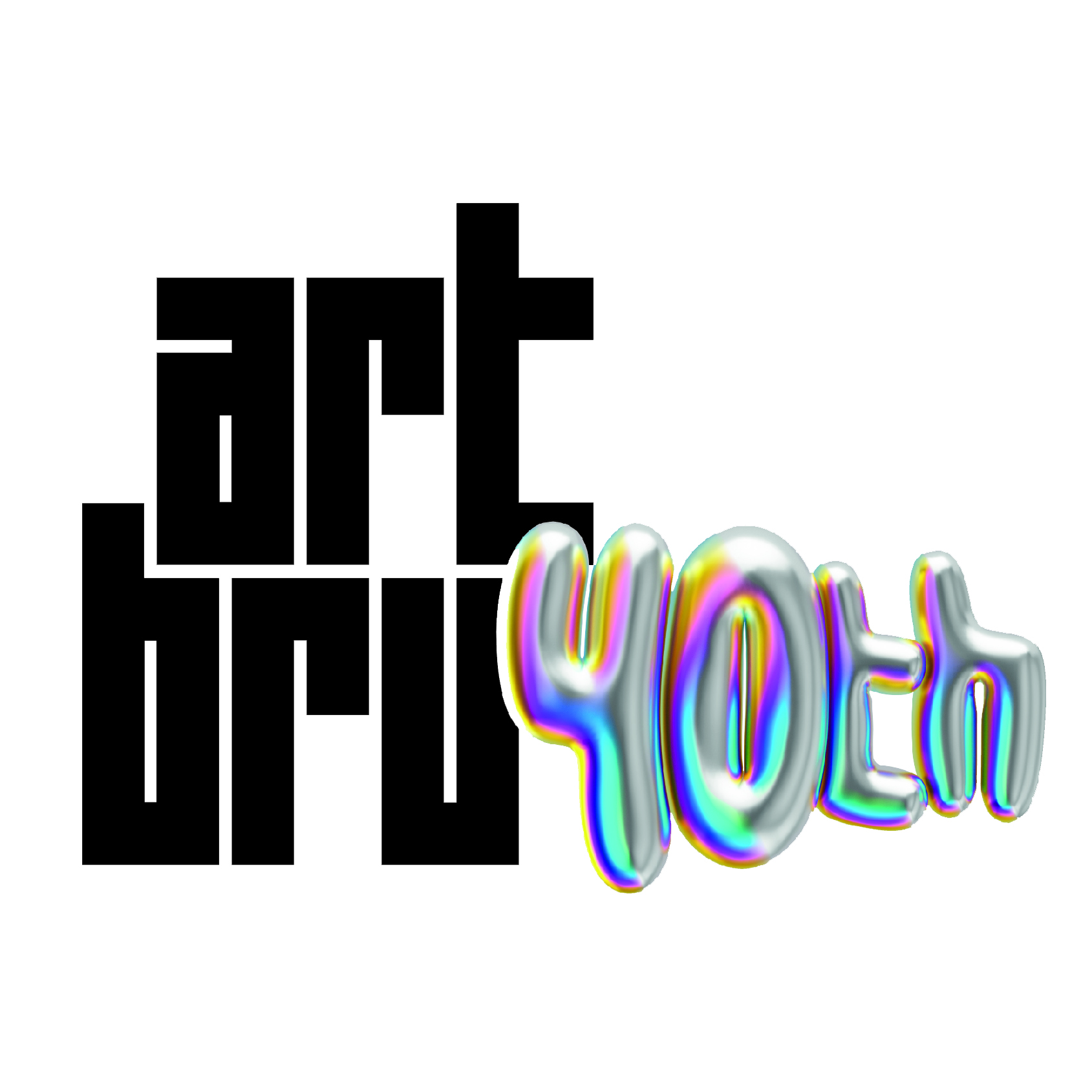
Brussels Jewellery Week
From 25 April to 5 May, Brussels will be all about contemporary jewellery! For its second edition, the Brussels Jewellery Week brings together established and emerging artists, collectors and an international audience. Brussels Jewellery Week aims to highlight contemporary jewellery as a creative and innovative craft. In addition to the main exhibition at MAD Brussels, tours, lectures and workshops will be organised at various locations around the city. PARTICLE[S] In physics, "elementary particles" are the smallest elements that form the matter and forces of the universe: in constant motion, these small entities are capable, by fusion, of forming large ensembles, thus forming the basis of all creation and transformation. In grammar, a particle is a small unchanging element: fixed, unassuming, it inflects the meaning of a word by connecting with it. The concept of PARTICLE[S] can be approached from a purely scientific or technical standpoint. But it can also be seen, in a world threatened by pollution, as a metaphor for many human interactions that ultimately form a critical mass. In the world of contemporary jewelry, we see that each material consists of the same tiny particles that together, in subtle arrangements, form a work of art.
MAD Brussels

Les Equinoxes Festival
La Tricoterie - Link factory

Various places in Brussels

International Dance Day
Various locations in Brussels, Wallonia and Flanders
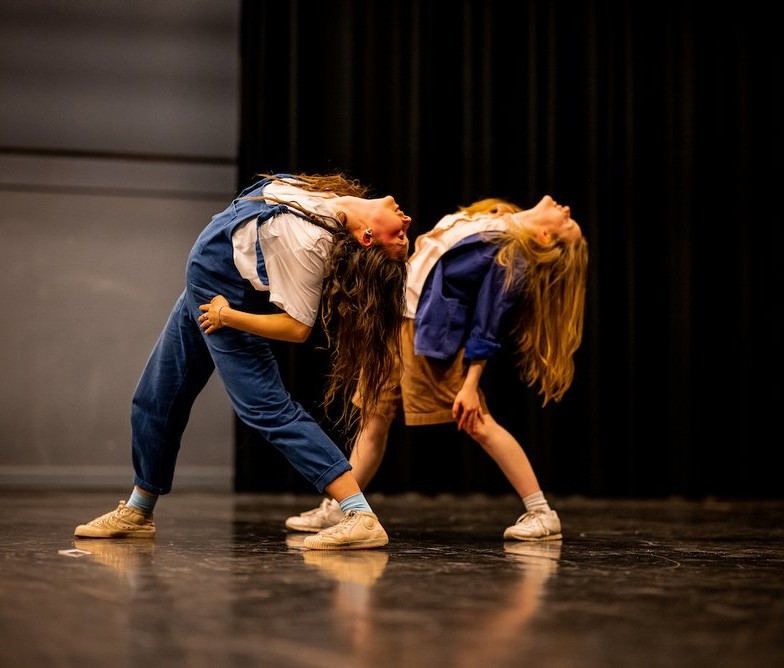
International Jazz Day

Queen Elisabeth Competiton
In 2024, the Queen Elisabeth Competition will be dedicated to the violin for the twentieth time. The best young violinists from the four corners of the world will compete in Brussels, from 6 May to 12 June. Tickets and subscriptions will be on sale as from February 2024.
Flagey & Bozar
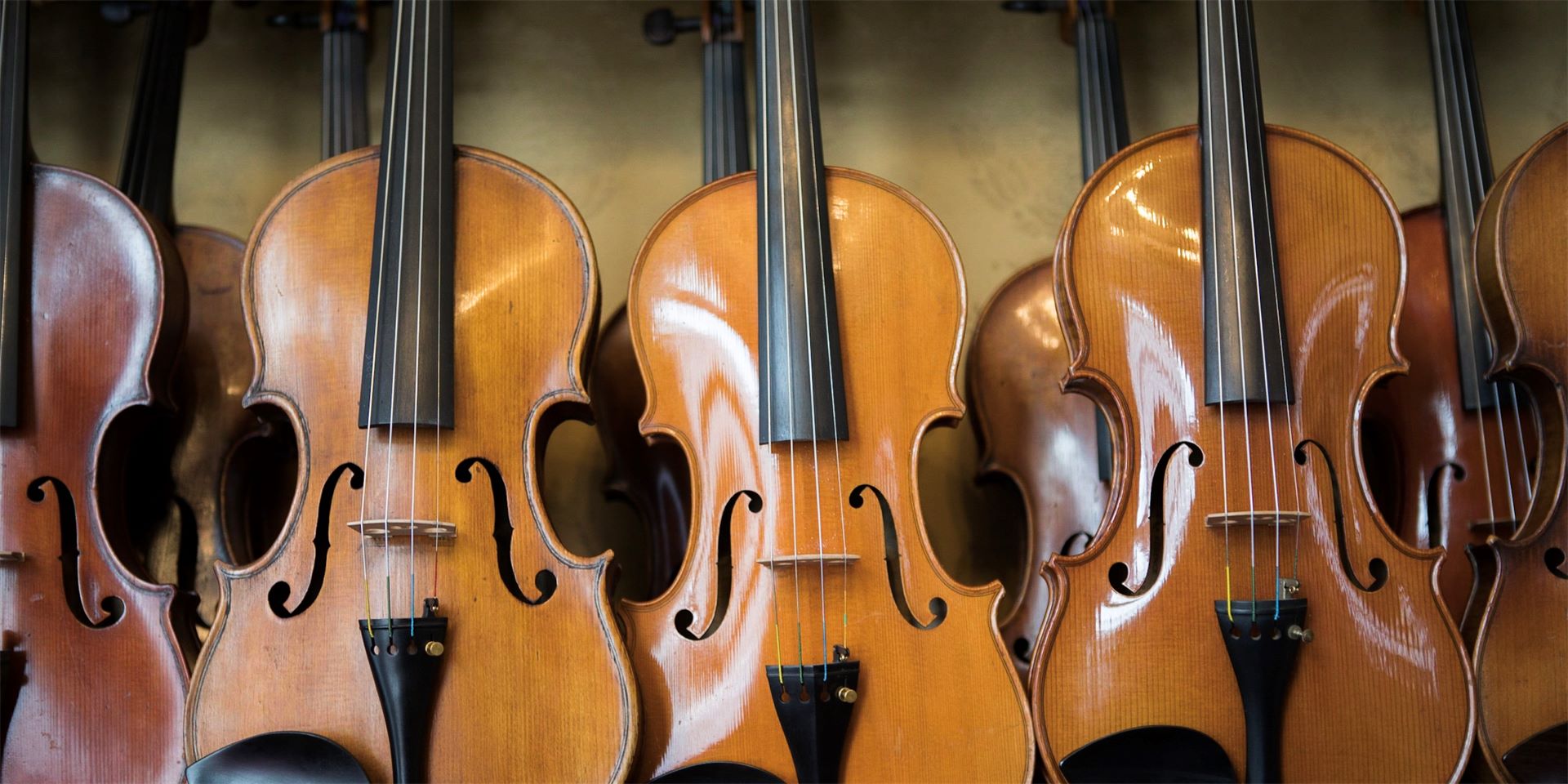
Kunstenfestivaldesarts
Kunstenfestivaldesarts is an international performing arts festival dedicated to contemporary theatre, dance, performance and visual arts. Every year, it takes place in Brussels during three weeks in May.
Contemporary: the festival supports both established and up-and-coming artists with the creation of bold artistic work rooted in today’s world. International: artists from all over the world are invited to confront us with diverse artistic practices and perspectives. Every year, the programme includes around thirty artistic projects that can be experienced and understood in a whole range of ways. It is intended for anyone who is keen to make discoveries. Nomadic: the festival takes place in around thirty venues in Brussels – theatres, cultural centres, museums and public spaces – but also venues that are not well known by audiences from Brussels or abroad. Of Brussels: the festival is organised in dialogue with several French and Dutch-speaking cultural partners and local associations in Brussels. It aims to reflect the diversity of Brussels. Since it started back in 1994, it has encouraged mobility between audiences, cultures and neighbourhoods. Kunstenfestivaldesarts stimulates debate and dialogue. Every year, it hosts a temporary Free School dedicated to sharing knowledge and artistic practices. Through its Communities projects, the festival also runs initiatives that allow students, associations, performing arts professionals or interested members of the public to connect during and beyond the festival.

Jam'in Jette Outdoor - Free Festival
Parc de la Jeunesse

“The secret for this so long going on party, is the happy mix of styles and ages” The first ever LA DEMENCE party took place almost 30 years ago in 1989 ! What began as a weekly gay party on Sundays in small cities around Belgium has now become one of Europe’s biggest and most renowned parties. The concept really came into its own and became a roar-away success when the parties settled down in the capital, Brussels, in 1992, and from then on took place in a regular monthly slot at Fuse club: the day before a bank holiday or on a Friday. Besides that,each anniversary at Halloween a full party weekend with several parties is organised, including a huge Main Party at Palais 12. What makes LA DEMENCE stand out from the other gay parties is the happy mix of different styles and ages partying together: leather boys, bears, fashion victims, muscle queens, drags, young and old – in total in excess of 2000 gays having one hell of a party together. This happy mix creates a family feeling which is the secret of this so long going on party! As Brussels is strategically placed as a city, LA DEMENCE attracts visitors from France, The Netherlands and Germany as well as hot sexy Italian, Swiss, Spanish, British and American boys. The venue at Fuse club is huge – containing three different rooms which has the advantage of offering an eclectic range of music delivered by eight international DJs progressing from techno to house, with even a smattering of pop in the smaller room. Great music and a great crowd also makes LA DEMENCE very sensual, so there are a few darker areas well worth exploring for those looking for a more than just a dance.

Lotto Brussels Jazz Weekend
Lotto Brussels Jazz Weekend, the free city festival that attracts some 300,000 music lovers to Belgium’s capital every year, will take place again this year. This year Lotto Brussels Jazz Weekend is once again able to treat the municipalities of the Brussels Capital Region to FREE open-air concerts.
Jazz will rule over Brussels for the sixth time at the end of May During the last weekend of May, Brussels will once again be dominated by jazz. From 24 to 26 May, three iconic squares will host a varied outdoor programme. In parallel, no fewer than 30 indoor concerts will take place and brass bands from all over Europe will parade through the city centre. And all of this for free. ///////////////////////////////////////////// PROGRAM WILL COME SOON !!!! STAY TUNED.
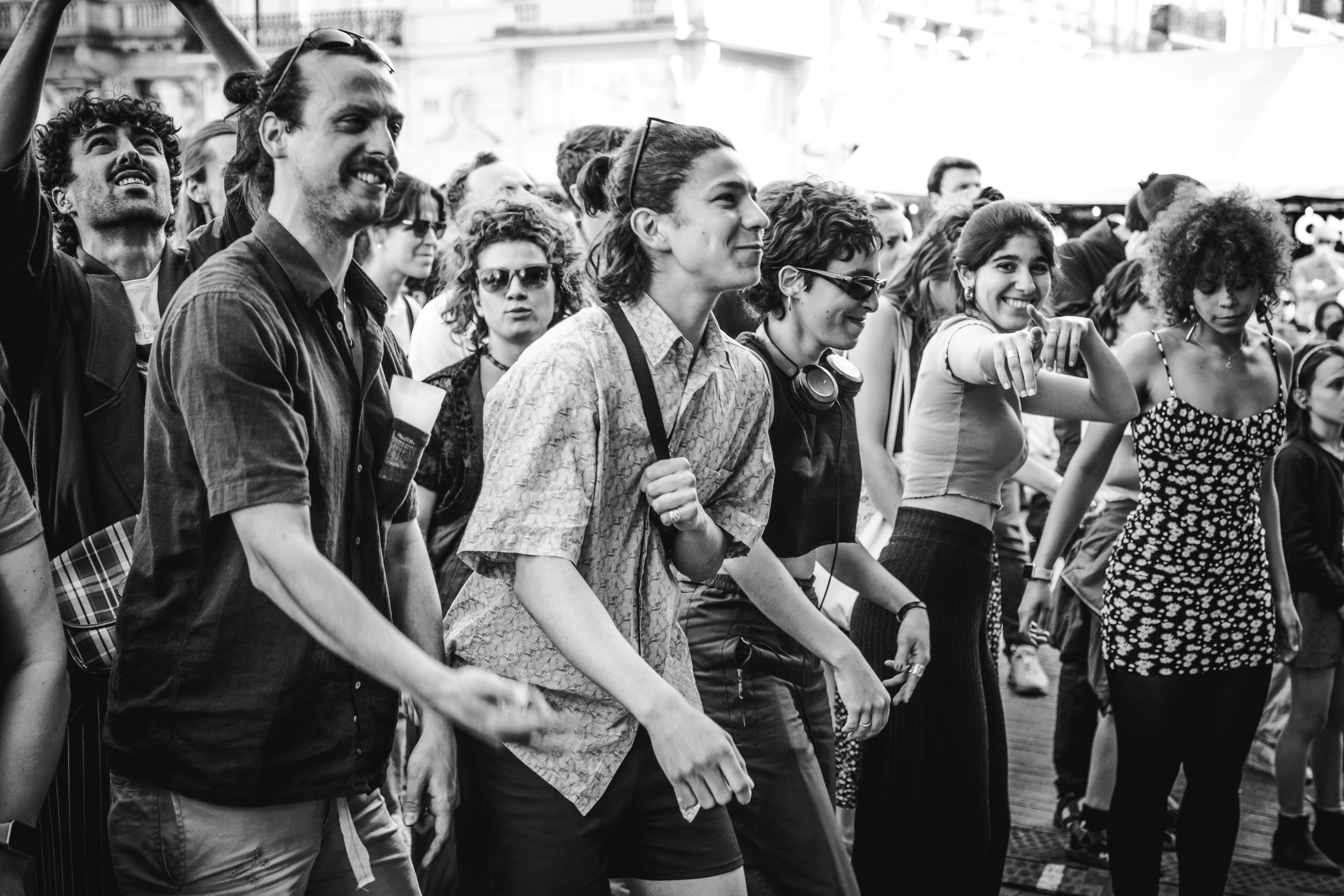
20 km de Bruxelles
A l'entrée du musée du Cinquantenaire

Zinneke Parade
Zinneke asbl
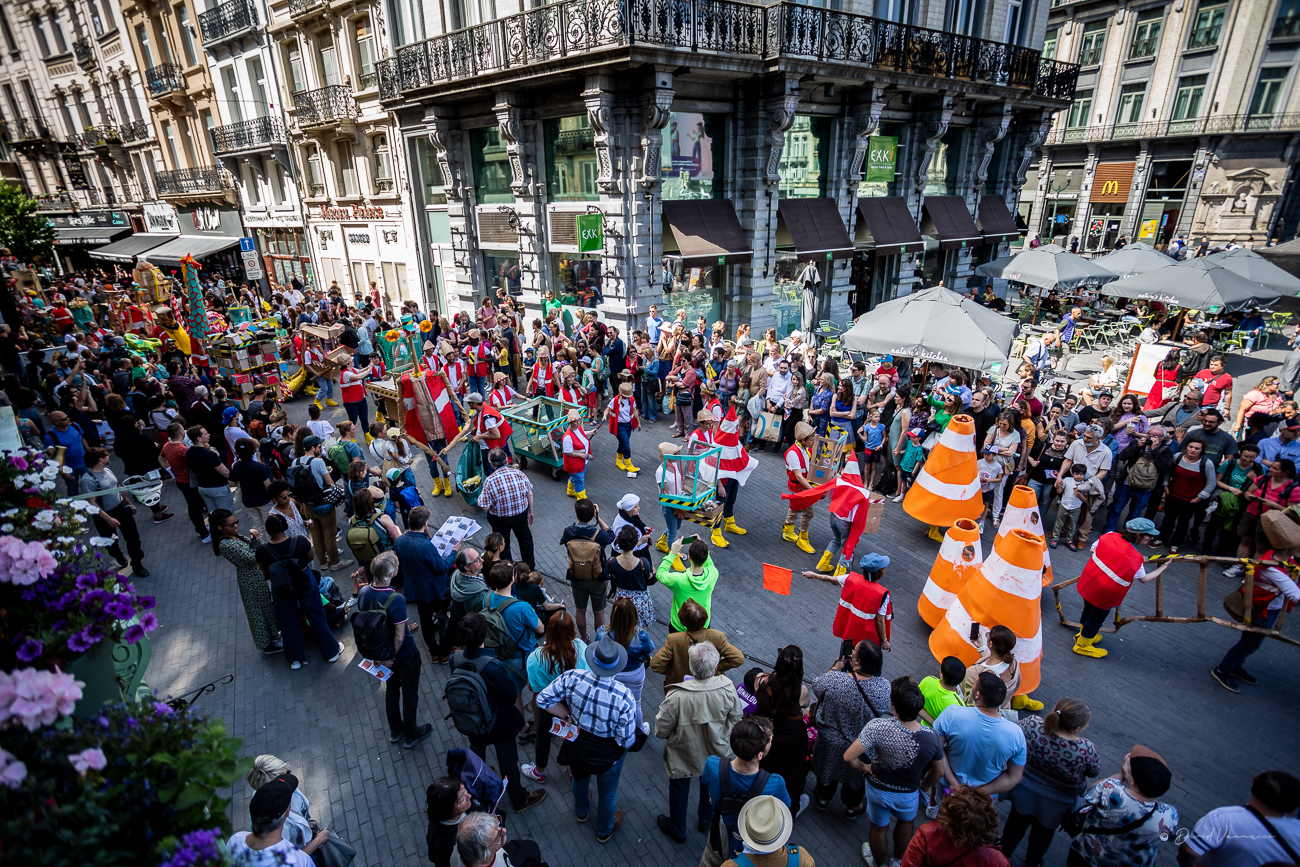
Brussels Renaissance Festival
The Brussels Renaissance Festival offers a series of events that showcase European heritage and history during the Renaissance.
The festival highlights the important role of Brussels during this period. Charles V, the most powerful sovereign of the 16th century, had Brussels as his main residence. This city, where he received his first inheritance in 1515, has since become the capital of 500 million Europeans.

TB² Festival
For the third time, the Brigittines and the Théâtre Les Tanneurs are joining forces to close the season together with combined evening performances at both arts centres (a first show at 7pm at The Brigittines followed by a second one at 9pm at Les Tanneurs (and vice versa).
Les Brigittines
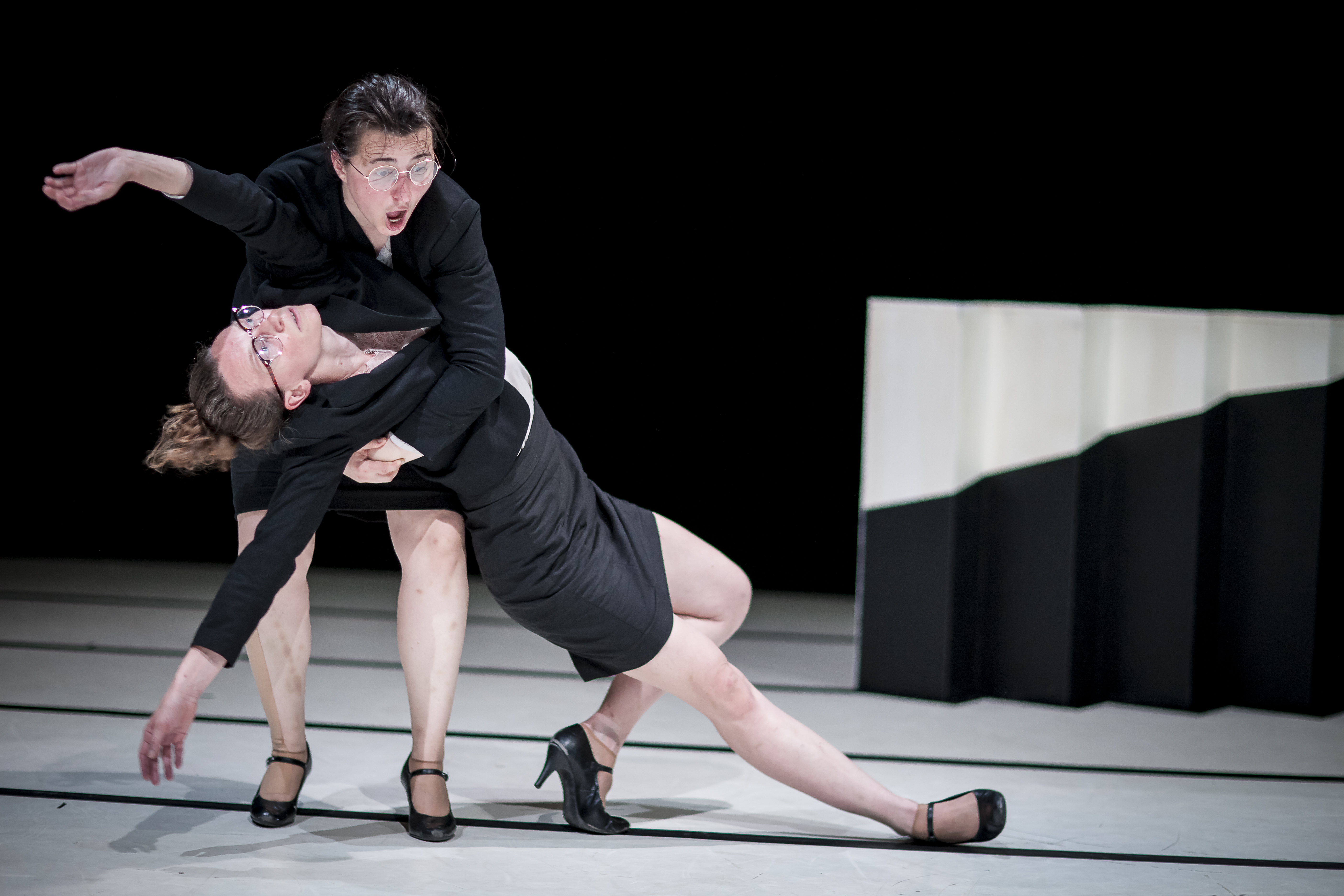
Fashion Moves
Things are moving this summer at MAD Brussels. With Fashion Moves, the Centre for Fashion and Design presents a fascinating exhibition on the multifaceted relationship between fashion and dance.
What does movement do to a piece of clothing? How does the fashion designer adapt to the demands of dance costume? To what extent do fashion and dance inspire each other? Dance and movement have always influenced fashion. For the exhibition Fashion Moves, MAD Brussels explores the interaction between the two worlds. From breathtaking creations dedicated to the stage to the latest trends emerging through social media, especially the influence of ballet and techno, or creations inspired by clubs and nightlife. Numerous creations and trends are reviewed in four different chapters. The exhibition features the work of many renowned names such as Raf Simons, Glenn Martens, Marine Serre and Walter Van Beirendonck as well as emerging talents like Igor Dieryck, Marie Vandewiele, Stefan Kartchev, Jordy Arthur and many more.

Buy your tickets at ticketing.brussels
Discover our selection of concerts, plays, shows, museums, festivals & exhibitions in brussels., where to eat, the best places to eat chips in brussels.
Check out all our addresses!

Street food in Brussels: a whole world of flavours at your fingertips
Are you a fan street food? Brussels is packed with places where you can taste and savour authentic street cuisine.

Brussels’ breweries
Over the last ten years, Brussels has seen a renewed interest in artisanal production and craft beers.

Sustainable restaurants in Brussels
Looking for a sustainable restaurant? Seventy-six establishments in Brussels hold the “Good Food Resto” label.

Let’s get practical
Arriving in brussels.
Plane, train, bus or car? All roads lead to Brussels.
Getting around
Get around by tram, bus, metro, train, bike... Transport is easy to use in Brussels!
Tourist information offices
In Brussels already and looking for a bit of inspiration? Pop in at one of our offices!
Low Emission Zone
Brussels is striving for cleaner air and knows how to get it done.
Brussels from all angles #visitbrussels

Brussels Card
The key to easily discover Brussels!
Free access to 49 Brussels museums
Discounts at attractions, shops, restaurants, bars and guided tours
Free information guide, city map and museum map
Optional: unlimited access to public transport, Hop on Hop off buses and access to the Atomium
Europe in Brussels
The European Quarter

European Parliament

Experience Europe

Our latest news in your mailbox
Don't miss a thing, sign up for our newsletters!
Brussels Travel Guide
Book your individual trip , stress-free with local travel experts
- roughguides.com
- Travel guide
- Local Experts
- Travel Advice
Accommodation
Wherever else you go in Belgium, allow at least a little time for BRUSSELS , which is undoubtedly one of Europe’s premier cities. Certainly, don’t let its unjustified reputation as a dull, faceless centre of EU bureaucracy deter you: in postwar years, the city has become a thriving, cosmopolitan metropolis, with top-flight museums and architecture (including a well-preserved late seventeenth-century centre), a superb restaurant scene and an energetic nightlife. Moreover, most of the key attractions are crowded into a centre that is small enough to be absorbed over a few long days, its boundaries largely defined by a ring of boulevards – the “petit ring”, or less colloquially, the “petite ceinture”.
Around Brussels: Waterloo
Bilingual brussels, the brussels card, east of the centre: the eu quarter and le cinquantenaire, eating and drinking, the grand-place, guided tours, the lower town, nightlife and entertainment, north of the centre: jette, laeken and heysel, south of the centre: st-gilles, avenue louise and ixelles, train station names, the upper town.
First-time visitors to Brussels are often surprised by the raw vitality of the city centre. It isn’t neat and tidy, and many of the old tenement houses are shabby and ill-used, but there’s a buzz about the place that’s hard to resist. The city centre is divided into two main areas. The larger westerly portion comprises the Lower Town , fanning out from the marvellous Grand-Place , with its exquisite guildhouses and town hall, while up above, on a ridge to the east, lies the much smaller Upper Town , home to the finest art collection in the country in the Musées Royaux des Beaux Arts.
Since the eleventh century, the ruling elite has lived in the Upper Town, keeping a beady eye on the workers and shopkeepers down below – a state of affairs that still – in part – remains. In recent times, this fundamental class division, so obvious in the layout of the centre, has been further complicated by discord between Belgium’s two main linguistic groups, the Walloons (the French-speakers) and the Flemings (the Dutch- or Flemish-speakers), and to add to the communal stew, these two groups now share their city with many others, including EU civil servants and immigrants from North and Central Africa, Turkey and the Mediterranean. Each of these communities tends to live a very separate, distinct existence, and Brussels’ compact nature heightens the contrasts: in five minutes you can walk from a chichi shopping mall into an African bazaar, or from a depressed slum quarter to a resplendent square of antique shops and exclusive cafés. This is something that increases the city’s allure, not least by way of the sheer variety of affordable cafés and restaurants – Brussels is a wonderful place to eat, its gastronomic reputation rivalling that of Paris. It’s also a great place to drink, with bars ranging from designer chic to rough and ready with everything in between.
The city’s specialist shops are another pleasure. Everyone knows about Belgian chocolates, but here in the capital there are also huge open-air markets, contemporary art galleries and establishments devoted to anything from comic books to costume jewellery and clubland fashion. Furthermore, Belgium is such a small country, and the rail network so fast and efficient, that Brussels also makes the perfect base for a wide range of day-trips. An obvious target is the battlefield of Waterloo , one of the region’s most visited attractions.
Brief history
Brussels takes its name from Broekzele, or “village of the marsh”, the community which grew up beside the wide and shallow River Senne in the sixth century, allegedly around a chapel built here by St Géry, a French bishop turned missionary. A tiny and insignificant part of Charlemagne’s empire at the end of the eighth century, it was subsequently inherited by the dukes of Lower Lorraine (or Lotharingia – roughly Wallonia and northeast France), who constructed a fortress here in 979. Protected, the village benefited from its position on the trade route between Cologne and the burgeoning towns of Bruges and Ghent to become a significant trading centre in its own right. The surrounding marshes were drained to allow for further expansion, and in 1229 the city was granted its first charter by the dukes of Brabant , the new feudal overlords who controlled things here, on and off, for around two hundred years. In the early fifteenth century, marriage merged the interests of the Duchy of Brabant with that of Burgundy, whose territories passed to the Habsburgs in 1482 when Mary, the last of the Burgundian line, died; she was succeeded by her husband, Maximilian I, who was anointed Holy Roman Emperor in 1494.
The first Habsburg rulers had close ties with Brussels, and the Emperor Charles V (1519–55) ran his vast kingdom from the city for over a decade, making it wealthy and politically important in equal measure. By contrast, his successor Philip II (1527–98) lived in Spain and ruled through a governor (for the whole of the Low Countries) resident in Brussels. It could have been a perfectly reasonable arrangement, but Philip’s fanatical Catholicism soon unpicked the equilibrium. Horrified by the Protestant leanings of many of his Low Country subjects, the king imposed a series of anti-Protestant edicts, and when these provoked extensive rioting , he dispatched an army of ten thousand men – led by a hardline reactionary, the Duke of Albe – to crush his opponents in Brussels absolutely. Albe quickly restored order and then, with the help of the Inquisition, set about the rioters with gusto, his Commission of Civil Unrest soon nicknamed the “ Council of Blood ” after its habit of executing those it examined. Goaded into rebellion by Albe’s brutality, Brussels, along with much of the Low Countries, exploded in revolt, and in 1577, the one-time protégé of the Habsburgs, William the Silent , made a triumphant entry into the city and installed a Calvinist government. Protestant control lasted for just eight years, before Philip’s armies recaptured Brussels – and the king wasn’t a man to forgive and forget. Seeing which way the religious wind was blowing, hundreds of Protestants left the city and the economy slumped, though complete catastrophe was averted by the conspicuous consumption of the (Brussels-based) Habsburg elite, whose high spending kept hundreds of workers in employment. Brussels also benefited from the digging of the Willebroek Canal, which linked it to the sea for the first time in its history in 1561.
By the 1580s, the Habsburgs had lost control of the northern part of the Low Countries (now the Netherlands) and Brussels was confirmed as the capital of the remainder, the Spanish Netherlands (broadly modern Belgium). Brussels prospered more than the rest of the country, but it was always prey to the dynastic squabbling between France and Spain: in 1695, for example, Louis XIV bombarded Brussels for 36 hours merely to teach his rivals a lesson, though the guilds , those associations of skilled merchants and workers who were crucial to the economy of Brussels, rebuilt their devastated city in double time, and it’s this version of the Grand-Place that survives today.
In 1700 Charles II, the last of the Spanish Habsburgs, died without issue. The ensuing War of the Spanish Succession dragged on for over a decade, but eventually the Spanish Netherlands were passed to the Austrian Habsburgs, who ruled – as had their predecessors – through a governor based in Brussels. It was during this period as capital of the Austrian Netherlands (1713–94) that most of the monumental buildings of the Upper Town were constructed and its Neoclassical avenues and boulevards laid out – grand extravagance in the context of an increasingly industrialized city crammed with a desperately poor working class.
The French Revolutionary army brushed the Austrians aside at the Battle of Fleurus in 1794, and the Austrian Netherlands promptly became a département of France. This lasted until the defeat of Napoleon when, under the terms of the Congress of Vienna which ended hostilities, the great powers decided to absorb the country into the new Kingdom of the Netherlands , ruled by the Dutch King William I. Brussels took turns with The Hague as the capital, but the experiment was short-lived, and in 1830 a Brussels-led rebellion removed the Dutch and led to the creation of an independent Belgium with Brussels as capital.
The nineteenth century was a period of modernization and expansion, during which the city achieved all the attributes of a modern European capital under the guidance of Burgomaster Anspach and King Léopold II . New boulevards were built; the free university was founded; the Senne – which by then had become an open sewer – was covered over in the city centre; many slum areas were cleared; and a series of grand buildings were erected. The whole enterprise culminated in the golden jubilee exhibition celebrating the founding of the Belgium state in the newly inaugurated Parc du Cinquantenaire.
Following the German occupation of Belgium in World War II, the modernization of Brussels has proceeded inexorably, with many major development projects – not least the new métro system – refashioning the city and reflecting its elevated status as the headquarters of both NATO and the EU.
Top image © Sira Anamwong/Shutterstock
Tailor-made travel itineraries for Belgium, created by local experts

8 days / from 2808 USD
The best of the Netherlands and Belgium
This trip will bring you the best of two countries: the Netherlands and Belgium. From the quaint streets, canals and windmills of Holland to beer and Belgium chocolate tasting in three beautiful Belgium cities. This trip has it all.

9 days / from 3024 USD
Experience the Liberation Route in BeNeLux
Explore the path of the World War II Liberation Route through Belgium, Luxembourg and the Netherlands. Visit important landmarks and museums on the way with this self drive itinerary, with enough time to explore cities such as Brussels and Rotterdam on the way.

10 days / from 5616 USD
Taste of Three - Belgium, France and Switzerland
Start your journey in Belgium and explore Brussels, Ghent and Bruges. A high-speed train will then take you to Strasbourg, from where you'll discover the Alsace. Proceed to Basel as your base, from where you'll see plenty of Switzerland: Zermatt, Matterhorn, Mount Pilatus and much more.
Tailor-made trips for Belgium
With over seventy hotels dotted within its central ring of boulevards, Brussels has no shortage of convenient places to stay, but even so finding hotel accommodation can still prove difficult, particularly in the spring and autumn when the capital enjoys what amounts to its high seasons – July and August are much slacker as the business trade dips when the EU (pretty much) closes down for its summer recess. The same cautions apply to the city’s B&Bs , though these are thin on the ground. If you do opt for a B&B, don’t expect UK-style hospitality – in effect you get a self-contained room in a private house – but do expect to be on the peripheries of town, a good way from the action. The city has half a dozen hostels , of which we have listed the best options.
At peak times, it’s prudent to reserve a bed at least for your first night, but if you do arrive with nowhere to stay, the city’s two main tourist offices operate a free same-night hotel booking service . Hotel prices vary hugely. Many have both deluxe and more standard rooms, with charges adjusted accordingly, and regular special and weekend discounts bring prices down by about fifteen percent, with some places occasionally halving their rates.
Brussels lies at the centre of Brabant , one of Belgium’s nine provinces. The Flemings claim the lion’s share of the province with their Vlaams Brabant (Flemish Brabant) actually encircling the capital – a noticeably narrow corridor of Flemish-speaking communities runs round the southern edge of Brussels. WATERLOO is easily the most popular attraction in Brabant Wallon (French-speaking Brabant) and is best seen on a day-trip from the capital. A run-of-the-mill suburb about 18km south of the centre of Brussels, the town has a resonance far beyond its size. On June 18, 1815, at this small crossroads town on what was once the main route to Brussels from France, Wellington masterminded the battle that put an end to the imperial ambitions of Napoleon. The battle turned out to have far more significance than even its generals realized, for not only was this the last throw of the dice for the formidable army born of the French Revolution, but it also marked the end of France’s prolonged attempts to dominate Europe militarily.
Nevertheless, the historic importance of Waterloo has not saved the battlefield from interference – a motorway cuts right across it – and if you do visit you’ll need a lively imagination to picture what happened and where – unless, that is, you’re around to see the large-scale re-enactment which takes place every five years in June; the next one is scheduled for 2015. Scattered round the battlefield are several monuments and memorials, the most satisfying of which is the Butte de Lion , a huge earth mound that’s part viewpoint and part commemoration. The battlefield is 3km south of the centre of Waterloo, where the Musée Wellington is easily the pick of several Waterloo museums.
The battlefield – Le Hameau de Lion
Some 4km south of town, the Waterloo battlefield is a landscape of rolling farmland, interrupted by a couple of main roads and more pleasingly punctuated by the odd copse and farmstead. The ridge where Wellington once marshalled his army now holds a motley assortment of attractions collectively known as Le Hameau du Lion (Lion’s Hamlet). This comprises four separate sites all within a few metres of each other, with the added offering of a 45-minute battlefield tour in a four-wheel-drive. Of the four sites, the worst are the Centre du Visiteur , which features a dire audiovisual display on the battle, and the Musée de Cires (same hours), a dusty wax museum. The best is the 100m-high Butte de Lion (same hours), built by local women with soil from the battlefield. The Butte marks the spot where Holland’s Prince William of Orange – one of Wellington’s commanders and later King William II of the Netherlands – was wounded. It was only a nick, so goodness knows how high it would have been if William had been seriously injured, but even so the mound is a commanding monument, surmounted by a regal 28-tonne lion atop a stout column. From the viewing platform, there’s a panoramic view over the battlefield, and a plan identifies which army was where. Also enjoyable is the Panorama de la Bataille (same hours), where a circular, naturalistic painting of the battle, on a canvas no less than 110m in circumference, is displayed in a purpose-built, rotunda-like gallery – to a thundering soundtrack of bugles, snorting horses and cannon fire. Panorama painting is extremely difficult – controlling perspective is always a real problem – but it was very much in vogue when the Parisian artist Louis Dumoulin began this effort in 1912. Precious few panoramas have survived and this one is a bit past its best, but it does at least give a sense of the battle. You can also venture out onto the battlefield under your own steam by following the old track that cuts south across the fields from beside the Panorama.
The Battle of Waterloo
Napoleon escaped from imprisonment on the Italian island of Elba on February 26, 1815. He landed in Cannes three days later and moved swiftly north, entering Paris on March 20 just as his unpopular replacement – the slothful King Louis XVIII – high-tailed it to Ghent. Thousands of Frenchmen rallied to Napoleon’s colours and, with little delay, Napoleon marched northeast to fight the two armies that threatened his future. Both were in Belgium. One, an assortment of British, Dutch and German soldiers, was commanded by the Duke of Wellington , the other was a Prussian army led by Marshal Blücher . At the start of the campaign, Napoleon’s army was about 130,000 strong, larger than each of the opposing armies but not big enough to fight them both at the same time. Napoleon’s strategy was, therefore, quite straightforward: he had to stop Wellington and Blücher from joining together – and to this end he crossed the Belgian frontier near Charleroi to launch a quick attack. On June 16, the French hit the Prussians hard, forcing them to retreat and giving Napoleon the opportunity he was looking for. Napoleon detached a force of 30,000 soldiers to harry the retreating Prussians, while he concentrated his main army against Wellington, hoping to deliver a knockout blow. Meanwhile, Wellington had assembled his troops at Waterloo , on the main road to Brussels.
At dawn on Sunday June 18 , the two armies faced each other. Wellington had some 68,000 men, about one third of whom were British, and Napoleon around five thousand more. The armies were deployed just 1500m apart with Wellington on the ridge north of – and uphill from – the enemy. It had rained heavily during the night, so Napoleon delayed his first attack to give the ground a chance to dry. At 11.30am , the battle began when the French assaulted the fortified farm of Hougoumont, which was crucial for the defence of Wellington’s right. The assault failed and at approximately 1pm there was more bad news for Napoleon when he heard that the Prussians had eluded their pursuers and were closing fast. To gain time he sent 14,000 troops off to impede their progress and at 2pm he tried to regain the initiative by launching a large-scale infantry attack against Wellington’s left. This second French attack also proved inconclusive and so at 4pm Napoleon’s cavalry charged Wellington’s centre, where the British infantry formed into squares and just managed to keep the French at bay – a desperate engagement that cost hundreds of lives. By 5.30pm , the Prussians had begun to reach the battlefield in numbers to the right of the French lines and, at 7.30pm , with the odds getting longer and longer, Napoleon made a final bid to break Wellington’s centre, sending in his Imperial Guard. These were the best soldiers Napoleon had, but slowed down by the mud churned up by their own cavalry, the veterans proved easy targets for the British infantry, and they were beaten back with great loss of life. At 8.15pm , Wellington, who knew victory was within his grasp, rode down the ranks to encourage his soldiers before ordering the large-scale counterattack that proved decisive.
The French were vanquished and Napoleon subsequently abdicated , ending his days in exile on St Helena, where he died in 1821. Popular memory, however, refused to vilify Napoleon as the aggressor – and not just in France, but right across Europe, where the Emperor’s bust was a common feature of the nineteenth-century drawing room. In part, this was to do with Napoleon’s obvious all-round brilliance, but more crucially, he soon became a symbol of opportunity: in him the emergent middle classes of western Europe saw a common man becoming greater than the crowned heads of Europe, an almost unique event at the time.
The Musée Wellington
The Musée Wellington , chaussée de Bruxelles 147 ( w www.museewellington.com ), occupies the old inn where Wellington slept the nights before and after the battle. It’s an enjoyable affair, whose displays detail the build-up to – and the course of – the battle via plans and models, alongside an engaging hotchpotch of personal effects. Room 4 holds the bed where Alexander Gordon, Wellington’s principal aide-de-camp, was brought to die, and here also is the artificial leg of Lord Uxbridge, another British commander: “I say, I’ve lost my leg,” Uxbridge is reported to have said during the battle, to which Wellington replied, “By God, sir, so you have!” After the battle, Uxbridge’s leg was buried here in Waterloo, but it was returned to London when he died to join the rest of his body; as a consolation, his artificial leg was donated to the museum. Such insouciance was not uncommon among the British ruling class and neither were the bodies of the dead soldiers considered sacrosanct: tooth dealers roamed the battlefields of the Napoleonic Wars pulling out teeth, which were then stuck on two pieces of board with a spring at the back – primitive dentures known in England as “Waterloos”.
In Wellington’s bedroom, Room 6 , there are copies of the messages Wellington sent to his commanders during the course of the battle, curiously formal epistles laced with phrases like “Could you be so kind as to …”. Finally, an extension at the back of the museum reprises what has gone before, albeit on a slightly larger scale, with more models, plans and military paraphernalia plus a lucid outline of the immediate historical background.
As a cumbersome compromise between Belgium’s French- and Flemish-speaking communities, Brussels is the country’s only officially bilingual region . This means that every instance of the written word, from road signs and street names to the Yellow Pages , has by law to appear in both languages. Visitors soon adjust – though on arrival the names of the main train stations can be confusing – but for simplicity we’ve used the French version of street names, sights etc.
The good-value Brussels Card ( w www.brusselscard.be ) provides free access to most of the city’s key museums, unlimited travel on the STIB public transport network, and discounts of up to 25 percent at specified restaurants and bars. There are three versions – 24hr (€24), 48hr (€34), and 72hr (€40) – and each is valid from the first time it is used, rather than the day of issue. The card is on sale online via the website and at both main tourist offices; there are no concessionary rates for seniors or children. It’s issued with a booklet detailing all the concessions and discounts.
Brussels by no means ends at the petit ring . King Léopold II pushed the city limits out beyond the course of the old walls, grabbing land from the surrounding communes to create the irregular boundaries that survive today. To the east , he sequestered a rough rectangle of land across which he ploughed two wide boulevards to link the city centre with Le Cinquantenaire , a self-glorifying and markedly grandiose monument erected to celebrate the golden jubilee of Belgian independence, and one that now houses three sprawling museums, two specialists and the more general Musées Royaux d’Art et d’Histoire . There’s no disputing the grandness of Léopold’s design, but in recent decades it has been overlaid with the uncompromising office blocks of the EU. These high-rises coalesce hereabouts to form the loosely defined EU quarter , not a particularly enjoyable area to explore, though the strikingly flashy European Parliament building is of passing interest, especially as it is just footsteps from the fascinating – and fascinatingly eccentric – paintings of the Musée Antoine Wiertz . If, however, you’ve an insatiable appetite for the monuments of Léopold, then you should venture further east to Tervuren , where the king built the massive Musée Royal de L’Afrique Centrale on the edge of the woods of the Forêt de Soignes.
The EU in Brussels
The three main institutions of the European Union operate mainly, though not exclusively, from Brussels. The European Parliament carries out its committee work and the majority of its business in Brussels, heading off for Strasbourg for around twelve, three-day plenary sessions per year. It’s the only EU institution to meet and debate in public, and has been directly elected since 1979. There are currently 736 MEPs, and they sit in political blocks rather than national delegations; members are very restricted on speaking time, and debates tend to be well-mannered consensual affairs, controlled by the President , who is elected for a five-year period by Parliament itself – although this mandate is often split in two and shared by the two biggest political groups. The Conference of Presidents – the President of the Parliament and Leaders of all the political groups – meet to plan future parliamentary business. Supporting and advising this political edifice is a complex network of committees from agriculture to human rights.
The European Council consists of the heads of government of each of the member states and the President of the European Commission; they meet twice every six months in the much-publicized “European Summits”. However, in between these meetings, ministers responsible for different issues meet in the Council of the European Union , the main decision-making structure alongside the European Parliament. There are complex rules regarding decision-making: some subjects require only a simple majority, others need unanimous support, some can be decided by the Council alone, others need the agreement of Parliament. This political structure is underpinned by scores of Brussels-based committees and working parties, made up of both civil servants and political appointees.
The European Commission acts as the EU’s executive arm and board of control, managing funds and monitoring all manner of agreements. The 27 Commissioners are political appointees, nominated by their home countries, but their tenure has to be agreed by the European Parliament and they remain accountable to the MEPs. The president of the Commission is elected by the European Parliament for a five-year period of office. Over twenty thousand civil servants work for the Commission, whose headquarters are in Brussels, mainly in the Berlaymont and adjacent Charlemagne building on rue de la Loi as well as other buildings in the Schuman area.
Brussels can hold its own with any international city when it comes to eating out , and whatever your taste, price range or preferred type of cuisine there is almost always something that will suit. Look out particularly for traditional Bruxellois dishes, canny amalgamations of Walloon and Flemish ingredients and cooking styles, whether rabbit cooked in beer, steamed pigs’ feet or waterzooi (for more on Belgian specialities). As for where to eat, the distinction between the city’s cafés , café-bars and restaurants is fairly elastic, and there are great places over the city, with particular concentrations on place Ste-Catherine and rue du Flandre in the Lower Town and place Boniface and place du Châtelain in Ixelles.
Drinking in Brussels, as in the rest of the country, is a joy. The city boasts an enormous variety of café-bars and bars : sumptuous Art Nouveau establishments, traditional bars with ceilings stained brown by a century’s smoke, speciality beer bars with literally hundreds of different varieties of ale and, of course, more modern hangouts. Many of the more distinctive bars are handily located within a few minutes’ walk of the Grand-Place and also in Ixelles, but really you’ll be spoiled for choice.
There’s no smoking in any establishment that sells food, along with bars and clubs.
Restaurants
Restaurant opening times are pretty standard – a couple of hours at lunchtime, usually noon to 2pm or 2.30pm, and again in the evening from 7pm to around 10pm; precise hours are given with the reviews below. At all but the cheapest restaurants, advance reservations are recommended, especially on Friday and Saturday evenings.
Bars and cafés
Belgians make little – or no – distinction between their bars and cafés : both serve alcohol, many stay open late (until 2am or even 3am) and most sell food as well. What you won’t find (thank goodness) are lots of the coffee house chains which beleaguer so many big cities.
The obvious place to begin any tour of Brussels is the Grand-Place , one of Europe’s most beautiful squares, which sits among a labyrinth of narrow, cobbled alleys and lanes at the heart of the Lower Town. Here, the Gothic extravagance of the Hôtel de Ville (town hall) presides over the gilded facades of a full set of late seventeenth-century guildhouses , whose columns, scrolled gables and dainty sculptures encapsulate Baroque ideals of balance and harmony. Inevitably, such an outstanding attraction draws tourists and expats in their droves, but there’s no better place to get a taste of Brussels’ past and Eurocapital present.
Originally marshland, the Grand-Place was drained in the twelfth century, and by 1350 covered markets for bread, meat and cloth had been erected, born of an economic boom that was underpinned by a flourishing cloth industry. Later, the Grand-Place’s role as the commercial hub of the emergent city was cemented when the city’s guilds built their headquarters on the square and, in the fifteenth century, it also assumed a civic and political function with the construction of the Hôtel de Ville. The ruling dukes visited the square to meet the people or show off in tournaments, and it was here that official decrees and pronouncements were proclaimed.
During the religious wars of the sixteenth century, the Grand-Place became as much a place of public execution as trade, but thereafter resumed its former role as a marketplace. Of the square’s medieval buildings, however, only parts of the Hôtel de Ville and one or two guildhouses have survived, the consequence of an early example of the precepts of total war, a 36-hour French artillery bombardment which pretty much razed Brussels to the ground in 1695; the commander of the French artillery gloated, “I have never yet seen such a great fire nor so much desolation”. After the French withdrew, the city’s guildsmen dusted themselves down and speedily had their headquarters rebuilt, adopting the distinctive and flamboyant Baroque style that characterizes the square today.
The health of Charles II
Philip IV of Spain (1605–65) had no fewer than fourteen children, but only one of his sons – Charles II (1661–1700) – reached his twenties. With women banned from the succession, the hapless, sickly Charles became king aged just four and, much to everyone’s surprise, survived to adulthood. After his first marriage in 1679, there were great hopes that he would sire an heir , but none arrived, allegedly because Charles suffered from premature ejaculation. A second marriage, twenty years later, was equally fruitless and, as it became increasingly clear that Charles was unable to procreate, Europe focused on what was to happen when Charles died and the Spanish royal line died out. Every ambassador to the Spanish court wrote long missives home about the health of Charles, none more so than the English representative, Stanhope , who painted an especially gloomy picture: “He (Charles) has a ravenous stomach and swallows all he eats whole, for his nether jaw stands out so much that his two rows of teeth cannot meet…His weak stomach not being able to digest the food, he voids it in the same (whole) manner.”
In the autumn of 1700, it was clear that Charles was dying and his doctors went to work in earnest, replacing his pillows with freshly killed pigeons and covering his chest with animal entrails. Not surprisingly, this didn’t work and Charles died on November 1, an event which triggered the War of the Spanish Succession .
The Hôtel de Ville
From the south side of the Grand-Place, the scrubbed and polished Hôtel de Ville (town hall) dominates proceedings, its 96m spire soaring high above two long series of robust windows, whose straight lines are mitigated by fancy tracery and an arcaded gallery. The edifice dates from the beginning of the fifteenth century, when the town council decided to build itself a mansion that adequately reflected its wealth and power. The first part to be completed was the east wing – the original entrance is marked by the twin lions of the Lion Staircase, though the animals were only added in 1770. Work started on the west wing in 1444 and continued until 1480. Despite the gap, the wings are of very similar style, and you have to look hard to notice that the later one is slightly shorter than its neighbour, allegedly at the insistence of Charles the Bold who – for some unknown reason – refused to have the adjacent rue de la Tête d’Or narrowed. The niches were left empty and the statues seen today, which represent leading figures from the city’s past, were added as part of a nineteenth-century refurbishment.
By any standard, the tower of the Hôtel de Ville is quite extraordinary, its remarkably slender appearance the work of Jan van Ruysbroeck , the leading spire specialist of the day, who also played a leading role in the building of the cathedral. Ruysbroeck had the lower section built square to support the weight above, choosing a design that blended seamlessly with the elaborately carved facade on either side – or almost: look carefully and you’ll see that the main entrance is slightly out of kilter. Ruysbroeck used the old belfry porch as the base for the new tower, hence the misalignment, a deliberate decision rather than the miscalculation which, according to popular legend, prompted the architect’s suicide. Above the cornice protrudes an octagonal extension where the basic design of narrow windows flanked by pencil-thin columns and pinnacles is repeated up as far as the pyramid-shaped spire , a delicate affair surmounted by a gilded figure of St Michael , protector of Christians in general and of soldiers in particular. The tower is off-limits, and guided tours in English are confined to a string of lavish official rooms used for receptions and town council meetings. Tours begin at the reception desk off the interior quadrangle; be prepared for the guides’ overly reverential script.
Guided tours are big business in Brussels; everything from a quick stroll or bus ride round the city centre to themed visits is on offer, and both Brussels International tourist offices have the details of – and take bookings for – about twenty operators. As a general rule, the more predictable tours can be booked on the day, while the more exotic need to be booked ahead of time, either direct with the company concerned or with the tourist office, who normally require at least two weeks’ advance notice. Among the many more straightforward options, Brussels City Tours , rue de la Colline 8 ( w www.brussels-city-tours.com ), operates the Visit Brussels Line, a hop-on, hop-off bus service which loops round the city, visiting twelve of its principal sights.
More promising is ARAU (Atelier de Recherche et d’Action Urbaines), blvd Adolphe Max 55 ( t 02 219 33 45, w www.arau.org ), a heritage action group which provides tours exploring the city’s architectural history – with particular emphasis on Art Nouveau – from April through to December; prices vary with the length of the tour and the itinerary, but average about €10 per person for walking tours, €15 if there’s some transport involved.
Cramped and populous, the Lower Town fans out from the Grand-Place in all directions, bisected by one major north–south boulevard, variously named Adolphe Max, Anspach and Lemonnier. Setting aside the boulevard – which was ploughed through in the nineteenth century – the layout of the Lower Town remains essentially medieval, a skein of narrow, cobbled lanes and alleys in which almost every street is crimped by tall and angular town houses. There’s nothing neat and tidy about all of this, but that’s what gives it its appeal – dilapidated terraces stand next to prestigious mansions and the whole district is dotted with superb buildings, everything from beautiful Baroque churches through to Art Nouveau department stores.
The Lower Town is at its most beguiling to the northwest of the Grand-Place, where the churches of Ste-Catherine and Ste-Jean-Baptiste au Béguinage stand amid a cobweb of quaint streets and tiny squares. The streets to the north of the Grand-Place are of less immediate appeal, with particularly dreary rue Neuve, a pedestrianized main drag that’s home to the city’s mainstream shops and stores, leading up to the clumping skyscrapers that surround the place Rogier and the Gare du Nord. This is an uninviting part of the city, but relief is at hand in the precise Habsburg symmetries of the place des Martyrs and at the Belgian Comic Strip Centre, the Centre Belge de la Bande Dessinée. To the south of the Grand-Place, almost everyone makes a beeline for the city’s mascot, the Manneken Pis , but much more enjoyable is the museum dedicated to Belgium’s most celebrated chansonnier, Jacques Brel .
Éditions Jacques Brel
From the Manneken Pis, it’s a short stroll to place de la Vieille-Halle aux Blés, where the Éditions Jacques Brel ( www.jacquesbrel.be ) is a small but inventive museum celebrating the life and times of the Belgian singer Jacques Brel (1933–78), who was born and raised in Schaarbeek, a suburb of Brussels, though he lived most of his life in France. A legend in his own musical lifetime, Brel became famous in the 1960s as a gravelly voiced singer of mournful chansons about death, loss, desire and love, all of which he wrote himself. Inside the museum, a sequence of life-size tableaux give the impression that you have just missed Brel – a cigarette still burns in the replica bar – and you can watch films of the man in concert in the small and cosy theatre-cum-cinema. Brel’s performances were famous for their intensity and if you watch a show you can’t fail to be affected, though actually liking the music is another thing altogether.
Jacques Brel playlist
If you like what you hear at the Éditions Jacques Brel, you might want to check out some songs from the playlist below, which covers the very best of Brel’s work.
Brel’s deliberately repetitive, climactic tale of sailors in seedy ports is a fantastically evocative song, and was one of his most intense live numbers.
Les Bonbons
This is Brel at his wittiest and most unforgiving, poking fun at 1960s hippies.
Le chanson de Jackie
Brel in autobiographical mode, looking back in fantastically rumbustious fashion on his career and forward into his future.
One of Brel’s greatest love songs, brilliantly covered by Scott Walker.
Le Moribond
The tormented and yet curiously upbeat lament of a dying man that gave rise to the Terry Jacks hit of 1974.
Ne me quitte pas
Brel’s most anguished love song, and perhaps one of the most affecting ever written, memorably covered by Nina Simone.
Quand on n’a que l’amour
One of Brel’s earliest songs, When we have only Love was his first hit single.
The Impossible Dream has been covered by just about everyone and is quite rightly one of Brel’s best-known songs, but his version stands out.
Je suis un soir d’été
This late and very atmospheric study of summer ennui in small-town Belgium is one of Brel’s most beautiful songs.
Brel is typically satirical in this biting rant against war, militarism and middle-class bourgeois values.
Tintin was the creation of Brussels-born Georges Remi , aka Hergé (1907–83). Remi’s first efforts (pre-Tintin) were sponsored by a right-wing Catholic journal, Le XXième Siècle , and in 1929 when this same paper produced a kids’ supplement – Le Petit Vingtième – Remi was given his first major break. He was asked to produce a two-page comic strip and the result was Tintin in the Land of the Soviets , a didactic tale about the evils of Bolshevism. Tintin’s Soviet adventure lasted until May 1930, and to round it all off the director of Le XXième Siècle decided to stage a PR-stunt reception to celebrate Tintin’s return from the USSR. Remi – along with a Tintin lookalike – hopped on a train just east of Brussels and when they pulled into the capital they were mobbed by scores of excited children. Remi and Tintin never looked back. Remi decided on the famous quiff straight away, but other features – the mouth and expressive eyebrows – only came later. His popularity was – and remains – quite phenomenal: Tintin has been translated into sixty languages and over twenty million copies of the comic Le Journal de Tintin , Remi’s own independent creation first published in 1946, have been sold – and that’s not mentioning all the Tintin TV cartoon series. Remi’s life and work are also celebrated at the Musée Hergé in Louvain-la-Neuve.
As far as nightlife goes, it’s likely you’ll be happy to while away the evenings in one of the city’s bars or café-bars – there are plenty in which you can drink until sunrise. If that isn’t enough, Brussels also has a clutch of established clubs , though most of the action revolves around club nights with moveable locations. It’s a fast-moving scene, so the best bet is to check out local websites to see what’s on. Brussels is a good place to catch live bands , with a number of especially appealing smaller venues such as Ancienne Belgique and Botanique . Along with Antwerp, the city is also a regular stop on the European tours of major artists, the big venue being Forest Nationale . Jazz is well catered for too, with several bars playing host to local and international acts, as well as the internationally acclaimed Jazz Marathon held every May ( www.brusselsjazzmarathon.be ).
The classical musical scene is excellent. The Orchestre National de Belgique ( www.nob.be ) enjoys an international reputation and the city showcases a number of excellent classical music festivals. Cream of the crop are the Ars Musica festival of contemporary music held in March ( www.arsmusica.be ), and May’s prestigious Concours Musical Reine Elisabeth ( www.concours-reine-elisabeth.be ), a competition for piano, violin and voice. Opera lovers should make a beeline for the Théâtre Royal de la Monnaie, which is much praised for staging contemporary interpretations of classic operas, as well as offering a more eclectic repertoire of music and dance. Indeed, the city’s dance scene has been impressing visitors ever since Maurice Béjart brought his classical Twentieth Century Ballet here in 1959. Now the main dance venues are the Koninklijke Vlaamse Schouwberg and the Kaaitheatre, but the innovative legacy of Béjart lives on, with his old company (now called Rosas and led by Anne Theresa de Keersmaeker) regularly performing at Théâtre Royal de la Monnaie.
The big players in the Brussels theatre scene are the Francophone Théâtre National and the Flemish Koninklijke Vlaamse Schouwberg, but the city also has an abundance of small theatres providing an eclectic programme from experimental theatre to political pieces and comedy. Most productions are performed in French and Flemish, but several American, Irish and British theatre groups put on high-quality amateur productions too.
The free, trilingual Agenda has the most comprehensive listings of concerts and events. Published every Thursday, it can be picked up in all main métro stations, plus some bars and cafés.
To the north of the city centre lies Jette , a well-heeled suburb that wouldn’t merit a second glance if it weren’t for the former home of René Magritte, now turned into the engaging Musée René Magritte , which pays detailed tribute to the artist, his family and friends. East of here is leafy Laeken , where the Belgian royal family hunker down, and next door again is Heysel , with its trademark Atomium , a hand-me-down from the 1958 World’s Fair.
Brussels has a supreme selection of small, independent shops , a smashing range of open-air markets and a number of charming galeries , covered shopping “streets” dating back to the nineteenth century. The main downtown shopping street is rue Neuve , but this is dominated by chain stores; the Galeries St-Hubert , near the Grand-Place, are much more distinctive, accommodating a smattering of upmarket shops and stores, while the nearby Galerie Agora peddles bargain-basement leather jackets, incense, jewellery and ethnic goods. Behind the Bourse, rue Antoine Dansaert caters for the young and fashionable, housing the stores of upcoming designers as well as big Belgian names like Strelli, and in neighbouring St-Géry , rue des Riches Claires and rue du Marché au Charbon are good for streetwear. More than anything else, however, Brussels is famous for three things: comic strips , beer and chocolate .
Generally speaking, shops and stores are open from 10am to 6pm or 7pm Monday through Saturday. On Fridays, most department stores stay open till 8pm, and some tourist-oriented shops open on Sundays too.
Cobwebbed by tiny squares and narrow streets, home to a plethora of local bars and many of the capital’s finest Art Nouveau houses, the neighbouring areas of St-Gilles and Ixelles, just south of the petit ring, make a great escape from the razzmatazz of the city centre. St-Gilles , the smaller of the two communes , does have patches of inner-city decay, but it gets more beautiful the further east it spreads, its run-down streets soon left behind for attractive avenues interspersed with dignified squares. Ixelles , for its part, is one of the capital’s most interesting and exciting outer areas, with a diverse street-life and café scene. Historically something of a cultural crossroads, Ixelles has long drawn artists, writers and intellectuals – Karl Marx, Auguste Rodin and Alexandre Dumas all lived here – and today it retains an arty, sometimes Bohemian feel. Ixelles is cut into two by avenue Louise , a prosperous corridor that is actually part of the city – a territorial anomaly inherited from Léopold II, who laid it out and named it after his eldest daughter in the 1840s. Some of Brussels’ premier hotels, shops and boutiques flank the northern reaches of the avenue and further along is the enjoyable Musée Constantin Meunier , sited in the sculptor’s old house.
More than anything else, however, it’s the superb range of Art Nouveau buildings clustering the streets of St-Gilles and Ixelles that really grab the attention. Many of the finest examples are concentrated on and around the boundary between the two communes – in between chaussée de Charleroi and avenue Louise – and it’s here you’ll find Horta’s own house and studio, now the glorious Musée Victor Horta , one of the few Art Nouveau buildings in the country fully open to the public. Access to most of the city’s Art Nouveau buildings is restricted, so you can either settle for the view from outside, or enrol on one of ARAU’s specialist Art Nouveau tours.
Musée Victor Horta
The best place to start a visit to St-Gilles is the delightful Musée Victor Horta ( w www.hortamuseum.be ), just off the chaussée de Charleroi at rue Américaine 25 and reachable by tram #92 from place Louise. The museum occupies the two houses Horta designed as his home and studio at the end of the nineteenth century, and was where he lived until 1919. The exterior sets the tone, a striking re-working and re-ordering of what was originally a modest terraced structure, the fluidity of the design incorporating almost casually knotted and twisted ironwork. Yet it is for his interiors that Horta is particularly famous. Inside is a sunny, sensuous dwelling exhibiting all the architect’s favourite flourishes – wrought iron, stained glass, ornate furniture and panelling made from several different types of timber. The main unifying feature is the staircase , a dainty spiralling affair, which runs through the centre of the house illuminated by a large skylight. Decorated with painted motifs and surrounded by mirrors, it remains one of Horta’s most magnificent and ingenious creations, giving access to a sequence of wide, bright rooms. Also of interest is the modest but enjoyable selection of paintings, many of which were given to Horta by friends and colleagues, including works by Félicien Rops and Joseph Heymans.
Horta’s progress
The son of a shoemaker, Victor Horta (1861–1947) was born in Ghent, where he failed in his first career, being unceremoniously expelled from the city’s music conservatory for indiscipline. He promptly moved to Paris to study architecture, returning to Belgium in 1880 to complete his internship in Brussels with Alphonse Balat, architect to King Léopold II. Balat was a traditionalist, partly responsible for the classical facades of the Palais Royal – among many other prestigious projects – and Horta looked elsewhere for inspiration. He found it in the work of William Morris, the leading figure of the English Arts and Crafts movement, whose designs were key to the development of Art Nouveau . Taking its name from the Maison de l’Art Nouveau, a Parisian shop which sold items of modern design, Art Nouveau rejected the imitative architectures which were popular at the time – Neoclassical and neo-Gothic – in favour of an innovatory style characterized by sinuous, flowing lines. In England, Morris and his colleagues had focused on book illustrations and furnishings, but in Belgium Horta extrapolated the new style into architecture, experimenting with new building materials – steel and concrete – as well as traditional stone, glass and wood.
In 1893, Horta completed the curvaceous Hôtel Tassel , Brussels’ first Art Nouveau building (“hôtel” meaning town house). Inevitably, there were howls of protest from the traditionalists, but no matter what his opponents said, Horta never lacked work again. The following years – roughly 1893 to 1905 – were Horta’s most inventive and prolific. He designed over forty buildings, including the Hôtel Solvay , the Hôtel Max Hallet , and his own beautifully decorated house and studio, now the Musée Victor Horta . The delight Horta took in his work is obvious, especially when employed on private houses, and his enthusiasm was all-encompassing – he almost always designed everything from the blueprints to the wallpaper and carpets. He never kept a straight line or sharp angle where he could deploy a curve, and his use of light was revolutionary, often filtering through from above, with skylights and as many windows as possible. Horta felt that the architect was as much an artist as the painter or sculptor, and so he insisted on complete stylistic freedom; curiously, he also believed that originality was born of frustration, so he deliberately created architectural difficulties, pushing himself to find harmonious solutions. It was part of a well-thought-out value system that allied him with the political Left; as he wrote, “My friends and I were reds, without however having thought about Marx or his theories”.
Completed in 1906, the Grand Magasin Waucquez department store was a transitional building signalling the end of Horta’s Art Nouveau period. His later works were more Modernist constructions, whose understated lines were a far cry from the ornateness of his earlier work. In Brussels, the best example of his later work is the Palais des Beaux Arts (BOZAR) of 1928.
When you first arrive, the city’s bilingual signage can be very confusing, especially with regard to the names of the three main train stations : Bruxelles-Nord (in Flemish Brussel-Noord), Bruxelles-Centrale (Brussel-Centraal) and, most bewildering of the lot, Bruxelles-Midi (Brussel-Zuid). To add to the puzzle, each of the three adjoins a métro station – respectively the Gare du Nord (Noordstation), Gare Centrale (Centraal Station) and Gare du Midi (Zuidstation).
From the heights of the Upper Town , the Francophile ruling class long kept a beady eye on the proletarians down below, and it was here they built their palaces and mansions, churches and parks. Political power is no longer concentrated hereabouts, but the wide avenues and grand architecture of this aristocratic quarter – the bulk of which dates from the late eighteenth and nineteenth centuries – have survived pretty much intact, lending a stately, dignified feel that’s markedly different from the bustle of the Lower Town.
The Lower Town ends and the Upper Town begins at the foot of the sharp slope which runs north to south from one end of the city centre to the other, its course marked – in general terms at least – by a wide boulevard that’s variously named Berlaimont, L’Impératrice and L’Empereur. This slope is home to the city’s cathedral , but otherwise is little more than an obstacle to be climbed by a series of stairways. Among the latter, the most frequently used are the covered walkway running through the Galerie Ravenstein shopping arcade behind the Gare Centrale, and the open-air stairway that climbs up through the stodgy, modern buildings of the so-called Mont des Arts . Léopold II gave the area its name in anticipation of a fine art museum he intended to build, but the project was never completed, and the land was only properly built upon in the 1950s.
Above the rigorous layout of the Mont des Arts lie the rue Royale and rue de la Régence , which together make up the Upper Town’s spine, a suitably smart location for the outstanding Musées Royaux des Beaux Arts , the pick of Belgium’s many fine art collections, the surprisingly low-key Palais Royal , and the entertaining Musée des Instruments de Musique ( MIM ). Further south, rue de la Régence soon leads to the well-heeled Sablon neighbourhood, whose antique shops and chic bars and cafés fan out from the medieval church of Notre Dame du Sablon . Beyond this is the monstrous Palais de Justice , traditionally one of the city’s most disliked buildings.
Musées Royaux des Beaux Arts
On the edge of place Royale, the Musées Royaux des Beaux Arts ( w www.fine-arts-museum.be ) holds Belgium’s most satisfying all-round collection of fine art, a vast hoard that is exhibited in three interconnected museums, one displaying modern art from the nineteenth century onwards, a second devoted to René Magritte, and a third to older works. Finding your way around is made easy by the English-language, colour-coded museum plan issued at the information desk behind the entrance. The museum also hosts a prestigious programme of temporary exhibitions (colour-coded red on the museum plan) for which a supplementary admission fee is usually required.
Musée d’Art Ancien
In the Musée d’Art Ancien , the blue area displays paintings of the fifteenth and sixteenth centuries, including the Flemish primitives and the Bruegels, and the brown area concentrates on paintings of the seventeenth and eighteenth centuries, with the collection of Rubens (for which the museum is internationally famous) as a particular highlight.
The museum owns several paintings by Rogier van der Weyden (1399–1464), who moved to Brussels from his home town of Tournai (in today’s southern Belgium) in the 1430s, becoming the city’s official painter shortly afterwards. When it came to portraiture, Weyden’s favourite technique was to highlight the features of his subject – and tokens of rank – against a black background. His Portrait of Antoine de Bourgogne is a case in point, with Anthony, the illegitimate son of Philip the Good, casting a haughty, tight-lipped stare to his right while wearing the chain of the Order of the Golden Fleece and clasping an arrow, the emblem of the guild of archers.
Weyden’s contemporary, Leuven-based Dieric Bouts (1410–75) is well represented by the two panels of his Justice of the Emperor Otto . The story was well known: in revenge for refusing her advances, the empress accuses a nobleman of attempting to seduce her. He is executed, but the man’s wife remains convinced of his innocence and subsequently proves her point by means of an ordeal by fire – hence the red-hot iron bar she’s holding. The empress then receives her just desserts, being burnt on the hill in the background.
One of the museum’s most interesting paintings is a copy of Temptations of St Anthony by Hieronymus Bosch (1450–1516); the original is in Lisbon’s Museu Nacional. No one is quite sure who painted this triptych – it may or may not have been one of Bosch’s apprentices – but it was certainly produced in Holland in the late fifteenth or early sixteenth century. The painting refers to St Anthony, a third-century nobleman who withdrew into the desert, where he endured fifteen years of temptation before settling down into his long stint as a hermit. It was the temptations that interested Bosch – rather than the ascetic steeliness of Anthony – and the central panel has an inconspicuous saint sticking desperately to his prayers surrounded by all manner of fiendish phantoms. The side panels develop the theme – to the right Anthony is tempted by lust and greed, and on the left Anthony’s companions help him back to his shelter after he’s been transported through the skies by weird-looking demons.
Another leading Flemish artist, Quinten Matsys (1465–1530) is well represented by the Triptych of the Holy Kindred . Matsys’ work illustrates a turning point in the development of Low Country painting, and in this triptych, completed in 1509, he abandons the realistic interiors and landscapes of his Flemish predecessors in favour of the grand columns and porticoes of the Renaissance. Each scene is rigorously structured, its characters – all relations of Jesus – assuming lofty, idealized poses.
René Magritte
René Magritte (1898–1967) is easily the most famous of Belgium’s modern artists, his disconcerting, strangely haunting images a familiar part of popular culture. Born in a small town just outside Charleroi, he entered the Royal Academy of Fine Arts in Brussels in 1915, and was a student there until 1920. His appearances were, however, few and far between as he preferred the company of a group of artists and friends fascinated with the Surrealist movement of the 1920s. Their antics were supposed to incorporate a serious intent – the undermining of bourgeois convention – but the surviving home movies of Magritte and his chums fooling around don’t appear very revolutionary today.
Initially, Magritte worked in a broadly Cubist manner, but in 1925, influenced by the Italian painter Giorgio de Chirico, he switched over to Surrealism and almost immediately stumbled upon the themes and images that would preoccupy him for decades to come. His work incorporated startling comparisons between the ordinary and the extraordinary, with the occasional erotic element thrown in. Favourite images included men in bowler hats, metamorphic figures, enormous rocks floating in the sky, tubas, fishes with human legs, bilboquets (the cup and ball game), and juxtapositions of night and day – one part of the canvas lit by artificial light, the other basking in full sunlight. He also dabbled in word paintings, mislabelling familiar forms to illustrate (or expose) the arbitrariness of linguistic signs. His canvases were devoid of emotion, deadpan images that were easy to recognize but perplexing because of their setting – perhaps most famously, the man in the suit with a bowler hat and an apple for a face.
He broke with this characteristic style on two occasions, once during the war – in despair over the Nazi occupation – and again in 1948, to revenge long years of neglect by the French artistic establishment. Hundreds had turned up to see Magritte’s first Paris exhibition , but were confronted with crass and crude paintings of childlike simplicity. These so-called Vache paintings created a furore, and Magritte beat a hasty artistic retreat behind a smokescreen of self-justification. These two experiments alienated Magritte from most of the other Surrealists, but this was of little consequence as he was picked up and popularized by an American art dealer, Alexander Iolas, who made him very rich and very famous.
Magritte and his family lived in Jette, a suburb of Brussels, until the late 1950s, and the house is now the Musée René Magritte . He died in 1967, shortly after a major retrospective of his work at the Museum of Modern Art in New York confirmed his reputation as one of the great artists of the twentieth century.
Discover more places in Belgium

- Travel Guide Morocco
- Travel Guide Namibia
- Travel Guide South Africa
- Travel Guide China
- Travel Guide India
- Travel Guide Indonesia
- Travel Guide Japan
- Travel Guide Laos
- Travel Guide Malaysia
- Travel Guide Myanmar (Burma)
- Travel Guide Nepal
- Travel Guide Philippines
- Travel Guide Singapore
- Travel Guide South Korea
- Travel Guide Sri Lanka
- Travel Guide Taiwan
- Travel Guide Thailand
- Travel Guide Australia
- Travel Guide Fiji
- Travel Guide New Zealand
- Travel Guide Belize
- Costa Rica Travel Guide
- Travel Guide Cuba
- Travel Guide Guatemala
- Travel Guide Honduras
- Travel Guide Jamaica
- Travel Guide Nicaragua
- Travel Guide Panama
- Travel Guide Puerto Rico
- Travel Guide Trinidad and Tobago
- Travel Guide Albania
- Travel Guide Austria
- Travel Guide Belgium
- Travel Guide Bosnia-Herzegovina
- Travel Guide Bulgaria
- Travel Guide Cyprus
- Travel Guide Czechia (Czech Republic)
- Travel Guide Denmark
- Travel Guide England
- Travel Guide Estonia
- Travel Guide Finland
- Travel Guide France
- Travel Guide Germany
- Travel Guide Greece
- Travel Guide Hungary
- Iceland Travel Guide
The Rough Guides to Belgium and related travel guides
In-depth, easy-to-use travel guides filled with expert advice.
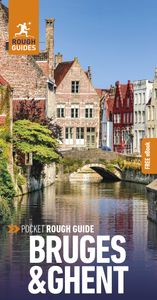
Find even more inspiration here

Planning your own trip? Prepare for your trip
Use Rough Guides' trusted partners for great rates
written by Rough Guides Editors
updated 30.04.2021
Ready to travel and discover Belgium?
Get support from our local experts for stress-free planning & worry-free travels.
- Where to stay
- Travel advice
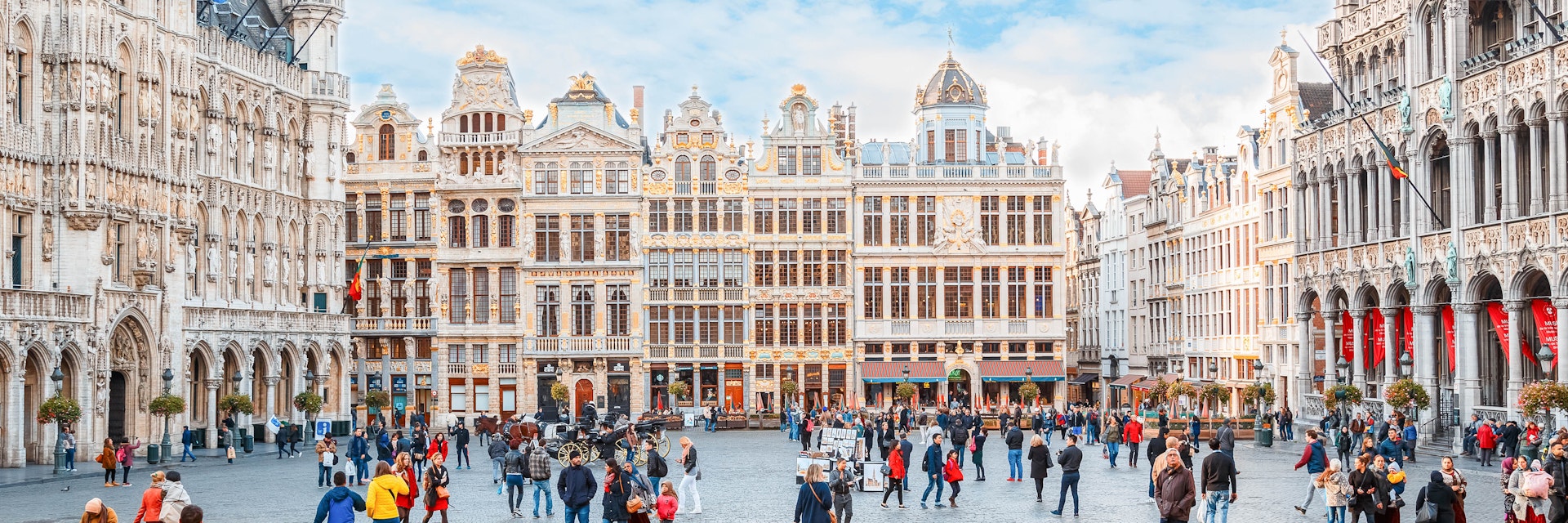
Shutterstock / Koverninska Olga
Historic yet hip, bureaucratic yet bizarre, self-confident yet unshowy, Brussels is multicultural to its roots.
Best Time to Visit
Best things to do, your next trip starts here.
Go from dreaming to planning with trip planning options made to help you craft your ideal itinerary.
Attractions
Must-see attractions.
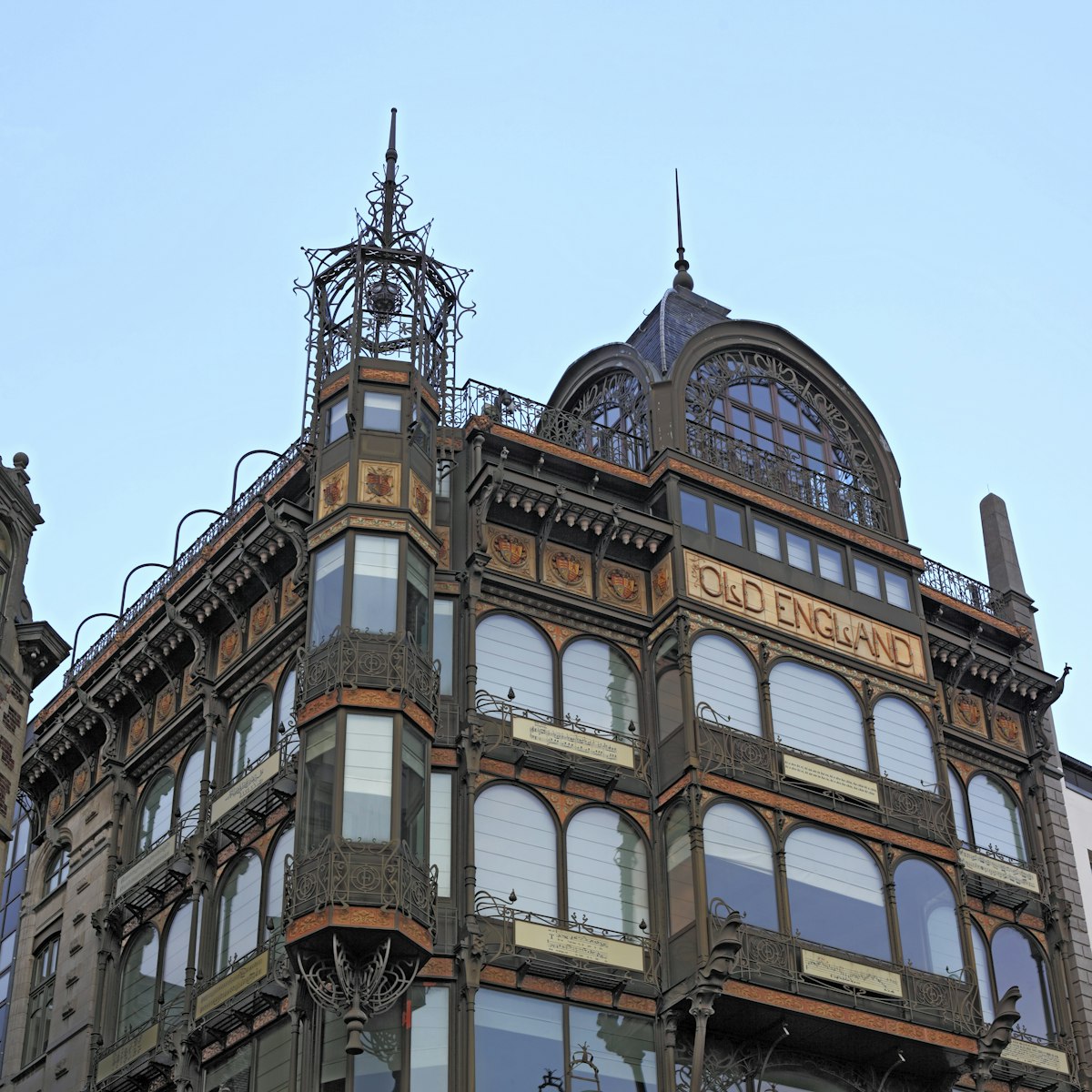
Old England Building
This 1899 former department store is an art nouveau showpiece with a black facade aswirl with wrought iron and arched windows. The building contains the…
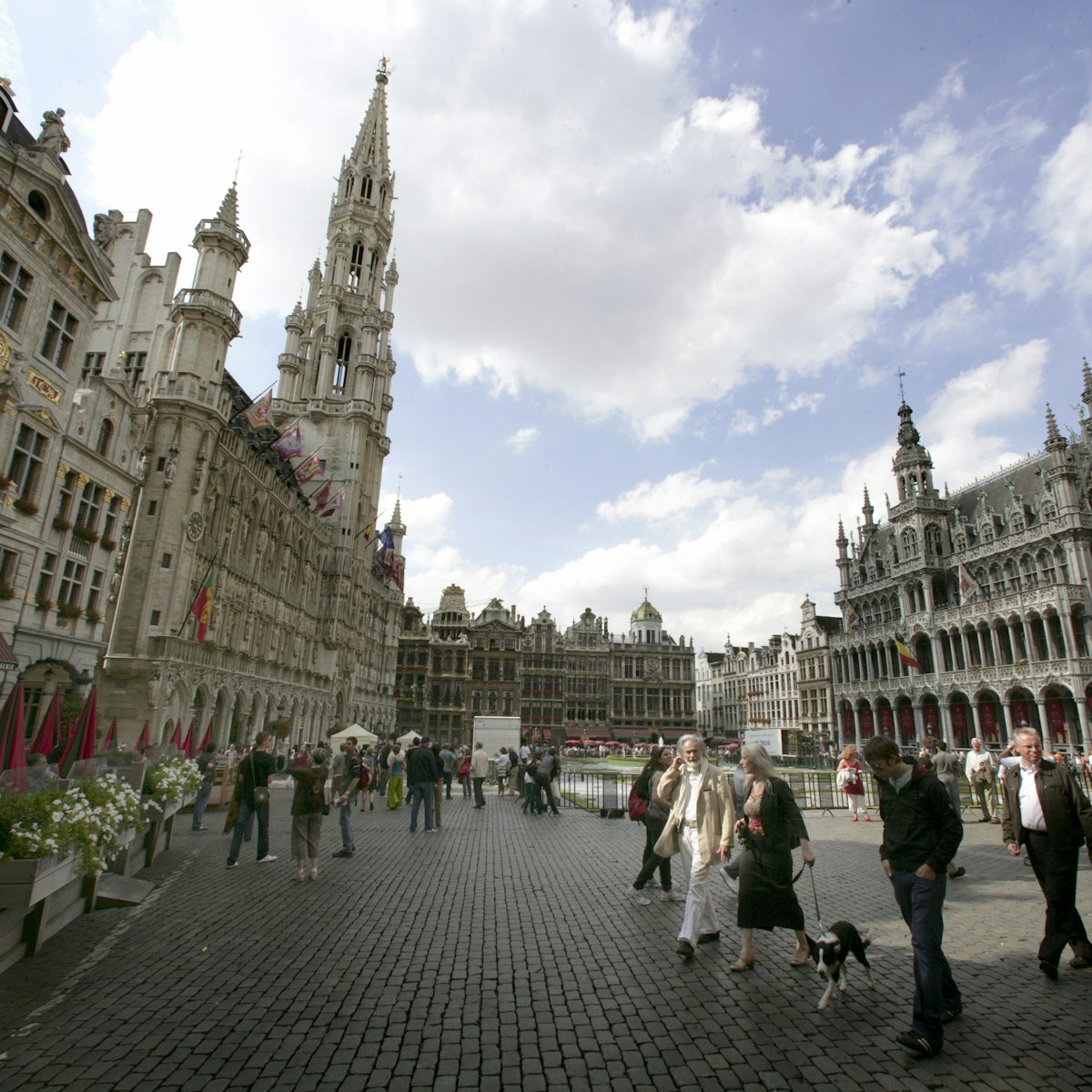
Grand Place
Brussels’ magnificent Grand Place is one of the world’s most unforgettable urban ensembles. Oddly hidden, the enclosed cobblestone square is only revealed…
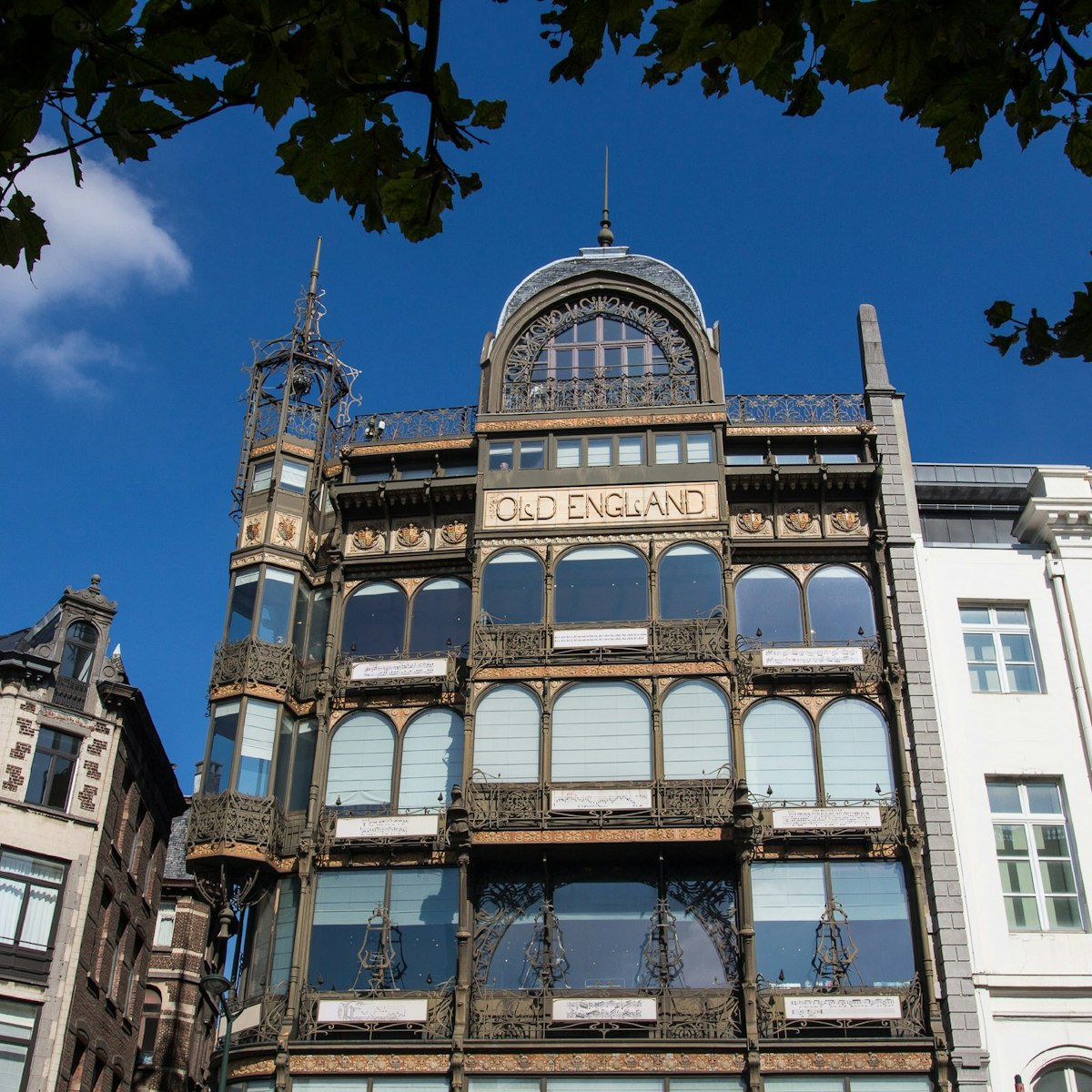
Strap on a pair of headphones, then step on the automated floor panels in front of the precious instruments (including world instruments and Adolphe Sax’s…
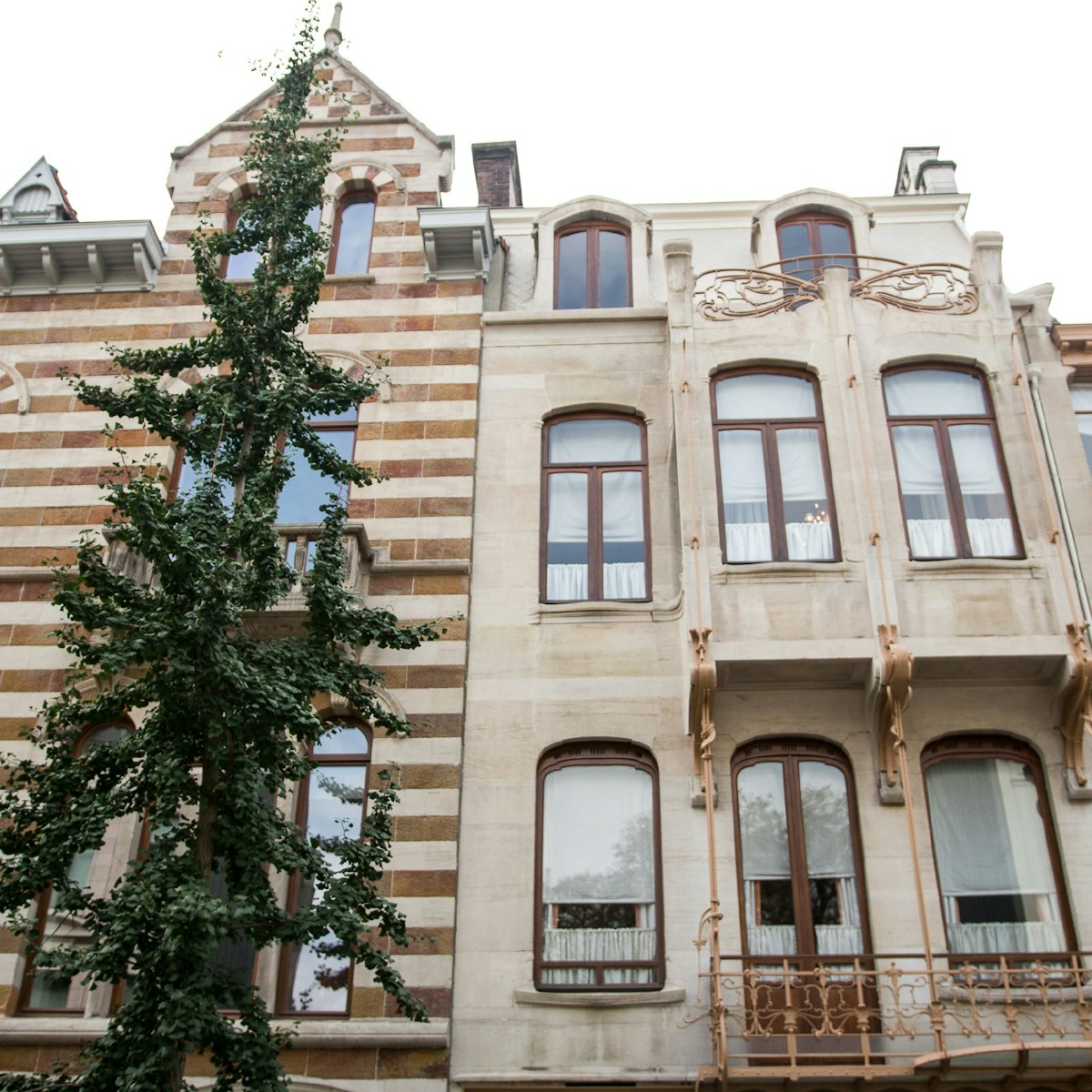
Musée Horta
The typically austere exterior doesn’t give much away, but Victor Horta’s former home (designed and built 1898–1901) is an art nouveau jewel. The…
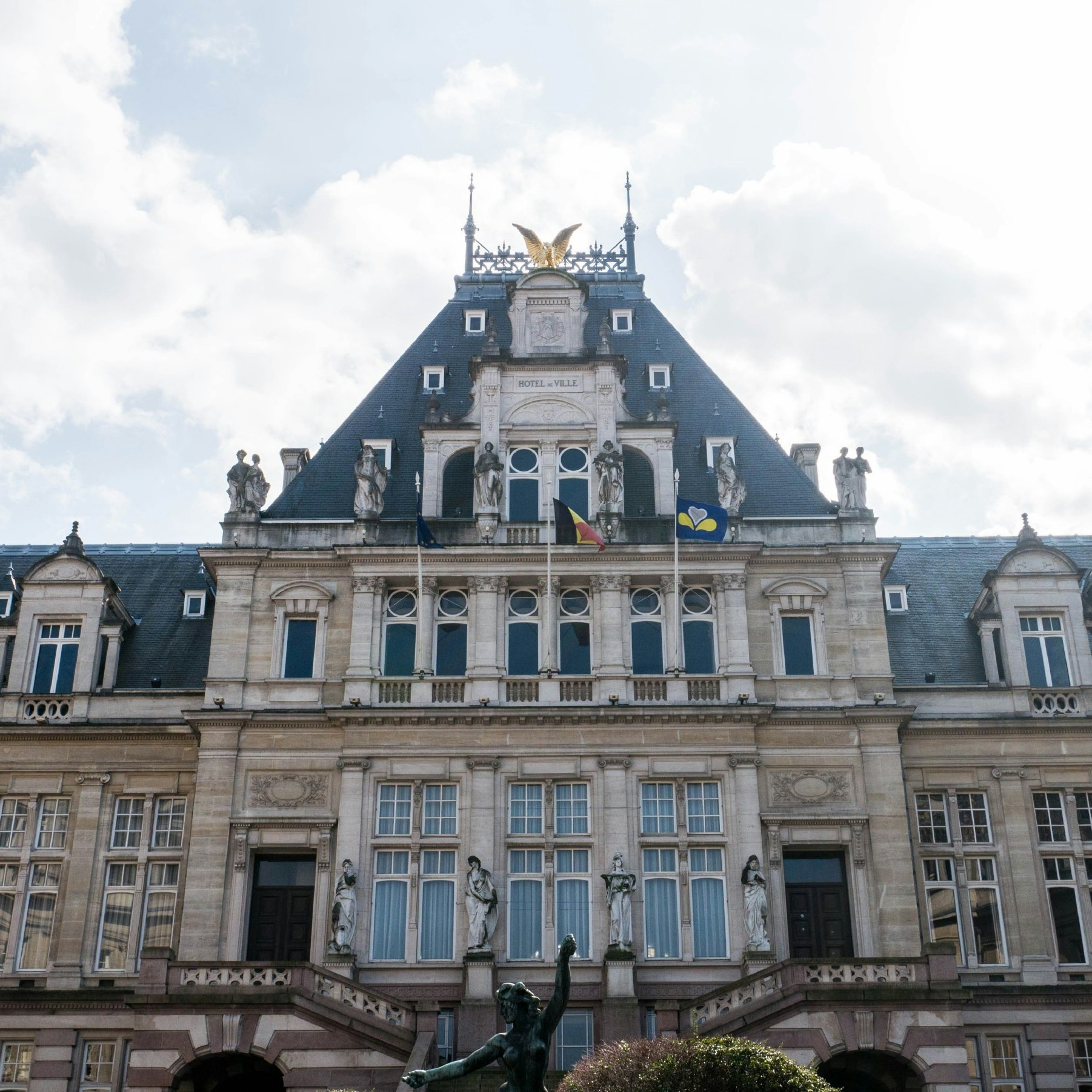
St-Gilles Town Hall
One of Brussels’ overlooked architectural wonders, this splendid Napoleon III–style palace
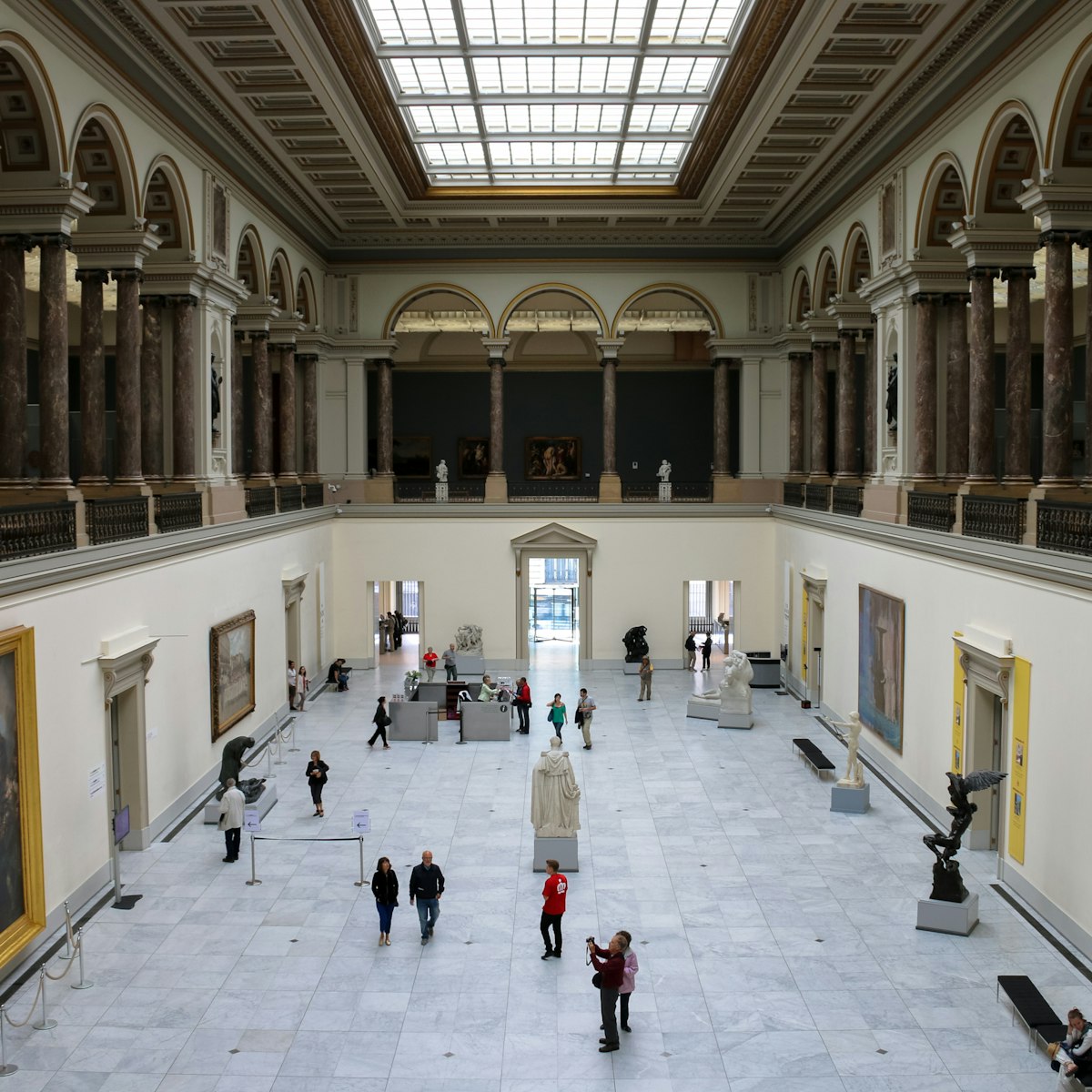
Musées Royaux des Beaux-Arts
This prestigious museum incorporates the Musée d’Art Ancien (ancient art); the Musée d’Art Moderne (modern art), with works by surrealist Paul Delvaux and…
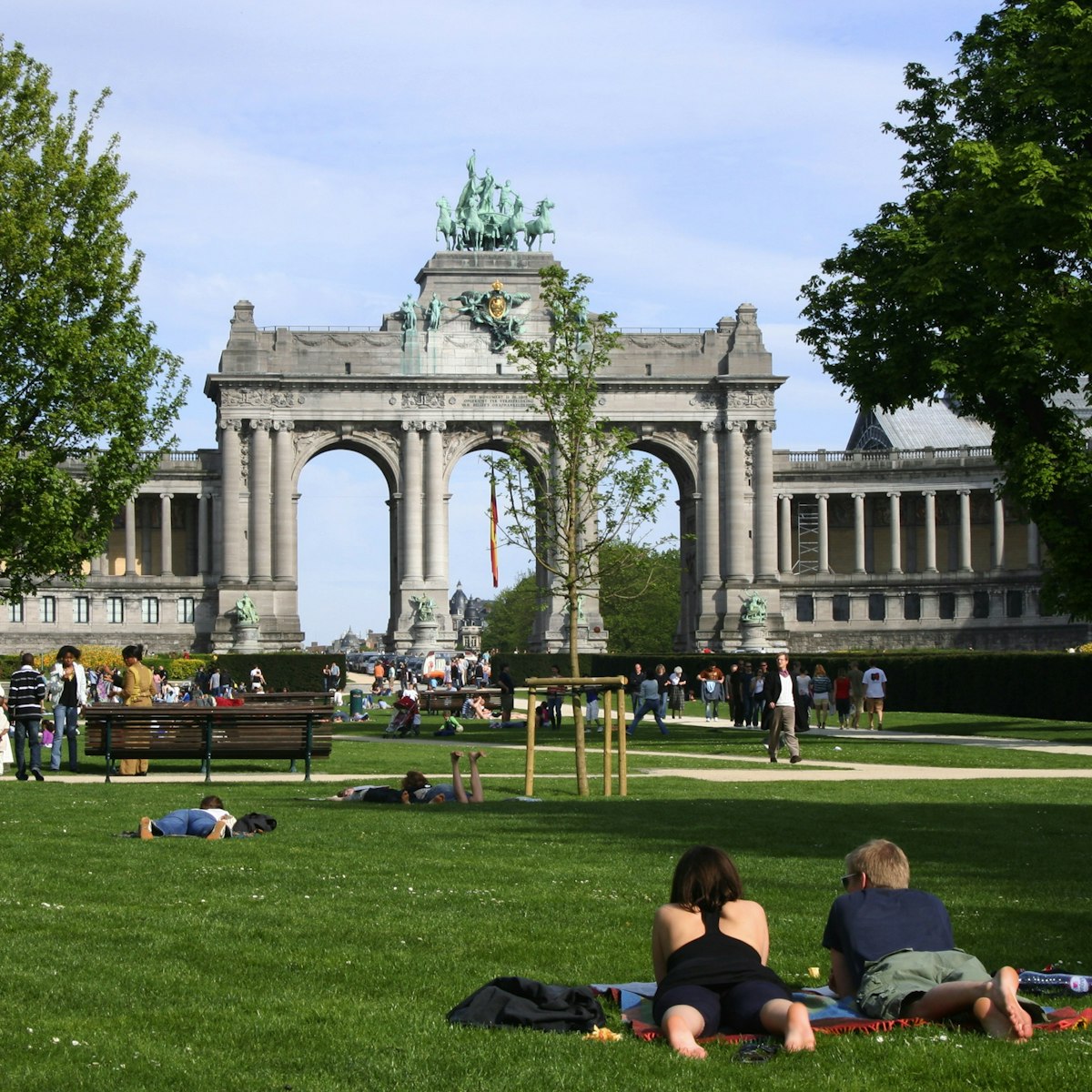
Parc du Cinquantenaire
Parc du Cinquantenaire was built during Léopold II's reign. It's best known for its cluster of museums – art, history, military and motor vehicles – which…
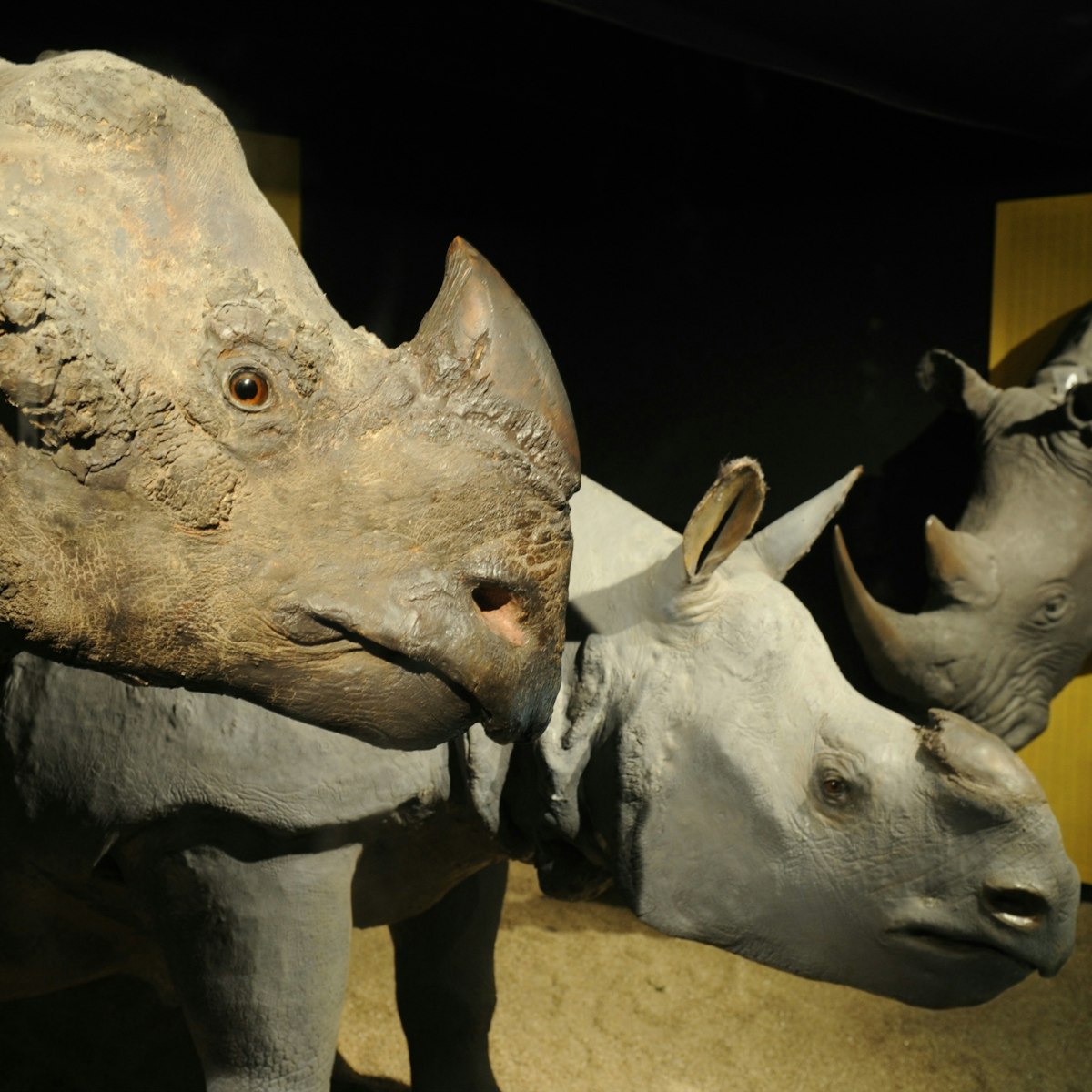
Institut des Sciences Naturelles
Thought-provoking and highly interactive, this museum has far more than the usual selection of stuffed animals. But the undoubted highlight is a unique …
Top picks from our travel experts
13 classic experiences to have in brussels.

Poechenellekelder
Despite facing Brussels’ kitsch central, this is a surprisingly appealing café full of genuine old puppets. It offers a great selection of fairly priced…
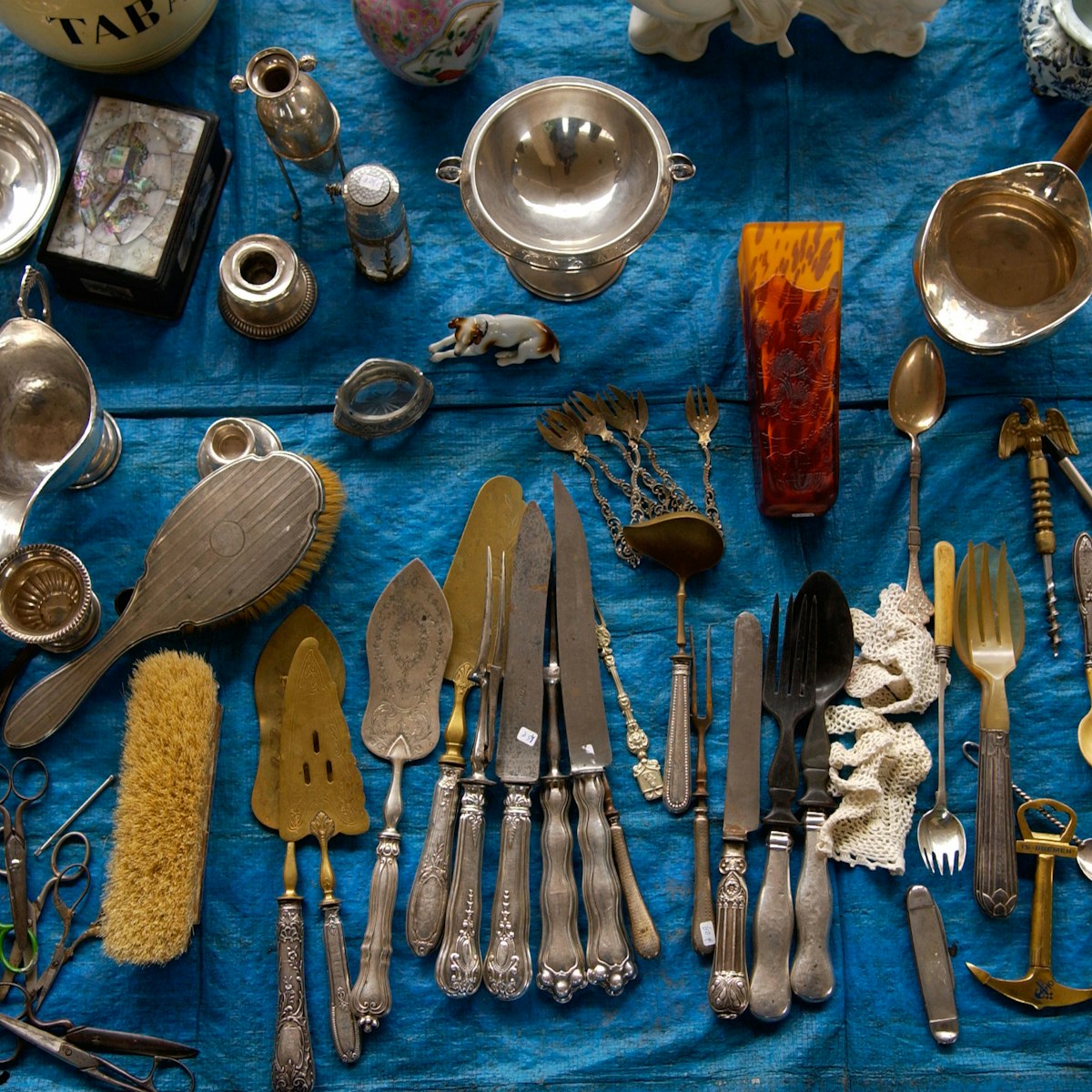
Place du Jeu-de-Balle Flea Market
The quintessential Marolles experience is haggling at this chaotic flea market, established in 1919. Weekends see it at its liveliest, but for the best…
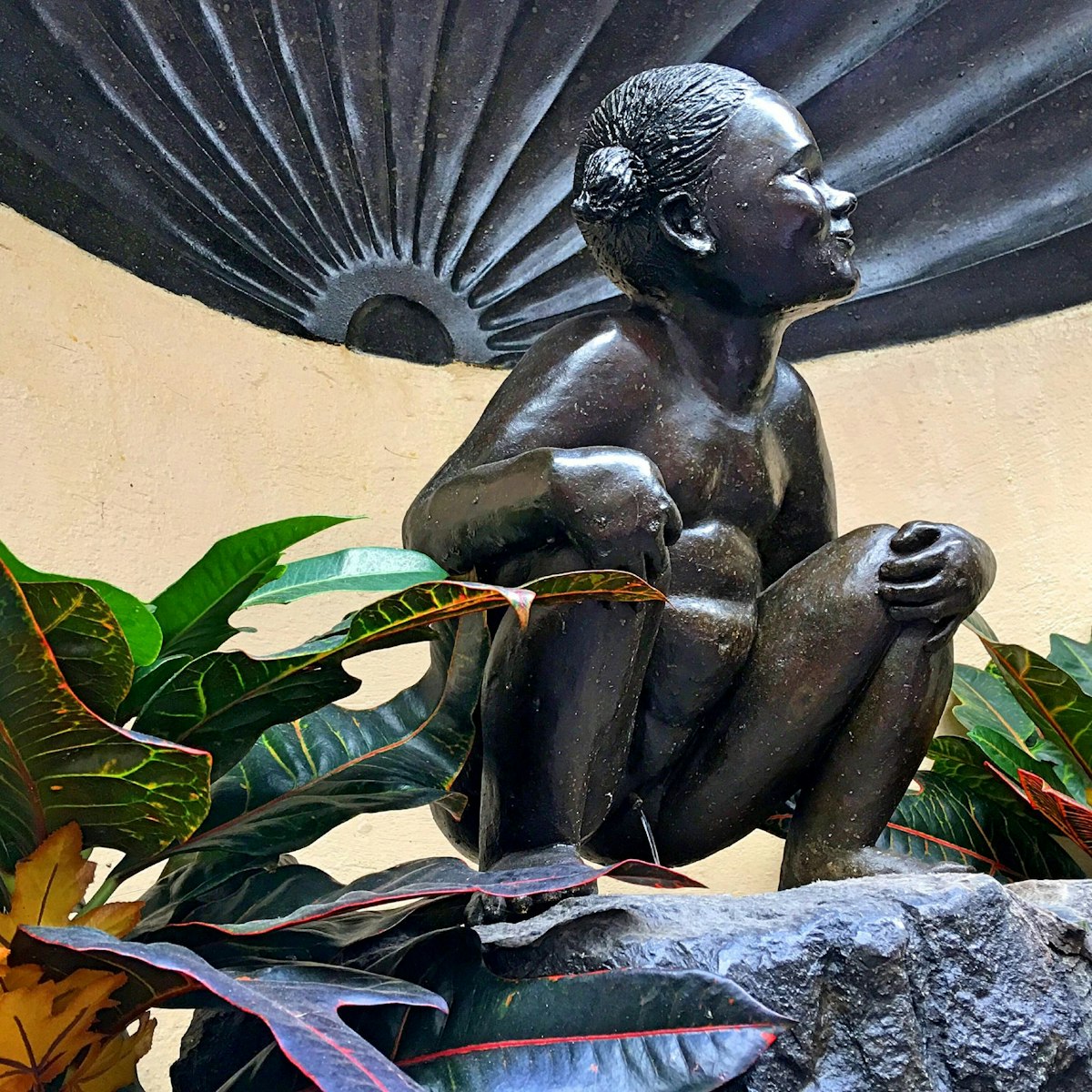
Jeanneke Pis
Squatting just off Rue des Bouchers, this pigtailed female counterpart of Manneken Pis is the work of sculptor Denis Adrien Debouvrie, who installed her…

Cantillon Brewery
Beer lovers shouldn’t miss this unique living brewery-museum. Atmospheric and family run, it’s Brussels’ last operating lambic brewery and still uses much…
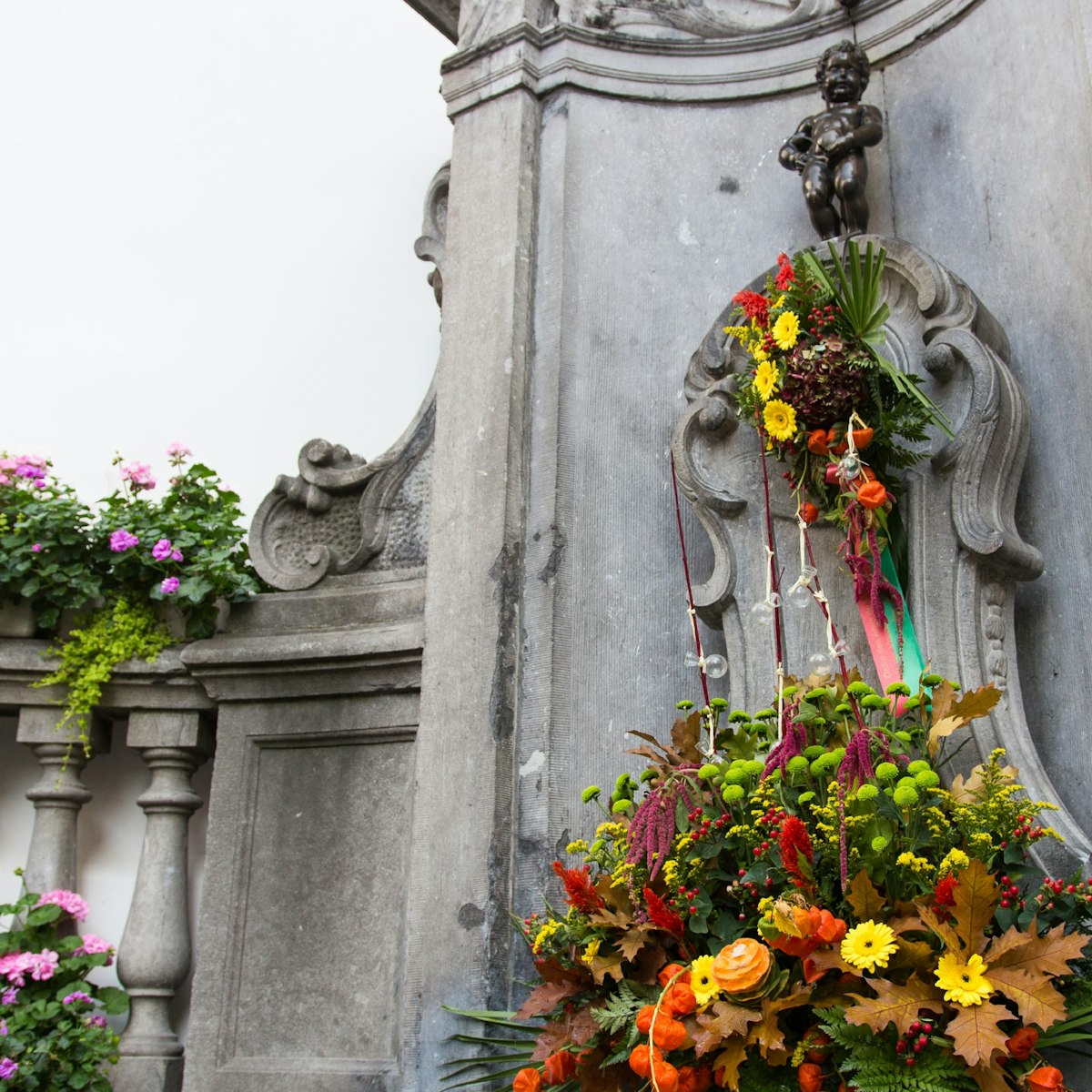
Manneken Pis
Rue Charles Buls – Brussels’ most unashamedly touristy shopping street, lined with chocolate and trinket shops – leads the hordes three blocks from the…

Délirium Café
This café's barrel tables, beer-tray ceilings and over 2000 world beers were already impressive. Now they’ve added a rum garden, a tap house and the…
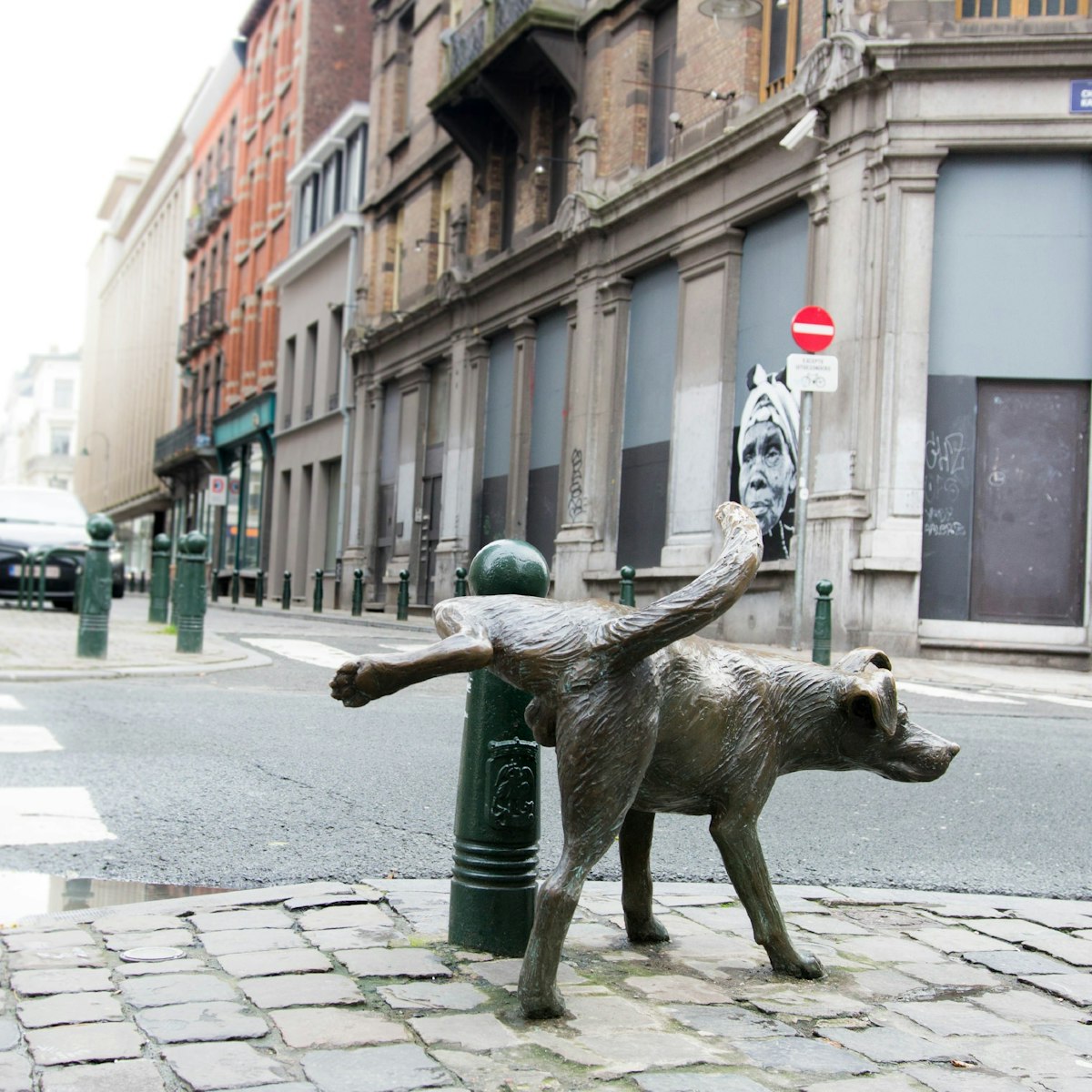
In the old Bruxellois dialect, zinneke means ‘a person of mixed origins’, which sums up the city’s inhabitants to this day. Hence Flemish sculptor Tom…

Africa Museum
Due to reopen in late 2018 after five years of restoration, the revived Africa Museum looks set to be a big draw, and a world away from its earlier dusty…
The best of Brussels on a budget
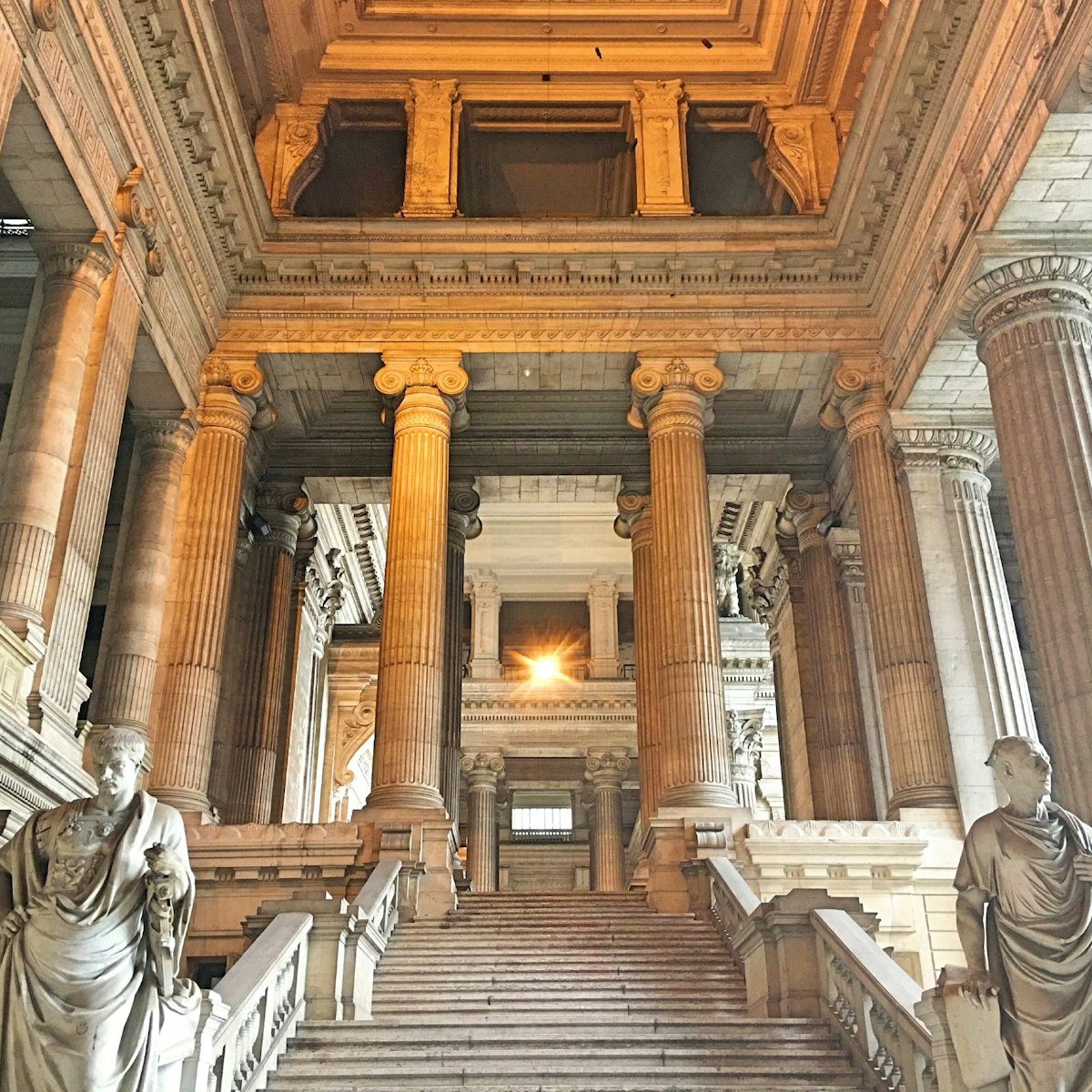
Palais de Justice
Larger than St Peter’s in Rome, this 2.6-hectare complex of law courts was the world’s biggest building when it was constructed (1866–83). While the…

Church of St-Pierre & St-Guidon
The church has some original murals and was once a major pilgrimage site: right up until WWI, cart drivers and those suffering fits would arrive here to…
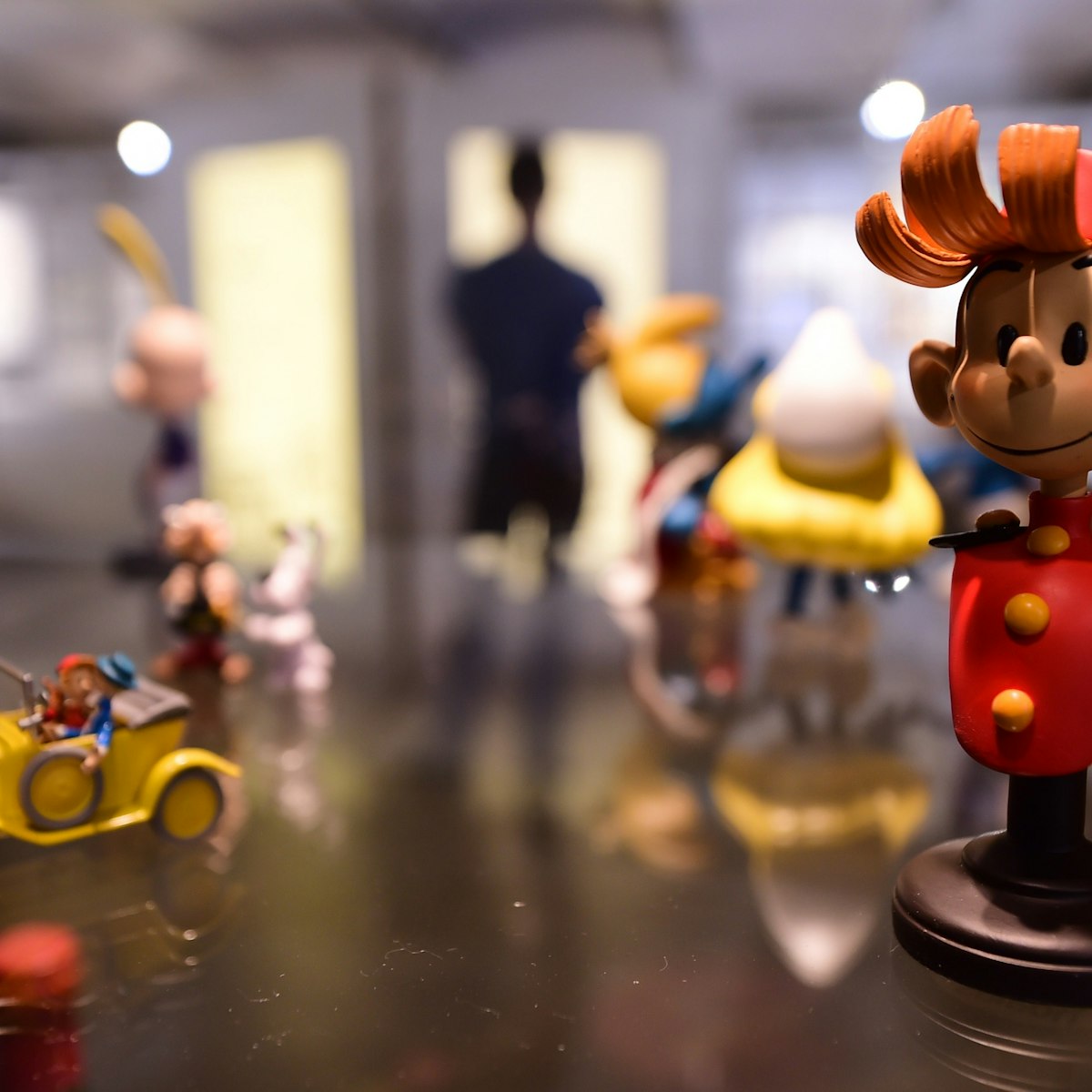
Centre Belge de la Bande Dessinée
This centre offers a definitive and enjoyable overview of the country’s vibrant comic-strip culture. Even if you’re not excited by the ‘ninth art’, do…

Erasmus House Museum
Anderlecht was still a country village when world-famous humanist Erasmus came to ‘play at farming’ in 1521. The lovely brick home where he stayed for…
Planning Tools
Expert guidance to help you plan your trip.
Things to Know
Brussels is an incredible city and we've got some excellent tips to help your first visit go smoothly. Here's what you need to know before you go.
Best Neighborhoods
To get a good feel for this underrated European capital, base yourself in one of these five neighborhoods.
Here are our favorite storybook castles, oh-so-cool cities, and cross-border curios all within easy reach of Brussels.
Transportation
Navigating Brussels' multiple languages and complex public transport system will be no problem with these tips for getting around the Belgian capital.
Free Things to Do
Put these free things to do on your Belgium itinerary and see more for less.
Latest stories from Brussels
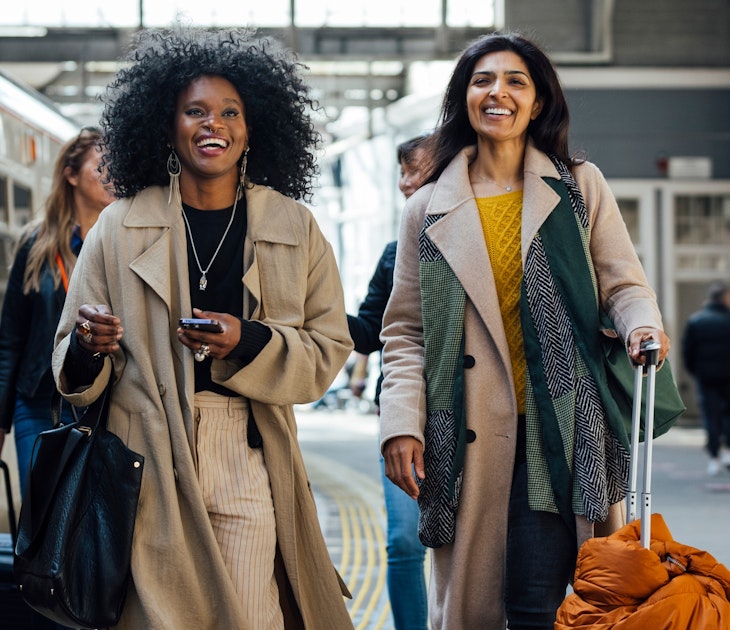
Train Travel
Feb 29, 2024 • 2 min read
Passengers can travel from Brussels to Prague (and even link up with London) on a cross-border night train service.

Sep 19, 2023 • 4 min read

May 18, 2023 • 6 min read
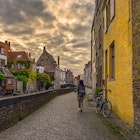
Dec 20, 2021 • 7 min read
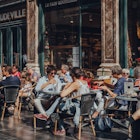
Sep 1, 2021 • 6 min read
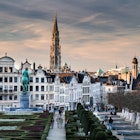
Aug 30, 2021 • 7 min read

Aug 28, 2021 • 6 min read
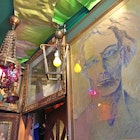
Aug 25, 2021 • 5 min read
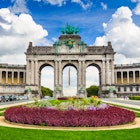
Aug 21, 2021 • 5 min read

Aug 14, 2021 • 5 min read
in partnership with getyourguide
Book popular activities in Brussels
Purchase our award-winning guidebooks.
Get to the heart of Brussels with one of our in-depth, award-winning guidebooks, covering maps, itineraries, and expert guidance.
A Local’s Complete Guide to Brussels, Belgium (2024)

If you’re looking for a local guide to Brussels that includes everything you should know if you’re planning on visiting this city, you have come to the right place!
Brussels is not only the capital of Belgium and the unofficial capital of the European Union. It’s also the capital of comic books, French fries (which are actually Belgian), waffles, beer and Belgian chocolate !
This is a city like no other, with two native languages (French and Dutch) and some pretty unique landmarks like Manneken Pis and the Atomium . So if you’re asking me, Brussels is definitely worth adding to your itinerary for Belgium .
As I was born in Brussels and have lived there for more than 10 years , I know this city quite well. That’s why I decided to write a complete guide with everything that you need to know if you want to visit Brussels like a local.
It all depends on what you want to see and do, but I recommend staying here for a minimum of 2 days. This being said, spending 1 day in Brussels will still allow you to see the city’s highlights.
A local guide to Brussels: Everything you should know
Top things to see in brussels.
First things first, you will find the best places to visit in Brussels below. This includes some of Brussels’ most important landmarks .
Grand Place
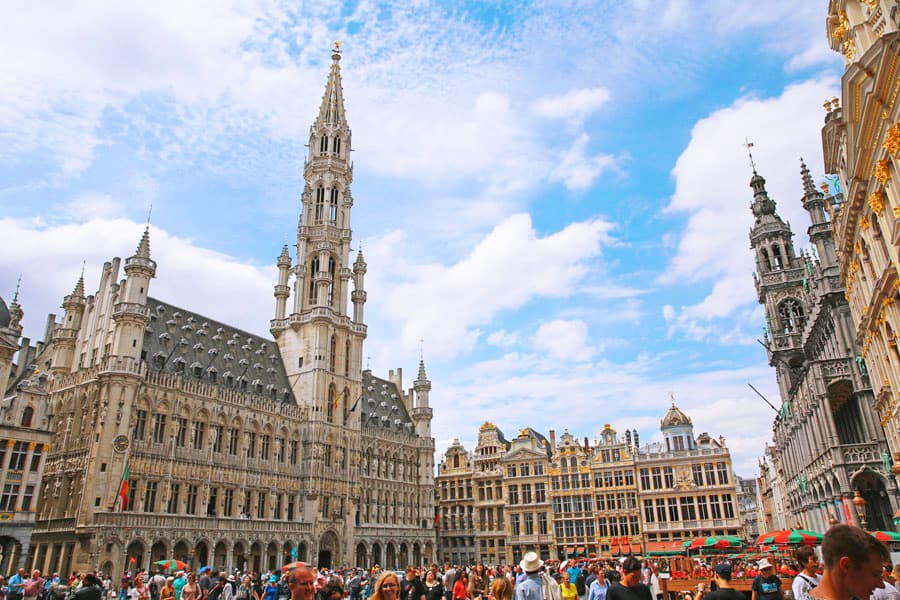
Located right in the centre of the city, the beautiful Grand Place is a place that keeps amazing me, even after having visited it numerous times. The architecture here is stunning!
This is a UNESCO World Heritage site where you will find guild halls, the City Hall and a lot of (rather expensive) cafes.
Note how the tower of the City Hall (located on the left side of the picture above) isn’t exactly in the middle. Legend says that the architect jumped off of the tower and fell on the spot marked with a star after discovering this.
Manneke Pis, Jeanneke Pis and Zinneke Pis

Manneken Pis is a must-see if you’re visiting Brussels for the first time. Keep in mind that this is a fountain of a little boy, though, and don’t expect to see a 3-meter-high statue of a peeing man or you will be disappointed.
This statue might not be very large, but it’s always a surprise to see what Manneken Piss will look like. This little guy has more than 1,000 costumes and he is often dressed up.
There are a lot of legends associated with Manneken Pis. One of them is that this little boy saved Brussels from burning down by urinating on the fire.
After you’ve seen Manneken Pis, make sure to look for the statue of the little girl, Jeanneke Pis and the dog, Zinneke Pis too. They’re all within walking distance of each other.
>> Read: Is Brussels Worth Visiting? Top Reasons to Visit Brussels
Comic book walls

With characters like Tintin, Lucky Luke and the Smurfs, comic books are one of the things Belgium is known for and as you wander through the city centre, you will inevitably come across comic book street art .
It is possible to follow the comic strip walk (you can find the route on the Brussels website ), which will take you along the city’s most famous comic book murals.
Besides street art, you will also find the Belgian Comic Strip Center , the Comics Figurines Museums and comic book shops in the centre of the city.
Place Sainte Catherine neighbourhood

The Place Sainte Catherine neighbourhood is a lively area in the centre of Brussels, and it is home to the beautiful Saint Catherine Church .
There’s a big square next to this church that used to be the central fish market. Today, this square is full of seafood restaurants , so if you like seafood, this is the place to be.
Another must-see next to the Sainte Catherine Church is La Tour Noire , which is French for “The Black Tower”. This tower was once part of the 13th-century city walls.
If you’re visiting Brussels around the holidays, it is good to know that the city’s famous Christmas Market is held in the Place Sainte Catherine area.
Galleries Royales Saint-Hubert

The Galeries Royales Saint-Hubert is a historic shopping arcade that consists of three parts: the Galerie de la Reine, the Galerie du Roi and the Galerie des Princes.
This is one of Europe’s oldest shopping arcades and you will find plenty of shops selling luxury items here.
All in all, the Galeries Royales Saint-Hubert is a beautiful place to go (window) shopping or drink something while people-watching in one of its cafes.
Tip: There are plenty of shopping malls in Brussels if you would like to go shopping.
The Marolles and Place du Jeu de Balle

The Marolles is a hip district full of antique shops, modern galleries and pubs. The Palace of Justice overlooks this neighbourhood and there’s a daily flea market at the Place du Jeu de Balle.
This is the most famous flea market in the city and the only one that’s open every day of the year. You will find everything here, from junk to extraordinary antiques.
Saint Michael and Gudula Cathedral
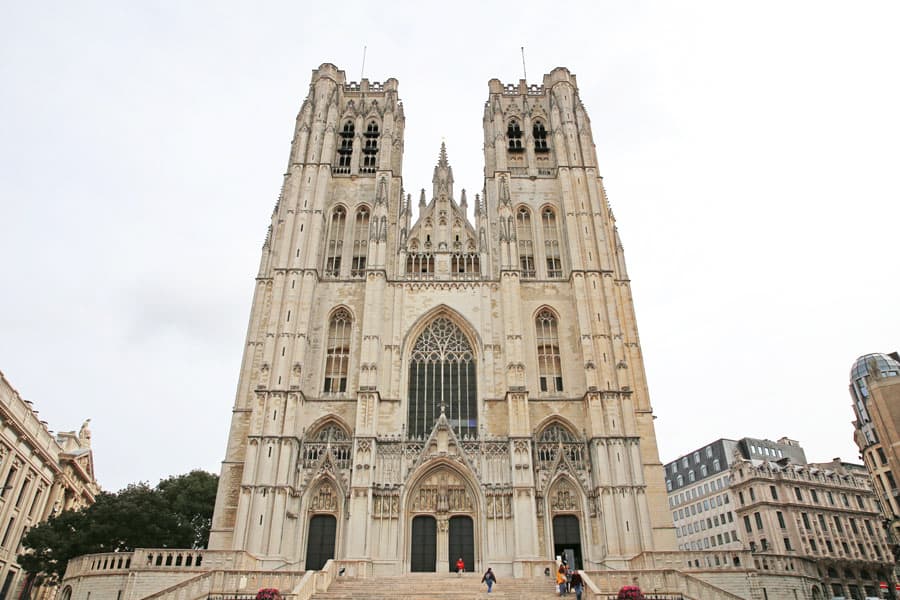
If you’re a fan of Gothic architecture, you will be charmed by the beautiful St. Michael and Gudula Cathedral and its colourful stained glass windows.
This cathedral dates back to the 13th century, but it took more than 300 years to complete it and this is the main Catholic church of Belgium .
European Quarter

This area of Brussels is dominated by business and politics. It is possible to visit the European Parliament on a self-guided tour that runs at set times. Check out the parliament’s website for more information.
If you want to learn more about the EU, European history and the European Parliament you can head to the Parliamentarium and the House of European History .
Although you can’t go inside, do make sure to check out the Berlaymont Building while you’re there. These are the headquarters of the European Commission, and the building’s architecture is impressive.
The Parc du Cinquantenaire is just a 10-minute walk from the European Quarter. This is one of Brussels’ best parks and it is a nice place for a walk or a picnic. There are also some museums here, and the park has a triumphal arch.

The Atomium is a pretty strange construction. This is a giant molecule that was built for the Brussels World’s Fair (Expo 58) in 1958. It was designed to last for only 6 months but it became so popular that the authorities decided to keep it.
Its interior was made into a gallery and exhibition space where you can learn about the Atomium’s history. There’s also a viewing platform on top, where you can overlook the city.
Mont des Arts

The Mont des Arts is a hill that offers a beautiful view over its garden and the lower town.
Make sure to check out the stunning architecture of the Old England building by the Belgian architect Paul Saintenoy, while you’re here. This is one of Brussels’ most famous Art Deco buildings.
Mont des Arts is also one of the museum districts of Brussels, which brings me to my next point.

Brussels has a la rge collection of museums , including some pretty quirky ones. This city is a paradise for lovers of history and art.
Here are some of the city’s must-see museums, depending on your interests.
- Brussels City Museum : Located on the Grand Place, this museum will teach you more about the history and folklore of Brussels. It includes the gigantic wardrobe of Manneken Pis.
- Magritte Museum: I really like the Belgian surrealist artist René Magritte and this is one of my favourite museums in Brussels. As you might have guessed, the museum is dedicated to his work.
- Royal Museum of Fine Arts: This museum contains more than 20,000 drawings, sculptures and paintings dating from the 15th century to the present. It features works of the Flemish Primitives, Peter Paul Rubens, James Ensor, Paul Delvaux and many other artists.
- Bozar : This museum is also known as the Centre for Fine Arts. Its program is very diverse, with many exhibitions, shows, concerts and other cultural events.
- Art and History Museum : This is one of the largest museums in Europe . It offers an overview of human activity from the prehistory until now.
- Halle Gate Museum : The Halle Gate is a medieval fortified city gate. There’s a museum inside that exhibits artefacts from the Middle Ages.
- Horta Museum : This museum is great for architecture buffs. It is located in the former house of the Art Nouveau architect Victor Horta and it is dedicated to this architect’s life and work.
- Musical Instrument Museum : This museum is located in the Old England building. It displays a collection of over 7,000 musical instruments from every epoch.
- Comic Art Museum : As its name predicts, the Comic Art Museum celebrates the most important Belgian comic strip heroes and their illustrators.
- Museum of Original Figurines : Here, you will find thousands of figurines from your favourite comic book characters like The Smurfs, Tintin, Asterix & Obelix and many more.
Try waffles, French fries, chocolate and beer

A visit to Brussels wouldn’t be complete without trying some Belgian delicacies!
You will find stands selling French fries , Brussels waffles or Liege waffles on the corner of nearly every street in this city. And I’ve honestly never tasted better ones than in Belgium.
Besides that, Belgian chocolate is THE BEST! You won’t be disappointed. Try Godiva , Guylian , Côte d’Or , Neuhaus , Mary , Marcolini or one of the many other chocolate boutiques. One box is just not enough.
If you’re more of a biscuit kind of person, you might find what you’re looking for at Maison Dandoy . Belgian has got some delicious biscuits and pastries too.
Last but not least, with some of the best beers in the world, Belgium is a dream destination for beer lovers. From Pilsner to Lambic and Gueuze, beer is a serious business in Belgium. One of the best ways to learn more about Belgian beer and taste this delicious brew is by joining one of Brussels’ beer tours .
Dieweg Cemetery

This disused cemetery is located in the municipality of Uccle, a 20-minute ride from the centre of the city. This is probably one of the most unusual places in Brussels but it is also one of my favourites.
The tombs here are overgrown with plants and nature is slowly taking over again here.
So, if you’re looking for a more off-the-beaten-track adventure, the Dieweg Cemetery might be the place that you’re looking for.

Best time to visit Brussels
Brussels can be visited all year round, the time of the year that’s most suitable for you will like the most depends on your personal preferences:
- Winter (December to March): It can get pretty cold during the winter and it might freeze, but this period of the year has its charm.
- Spring (March to June): This time of the year is less touristy than the summer months and the weather starts getting warmer after winter.
- Summer (June to September): The weather is at its best during the summer months (although it can be hot and rainy too). However, this is also the time of the year with the most tourists (especially in July and August as this is a school vacation in Belgium).
- Fall (September to December): Temperatures are still nice in September. It might start to rain a little bit more from mid-October to December though. Check out my post featuring the best indoor activities in Brussels if this is the time of the year that you will visit this city.
How to get to Brussels
If you’re already in Europe, it will be easy to get to Brussels by train from cities like Amsterdam, London, Cologne, Paris and more.
Otherwise, the closest airports are Brussels Airport (Zaventem) and Charleroi Airport.
The city of Brussels is a 30-minute drive or 20-minute train ride from Brussels Airport. You can check out the train’s timetables on the Belgian Train website .
If you’re landing at Charleroi Airport, the easiest way to get to Brussels is by booking a shuttle bus . The shuttle takes about one hour and it will drop you off at the Brussels Midi train station.
Check out my guides about how to do a day trip from Paris to Brussels or a day trip from Amsterdam to Brussels if you would like to visit this city from the neighbouring country’s capitals.

How to get around in Brussels
Brussels is not that big, and the centre is easy to explore by walking. If you want to visit other areas of the city or don’t feel like walking, these are the options:
- Metro, tram and bus : Taking the metro is the easiest way to get around in Brussels. If you’re going to use it regularly, I recommend getting a Metro Pass to save money. Another option would be to take the tram. There are also many buses, but they can get stuck in traffic.
- Train : If you’re planning on travelling to another region or city, the train is the best way to get there.
- Taxi : These are very expensive in Brussels so I wouldn’t take them unless it is absolutely necessary.
I wouldn’t recommend renting a car, as there’s lots of traffic in Brussels and it can be difficult to find free parking spots. Renting a bicycle is possible, but due to the traffic, Brussels isn’t the nicest city to ride a bicycle in.
Cost of travel
The price for a dorm bed in a hostel ranges between €20 and €30 per bed, while prices for private rooms start at about €50.
Meals can cost anything between €10 and €60, depending on where and what you’re eating. French fries and fast food are pretty cheap, but restaurants tend to be more expensive.
A week of groceries costs around €60 in Belgium.

Where to eat and drink
If you’re on a tight budget, avoid eating or drinking around the Grand Place, as it will be super expensive.
Restaurants
There are some nice restaurants on the Rue de Flandre near Place Sainte Catherine, in the Marolles neighbourhood and around the Grand Sablon.
Here are some of my favourite restaurants in Brussels. Note that you might have to book a table in advance for some of them.
- Friture René : Although Friture René is not in the centre of the city (metro station Aumale is near the restaurant), it’s really worth a visit if you want to go to a typical Brussels restaurant that serves Belgian food.
- Viva m’Bomma : Located near Place Sainte Catherine, this restaurant serves some of the best authentic Belgian dishes in the capital.
- Horia : I really, really love this organic Moroccan/Lebanese restaurant! It’s close to the Grand Place and its menu changes according to the season.
- Toukoul : An Ethiopian restaurant close to Place Sainte Catherine with delicious food and a stunning interior.
- Bavet : This restaurant, which is also close to Place Sainte Catherine has some delicious spaghetti!
If you’re vegan, you will find plenty of great vegan restaurants in Brussels as well.
Tip : Don’t eat at Rue des Bouchers, as this street is famous for its pushy vendors and inflated tourist prices.
You will find numerous cosy bars in the streets around the Halles de Saint-Géry, Place Sainte Catherine or Plattesteen (which is in the gay neighbourhood).
Here are some of my favourite bars in Brussels:
- Toone : I really love this bar! Toone is an authentic café near the Grand Place that stands out due to its famous puppet theatre. Its location is quite hidden, but it is a great place if you manage to find it!
- Delirium: The Delirium Café is close to the Grand Place, and this is a true paradise for beer lovers. With over 2,000 beers on its menu, this bar holds the Guinness World record for offering the largest amount of beer for tasting. It can be quite touristy, but it is a must-visit if you like beer.
- Bizon : This is a cosy bar with a great atmosphere in the heart of the city. Local and international blues artists perform here live regularly.
- Le Cerceuil : This is one of Brussels’ quirkiest bars, located right next to the Grand Place. In French, “Le Cerceuil” means “The coffin” and the inspiration behind the bar was the movie The Exorcist . This is a dark place decorated with coffins, skeletons and more. Unfortunately, this bar is on the more expensive side, so you will pay for the experience too.
- Bar Des Amis : This is a beautiful and popular bar near Place Sainte Catherine. It has a great atmosphere and offers a nice variety of beers and cocktails.

Day trips from Brussels
As Belgium is such a small country and Brussels is situated right in the middle of it, you can easily visit the entire country from here.
I’ve written an entire post about the best day trips from Brussels if you would like to discover what places are worth visiting. Here’s a sneak peek:
Hallerbos (Blue Forest)

The Hallerbos is a magical forest located about 30 minutes from Brussels and it is argued to be one of the most beautiful places in Belgium .
Every year around mid-April, the Hallerbos turns completely blue. Millions of hyacinths start blooming and form a beautiful carpet of blossom.

Bruges is a beautiful medieval city with cobblestoned streets and charming canals. This city is a 1-hour train ride from the capital and definitely worth a visit if you’re into fairytale-like cities.
You might want to check out my comparison of Brussels and Bruges to find out which city is the best for you if you can only visit one.
Villers Abbey ruins

Located just 40 km (25 mi) from Brussels, the ruins of the Villers Abbey is a nice escape from the city. This place has a rich history and the site is quite big, so you could easily spend an afternoon here.

Do e l is Belgium’s ghost town, this is a more off-the-beaten-track destination, but it does attract some visitors. You will find plenty of abandoned houses full of graffiti art here.
Local guide to Brussels: Final thoughts
And that was it, a guide including everything that you should know if you would like to visit Brussels like a local. I hope that you have found exactly what you were looking for in this post and that you will have a great time exploring my home town!
Brussels is a nice city with plenty of interesting things to see and do. This is the self proclaimed comic book capital of the world and it is home to some pretty unique landmarks.
Let me know in the comments below if anything is missing from this guide or if you have more questions.
Belgium travel planning guide
🛫 Find the cheapest flights to Belgium on Skyscanner . 🏨 Find the best accommodation via Booking or Hostelworld . 🚃 Use Omnio to book public transportation in Belgium. 🚗 Rent a car with Discover Cars to get the best rates. 💰 Get travel insurance via Visitors Coverage , one of the best-reviewed travel insurance companies. 📋 Don’t forget to check if you need a visa to visit Belgium
Read more about Belgium:
- The Best Hikes in Belgium
- The Most Beautiful Places in Belgium
- Reasons to Visit Belgium
Pin it for later: Did you find this post helpful? Save it on Pinterest and follow me on Instagram and Facebook for more travel tips and inspiration.

Laura Meyers
Laura Meyers is the founder of Laure Wanders. She was born in Belgium and has travelled to over 40 countries, many of them solo. She currently spends most of her time between Belgium and South Asia and loves helping other travellers plan their adventures abroad.
You may also like
The villers abbey in belgium: a guide for..., 11 epic things to do in dinant, belgium..., 8 best heritage hotels in ghent (2024), 34 best day trips from brussels (2024), 10 best canal view hotels in bruges (2024), paris to bruges day trip: 3 ways to..., 4 ways to get from brussels airport to..., doel: visiting a ghost town in belgium (2024), how to find the 7 trolls of de..., 11 best things to do in ghent in....
Nice to read something related to our cultural heritage. For non Belgians I find this a quite valuable contribution. Thks for sharing.
Thank you! There’s a lot to see in Brussels. 😀
Leave a Comment Cancel Reply
Save my name, email, and website in this browser for the next time I comment.

23 BEST Things to Do in Brussels (+Map & Insider Tips for Top Places)
By Author Jurga
Posted on Last updated: October 4, 2023
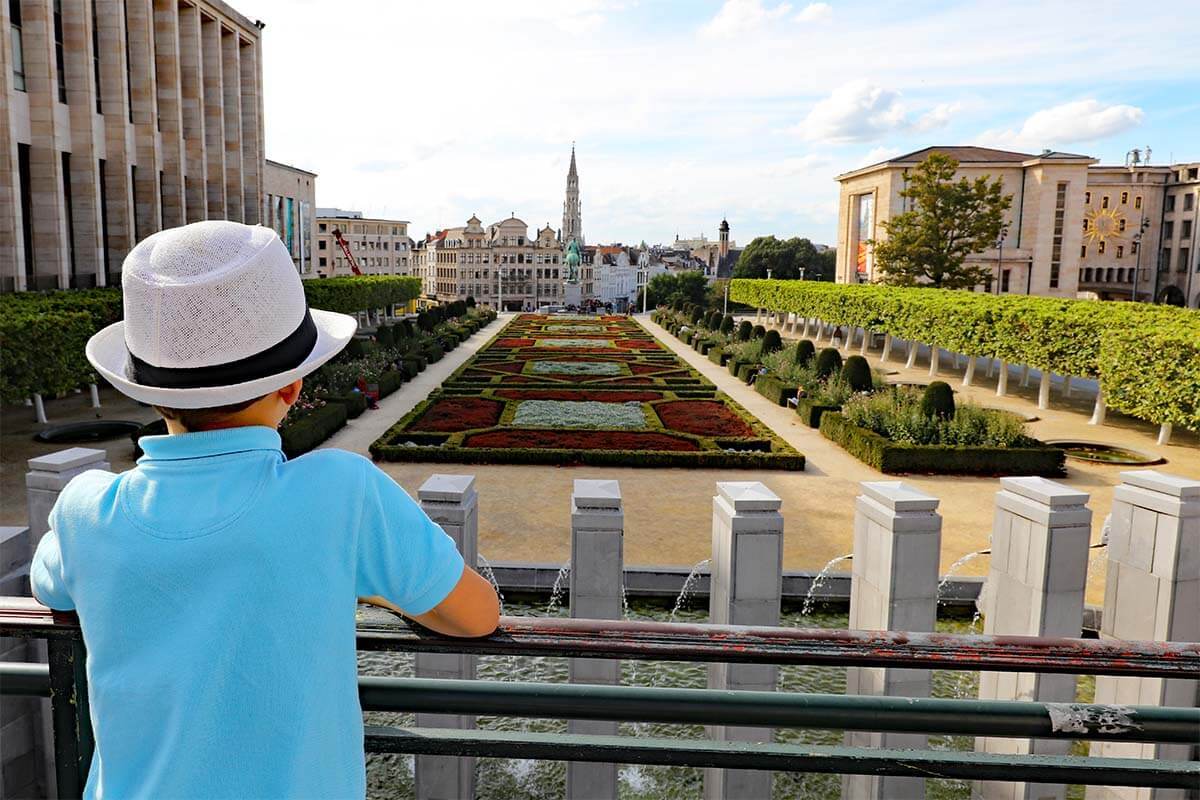
Visiting Belgium’s capital city for the first time and wondering what to see and do in Brussels? In this article, you can find our recommendations for the very best places to see and things to do in Brussels. It will help you to make the most of your trip and explore the city just a bit deeper. Take a look!
Good to know: We are from Belgium and have lived in and near Brussels for several years. So I can immediately tell you that there’s so much more to see in Brussels than you’d ever be able to cover on a short visit… Therefore, in this guide, we mostly focus on the most popular attractions that first-time visitors shouldn’t miss .
For each place and activity, we also share our insider tips and recommendations.
Read on to learn more about the most beautiful places to see in Brussels, the very best things to do, and the most typical Belgian experiences that will make your trip more memorable!
TIP: In order to help you plan your trip, we also created this map indicating all the best places to visit in Brussels. That way, you can see where everything is located and can easier plan your sightseeing itinerary.
How to use this map: Use your computer mouse (or fingers) to zoom in or out. Click on the icons to get more information about each place. Click the arrow on the top left corner for the index. Click the star next to the map’s title to add it to your Google Maps account. To view the saved map on your smartphone or PC, open Google Maps, click the menu and go to ‘Your Places’/’Maps’. If you want to print the map or see it in a bigger window, click on ‘View larger map’ in the top right corner.
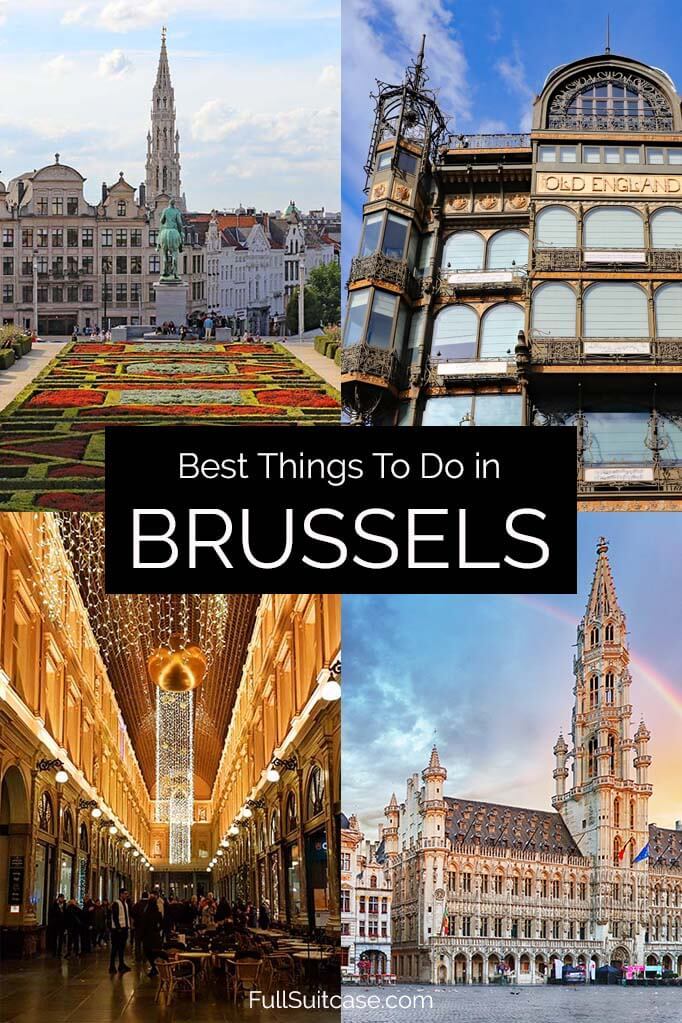
Good to know: We list the main landmarks and tourist attractions in the center of Brussels first, followed by places a bit further away.
In addition to all the ‘must-sees’, we include some of the most typical Belgian food experiences as well. After all, no visit to Brussels would be complete without tasting Belgian waffles, beer, or trying moules-frites . Find out!
BEST OF BRUSSELS IN A NUTSHELL: * MUST-SEE: Grand Place, Manneken Pis, Royal Galleries, Mont des Arts, Royal Palace, and Magritte Museum . * FUN TO DO: Belgian Beer World , Atomium , Mini-Europe , EU headquarters, food tours . * MUST TRY: Brussels waffles, moules-frites, Belgian beers, and Belgian chocolate. * WHERE TO STAY: See our guide to the best areas to stay in Brussels and also to the most popular hotels in Brussels . * DAY TRIPS: Bruges , WWI Battlefields , Antwerp . Best day tour – Ghent & Bruges in a day .
Here are the best things to do in Brussels:
1. Grand Place & Brussels Town Hall
If there is one place that you absolutely have to see in Brussels, it’s the Grand Place (or de Grote Markt , in Dutch). Grand Place is the main town square of Brussels, home to the impressive Brussels Town Hall and the most beautiful guild houses in the world.
Grand Place is a UNESCO World Heritage Site and one of the most beautiful town squares in Europe. Even if this would be the only place you see in Brussels, Grand Place is worth a trip on its own!
Brussels Grand Place is amazing at any time of the day and in any season. Lots of big events take place here, including the annual Brussels Christmas Market in winter and the bi-annual Brussels Flower Carpet in summer. Often, there are (free) light and music shows at the town square in the evenings. It’s always magical!
But even if there is nothing special going on, I recommend visiting Grand Place during the day and also in the dark. The buildings are beautifully lit at night and it’s well worth coming back for it.
Practical info: You can visit Grand Place at any time and it’s free of charge. Brussels Town Hall can also be visited inside, but only with a guided tour that runs just a few days a week. More info here .

2. Royal Gallery of Saint Hubert
The Royal Gallery of Saint Hubert is one of the most beautiful landmarks of Brussels! In fact, there is not one, but two connecting galleries – Galerie du Roi (Gallery of the King) and Galerie de la Reine (Gallery of the Queen).
Opened in 1847, these impressive galleries not only transformed the formerly poorer part of the city, but also put Brussels on the map as one of the greatest cities in Europe at that time. It quickly became the place to see and to be seen, attracting the rich and the famous. The former Café des Arts (now Taverne du Passage) was a popular meeting place for writers and artists, such as Victor Hugo, Alexandre Dumas, and many others.
Nowadays, this impressive arcade houses many luxury boutique shops, beautiful cafés, and stores selling local delicacies and traditional Belgian chocolates. Inside, you’ll also find the Cinéma des Galeries, the historic movie theatre dating from 1939.
Practical info: The Royal Galleries are always open and it doesn’t cost anything to walk through them. The shops and the restaurants inside have varying opening times.
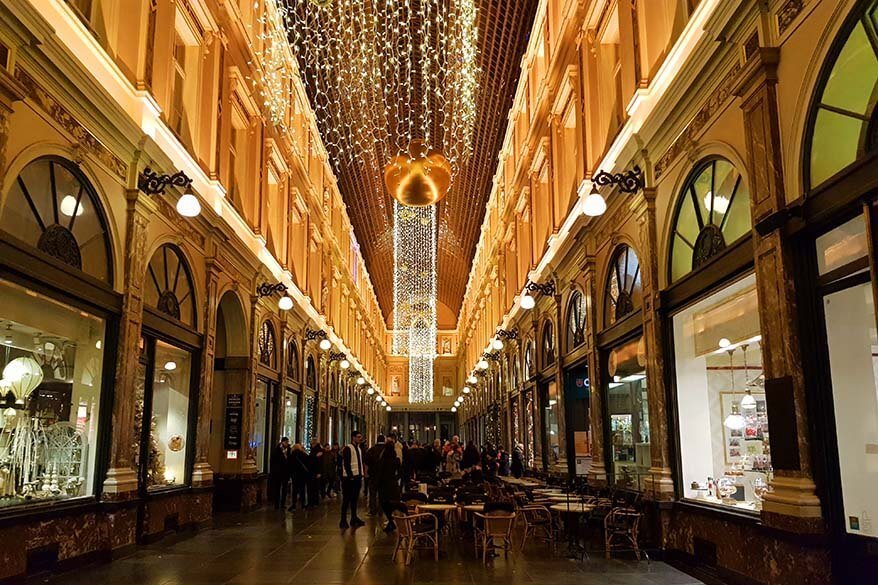
3. Manneken Pis
Manneken Pis (the peeing boy) is the quirky symbol of Brussels. And while you’ll most likely be underwhelmed by the sight of this tiny statue, it’s one of the main landmarks of Brussels that every first-time visitor absolutely has to see.
A popular legend has it that a small boy stopped a fire from spreading in Brussels by peeing on it. And so the city was saved and the little peeing boy became its symbol. However, this is just one story and the origins of Manneken-Pis could be totally different – see below)…
The current statue dates from the early 17th century, but archives show that there was a similar fountain here as early as the 14th century.
Manneken Pis is normally naked, but he also has a huge collection of costumes that he wears for a variety of different occasions. He received his first set of clothes in the late 17th century and his oldest surviving costumes date from the 18th century.
Nowadays, Manneken Pis has over 1000 costumes, with 20-30 new items added to the collection every year. If you want to see his wardrobe and learn more about this peculiar little statue, check out the museum GardeRobe Manneken Pis .
LEARN MORE: The Real Story of Manneken-Pis in Brussels
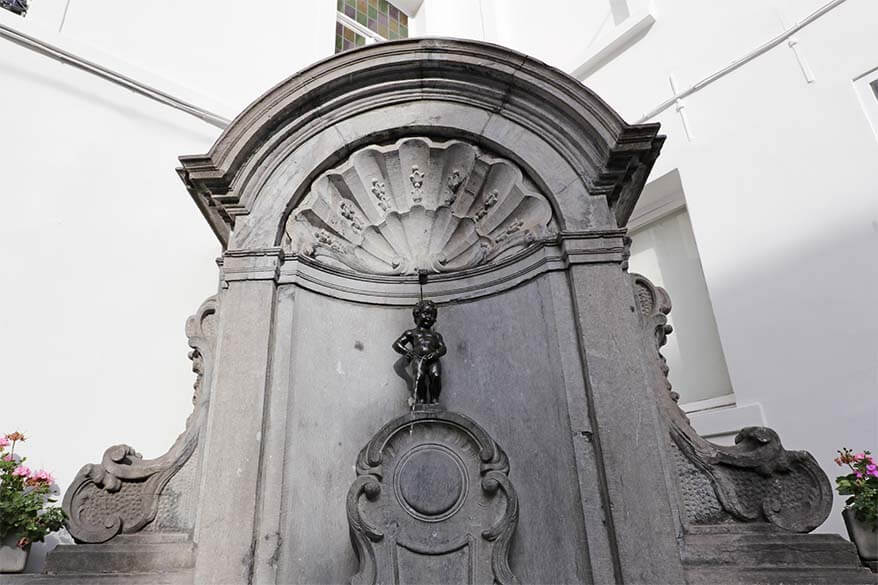
TIP: If you have the time, you may also want to locate the statue of a little peeing girl – Jeanneke-Pis . While not as famous as Manneken Pis and usually locked behind metal bars, this little fountain has always been a popular ‘hidden gem’ in Brussels. If you want to check it out, I indicated its location on our map above.
And no, that’s not all. Brussels has something with ‘urinating’ statues. There is also a Zinneke Pis , which is a statue of a peeing dog. This – for now – completes the trio of peeing statues of Brussels. But tourists sure seem to like them, so I wouldn’t be surprised if we see a few more of those appearing in the future.
Practical info: You can see Manneken Pis and other statues at any time and there is no fee. If you are interested in the museum, check the above link for more information.

4. Brussels Cathedral
One of the most impressive buildings of Brussels – St Michael and St Gudula Cathedral – is another must-see in the city. It’s just 5 minutes walk from Grand Place and well worth the short detour.
St Michael and St Gudula Cathedral is the main church of Belgium, where all the Royal religious ceremonies take place. This is where Belgian Royals get married, princes and princesses are baptized, etc.
The exterior of the Cathedral is really impressive. However, it’s very hard to appreciate its beauty because it’s literally squeezed in between different streets and buildings, which makes it difficult to see it in its full grandeur. The front façade is best visible as there is a small square in front of it, giving you a better perspective in order to admire this colossal building.
The interior of the Cathedral is beautiful too and can be appreciated much easier than its exterior.
Practical info: The Cathedral is open daily and you can visit freely. So if there’s no Mass celebration at that time, definitely take a look inside.

5. Mont des Arts
Mont des Arts (Hill of the Arts) is a little hill in the center of Brussels, offering one of the best viewpoints of the city . As you walk the stairs all the way to the top, you get to see a beautiful panorama of the Brussels skyline. This is the typical postcard view of Brussels.
Historically, this hill connected the lower working-class part of the city with the upper part where aristocrats used to live. The Royal Palace of Brussels can be found on top of the hill, whereas the Town Hall can be seen below.
At the bottom of the hill, you’ll find the statue of Belgium’s King Albert I and the landscaped Mont des Arts Garden . Another thing to look out for is the Carillon of Mont des Arts . It has 24 bells and an impressive star-shaped clock, but is a bit hidden out of sight and often overlooked by first-time visitors. However, it’s also well worth seeing, so make a little effort to locate it. You can find it on the eastern side of the archway above the street of Mont des Arts.
Practical info: All these places are outdoors and can be seen at any time. Also, don’t worry about the stairs – this is not a steep hill at all. Furthermore, if you don’t want or can’t do the stairs, you can just take the sidewalk of Mont des Arts Street that brings you to the top of the hill.

6. Musical Instruments Museum
Just at the top of the Mont des Arts, stands an impressive Art-Nouveau-style building that houses the Museum of Musical Instruments (MMI). This is one of the most beautiful examples of the Art Nouveau architecture that Brussels is famous for.
MMI has been established in 1877 and now has over 7000 musical instruments from all over the world and from many different periods. This is one of my personal favorite museums in Brussels.
Every visitor receives headphones that start to play the music of the instrument near you. This makes the visit even more special.
But even if you have no time to visit the museum inside, you really shouldn’t miss this beautiful building. It’s located on the popular tourist route anyway, so no need to make an extra effort or get out of your way for it.
Practical info: The museum is open daily except on Mondays and some public holidays. For more up-to-date information and opening times, please check the official website . This is one of the museums that’s included with the Brussels Card .
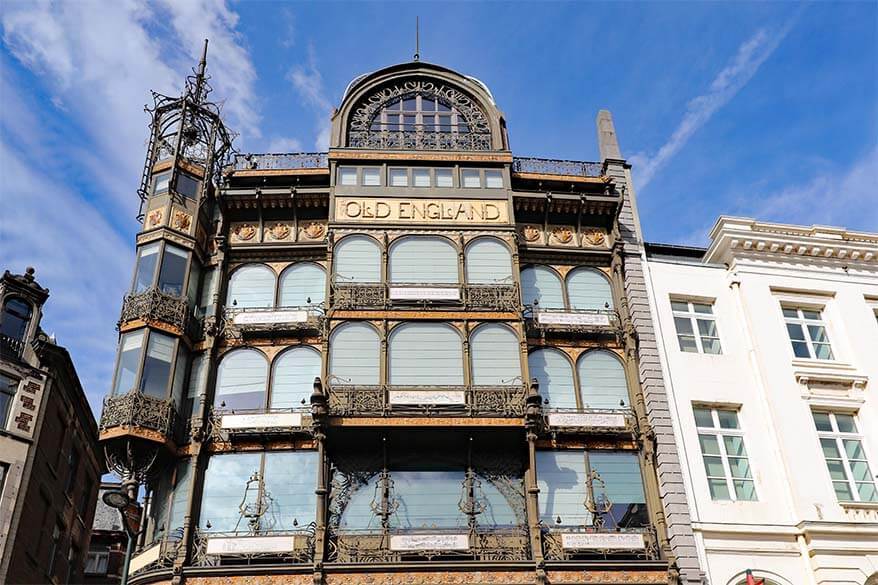
7. Royal Palace & Place Royale
Belgium is a monarchy and we have a beautiful Royal Palace right in the middle of Brussels. The Royal Family actually lives in another palace in Laken, on the outskirts of Brussels. The palace in the city center is where the Belgian King works. It’s also used for various ceremonies, state dinners, and other official occasions.
Normally, you can only admire the palace from the outside. Nevertheless, it’s worth passing by here because it’s a truly impressive building. Also, you can’t really miss the Place Royale Bruxelles , a big square with an equestrian statue of Godefroid de Bouillon in front of the Saint Jacques-sur-Coudenberg Church .
Good to know: The Royal Palace is only open for visitors for a brief period of time in the summer. It opens to the public after the 21 st of July (Belgian National Holiday) and stays open until the last week of August. You can visit every day except Monday and it’s free of charge. If you happen to be in Brussels during this time, it’s definitely worth a visit, but be prepared for the crowds.
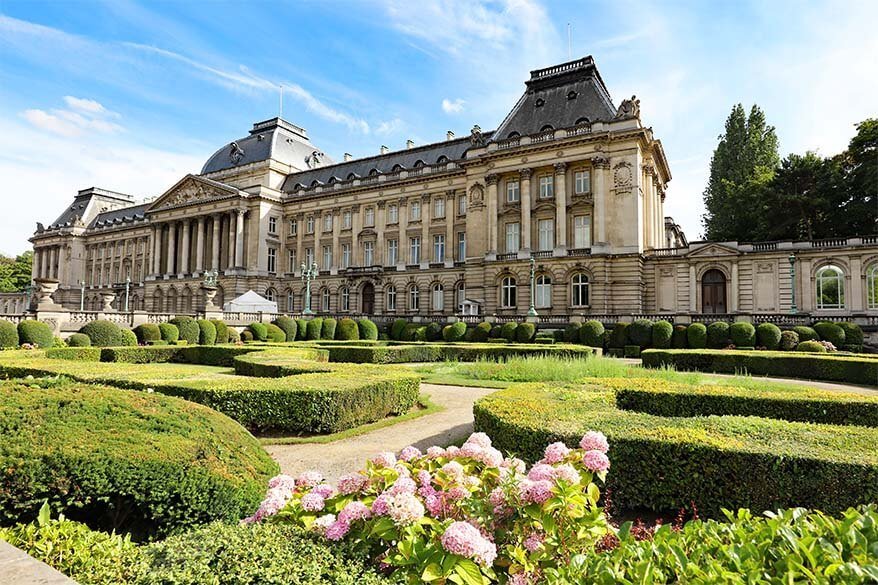
8. Brussels Park
Right in front of the Royal Palace, there is a nice small city park – Royal Park , also known as Brussels Park . Located on the former hunting grounds that in the past were reserved for the aristocracy, this public park was established in the 18th century.
Brussels Park is quite small and you can see everything in 15-30 minutes. It has several fountains and beautiful statues, and you can escape the hustle and the bustle of the city for a few moments here. There are also one or two cozy outdoor cafés in the park.
Practical info: The park is open daily, from 6 AM to 10 PM, and is free to enter. It’s more lively in the afternoons and on the weekends.
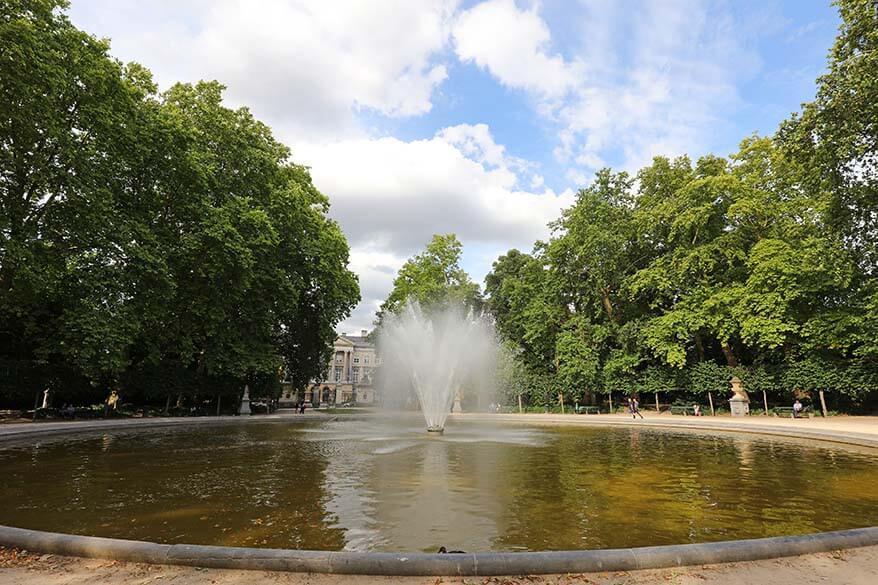
9. Petit Sablon Neighborhood
Just a short walk from the main tourist attractions, in the heart of Brussels, lies a very nice local neighborhood called Petit Sablon . It’s an area where historic architecture and modern artsy lifestyle mingle to create a very unique atmosphere. This is one of the nicest, trendier, but also very local parts of Brussels.
Don’t miss the Église Notre-Dame des Victoires au Sablon (Church of Our Lady of Victories at the Sablon). It’s one of the most beautiful churches in Brussels! The little park at the Square du Petit Sablon , just opposite the street from the church, is also very nice. Don’t miss it.
For the rest, just stroll through the neighborhood, following the information panels that indicate all the main sights. One of my favorite places here is the town square Place du Grand Sablon . It’s lined with art galleries, trendy boutiques, artsy cafes, and luxury chocolatiers. On the weekends, this is where you’ll find Brussel’s most famous antique market.
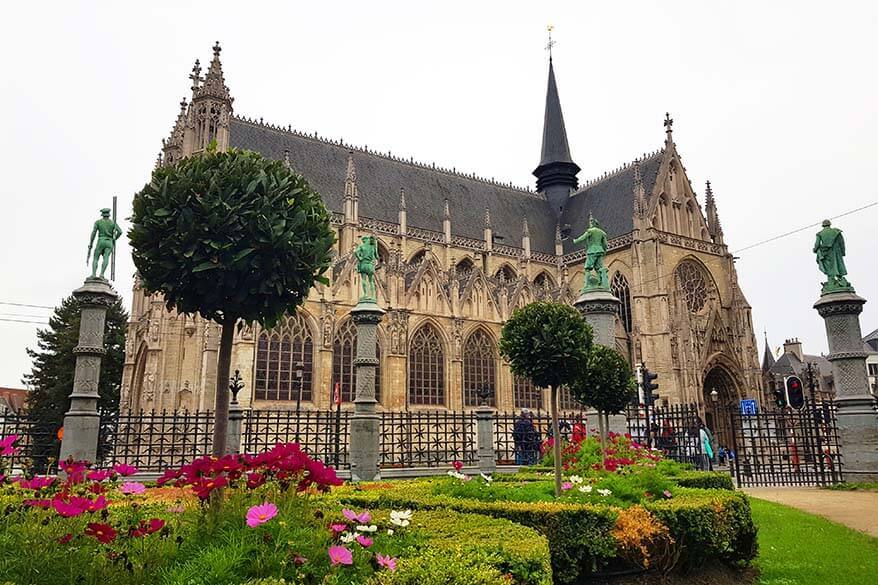
10. Rue des Bouchers
Probably the most famous restaurant street in Belgium, Rue des Bouchers is another top tourist attraction in Brussels. It’s a colorful, lively pedestrian street, packed with bars and restaurants. Most of them offer all kinds of seafood, and you’ll see impressive displays of shellfish on ice all over the place.
Most restaurants here are really oriented towards tourists, with pictures on the menu, food displays, and waiters trying to convince you to sit down at their restaurant. It will take some willpower to cross this street without actually sitting down for a meal. But it’s also a very well-known place to see in Brussels, so even if you don’t plan to eat here, you should definitely check this street out!
Good to know: Rue des Bouchers is a popular place to try the traditional Belgian ‘moules-frites’ (mussels and fries) . However, in general, you’ll get better value for money in the more local restaurants. The best season for Belgian mussels is from the beginning of July to around mid-April.
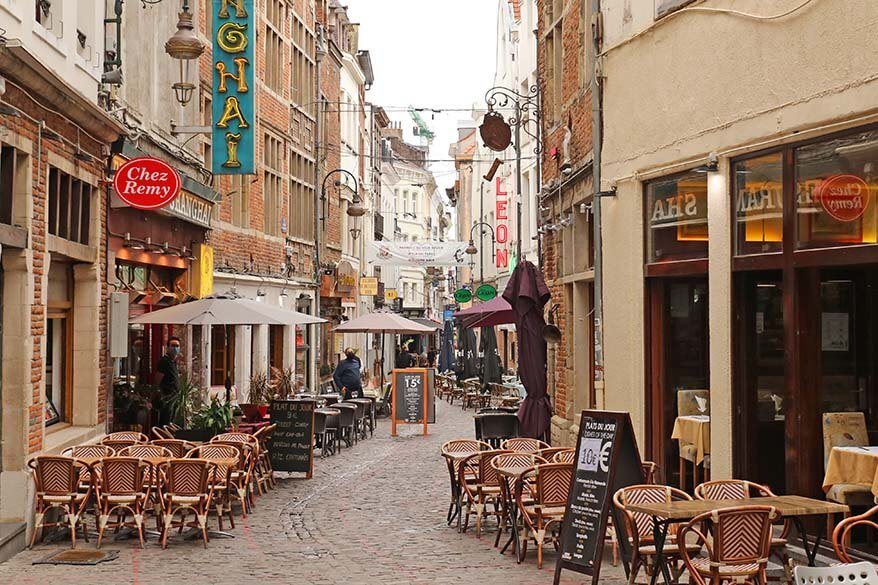
11. Place de la Bourse & Belgian Beer World
Place de la Bourse (Stock Exchange Square) is a town square in front of the old Brussels Stock Exchange building. It’s a popular place for all kinds of events and also political demonstrations.
The Stock Exchange building itself doesn’t really have an official name and is often simply called Palais de la Bourse (the Stock Exchange Palace).
This colossal 19th-century building has an impressive facade that makes you think of Greek temples. It’s even guarded by lion statues on the sides. After year-long renovations, the building is now beautifully restored and is home to the newest attraction in Brussels – Belgian Beer World .
This is an interactive family-friendly exhibition that introduces you to Belgian beer culture. At the end of the visit, you get to sample some beer at the Sky Bar. The bar is located on a beautiful rooftop terrace and offers nice city views – another great reason to come here.
Practical information: Stock Exchange Square is located just near Grand Place, so it’s really easy to include a visit here in any itinerary. If you want to visit Belgian Beer World, you can find more information and get tickets here .
Good to know: During the opening hours of the museum, you can only visit the rooftop terrace with a ticket. But in the evenings, when the museum is closed, you can go up to the Sky Bar for free.
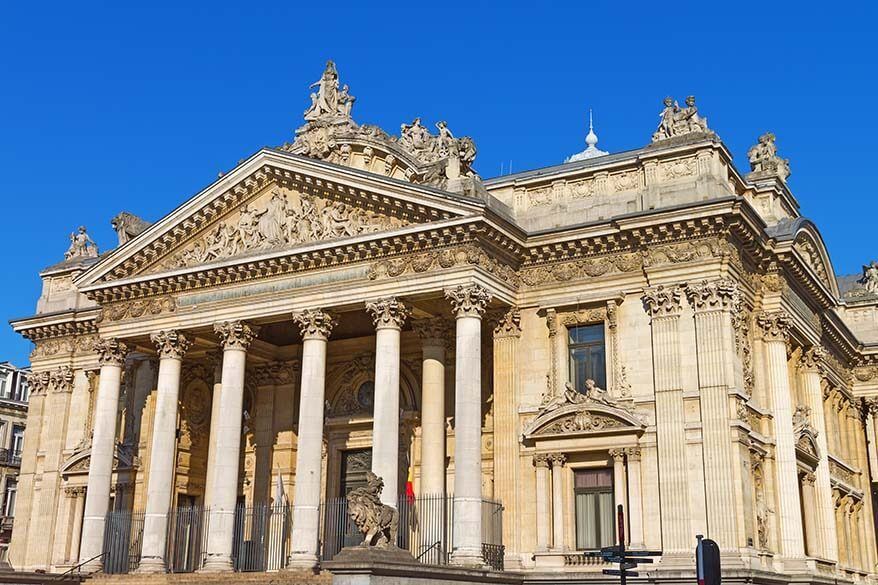
12. Saint Catherine & Fish Market
Another really nice and more local area to see in the Brussels city center is the Saint Catherine neighborhood . It’s concentrated around the Saint Catherine Church and several town squares. The best-known square is Marché aux Poissons (Fish Market), where the old Brussels port used to be.
There is no actual fish market here. However, this part of Brussels is also a good place for (sea)food lovers and you’ll find many restaurants and cafes lining the streets. If locals go for seafood in Brussels, they’ll likely come here and not to Rue des Bouchers. Prices tend to be higher here as well, but you also can expect better quality.
In winter, this is one of the places where the Brussels Christmas market takes place. And in summer, you’ll find a lively area with outdoor restaurant terraces and a very pleasant vibe.
TIP: Don’t miss the Tour Noire (the Black Tower), a restored medieval tower surrounded by modern buildings.
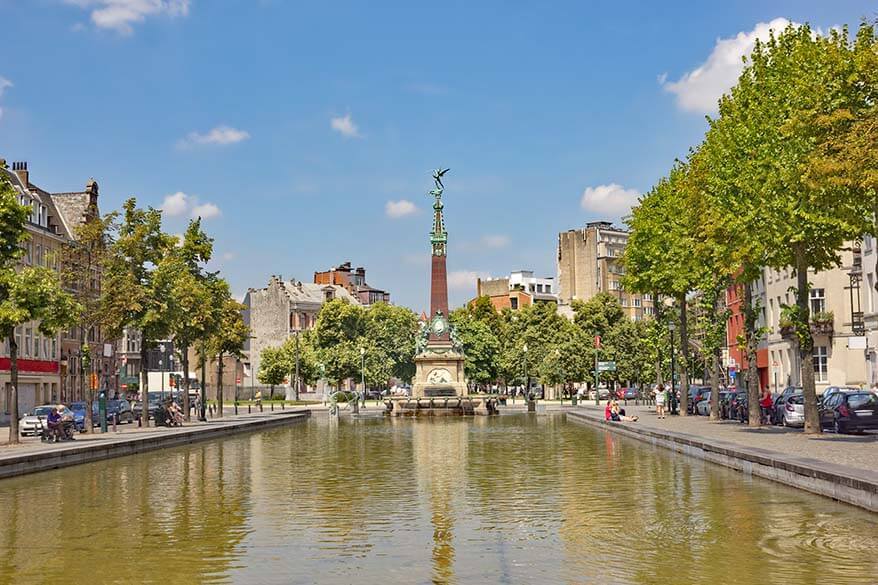
13. Atomium
While most of the main Brussels tourist attractions mentioned above can be found in the city center, the most remarkable landmark of Brussels – the Atomium – requires a separate visit. It’s located on the western side of Brussels and can be reached by metro or with a hop-on hop-off bus (more info on the bus below).
The Atomium was built in 1958 as the flagship building of the Brussels World’s Fair, Expo 58. The nine spheres represent an iron crystal (magnified 165 billion times) and it was supposed to be torn down soon after the event, but it quickly became an unmistakable symbol of Brussels. It has recently been renovated, looks more impressive than ever before, and nobody can imagine the city without the Atomium anymore.
At the moment, Atomium is one of the most visited tourist attractions in Brussels. It’s impressive both, from the outside and well as on the inside. Inside, you’ll find is a museum, a panoramic restaurant, and a magnificent 360° panorama with unparalleled views over Brussels and its surroundings.
Practical info: You can see the Atomium from the outside at any time and it’s beautifully lit at night. For visits inside, see practical info and get your tickets here .
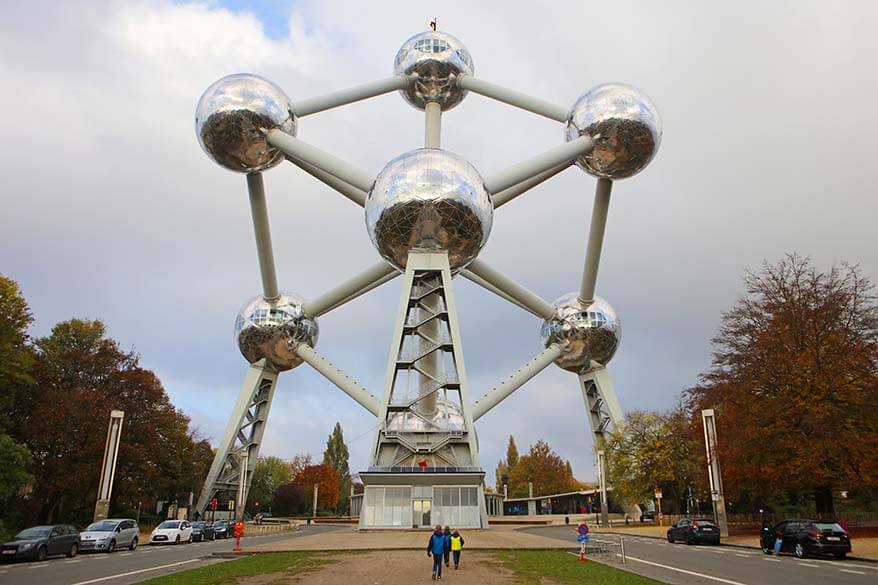
14. Mini-Europe
If you already make it all the way to the Atomium, then definitely visit the adjacent Mini-Europe as well. Here, you’ll find miniature buildings and landmarks from all over Europe, scaled to the size of 1:25.
It’s a fun way to discover the main landmarks from various European countries and maybe even find some travel inspiration for future trips. And if you ever wanted to take some fun pictures with the mini versions of the Eiffel Tower or Big Ben, this is your chance!
Mini-Europe is great for all ages. It’s fun for families visiting Brussels with kids, but it’s definitely not only for kids.
Practical info: Mini-Europe is an outdoor attraction, but is open daily, all year round, and is just one of the many places you can also visit in Belgium in winter . See here for more info and tickets.
TIP: If you are planning to visit both, Atomium and Mini-Europe, you can get a combi-ticket that saves a few euros.
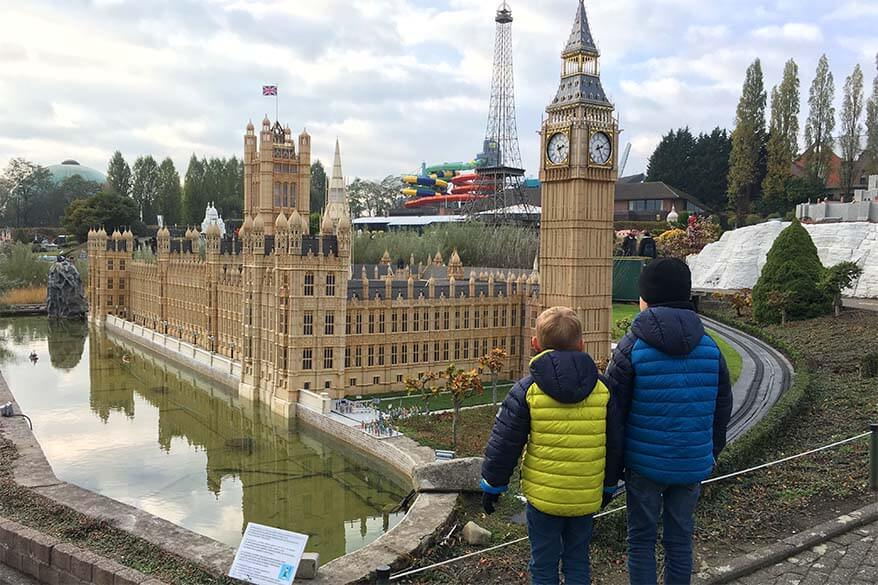
15. European Quarter
Brussels is the capital of Europe and there are many EU institutions in the city. Most of them are concentrated around Place Schuman, Place du Luxembourg, Place Jourdan, and Place Jean Rey. All these places are a few metro stops from the old town.
If you want to get to know more about the EU, then it might be interesting to visit the European Parliament in Brussels. There are several unique experiences that you can choose from, and it’s also free of charge. You should book in advance.
Practical info: You can see all the buildings from the outside at any time. For more information for a visit inside, please check the official website of the European Parliament in Brussels.
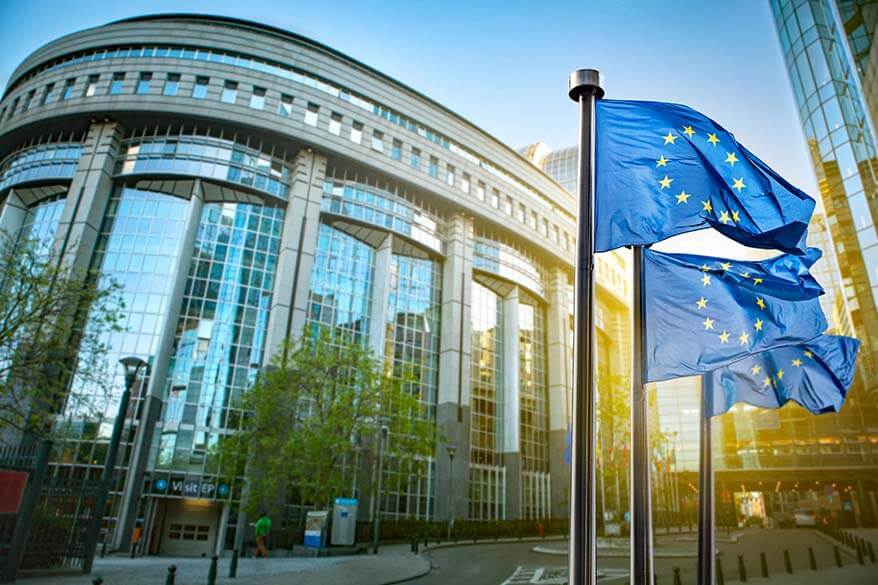
16. Cinquantenaire Park
Located outside the city center, a short walk from the EU Quarter, the Parc du Cinquantenaire (Park of the 50th anniversary of Belgian independence). This is one of the biggest and most famous parks of Brussels. It has nice lawns, flower displays, fountains, playgrounds, a huge triumphal arch in the middle, and several big museums.
The Royal Museum of the Armed Forces and Military History is a nice place to see all kinds of military equipment, armory, but also tanks, and even aircraft. More info .
Autoworld is a car museum, with a big collection of vintage vehicles. This is one of the best museums to visit in Brussels with children and it’s not just for boys. More info .
The Art & History Museum has an impressive collection of works of art dating from various periods of time, from Ancient Egypt and the Roman Empire to the Renaissance, and more. More info .
Most tourists who come to Brussels just for a day don’t get to this part of the city. But if you take a hop-on hop-off bus (more info below), you’ll definitely pass here. If you have more time, take a stroll through the park and visit one of the museums.
Practical information: You’ll need at least 30-45 min for Autoworld or for the Royal Museum of the Armed Forces. The Art & History Museum requires at least 2 hours of your time. For more information and opening times, please check their websites linked above.
TIP: All these museums are included with the Brussels Card .
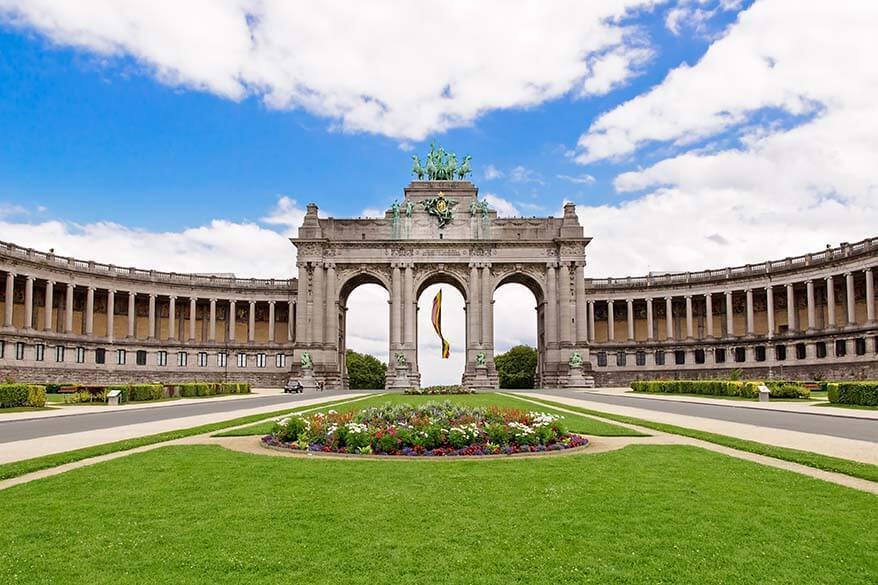
17. Hop-on Hop-off Bus
If you want to see a lot of Brussels in a short time, then consider taking a hop-on hop-off bus . It’s especially convenient if you are planning to visit the attractions located a bit outside the city center. For the Atomium, Mini Europe, but also the EU buildings or Cinquantenaire Park, the hop-on hop-off bus is the best way to easily get there.
There are two routes and your ticket covers both of them. For the western side of the city including Atomium, take the Blue Route (aka Atomium Route). For the easter side, including the European quarter and Cinquantenaire Park, take the Red Route (aka Europe Route).
The advantage of taking the sightseeing bus is that it also passes the Royal Palace in Laken, the National Basilica of the Sacred Heart in Koekelberg, the Japanese Tower at the Royal Greenhouses of Laeken, and several other interesting Brussels landmarks. You also get to see some colorful neighborhoods of Brussels that you’d totally miss otherwise.
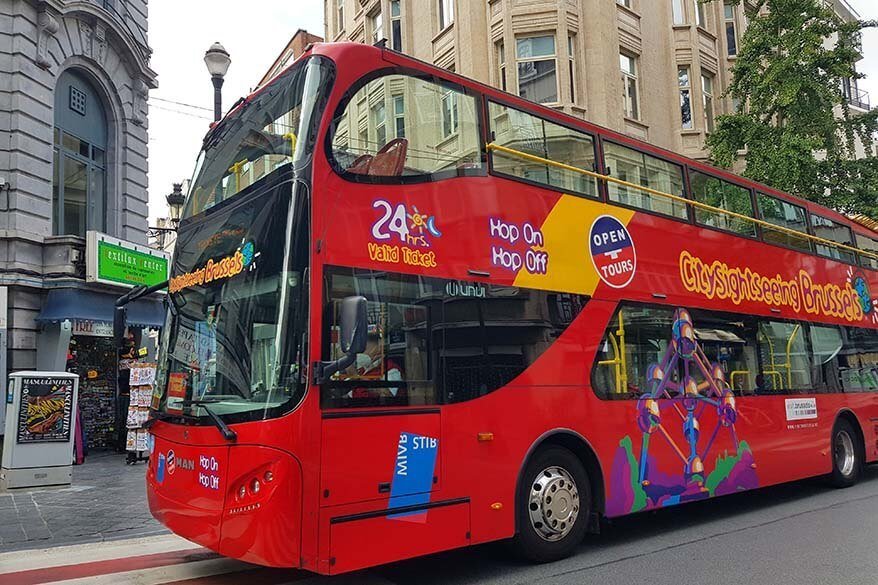
18. Brussels Museums
Brussels has many museums and, depending on your interests and the time you have, you could consider visiting a few of them. However, with so many choices, it can be really overwhelming to decide where to go. So here are a few more suggestions, in addition to the ones already mentioned above. (You can also find these on our map of Brussels attractions).
In the heart of Brussels and just near the Musical Instruments Museum, you’ll find the Royal Museums of Fine Arts of Belgium . This is a complex of two museums – the Old Masters Museum and the Magritte Museum . You can visit one or both of them (combination tickets are available). The building is so large that you can spend a big part of the day here. More info here . If you have time for just one museum in Brussels, make it the Magritte Museum !
For nature, history, and dinosaurs, head to the Museum of Natural Sciences . The museum houses the largest Dinosaur Gallery in Europe and is a favorite among kids. However, it’s located somewhat far away from all the attractions in the city center. So you really have to make an effort in order to visit. More info here .
Brussels City Museum , located at the Grand Place town square, is dedicated to the city of Brussels. This museum is a great place to learn about Brussels and its history from the Middle Ages to modern times. More info here .
Other Brussels museums that are also worth considering are Comics Art Museum, Train World , BOZAR, and Choco-Story Brussels . But even if you’d somehow manage to visit all of these, you’ll just scratch the surface of all that there’s to see in Brussels.
TIP: If you are a museum fan and plan to visit several of Brussels museums in one trip, then definitely get Brussels Card . It will save you a lot of money.
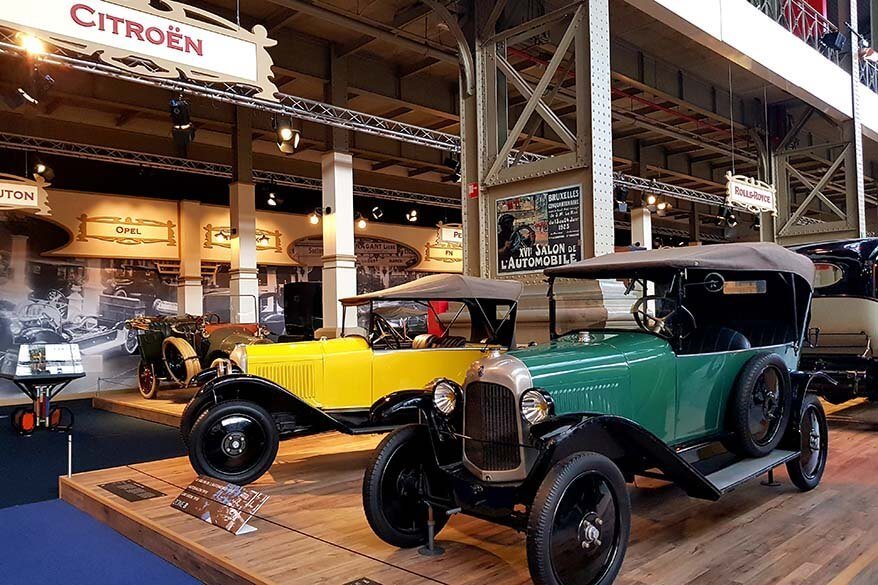
Now that we covered all the best places to see in Brussels, here are some additional experiences that you don’t want to miss. Ok, you can skip the shopping but definitely don’t skip all the food and drinks that Belgium is famous for. Take a look at our suggestions with some insider tips!
19. Shopping at Rue Neuve or Avenue Louise
In addition to all the tourist sights and attractions, many people come to Brussels for shopping. It’s a great place for that indeed, with countless options and plenty of choices for all styles and budgets.
The busiest place in Brussels, Rue Neuve is the main shopping street of the city. It’s lined with big chain stores and looks and feels like any other big shopping area in the world. But if you’d like to do some shopping, this is the place to be.
For a more high-end shopping experience, head to Avenue Louise on the other side of the city center. Here, you’ll find expensive designer boutiques, with names as Louis Vuitton, Tiffany & co, Michael Kors, and similar.

20. Belgian Chocolate
No trip to Brussels would be complete without tasting some really good Belgian chocolate . There are probably hundreds of shops selling chocolate in the center of Brussels. And you can also visit Choco-Story Brussels , where you can learn more about Belgian chocolate and taste some of it.
TIP: If you are looking to taste some truly good Belgian chocolate, I recommend checking out the shops of traditional Belgian chocolate brands such as Neuhaus , Godiva , Leonidas , or Pierre Marcolini .
The traditional Belgian chocolate brands such as Neuhaus (est. 1857), Leonidas (est. 1913), and Godiva (est. 1926) have a long history, whereas Pierre Marcolini is the newcomer that opened his first shop at the end of the 20 th century.
Leonidas offers some of the best price-quality Belgian chocolates. Godiva and Neuhaus are somewhat more expensive and some of their chocolates require an acquired taste that not everybody will appreciate.
The chocolates of Pierre Marcolini are more contemporary and often quite daring. They come with a high price tag as well. But if you want to taste some of the best chocolate in the world, then definitely stop by one of their shops in Brussels.
Our personal favorite Belgian chocolate is the white ‘Manon’ praline from Leonidas . These pralines have coffee-flavored buttercream in a shell of white chocolate, with hazelnut in the middle. You can find them without hazelnut, with milk chocolate or dark chocolate as well, but definitely try the original one too! They were invented back in 1934, but are just as popular nowadays as they were almost a hundred years ago.
Our kids’ favorites are the Côte d’Or Praliné chocolates that come in many different varieties. You’ll find them in all Belgian supermarkets. They are much better and much cheaper than the chocolates sold in tourist stores.
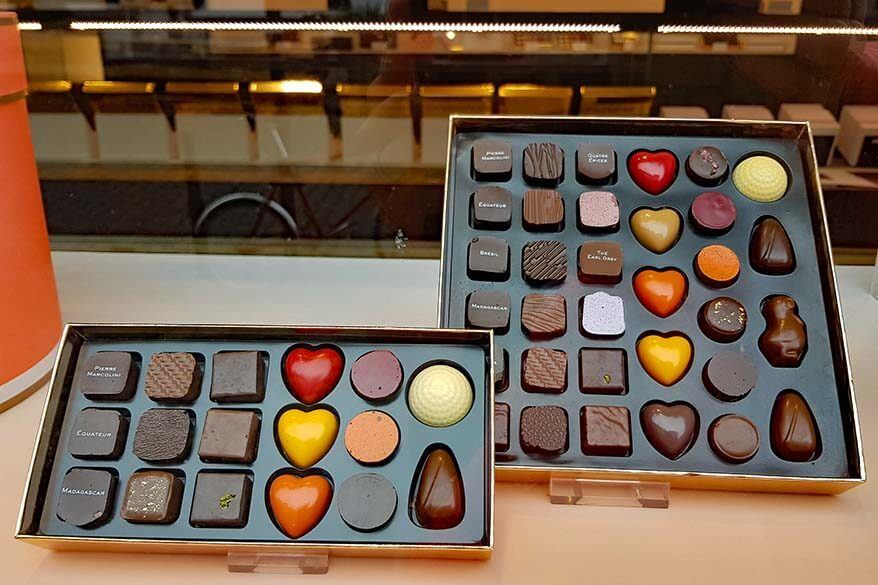
21. Belgian Waffles
It’s impossible to not mention Belgian waffles when writing about any major city in Belgium. You’ll see and smell the waffles in all the tourist areas in Brussels. And they’re so hard to resist.
There are so many different types of Belgian waffles, but the tourist places usually all sell just one or two kinds – the Brussels waffles and the Liege waffles . Usually the latter. The Brussels waffles are somewhat bigger, more ‘airy’, and not as sweet. They are rectangular in shape. Whereas the Liege waffles are quite thick and heavy, and they also contain more sugar. They are also somewhat more rounded than the Brussels waffles.
In addition, you can choose extra toppings that vary from whipped cream and chocolate to fresh strawberries and many others. If you dare, try a few toppings at once. Just keep in mind that you’ll have to try to eat it all while standing in the busy street, with hundreds of people walking by. This is the reason why we usually simply opt for a plain waffle when buying Belgian waffles from the street shops.
Still, the best traditional waffles are the ones you’ll find at these street stands and not at restaurants. Definitely give it a try!
TIP: If you have a few hours to spare, you can also check out this waffle-making workshop . It’s something fun to do in Brussels that you won’t find in many other places.

22. Belgian Beer
One of the best things to do in Brussels is go bar-hopping and try different Belgian beers in various pubs and cafes. There are many tourist-oriented places, but for a more authentic experience, look for older, traditional pubs and cafes.
Some of them have hundreds of different Belgian beers , many on tap, and always with their own matching glasses (see more about this in our guide to fun facts about Belgium ).
Here are just a few of the best beer cafes in Brussels (we also indicated them on the map): Delirium Café , Moeder Lambic , Café Mort Subite , Bier Circus , etc.
Don’t settle for the typical mass-production Belgian beer that you find all over the world. Make sure to ask for some local suggestions and try something that you can only find in Belgium!
Good to know: Some Belgian beers are very strong, so be careful if trying more than one or two of them on the same evening. On the other hand, there are also very light, fruity beers, that you will enjoy even if you are not a big fan of beer, like me.
Local’s recommendation: My husband’s favorite Belgian beers are the Trappist beers: Westmalle , Westvleteren , Orval , Rochefort , Achel , Chimay , and La Trappe . In Brussels, Lambic , Geuze , Mort Subite , La Chouffe , or Rodenbach are just a few popular choices.
TIP: If you want to taste various Belgian beers, but are not sure where to start or what to choose, check out this popular pub crawl or – if you are in the mood for more – this highly-rated tour that includes 7 beers and snacks .

23. Belgian Fries with Mayo
No visit to Belgium would be complete without trying some typical Belgian fries with mayo (and no, it’s nothing like fries or mayo that you’ll find anywhere else in the world). And while you can find good fries in the restaurants as well, the best ones come from the street stands called ‘ friterie ’ or ‘ fritkot’ .
For a couple of euros, you can have a delicious and quick meal. It’s perfect when you don’t want to sit down for a long meal during the day and rather spend your time sightseeing.
And yes, it’s not the healthiest option, but with all the chocolate, waffles, and beer, you’ll likely need to loosen your belt in Brussels anyway. So why not go for a full experience and try it all!
TIP: The most popular place to taste traditional Belgian fries in the center of Brussels is the friterie called Fritland , located on the western side of the Stock Exchange building. No matter what time of the day, there’s always a queue here, you can’t miss it. Another good place is Friterie Tabora , very close by to the Grand Place as well. I indicated both of these on our map, but there are many, many more good places throughout the city.

Where to Stay
There are so many nice hotels in various areas of Brussels that it’s really difficult to recommend just a few accommodations. For sightseeing, we recommend staying in the city center, close to Grand Place – this area really has it all and is also easy to access by public transport.
Here are some of the best hotels in the heart of the city center, close to Grand Place, for all budgets:
- €€€€€ Rocco Forte Hotel Amigo .
- €€€€ Warwick Grand Place .
- €€€ NH Collection Brussels Centre .
- €€ Motel One Brussels .
READ ALSO: Where to Stay in Brussels (best areas & hotels for all budgets) & Most Popular Brussels Hotels (top 10 most-booked hotels in the city center)
So, this is our guide to the top things to do in Brussels and the main tourist attractions that you shouldn’t miss when visiting the Belgian capital. I hope that this will help you make the most of your visit and get to know Brussels a bit better.
If you are visiting other Belgian cities as well, make sure to also check our guide to the best things to do in Bruges and also the best things to do in Antwerp (+ don’t miss our favorite local places in Antwerp ).
TIP: If you are looking for ideas on how to plan your trip, see our suggested Belgium itinerary for 3-4 days . It also includes tips for where to stay and how to get around. Check it out!
Have a great trip to Brussels!
If you found this post helpful, don’t forget to bookmark it and share it with your friends. Are you on Pinterest? Pin these images!
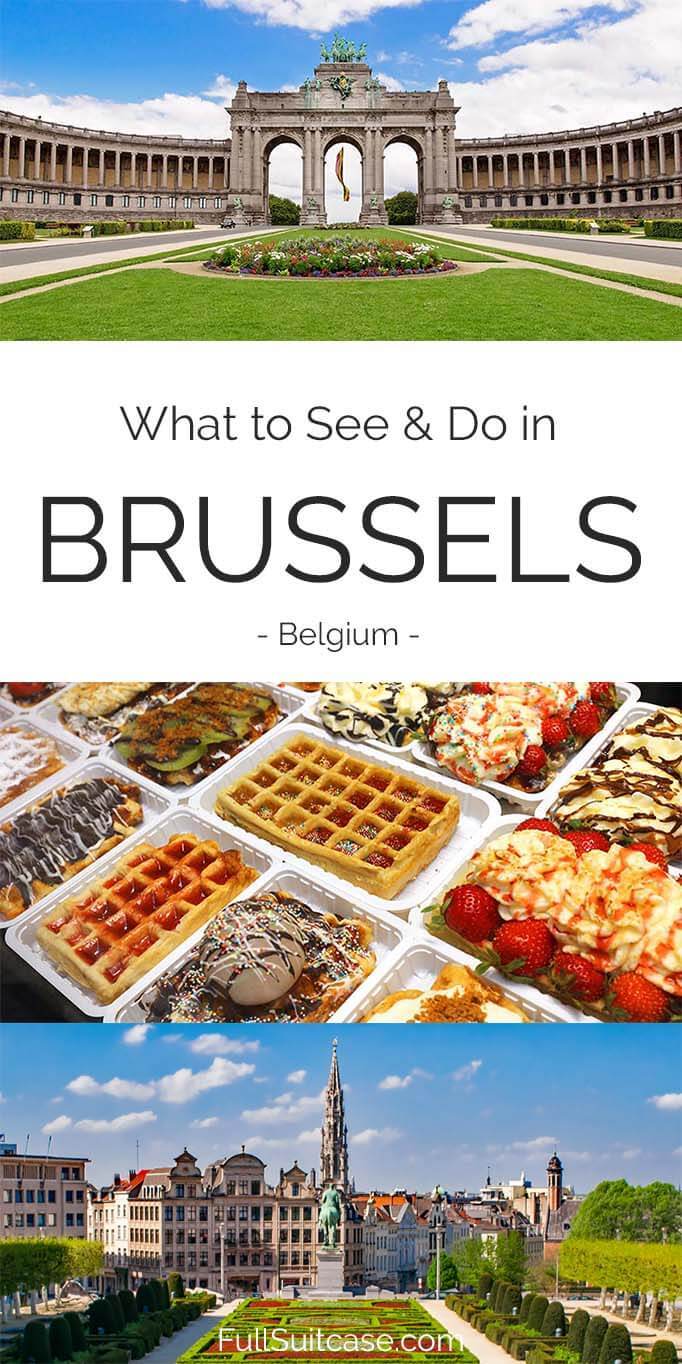
More travel inspiration for some of the most beautiful cities all over Europe:
- Best Things to Do in Amsterdam
- Best Things to Do in Barcelona
- Best Things to Do in Rome
- Best Things to Do in Venice
- Best Things to Do in Florence
- Best Things to Do in London
- Best Things to Do in Edinburgh
- Best Things to Do in Liverpool
- Best Things to Do in Manchester
- Best Things to Do in Milan
- Best Things to Do in Krakow
- Best Things to Do in Lisbon
- Best Things to Do in Geneva
- Best Things to Do in Lucerne
- Best Things to Do in Bern
- Best Things to Do in Colmar
- Best Things to Do in Salzburg
- Best Things to Do in Reykjavik
This site uses Akismet to reduce spam. Learn how your comment data is processed .
Thursday 28th of December 2023
Heading to Brussels early May. Also side trip to Luxembourg. Any tips on that? Also thinking of day trip to Ghent - worth it?
These guides are amazing. Thanks.
Friday 29th of December 2023
@Jurga, Thanks... Yes Luxembourg is a far ride so planning to stay two nights. Your site was very helpful. Thanks much.
Hi Janet, you can easily take a train from Brussels to Luxembourg and visit for a day, but it's a rather long train journey so start early. Ghent is much closer and you don't necessarily need a full day if you just want to see the main highlights, but it all depends on your interests. Some people love it more than any other city in Belgium. You could also combine it with Bruges. If you have time, I highly recommend visiting Antwerp. It's a very easy day trip by train and you can easily fill a day or even more there. It's our personal favorite. You can find several detailed guides on Antwerp and Bruges on our website - see here for an overview. Unfortunately, I haven't published anything about Ghent or Luxembourg city itself. In Ghent, the nicest place to be is around Korenlei/Graslei and St. Michael's Bridge. Don't miss Gravensteen Castle and Lam Gods painting at Saint Bavo's Cathedral. In Luxembourg, visit the old town around Grand Ducal Palace. We personally always love walking around Grund (this area is by the river and can be reached via elevators from old town). Also don't miss Bock Casemates. Hope this helps.
R. Robinson
Monday 18th of September 2023
Your travel guides are amazingly helpful! Thank you very much. I used the Iceland guide in June and currently in Brussels.
Thursday 21st of September 2023
Glad to help. Hope you enjoyed Belgium!
Colin Peart
Tuesday 15th of February 2022
Thanks for the great tips. The best blog I’ve found for Brüssels.
Wednesday 16th of February 2022
Glad to help, Colin. Have a great time in Brussels! (and don't forget that there's more to Belgium than its capital ;))

Brussels Travel Guide: 18 Best Things to Do, History, Facts and Hotels
November 19, 2023 | Posted in: Belgium
Brussels, the capital city of Belgium, is an intriguing destination with much to offer. Brussels is pronounced as “bruh-suhls” or “bruh-suhlz” in English. The city is also known by its French name, “Bruxelles” (pronounced “bruh-kel”), and its Dutch name, “Brussel” (pronounced “bruh-suhl”). It is home to the iconic Atomium, a unique structure with futuristic spheres that offer panoramic views of Brussels. The Grand Place, a UNESCO World Heritage Site, is a historic square surrounded by ornate buildings, including the Gothic-style Brussels City Hall. The Manneken Pis, a small bronze statue of a urinating boy, is a quirky symbol of Brussels and a popular tourist attraction. The Royal Palace of Brussels, although not the residence of the king, is an impressive neoclassical building that can be visited during the summer months, and the Belgian Comic Strip Center showcases the country's rich comic book heritage, including the adventures of Tintin and the Smurfs.
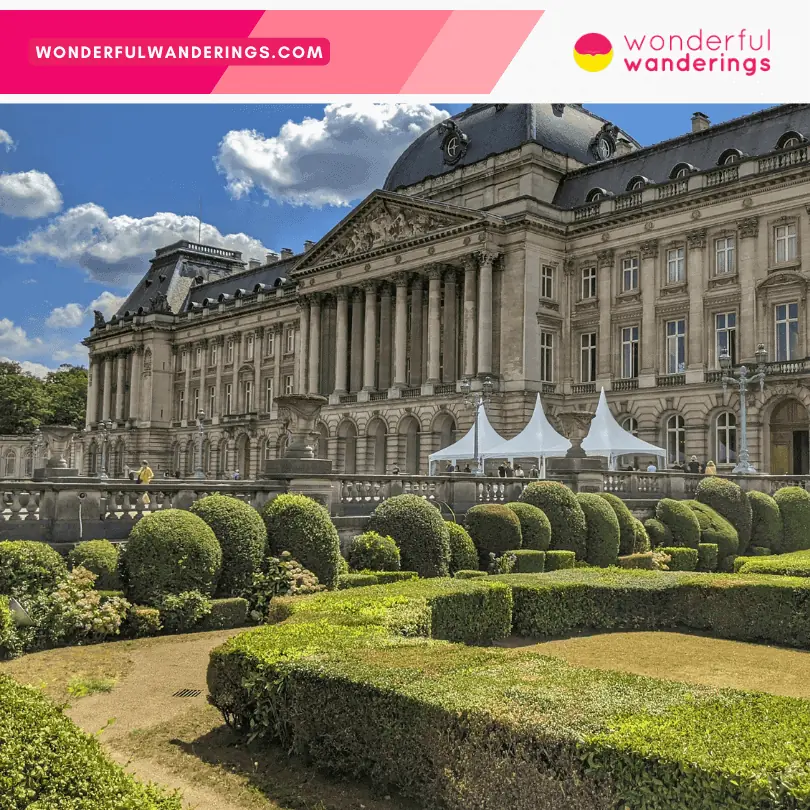
Exploring Brussels' healthy culinary scene is a must, with opportunities to sample Belgian waffles, chocolate, and famous Belgian beers. The city offers excellent shopping options, ranging from high-end boutiques on Avenue Louise to flea markets like the Marolles district's Place du Jeu de Balle. Art lovers can visit famous museums such as the Royal Museums of Fine Arts of Belgium, which houses an extensive collection of artworks from various periods. Taking a leisurely stroll through the streets of the historic neighborhoods, like the Marolles and Sablon, allows visitors to soak up the local atmosphere. Brussels hosts numerous festivals throughout the year, including the Flower Carpet event in the Grand Place and the Winter Wonders Christmas market. Listed below are the best things to do in Brussels:
- Grand Place: Grand Place in Brussels is a UNESCO World Heritage site featuring beautifully preserved buildings from the late 17th century. Its architectural consistency is striking. It has hosted markets, celebrations, and political events for centuries. Visitors can explore the surrounding streets, lined with shops and cafes, and nearby attractions like the Atomium and Royal Palace.
- Atomium: The Atomium in Brussels is a famous symbol of the city and Belgium. Originally built for Expo 58, it underwent extensive renovations from 2004 to 2006. The futuristic structure offers opportunities for collaboration, branding, and filming. It serves as an exhibition space and cultural center, showcasing themes related to Belgium and digital arts. Atomium is visited by 600,000 travelers annually, it is one of Brussels' top attractions, hosting private events and welcoming heads of state.
- Les Galeries Royales Saint-Hubert: Les Galeries Royales Saint-Hubert in Brussels is a historic and iconic shopping arcade. Its construction in 1846 revitalized the surrounding neighborhood, combining residential spaces and shops. The gallery features a Renaissance-inspired design with an elegant glass roof and breathtaking architecture. It offers a diverse shopping experience, from fashion boutiques to chocolatiers. The galleries also host cultural events and exhibitions, attracting both locals and tourists.
1. Grand Place
La Grand Palace is a historic square that has been designated as a UNESCO World Heritage site. It is a collection of buildings that were constructed mainly in the late 17th century. Its buildings showcase a notable level of architectural consistency and uniformity. The square is located in Brussels, the capital city of Belgium. It is a major tourist attraction, drawing visitors from around the world who come to admire its beauty and immerse themselves in its rich history. A variety of buildings, including townhouses, guild halls, and the Brussels City Hall, surround the square.
La Grand Place also serves as a venue for various events and festivals throughout the year. It has been a central gathering place for centuries, hosting markets, celebrations, and political gatherings. Visitors to La Grand-Place can explore the square's surroundings and take in its grandeur. They can wander through its narrow streets, lined with shops, cafes, and restaurants. Visitors can also explore other attractions in the city, such as the Atomium, the Royal Palace, and the Museum of Fine Arts, just near the Grand Place.
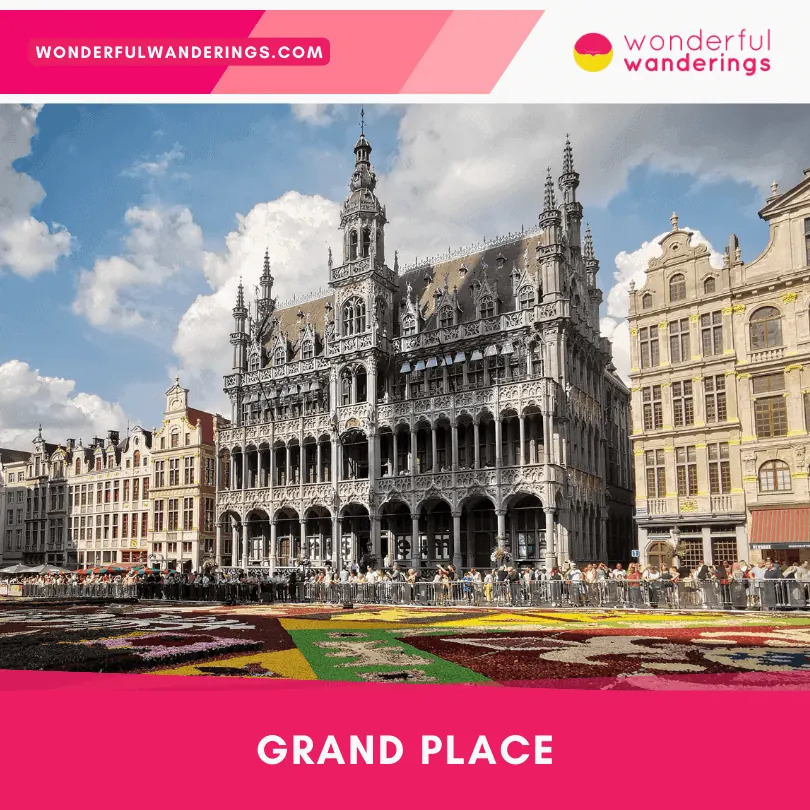
The Atomium, located in Brussels, Belgium, is a prominent symbol of the city and the country. It was originally built for Expo 58 but underwent major renovations between 2004 and 2006. Atomium's futuristic design and international recognition offers various opportunities for collaboration and branding, such as renting parts of the building, co-branding initiatives, and filming opportunities. The Atomium also serves as an exhibition space and cultural center. Visitors can explore exhibitions that highlight themes related to Belgium and digital arts. It has become one of Brussels' most iconic attractions and maintains a special relationship with the city. Following its restoration in 2006, the Atomium has reclaimed its place as an international symbol and icon. It offers a unique visitor experience and serves as a venue for organizing events and conferences.
The Atomium attracts 600,000 people annually, with a record of 4,700 visitors in a single day. It hosts over 100 private events each year, attended by tens of thousands of participants. It welcomes numerous heads of state annually, both privately and officially. The Atomium also serves as a backdrop for photo shoots and is featured in national and international broadcasts. When visiting the Atomium, there are various ticket options available. The prices range depending on the type of ticket and visitor category. For individual visitors, prices start at 8.5€ ($7.84, £6.85) for children under 115 centimeters (3 feet and 9 inches), 16€ ($14.75, £12.9) for adults, and 14€ ($12.91, £11.29) for seniors. Combined tickets are available, offering access to other attractions such as Design Museum Brussels and Mini-Europe.
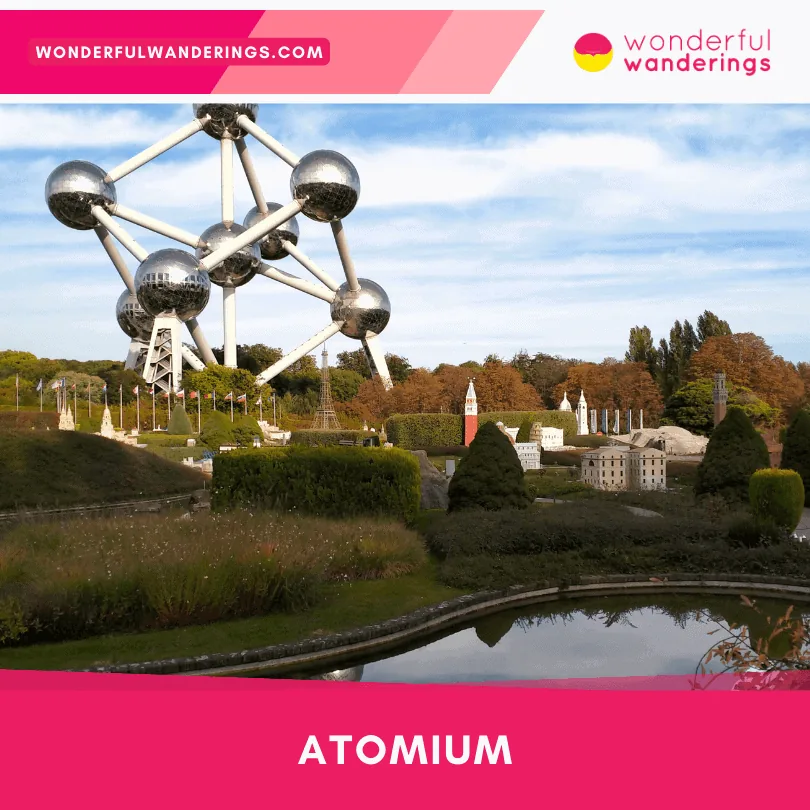
3. Les Galeries Royales Saint-Hubert
Les Galeries Royales Saint-Hubert, located in the heart of Brussels, Belgium, is a historic and iconic shopping arcade. Its inauguration on June 20, 1847, was attended by King Leopold I and marked a new era for the city. Designed by architect Jean-Pierre Cluysenaer, the construction of this impressive structure began in 1846 and was completed in 1847. Galeries Royales Saint-Hubert's length is 200 meters (656 feet) and consists of three interconnected sections: Galerie de la Reine (Queen's Gallery), Galerie du Roi (King's Gallery), and Galerie des Princes (Princes' Gallery).
Les Galeries Royales Saint-Hubert played a pivotal role in revitalizing and transforming the surrounding neighborhood, which was once a densely populated area. The gallery's construction aimed to combine residential spaces, shops, cultural venues, and leisure areas, reflecting Cluysenaer's vision. It showcases a magnificent Renaissance-inspired design characterized by its elegant arched glass roof supported by a series of self-supporting arches. The roof is filled with fish-scale tiles, allowing for better ventilation and preventing condensation.
Les Galeries Royales Saint-Hubert has stood the test of time and remains a hub for shopping and leisure. It houses various boutiques, offering visitors a wide range of products and services. From fashion boutiques to jewelry stores, bookshops to chocolatiers, the galleries provide a diverse shopping experience. Visitors can explore the shops, stroll along the arcade, and enjoy themselves in the unique atmosphere of this historical landmark. Les Galeries Royales Saint-Hubert also serves as a cultural and entertainment destination. The galleries host various events, exhibitions, and performances throughout the year, attracting locals and tourists.
Access to Les Galeries Royales Saint-Hubert is convenient, with several transportation options available. It is located at 5 Galerie du Roi, and public transportation can easily reach it, including trams, buses, and the metro. The Central Station and Bourse are the nearest metro stations, providing convenient connections to other parts of the city. For those traveling by car, parking facilities are available nearby.
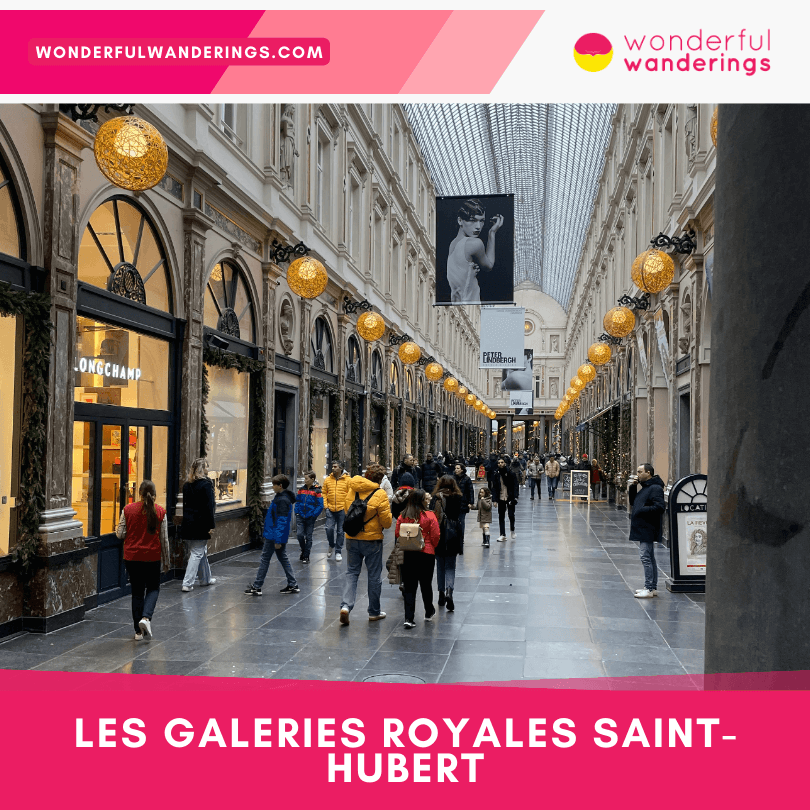
4. St. Michael and St. Gudula Cathedral (Cathedrale St-Michel et Ste-Gudule)
St. Michael and St. Gudula Cathedral, also known as the Cathedral of St. Gudula, is a medieval cathedral in the heart of Brussels, Belgium. It is dedicated to St. Michael and St. Gudula, the city's patron saint. The construction of the cathedral began in the 11th century, replacing an earlier chapel that stood on the same site. The cathedral's architecture is predominantly Gothic, with some newer elements. It is known for its size, measuring 110 meters (360 feet) in length, 30 meters (98 feet) in width (50 meters or 160 feet at the choir level), and 26.5 meters (87 feet) in height. The entrance towers reach a height of 69 meters (226 feet). The cathedral's exterior features a striking main facade with three portals and two 64-meter-high (210-foot) towers. The towers, built between 1470 and 1485, are attributed to Jan Van Ruysbroeck and contribute to the cathedral's distinctive skyline. The cathedral is constructed primarily with stone from the Gobertange quarry, located 45 kilometers (28 miles) southeast of the cathedral. The cathedral's classic plan consists of a nave with a three-bay choir ending in a five-sided apse surrounded by an ambulatory. Over the centuries, the cathedral underwent various modifications and additions. The main structure was completed in the 16th century, with the interior being frequently modified in subsequent years. The church features late Gothic elements and chapels, while its decorative elements, including some windows in the choir, were restored in the 19th century.
St. Michael and St. Gudula Cathedral are known for their musical components, particularly its two organs and impressive church bells. The cathedral has been designated as a protected heritage site since 1936. In 1962, it was elevated to the status of a cathedral and became the co-cathedral of the Metropolitan Archbishop of Belgium, along with the Cathedral of St. Rumbold in Mechelen. As the national church of Belgium and the official seat of the Archbishop, St. Michael, and St. Gudula Cathedral frequently hosts important ceremonies such as royal weddings, state funerals, and other official events.
The surroundings of St. Michael and St. Gudula Cathedral have changed since the mid-20th century due to the construction of the Brussels Central Station. It now stands on the Parvis Sainte-Gudule/Sinter-Goedelevoorplein, a spacious forecourt east of the Boulevard de l'Impératrice/Keizerinlaan. The cathedral is easily accessible by public transportation, including buses and metro lines. The interior of St. Michael and St. Gudula Cathedral showcases the grandeur of Gothic design. The cathedral's main highlights include its magnificent stained glass windows, intricate sculptures, and ornate chapels. The architectural style creates a sense of awe and reverence, providing visitors with a glimpse into the religious and historical significance of the cathedral.
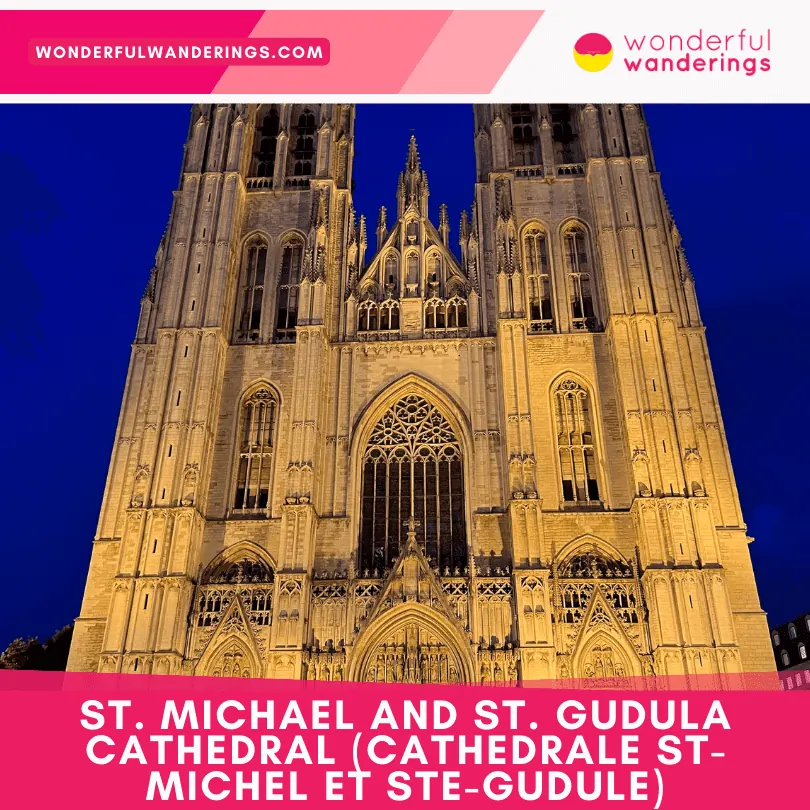
5. Mini-Europe
Mini-Europe is a park located in Brussels, Belgium that showcases a unique miniature world of European wonders. The park features over 350 meticulously crafted replicas of famous monuments from the 27 European Union member states, including the United Kingdom. These architectural marvels are reproduced at a scale of 1/25, allowing visitors to admire their intricate details. Walking through Mini-Europe, visitors can explore a diverse array of landmarks, from the Cathedral of Santiago de Compostela to the Grand Palace of Brussels. As visitors stroll through the park, they’ll encounter bonsai trees, flower-filled groves, and dwarf trees that enhance the surrounding's beauty. The attention to detail is remarkable, with thousands of lifelike figurines and animations bringing the miniature world to life. Visitors can witness the eruption of Mount Vesuvius or marvel at the takeoff of the Ariane rocket. Mini-Europe aims to foster exchange and evoke emotions during a visitor's visit, which lasts between one and a half to two hours. It has welcomed over 10 million visitors who have explored its trails. The park's commitment to artistry is unparalleled, with each monument meticulously selected for its architectural quality and European symbolism. The level of craftsmanship is evident in the intricate replicas. For instance, the Cathedral of Santiago de Compostela required an astonishing 24,000 hours of work to recreate. The Grand Palace of Brussels statues are meticulously painted with real gold leaves. In the Seville arena, 6,000 figurines were carefully placed to recreate the atmosphere of a bullfight. The replica of Big Ben stands at an impressive height of 4 meters (13 feet).
Mini-Europe offers practical information for visitors. The park is open every day from 10:00 am to 6:00 pm, with the last entrance at 5:00 pm. Admission rates are 19 € ($22, £16) for adults and 13.50 € ($16, £12) for children under 12 years old. Children below 115 cm (3 feet and 9 inches) in height can enter for free. Visitors can make arrangements in advance if planning to visit with a group of at least 20 people. However, group tickets and tickets for school groups (minimum 15 persons) and groups of persons with disabilities (minimum 10 persons) are non-exchangeable and non-refundable. Visitors have the option to purchase their Mini-Europe tickets in advance on their website and receive a promo code that grants a 50% reduction on the train ticket to Brussels, but it is not valid for combination tickets.
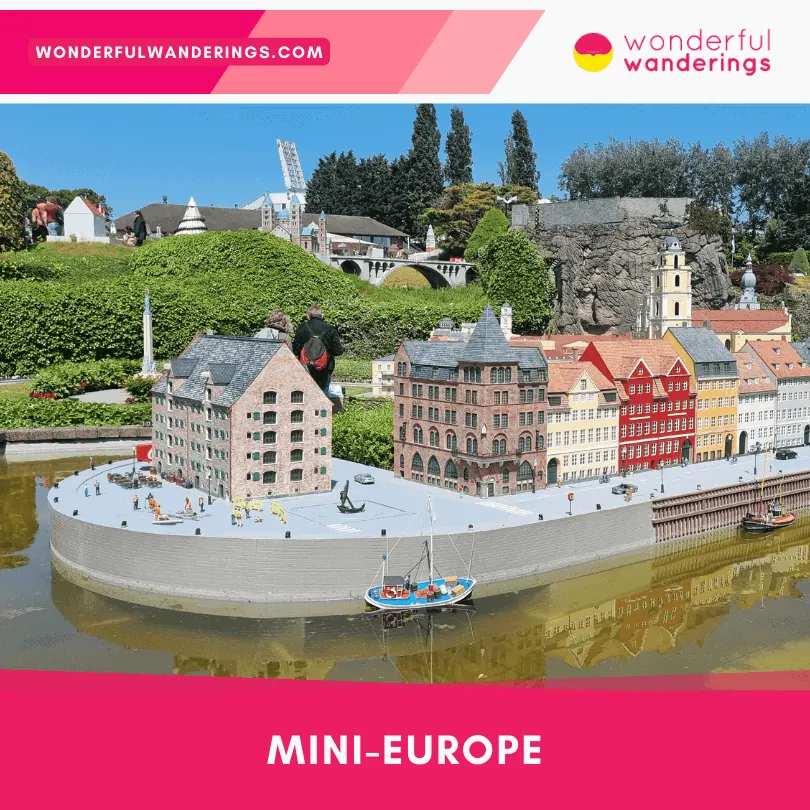
6. Musical Instruments Museum (MIM)
The Musical Instruments Museum (MIM) in Brussels, Belgium, is a known destination for music lovers and cultural explorers. Housed in the splendid Old England building, an exquisite example of Art Nouveau architecture, the MIM has a world-famous collection of musical instruments. The history of the MIM dates back to 1877, when the collection was established with the purpose of showcasing early musical instruments to students. Over the years, the collection grew significantly, thanks to the efforts of dedicated curators and generous donors. The MIM's collection now comprises over 8,000 instruments, making it one of the largest collections worldwide. The museum's location in the former Old England building, constructed in 1899, enhances its historical beauty. The MIM is on Rue Montagne de la Cour/Hofberg, adjacent to the Mont des Arts and across from the Royal Palace. The museum is easily accessible by public transportation.
Visiting the MIM is a delightful experience, with practical information provided to ensure a pleasant visit for all guests. Visitors have the option to purchase tickets per time slot at the reception desk or online. Printing the tickets in advance or having them ready on a mobile device is recommended. The admission fee is 15 € ($17, £13) for adults aged 19 to 64, and discounted rates are available for seniors, students, teachers, and unemployed individuals. Children and adolescents between 0 to 18 years old and certain cardholders can enjoy free admission. Multimedia guides are included in the entrance fee, allowing visitors to enhance their experience. Photography is permitted in the galleries, but flash photography is not allowed. Lockers are provided for convenience, and for larger items, there is an unattended cloakroom on the ground floor. The museum is fully accessible to visitors with reduced mobility, ensuring inclusivity. The museum shop is accessible to everyone free of charge, offering a range of souvenirs and musical treasures. However, the restaurant on the top floor is currently closed for renovation.
The MIM's opening hours provide enough time for exploration. The museum welcomes visitors from 09:30 am to 05:00 pm from Tuesday to Friday, while on Saturdays, Sundays, and public holidays, the opening hours are from 10:00 am to 05:00 pm. Ticket sales end one hour before closing time, at 04:00 pm, while the museum closes at 05:00 pm, and the galleries close at 4:45 pm. The museum closes on December 24th and 31st at 03:00 pm, with the last ticket sales at 02:00 pm.
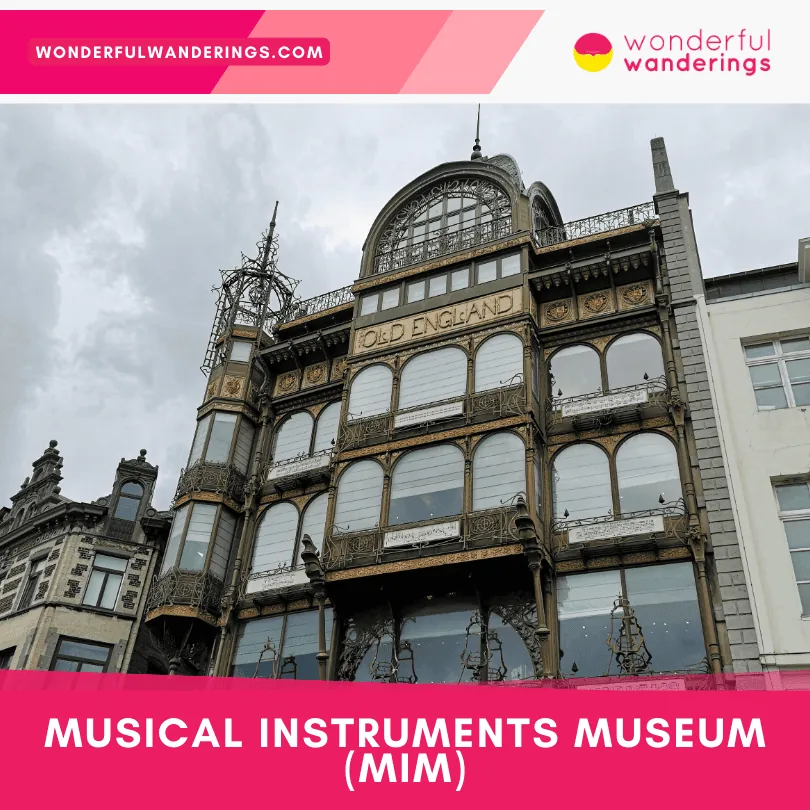
7. Town Hall (Hôtel de Ville)
The Town Hall (Hôtel de Ville) is a historic civic building located in the city center. It serves as the administrative center for the local government and is an important symbol of Brussels' civic pride. The Town Hall's architecture features a striking Gothic style, with tall spires and intricate detailing. It is a popular tourist attraction, allowing visitors to admire its impressive façade and explore its interior, which includes grand halls and ornate rooms. The building also hosts official ceremonies and events, contributing to the city's cultural and civic life.
The Town Hall's central location makes it easily accessible to visitors. It is in the heart of Brussels, near other notable landmarks such as the Grand Place. The nearest metro station, Bourse, provides convenient transportation connections. Admission to the Town Hall is free, allowing visitors to appreciate its historical and architectural significance. It offers an opportunity to delve into Brussels' rich heritage and discover the Town Hall's important role in the city's governance and civic traditions.
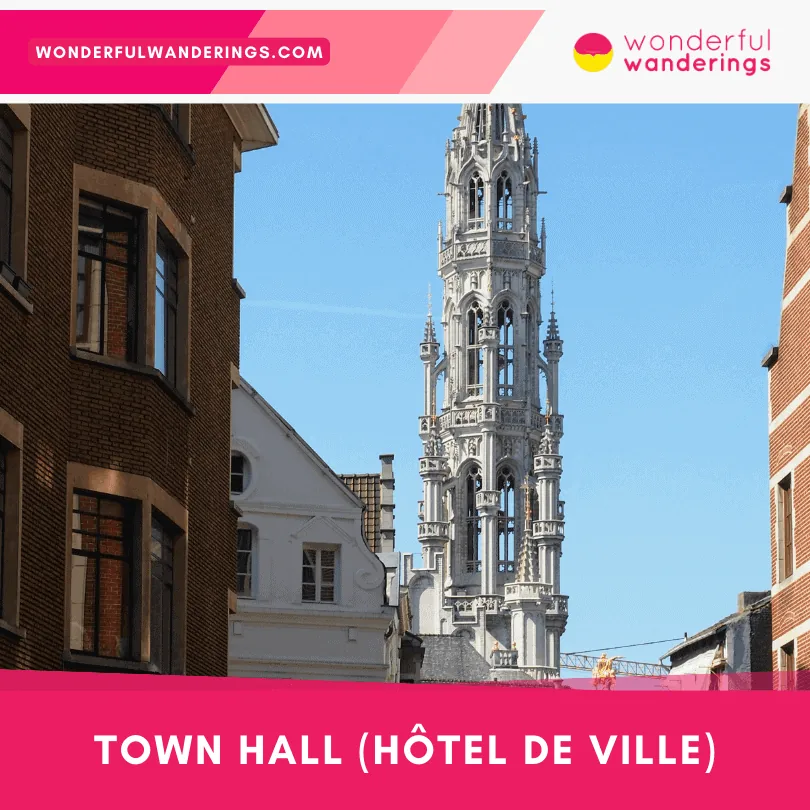
8. Parc du Cinquantenaire
Parc du Cinquantenaire is a large urban park in Brussels. It spans an expansive area and offers visitors a variety of recreational opportunities. The park features wide open spaces, tree-lined paths, and landscaped gardens, making it ideal for leisurely walks or picnics. The centerpiece of the park is the monumental Triumphal Arch, which enhances a sense of grandeur and historical significance. The Parc du Cinquantenaire also houses several museums, including Autoworld and the Royal Museum of the Armed Forces and Military History. The Parc du Cinquantenaire is easily accessible and located not far from the city center. It is well-connected by public transportation, with nearby metro and tram stations providing convenient access. The park is open to the public, and admission is free, allowing visitors to enjoy its serene atmosphere and explore its attractions at their own pace.
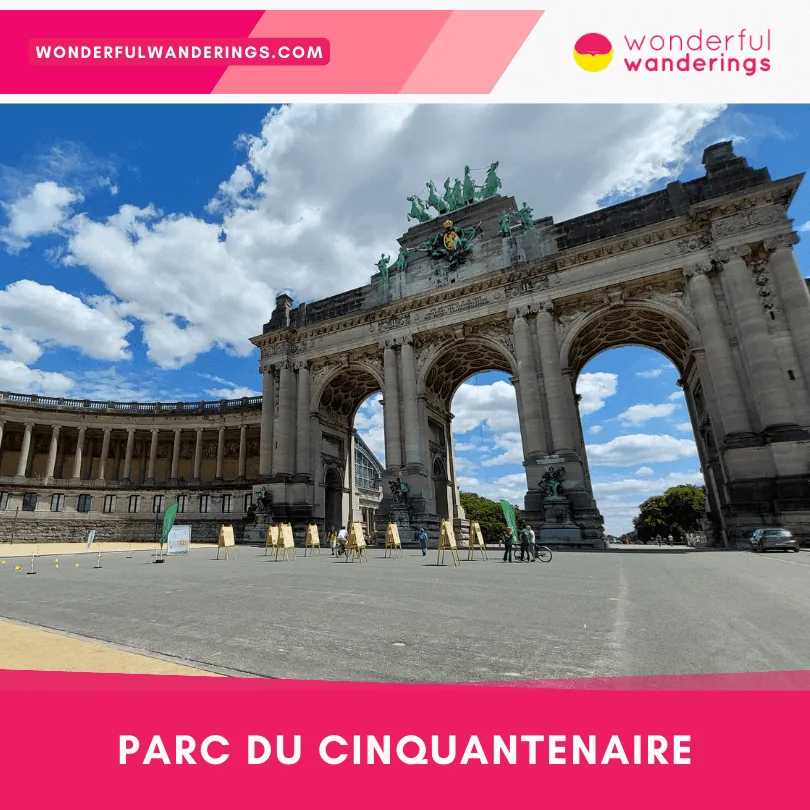
9. Autoworld
Autoworld is a national car museum housed in a historic building within the Parc du Cinquantenaire. The Museums features a permanent display of over 300 vehicles amd visitors can explore the evolution of the automobile industry from as early as 1896. The museum offers a fascinating journey through time, covering significant periods such as La Belle Époque, World War I, the Golden Twenties, the thirties, World War II, and the fifties, up to the present day. Autoworld has featured an impressive collection of cars, trucks, motorcycles, and even animal-drawn vehicles since its establishment in 1986. The exhibits include from horse-drawn carriages to classic sports cars from the 1960s. One of the highlights of Autoworld is the Belgium at Autoworld section, which pays tribute to the roots and history of the Belgian car industry. It also showcases cars owned by the Belgian Royal Family, micro and bubble cars, and exhibits dedicated to car design. Throughout the year, the museum hosts temporary exhibitions that delve into various automotive themes, ensuring that there is always something new and exciting to discover. These exhibitions attract a wide audience, drawing car lovers and history buffs.
Autoworld is easily accessible for visitors within the Parc du Cinquantenaire. Its opening hours are Monday to Thursday from 10:00 am to 05:00 pm and Saturdays and Sundays from 10:00 am to 06:00 pm, while it is closed on January 1st and December 25th. Admission prices at Autoworld are 15 € ($17, £12) for Adults, 7 € ($8, £6) for Children aged 6 to 11, 11 € ($13, £9) for Students, and 13 € ($15, £11) for Senior citizens, while Children under 6 can enter for free. It also offers a museum shop where visitors can find automotive-related souvenirs and a café to grab a refreshment during their visit.
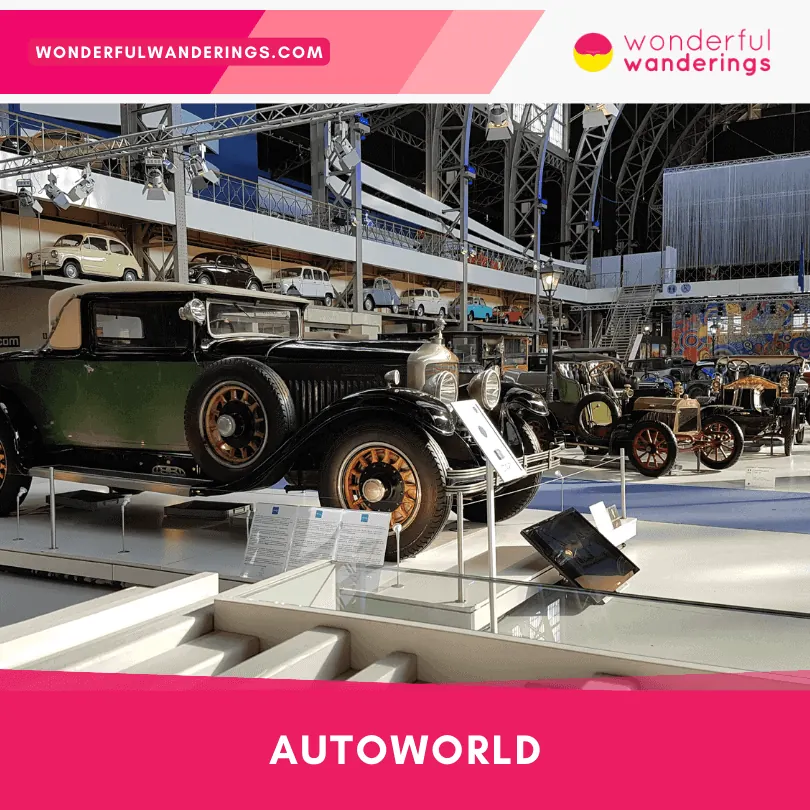
10. Royal Museums of Fine Arts of Belgium
The Royal Museums of Fine Arts of Belgium offers a diverse and extensive collection of artwork spanning from the 15th to the 21st centuries. The museums showcase Western art, including works by Belgian and former Southern Netherlands artists. The collection primarily consists of paintings, sculptures, drawings, and prints, with some decorative arts, furniture, and a small number of non-European works. The online catalog features over 10,000 representative pieces from the collection, though it is only available in Dutch or French.
The Royal Museums of Fine Arts of Belgium’s history dates back to 1803, founded as the Museum of Fine Arts of Brussels. The collection grew over time through various acquisitions, including works seized during the French Revolutionary period and those obtained from Belgian artists. Today, the Royal Museum contains over 20,000 drawings, sculptures, and paintings, making it the most popular art institution and the most visited museum complex in Belgium. The museums consist of six distinct institutions: the Old Masters Museum, the Fin-de-Siècle Museum, the Magritte Museum, the Wiertz Museum, the Meunier Museum, and the Modern Museum. Each museum offers a unique perspective on art history and showcases different periods and styles. Prices vary depending on the type of ticket and the specific museums visitors wish to explore. The Fine Arts: Old Masters + Fin-de-Siècle Combi ticket costs €10 ($11, £9), while the Fine Arts + Musée Magritte Museum ticket costs €15 ($17, £14). Discounts are available for seniors, students, people with disabilities, and other eligible groups, while Thalys passengers, children, and youth not in a school group and certain individuals with valid documents are granted free admission.
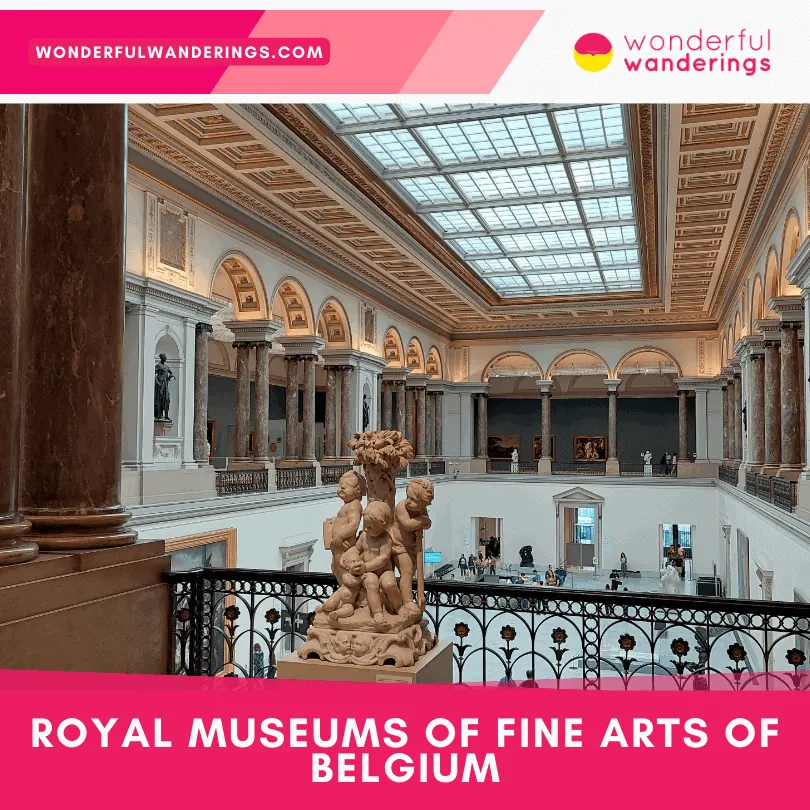
11. Museum of Natural Sciences
The Museum of Natural Sciences is a famous institution dedicated to studying natural history and exploring our planet's species. It was established in 1846, was part of the Royal Belgian Institute of Natural Sciences (IRSNB), and offers visitors a wealth of educational opportunities. The museum's collection is vast, with over 38 million specimens that showcase the diversity of life on Earth. One of the main highlights of the museum is its dinosaur exhibition, which is widely recognized as one of the most impressive in Europe. The dinosaur hall, occupying the largest space of its kind on the continent, features an array of fossilized skeletons, including the famous Iguanodon specimens discovered in 1878 in a coal mine in Bernissart, southern Belgium. The museum also offers a comprehensive exploration of species evolution with over 600 fossils and 400 animal displays, where visitors can observe how various creatures have adapted to changes in the climate throughout history. The collection includes contemporary animals that still roam our planet, such as bears, lizards, foxes, and elephants, and species that have been extinct for thousands of years. The Museum of Natural Sciences also houses the Mammal Gallery, showcasing recent and extinct mammals, including diverse species. Visitors can explore the North and South Pole exhibit, which offers a unique perspective on the distinct environments found at these remote locations, with a glass tunnel that allows visitors to observe the contrasting worlds of the Arctic and Antarctica.
For those fascinated by marine life, the Whale Hall is a must-visit. It features the skeletons of whales, dolphins, walruses, seals, and other marine creatures. It also sheds light on these majestic animals' economic significance and historical interactions with human societies, along with another intriguing display, the Shell Gallery, which houses a tropical aquarium and an extensive collection of shells. It is one of the largest shell collections globally, with over 9 million specimens gathered by dedicated researchers. It regularly hosts temporary exhibitions that offer interactive and engaging experiences for visitors of all ages. The Museum of Natural Sciences houses a research department dedicated to advancing human understanding of natural phenomena and contributes to ongoing scientific studies. The museum also has a public exhibit department that ensures visitors have access to the latest scientific findings and discoveries.
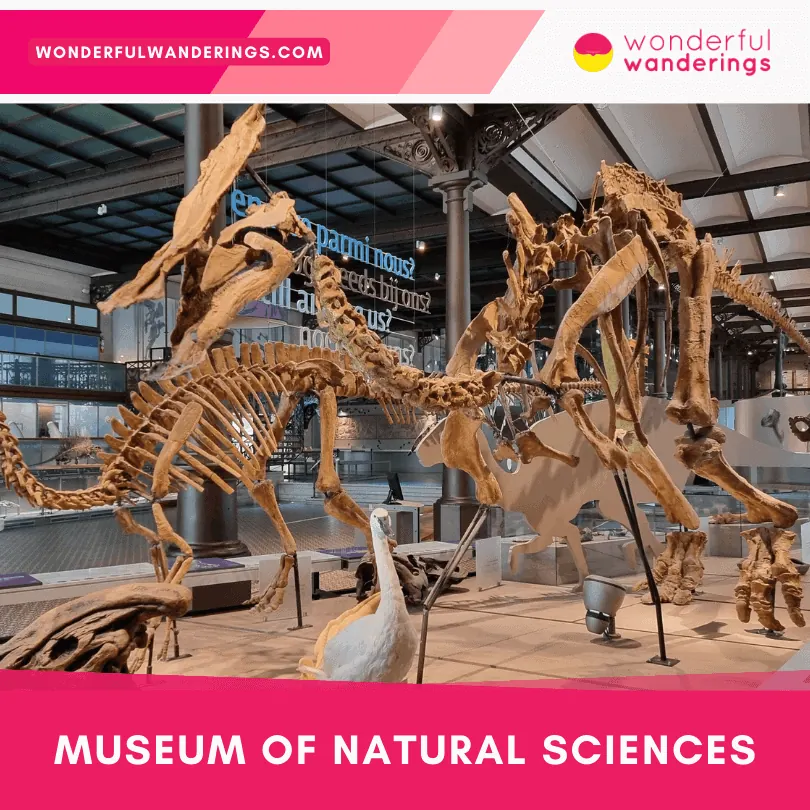
12. Notre-Dame des Victoires au Sablon
Notre-Dame des Victoires au Sablon, also known as Onze-Lieve-Vrouw ter Zege op de Zavel, is a religious building located on the outskirts of Brussels, Belgium. It has a historical background dating back to the 14th century. The church gained prominence when a miraculous statue of the Virgin Mary arrived in 1348, attracting devoted followers and leading to the construction of a new sanctuary in the 15th century. The construction process spanned over a century, with the choir completed in 1435 and the north transept likely finished around 1450. However, the construction was interrupted due to political instability following the death of Duke Jean I in the 15th century. It resumed towards the end of the century, resulting in a nave with seven bays, with the planned tower for the last two bays being never built.
During the 16th century, Notre-Dame des Victoires au Sablon faced challenges as it was sacked by iconoclasts, resulting in the destruction of the statue of the Virgin Mary. However, from 1512 to 1515, the church received an artwork called “Le Retable de Saint Thomas et Saint Matthieu” by Bernard van Orley, donated by the Masons and Carpenters' Guild. In the 17th century, two chapels were constructed by the Tour and Taxis family, namely the Sainte-Ursule Chapel to the north of the choir and the Saint-Marcou Chapel to the south. The French regime spared the church from anti-religious zeal during the revolution, and it was temporarily closed but later reopened as a subsidiary of the Cathedral of St. Michael and St. Gudula. In the 19th century, the church underwent restoration work after being freed from surrounding buildings. Architect Jean-Baptiste Bethune initiated restoration plans in 1870, but they were met with resistance due to their radical nature. Consequently, more modest repairs were undertaken, such as restoring the side aisles and reopening a previously blocked window on the facade. The restoration work continued under the direction of Ernest Van Humbeek and his son Victor from 1895 to 1912. They transformed the church, adding spires, pinnacles, and openwork balustrades. They also incorporated perpendicular arches and buttresses with pinnacles. From 1917 to 1937, the architect Victor Horta oversaw the installation of 57 statues by 27 different sculptors.
The interior of Notre-Dame des Victoires au Sablon features a choir illuminated by eleven stained glass windows, each measuring 14 meters (45 feet) in height. The lancet windows are separated by painted trilobed arcades, while the lower sections of the windows display painted trefoil arches depicting various saints.
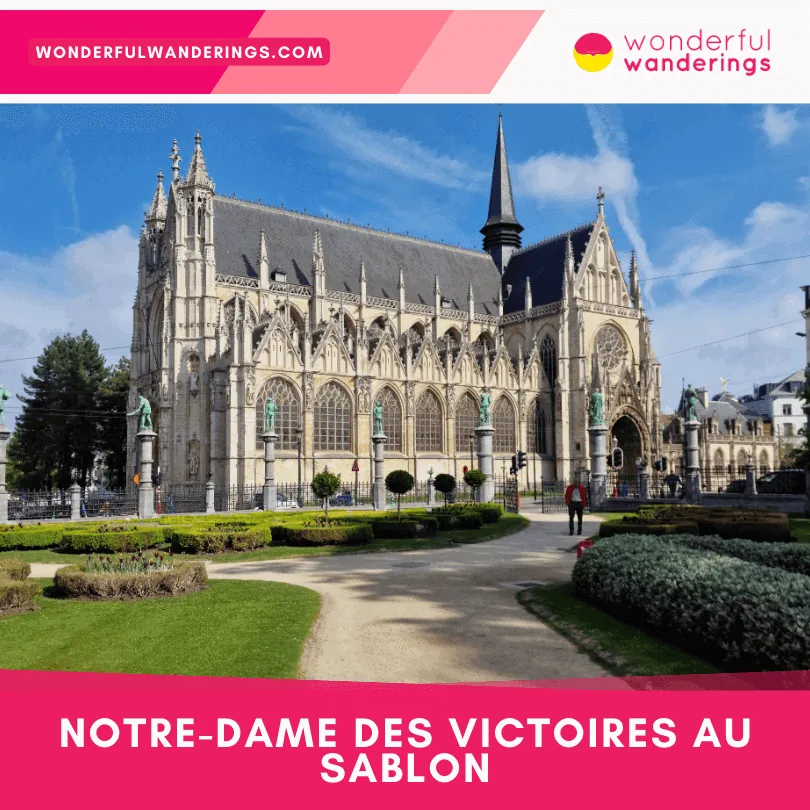
13. Parlamentarium
The Parlamentarium is Europe's largest parliamentary visitors center located in Brussels, Belgium. It offers a unique opportunity to explore the world of the European Parliament and has already welcomed over 2 million visitors. The center provides a variety of engaging and informative activities that showcase the path toward European cooperation and the important role of the European Parliament in addressing today's challenges. Visitors are guided by multimedia guides in 24 languages, leading them through the European Parliament's heart. These guides explain how the Parliament works and highlight the efforts of its Members in tackling pressing issues. It is fully accessible for visitors with disabilities, ensuring that everyone can fully enjoy the experience. Visitors are advised to book their visit in advance, either online or by phone, to secure their spot. The Parlamentarium is open from 09:00 AM to 06:00 PM on weekdays and from 10:00 AM to 06:00 PM on weekends. The last entry is allowed 30 minutes before closing time.
The Parlamentarium is open seven days a week, and admission is free of charge. Visitors of all ages can embark on a self-directed tour that lasts 90 minutes. The center offers a range of captivating exhibits and interactive displays that bring European history, integration, and politics to life. One of the highlights is the cinema, where visitors can enjoy a 360-degree view of Europe and its Parliament. Through captivating audiovisual presentations, they can learn about the legislative process, making laws, and the significance of European politics. The Parlamentarium also features a photo booth where visitors can capture memories of their visit and stay up-to-date with real-time updates on the activities taking place in the European Parliament. The Parlamentarium also has an interactive floor map that takes visitors on a virtual tour around Europe, showcasing over 100 stories that highlight the diversity of the continent. In a cozy living room setting, visitors can discover firsthand accounts of how the European Union impacts people's daily lives in their own words, providing a personal and relatable perspective.
When it comes to transportation, the Parlamentarium is conveniently located near public transport options. The Brussels-Luxembourg train station serves the European Parliament, and several bus and metro lines stop nearby. Visitors can easily reach the center using public transportation, and there are designated pick-up and drop-off areas for buses.
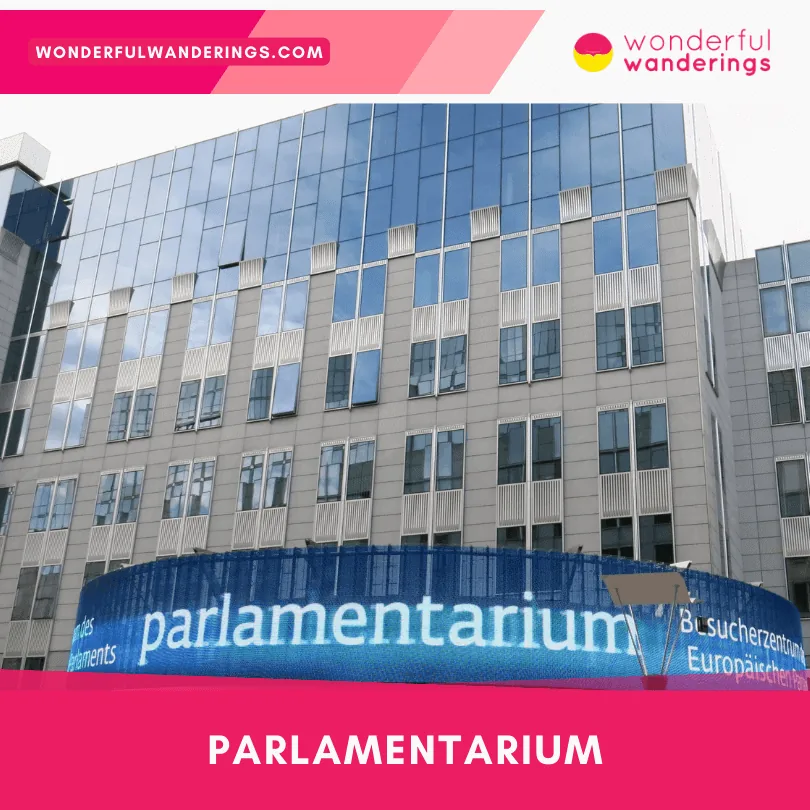
14. Guild Houses
The Guilds of Brussels were historic craft associations in Brussels, Belgium, that played a dominant role in the city's economic life during the late medieval and early modern periods. These guilds, known as the Guildes de Bruxelles in French and Gilden van Brussel in Dutch, were organized into the Nine Nations of Brussels, or Neuf Nations de Bruxelles in French and Negen Naties van Brussel in Dutch. They represented various crafts and trades and held significant influence in the city's governance. The guilds, along with the Seven Noble Houses, formed the fabric of the city. The guilds were not limited to specific trades but were grouped under nine distinct “nations.” These nations included the Nation of Our Lady, Nation of St Giles, Nation of St Lawrence, Nation of St Gery, Nation of St John, Nation of St Christopher, Nation of St James, Nation of St Peter, and Nation of St Nicholas. Each nation encompassed a range of guilds, such as butchers, greengrocers, tailors, bakers, painters, and sculptors. Together, they contributed to the diverse economic landscape of Brussels. The guilds' influence extended to the city government, where their representatives held positions alongside the lineages of the nobility. They were also granted membership in the Great Council, an important institution in Brussels. The legacy of the guilds is still visible in the city today, with remnants of their buildings forming part of the UNESCO-listed Grand Palace. The guilds' prominence began to disappear with the onset of societal changes and the French Revolution. In 1795, during the revolution, the guilds in Brussels and throughout Belgium were abolished. The furniture and archives of the Brussels guilds were subsequently sold at a public auction on the Grand Place in August 1796.
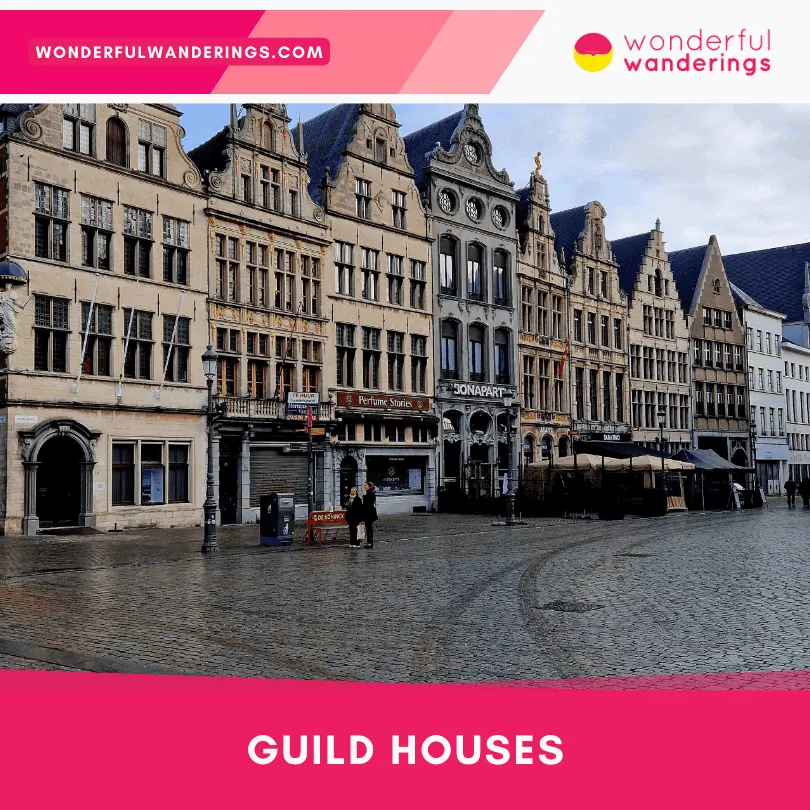
15. Royal Museum of the Armed Forces and of Military History
The Royal Museum of the Armed Forces and of Military History, commonly referred to as the Military Museum, houses a diverse collection of artifacts and exhibits related to the armed forces and military history. It provides visitors with a comprehensive understanding of Belgium's military past and its contributions to global conflicts. The museum's extensive collection includes weaponry, uniforms, vehicles, aircraft, and other military artifacts. Visitors can explore the museum's various sections, each dedicated to a specific historical period or theme. These sections cover topics such as World War I, World War II, the Cold War, and Belgium's colonial history. The museum offers a valuable educational experience, allowing visitors to gain insights into the experiences of soldiers, the evolution of military technology, and the impact of warfare on society. It hosts temporary exhibitions, lectures, and special events throughout the year, further enriching the visitor experience.
The Royal Museum of the Armed Forces and of Military History is housed in the historic Jubilee complex, which was originally constructed in 1880 to celebrate the fiftieth anniversary of Belgian independence. Admission to the Royal Museum of the Armed Forces and of Military History costs 10 € ($12, £9) for adults and reduced rates for students and seniors. The museum is easily accessible by public transportation and is located in proximity to several bus and tram stops. It is a popular tourist destination and a valuable resource for researchers, historians, and military lovers.
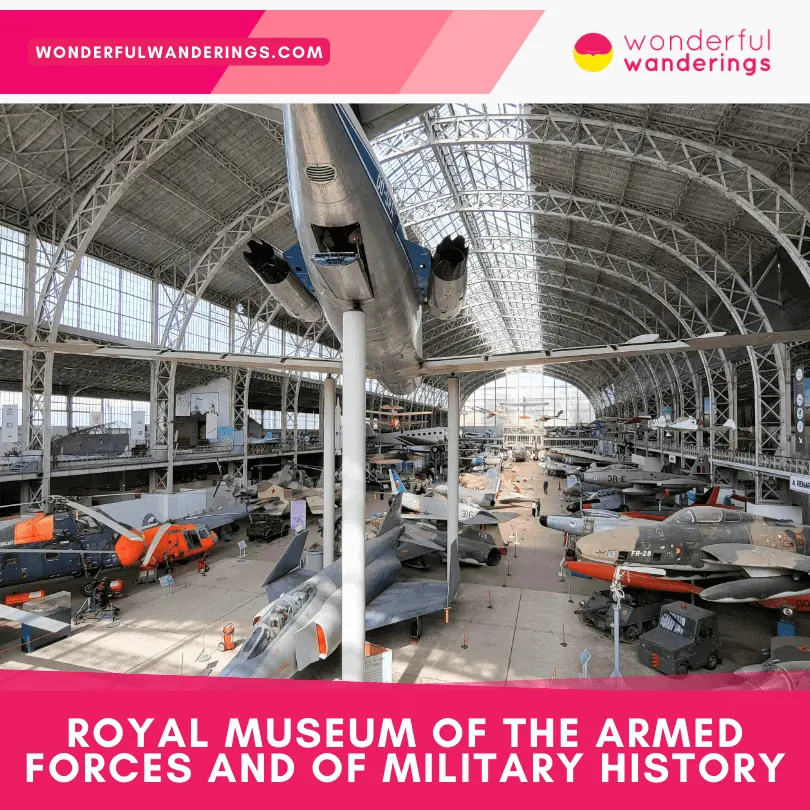
Bozar Brussels, also known as the Centre for Fine Arts, is a cultural institution in Brussels, Belgium. It is currently presenting a special program to commemorate the 30th anniversary of Frank Zappa's death, featuring talks, concerts, an exposition, and films dedicated to the eccentric rock musician, which will take place on December 2nd and 3rd. Bozar also hosts other exciting events this autumn, including the Nocturne November, YABBA – Maria Jerez, Angélique Kidjo & Yo-Yo Ma, State of Cinema 2023 – Alice Diop, and an exhibition on the works of Antoni Tàpies, a popular Spanish artist of the 20th century. Visitors to Bozar can explore a captivating collection of drawings, surrealist paintings, and monumental matter pieces by Antoni Tàpies, offering a unique perspective on his artistry. This exhibition provides a rare opportunity to witness Tàpies' work in Belgium until January 7th, 2024.
Bozar also offers a wide range of activities for both young and old, whether visiting alone or in a group. The institution provides various educational programs and guided tours catering to kids, youngsters, and education groups. These programs aim to engage and inspire visitors through interactive learning experiences. It also provides spaces that can be booked for private events. Guests can enjoy the prestigious ambiance of Bozar while attending concerts, exhibitions, or exclusive exhibition viewings.
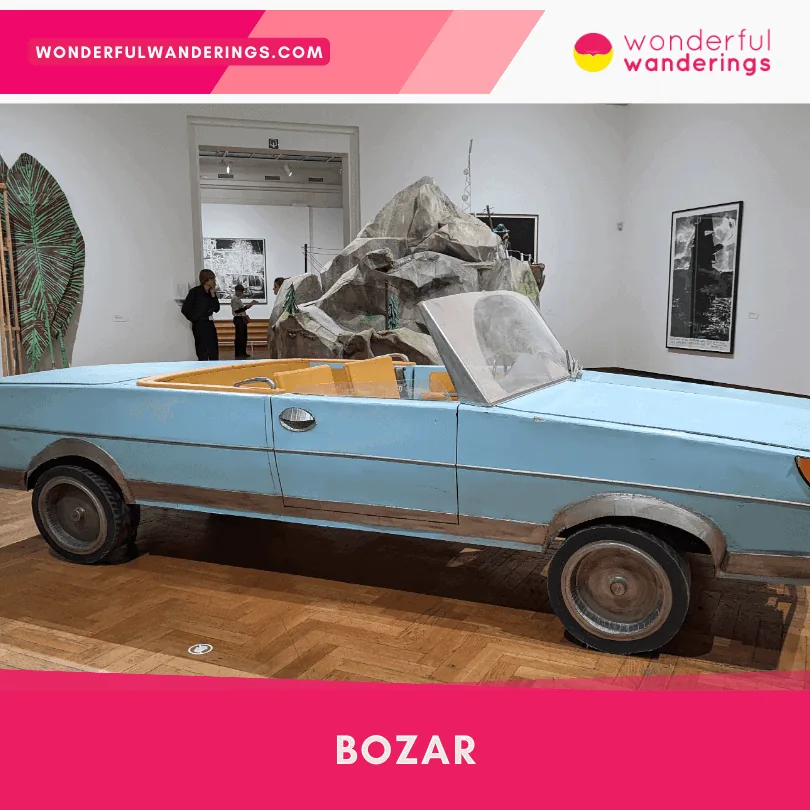
17. Jeu de Balle flea market
The Jeu de Balle flea market is located in the Marolles neighborhood. It takes place every day on Place du Jeu de Balle, also known as Vossenplein. The square gets its name from the ball games that were played in the area in the 19th century. In 1873, the flea market moved to Place du Jeu de Balle from Place Anneessens. Visitors won't find food for sale at the Jeu de Balle flea market, but they’ll discover a wide variety of trinkets, old photographs, vintage furniture, and second-hand clothing. The market offers a unique and inclusive atmosphere where scrap dealers, activists, and traders from diverse backgrounds have been making a living for many years. It is home to a beautifully restored fire station and one of Brussels' finest swimming pools. Visitors will find numerous cozy eateries and typical Brussels cafés, where they can take a break and enjoy the local cuisine.
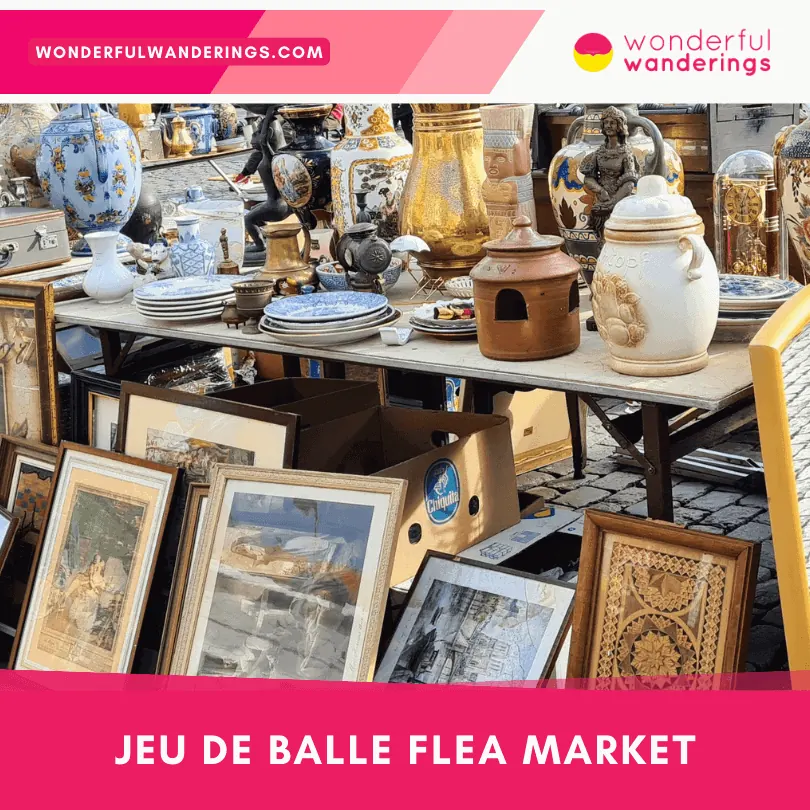
18. Manneken Pis
Manneken Pis, officially known as “Little Pissing Man”, is a famous landmark in Brussels, Belgium. It is a 55.5-centimeter (21.9 inches) fountain sculpture that has been a symbol of the city since its installation in 1618 or 1619. The statue depicts a little boy urinating into a basin, and it holds a significant place in Brussels' history and culture. The statue's name, Manneken Pis, is derived from the local dialect of Brussels, where “manneke” means a small man or a little boy. Over time, the statue has been given various nicknames, including Petit Julien in French and Julianske in Dutch. These names refer to a different fountain, the “Little Julien”, which was located nearby but has since disappeared. Manneken Pis has witnessed significant historical events and has become a beloved Brussels symbol. It survived the bombardment of 1695 and became a source of pride for the people of Brussels. The statue's original location on the street changed over time, and in 1770, it was integrated into a new decorative setting with a stone niche. The structure was further modified in the 19th century, and railings were added to protect the statue.
The statue has had its share of misfortunes. It has been stolen and damaged multiple times throughout history. Legend has it that the statue was once stolen and found in the town of Geraardsbergen, leading the people of Brussels to gift the town a replica. In 1817, the original statue was broken into pieces during another theft but was restored and placed on a new base. In the 20th century, Manneken Pis faced more challenges. There were attempted thefts in 1955 and 1957, and the statue was actually stolen in 1965, leaving only the feet and ankles behind. It was eventually recovered and restored, and the original version is now exhibited in the Brussels City Museum. Manneken Pis continues to be a beloved and iconic symbol of Brussels and Belgium. Its self-deprecating nature and humorous appeal represent Belgian culture and folklore. The statue's wardrobe consists of around one thousand regularly changed and displayed costumes. Since 2017, these costumes have been exhibited in a dedicated museum called Garderobe Manneken Pis.
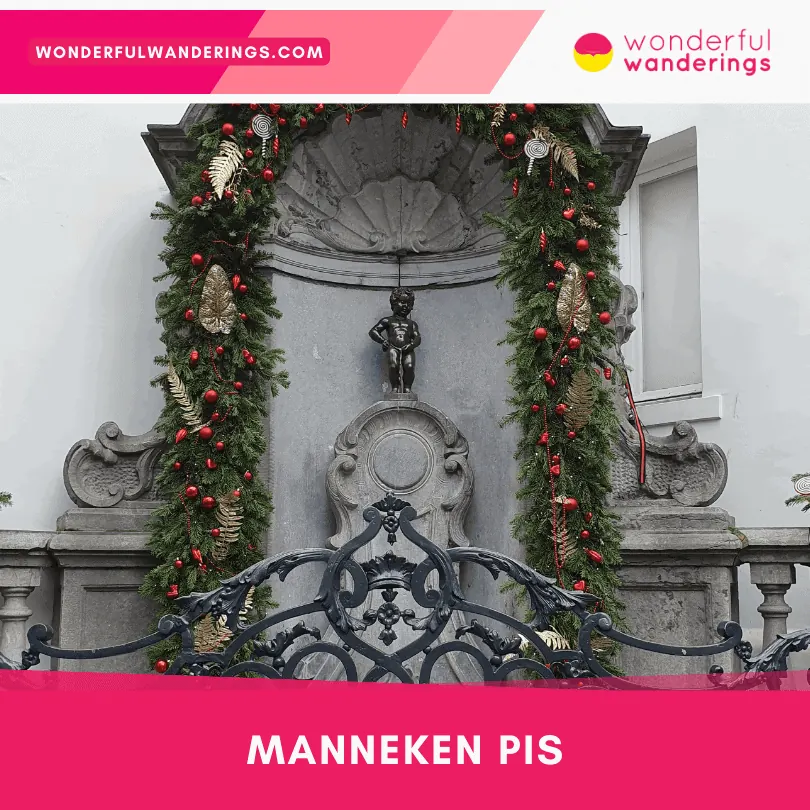
Where is Brussels?
Brussels, also known as Bruxelles (French) or Brussel (Dutch), is the capital city of Belgium. It is located in the Brussels-Capital Region, Belgium's administrative region. Brussels is in the central part of the country and serves as the de jure national capital. The city covers an area of 162.4 square kilometers (62.7 square miles). The official languages spoken in Brussels are French and Dutch. Brussels is a multicultural and diverse city with a population consisting of various ethnic groups.
What is the history of Brussels?
Brussels, the capital of Belgium and the Brussels-Capital Region, has a rich history dating back to ancient times. The earliest known reference to Brussels dates to the 10th century when it was called Bruocsella, meaning “settlement in the marshes”. It was part of Lower Lotharingia, later known as the Duchy of Brabant. The city's development was influenced by its location on the Senne River and its position along an important east-west economic route.
During the 12th to 14th centuries, Brussels grew into one of the major towns of the Duchy of Brabant. Its economy thrived on the manufacturing and export of luxury fabrics. A few merchant families gained significant political power and controlled business and municipal affairs. Popular uprisings in the 13th and 14th centuries led to a more balanced system of government, dividing powers between the patrician families and emerging guilds.
In the 14th century, Brussels faced significant events such as the invasion by the Count of Flanders, the Burgundian period, and repeated invasions by French armies in the 17th century. The city underwent architectural transformations with the construction of churches, the Town Hall, and fortified walls. Brussels became a significant administrative, artistic, and commercial center, exporting its products in various directions.
In the 19th century, Brussels experienced important changes. It became the capital of newly independent Belgium following the revolution of 1830. The city's political and administrative role expanded, and it became a central node in Belgium's road and railway network. Modernization efforts included the demolition of city walls, the introduction of public transport, and the development of new residential districts.
Throughout the 19th century, Brussels remained a prominent player in Belgian national politics and continued to grow as an economic and financial center. Its population expanded, and the city underwent further infrastructure and urban development improvements. Today, Brussels stands as a historically significant capital city, blending its rich past with its modern role as the center of European politics and culture.
What language is spoken in Brussels?
The main languages spoken in Brussels are French and Dutch. Brussels is a multilingual city due to the city's complex history and political structure. French is predominantly spoken in the Brussels-Capital Region, while Dutch is spoken in the northern part of the city.
French became a prominent language in Brussels due to the influence of the French-speaking ruling elite during different periods of history. It was also the language of the Belgian monarchy and the Belgian government. Dutch, on the other hand, has historical roots in the region and is one of Belgium's official languages. English and other languages are also spoken, particularly in international and diplomatic circles.
What timezone is Brussels on?
Brussels is located in the Central European Time (CET) zone, which is UTC+1 during standard time and UTC+2 during daylight saving time. The decision to adopt the Central European Time for Brussels is based on its geographical location in Western Europe and its alignment with neighboring countries. It allows for better coordination and synchronization with other cities and regions within the same time zone and facilitates communication, transportation, and trade between Brussels and other European cities while adopting daylight saving time during the summer months, which helps maximize daylight hours and optimize energy usage. It enables efficient scheduling of activities, such as business operations, transportation services, and international collaborations, while maintaining consistency with the broader European timekeeping system.
How many people live in Brussels?
The population of Brussels is 1,235,192 people. As the capital city of Belgium and the administrative center of the Brussels-Capital Region, it is densely populated and home to a significant number of residents. The population of Brussels consists of a diverse mix of individuals from various cultural, linguistic, and ethnic backgrounds.
What are the most interesting facts about Brussels?
Listed below are the most interesting facts about Brussels :
- Timezone: Brussels operates on Central European Time (CET), which is UTC+1 during standard time and UTC+2 during daylight saving time. Travelers need to consider the time difference when planning their activities and coordinating with others in different time zones.
- Language: The official languages of Brussels are Dutch, French, and German. Dutch is primarily spoken in the northern part of the city, while French is more commonly used in the southern part. English is also widely understood and spoken, especially in tourist areas and among the younger population. Visitors can expect to encounter multilingual signage and communication throughout the city.
- Currency: The Euro (EUR) is the currency used in Brussels and throughout Belgium. Travelers should obtain some local currency for daily expenses, such as cash for small purchases or public transportation. Credit and debit cards are widely accepted in most establishments, including hotels, restaurants, and shops.
- Power Plugs: In Brussels, the standard voltage is 230 volts, and the frequency is 50 hertz. The power plugs and sockets used are of Type E, which have two round pins and a hole for grounding. Visitors from countries with different plug types will need a travel adapter to charge their electronic devices or use appliances in Brussels. It is recommended to check the plug type compatibility and bring the necessary adapters to ensure seamless use of electrical devices.
What is Brussels famous for?
Brussels is famous for its impressive landmarks, such as the Grand Place, a UNESCO World Heritage Site known for its medieval buildings, and the Atomium, which is a unique structure representing an iron crystal magnified 165 billion times, is another iconic symbol of Brussels. Secondly, Brussels is known as the birthplace of Belgian waffles, which locals and visitors enjoy. The city is also celebrated for its delicious chocolates, with numerous chocolatiers offering a wide variety of delectable treats. Thirdly, as the headquarters of the European Union and NATO, diplomats, politicians, and representatives from around the world converge in Brussels to engage in discussions and negotiations, making it a significant center for global governance. Lastly, Brussels hosts numerous festivals throughout the year, showcasing diverse art forms, music, and performances. There are events to suit various interests, from the Brussels Summer Festival to the Winter Wonders Christmas market.
How long should you spend in Brussels?
2 days in Brussels as a city break is enough for visitors to explore Brussels. Firstly, Its compact size allows travelers to cover its major attractions and experience its unique atmosphere within a relatively short period. The central area of Brussels is easily navigable on foot, enabling visitors to move between landmarks, museums, and neighborhoods efficiently. Secondly, travelers can visit iconic sites within the timeframe, such as the Grand Place, the Atomium, and the Royal Palace, and explore the city's famous museums, including the Royal Museums of Fine Arts and the Magritte Museum. Lastly, Brussels gastronomy is a significant highlight, and a 2-day stay allows visitors to savor the city's culinary delights. From indulging in Belgian waffles and chocolates to sampling an extensive selection of craft beers, travelers can experience the flavors that make Brussels famous.
What to eat in Brussels?
Brussels offers a wide array of delicious dishes that should not be missed. Firstly, no visit to Brussels is complete without trying Belgium's most popular food , Belgian waffles. These delectable treats are light, crispy on the outside, and fluffy on the inside. They are often served with a variety of toppings, such as powdered sugar, fresh fruit, whipped cream, or chocolate sauce. Belgian waffles can be found in numerous street stalls, cafes, and specialty shops throughout the city. Secondly, Brussels is famous for its delicious chocolates. The city has a long-standing tradition of chocolate-making, and visitors can find plenty of chocolatiers offering exquisite creations. From pralines and truffles to chocolate-covered strawberries, a wide range of flavors and textures satisfy any sweet tooth. Visitors can sample chocolates from known chocolatiers like Pierre Marcolini, Neuhaus, or Godiva. Thirdly, Brussels is home to a beloved national dish known as moules-frites, which consists of mussels cooked in a flavorful broth and served with a side of crispy french fries and is often enjoyed with a glass of Belgian beer, making it a perfect pairing for a hearty meal. Many restaurants in Brussels specialize in moules-frites and offer different variations of sauces and seasonings to enhance the flavors. Lastly, Brussels is known for its beer culture. The city has an impressive selection of craft beers, ranging from traditional Belgian ales to innovative brews. Visitors can explore local breweries and beer bars to taste a wide variety of flavors, including fruity lambics, rich Trappist beers, and refreshing wheat beers. Sampling Belgian beer is an integral part of the Brussels experience and an opportunity to appreciate the craftsmanship and diversity of this beloved beverage.
What are the best restaurants in Brussels?
Listed below are the best restaurants in Brussels:
- Restaurant Le Rabassier: Restaurant Le Rabassier is a two-star Michelin restaurant that specializes in truffle dishes. The restaurant is located in an elegant Brussels house with a cozy and intimate atmosphere. Guests can choose from a five, six, or seven-course menu or order à la carte. Restaurant Le Rabassier is considered one of the best places to eat in Brussels .
- Comme Chez Soi: Comme Chez Soi is a one-star Michelin restaurant that has a rich history of almost a century. The cuisine is based on French and Belgian traditions, with a focus on products, flavors, and presentation. The restaurant is in a beautiful Art Nouveau building with a stained glass window and a wood-carved ceiling. Guests can enjoy a four, five, or six-course menu or order à la carte.
- Fin de Siecle: Fin de Siecle is a popular brasserie that serves authentic Belgian food in generous portions. The restaurant has a lively and casual atmosphere, with wooden tables, vintage posters, and a long bar. The menu offers a variety of dishes, such as carbonnade flamande, waterzooi, stoemp, and vol-au-vent. The restaurant also has a selection of Belgian beers and wines.
- Fanny Thai: Fanny Thai is a charming and friendly restaurant that serves delicious Thai and Vietnamese food. The restaurant has a colorful and modern interior, with Asian lanterns and paintings. The menu offers a variety of dishes, such as tom yum soup, pad thai, curries, and spring rolls. The food is fresh, spicy, and aromatic.
- Le Plattesteen: Le Plattesteen is a cozy and traditional bistro that serves classic and regional Belgian dishes. It is located in the gay quarter, near the Bourse and the Grand Place. The bistro has a retro and nostalgic decor, with wood paneling, mirrors, and neon signs. The menu features dishes such as vol-au-vent, moules-frites, and dame blanche. The food is simple, tasty, and comforting.
What are the best hotels in Brussels?
Listed below are the best hotels in Brussels:
- Hilton Brussels Grand Place: Hilton Brussels Grand Place is a four-star hotel located in the historic city center of Brussels, next to Central Station. It offers modern accommodation, an on-site spa center with fitness facilities, and 24-hour room service. It is only a 5-minute walk from the Grand Place and the Magritte Museum and a 20-minute drive from Brussels International Airport. Hilton Brussels Grand Place is considered one of the best hotels to stay in Brussels .
- Novotel Brussels City Centre: Novotel Brussels City Centre is a four-star hotel situated in the lively Saint Catherine district, 200 meters from De Brouckère Metro Station. It features soundproof rooms, a bar, a breakfast area overlooking the garden, and free access to a fitness center and an indoor jet-stream pool. It is a 15-minute walk from the Manneken Pis Statue and the Grand Place and a 20-minute train ride from Brussels-South Train Station. Guests can taste different kinds of waffles, mussels with chips, cuberdons, and jenever at the market.
- Novotel Brussels Centre Midi Station: Novotel Brussels Centre Midi Station is a three-star hotel located next to Brussels-South Train Station with Eurostar and Thalys terminals. It offers free WiFi, a snack bar, a 24-hour front desk, and a breakfast area. The rooms have an LCD TV, a minibar, and air conditioning. It is a 10-minute walk from the Grand Place and the Manneken Pis Statue and a 10-minute drive from the Brussels Expo. Guests can try the praline, a type of chocolate filled with cream, nuts, or caramel, invented by Neuhaus in 1912, and oysters and stoemp at the market.
- The President Brussels Hotel: The President Brussels Hotel is a four-star hotel located in the business district of Brussels, 500 meters from Brussels-North Train Station. It offers free WiFi, an à la carte restaurant, a snack bar, and free access to a fitness center. The rooms have a flat-screen TV, a minibar, and air conditioning. It is a 15-minute walk from the Grand Place and the Magritte Museum and a 10-minute drive from Brussels International Airport. Guests can savor culinary creations inspired by artists and craftsmen who exhibit their work in the hotel and Belgian chocolate, beer, fries, and pastries at the market.
- Hotel Le Plaza Brussels: Hotel Le Plaza Brussels is a five-star hotel set in a historic building dating back to 1930. It is located on one of the major roads that runs through the center of Brussels, near the Rue Neuve shopping district. It offers elegant rooms with high ceilings, luxurious tapestries, a bar, a restaurant, and a breakfast room. It also features a heritage-listed Moorish-style theatre and a fitness center. It is a 10-minute walk from the Grand Place and the Manneken Pis Statue and a 30-minute drive from Brussels Airport. Guests can enjoy gourmet food and a refined atmosphere at the market at the Brasserie Estére, including tartiflette, gluhwein, snails, and jenever.
What is the transportation like in Brussels?
Transportation in Brussels is efficient and well-developed, offering several convenient options for getting around the city. Firstly, Brussels has an extensive public transportation network, including buses, trams, and metros. The STIB/MIVB operates these services, allowing residents and visitors to navigate the city easily. The metro system consists of four lines that connect various parts of Brussels, making it a quick and reliable mode of transportation. Trams and buses cover a wider area and provide access to neighborhoods not served by the metro. The public transportation system operates from early morning until late at night, ensuring accessibility throughout the day. Secondly, Brussels is a walkable city with a compact city center, which makes it an enjoyable destination for pedestrians. Many of the city's main attractions, such as the Grand Place and the Royal Palace, are within walking distance of each other. Lastly, cycling is a popular mode of transportation in Brussels. The city has bike lanes and dedicated cycling paths, making it easy and safe to explore on two wheels. Visitors can rent bicycles from various bike-sharing services, such as Villo!, and enjoy the freedom to navigate the city at their own pace.
How do you get from Brussels airport to the city?
There are several straightforward options available to travel from Brussels Airport to the city center. Firstly, the most convenient way is to take the Airport Express train, which directly connects the airport to the city. Upon arrival at the airport, travelers can follow the signs to the train station located on the basement level (-1). The Airport Express train operates at regular intervals and offers a quick and efficient journey to the city center. The train stops at three main stations: Brussels Central, Brussels Nord (North), and Brussels Midi (South). Depending on the destination within the city, travelers can get off at the station that is most convenient for them. A one-way ticket costs 9 € ($10, £8.50), and the journey takes 20 minutes. Secondly, an alternative option is to take a taxi from the airport to the city center. Taxis are readily available outside the arrival hall, and there are designated taxi ranks. Travelers should ensure they use authorized taxis with official signage. The journey by taxi takes 30 minutes, depending on traffic conditions and the specific destination within the city. Taxi fares in Brussels are metered, and additional charges may apply for luggage or traveling during nighttime hours. A taxi ride from the airport to the city center costs 45 € ($52, £38). Lastly, a public bus service is available from the airport to the city for budget-conscious travelers. The STIB/MIVB bus line 12 departs from the airport and connects to the city center. The bus stop is located on level 0 (ground floor) of the airport. The journey takes 30 minutes, depending on traffic conditions, and the bus stops at various points in the city center. A one-way bus ticket costs 4 € ($5, £3.50).
How many airports are there in Brussels?
Brussels has one main airport serving the city and its surrounding areas. Brussels Airport, also known as Brussels Airport Zaventem, is the primary international airport in Brussels. It is located in Zaventem, 12 kilometers (7.5 miles) northeast of the city center. Brussels Airport is a major transportation hub, offering flights to various domestic and international destinations. It is well-connected to the city center by public transportation, including train, bus, and taxi services. Brussels South Charleroi Airport is another airport in Brussels. However, it is not in Brussels but in Charleroi, 46 kilometers (29 miles) south of the city center. It mainly serves low-cost airlines and offers flights to several European destinations.
Are Christmas markets crowded in Brussels?
Yes, Christmas markets in Brussels can be crowded. The Christmas markets in Brussels are popular attractions that draw a significant number of visitors during the holiday season. These markets offer a wide range of festive goods, including crafts, decorations, and delicious food and drinks. The lively atmosphere, seasonal offerings, and the beauty of the markets make them a popular destination for locals and tourists. As a result, the Christmas markets can experience high footfall and become crowded, especially during weekends and peak hours. Visitors should be prepared for the busy environment and plan accordingly to navigate the crowds and fully enjoy the festive atmosphere of the Brussels Christmas markets .
What are the best Christmas markets in Belgium?
Listed below are the best Christmas markets in Belgium:
- Brussels Winter Wonders: Brussels Winter Wonders is one of the largest and most popular Christmas markets in Belgium . It features an enchanting atmosphere with festive decorations, ice skating rinks, and a Ferris wheel. Visitors can browse through numerous stalls selling crafts, gifts, and traditional Belgian treats like waffles and chocolates.
- Bruges Christmas Market: The Bruges Christmas Market is known for its beautiful setting and lovely atmosphere. It is set against the backdrop of medieval architecture and offers a range of stalls selling handicrafts, seasonal decorations, and culinary delights. Visitors can enjoy ice sculptures, a Christmas tree maze, and a lively ice rink. The market takes place in the historic center of Bruges.
- Ghent Christmas Market: The Ghent Christmas Market takes place in the city's heart and offers visitors a festive experience. The market features stalls selling crafts, gifts, and local delicacies. Visitors can explore the medieval streets of Ghent while enjoying the warm ambiance of the market. Ice skating and a Ferris wheel are among the attractions available at the market.
- Antwerp Christmas Market: The Antwerp Christmas Market is held in the historic center of Antwerp and attracts both locals and tourists. The market offers a variety of stalls selling crafts, jewelry, and food items. Visitors can indulge in festive treats like Belgian chocolates and mulled wine while enjoying live performances and entertainment. The market also features an ice rink and a Ferris wheel.
- Liege Christmas Market: The Liege Christmas Market is one of Belgium's oldest and largest Christmas markets. It takes place in the city center and offers a lively atmosphere with numerous stalls selling crafts, decorations, and regional specialties. The market is known for its festive illuminations, live music, and diverse food and drink options. Visitors can also enjoy a large ice rink and a Ferris wheel at the market.
Is there music in Christmas markets in Belgium?
Yes, there is music in Christmas markets in Belgium. Many Christmas markets in Belgium feature live performances, musical bands, choirs, or carol singers that entertain the crowds with traditional Christmas songs and melodies. The music creates a joyful and celebratory ambiance, enhancing the holiday spirit and creating a pleasant environment for visitors to enjoy while they explore the market stalls, indulge in seasonal treats, and shop for gifts.
What are the best music festivals in Belgium?
Listed below are the best music festivals in Belgium:
- Tomorrowland: Tomorrowland is one of the most popular electronic music festivals in Belgium and attracts music lovers from around the world. Held in Boom, 32 kilometers (20 miles) north of Brussels, the festival features top international DJs, immersive stage designs, and an enthusiastic atmosphere. It offers a diverse range of electronic music genres, including house, techno, and EDM.
- Rock Werchter: Rock Werchter is a prominent rock music festival that takes place in Werchter, 30 kilometers (19 miles) east of Brussels. It showcases a lineup of international rock and alternative bands, drawing large crowds of music lovers. The festival offers multiple stages, camping options, and a lively atmosphere.
- Pukkelpop: Pukkelpop is a well-known multi-genre music festival held in Hasselt, 80 kilometers (50 miles) east of Brussels. It features a diverse lineup of artists, including rock, pop, indie, and electronic acts. Pukkelpop offers an energetic and inclusive atmosphere, with multiple stages, art installations, and a wide range of food and drink options.
- Gent Jazz Festival : Gent Jazz Festival is a popular jazz festival in Ghent, located 55 kilometers (34 miles) northwest of Brussels. It showcases a mix of popular international jazz musicians and emerging talents. The festival offers a cozy and intimate setting in the Bijloke site, allowing visitors to enjoy a variety of jazz styles in a relaxed atmosphere.
- Dour Festival: Dour Festival is a diverse music festival held in Dour, 90 kilometers (56 miles) southwest of Brussels. It features an eclectic lineup of artists, including rock, hip-hop, electronic, and reggae performers. Dour Festival is known for its alternative atmosphere, camping options, and various musical genres.
What is the weather like in Brussels?
Brussels experiences a temperate maritime climate with mild summers and cool winters. The city is influenced by its proximity to the North Sea, which moderates the temperatures throughout the year. Summers in Brussels, from June to August, are generally mild to warm, with average temperatures ranging from 17°C to 23°C (63°F to 73°F). However, occasional heatwaves can push temperatures higher. It is advisable to carry a light jacket or sweater for cooler evenings. Autumn, from September to November, brings mild temperatures to Brussels. The average temperatures range from 9°C to 18°C (48°F to 64°F). Rainfall is common during this season, so it is recommended to have an umbrella or raincoat handy. The city showcases beautiful autumn foliage, offering scenic views in parks and gardens. Winter in Brussels, from December to February, is chilly, with average temperatures ranging from 2°C to 6°C (36°F to 43°F). Snowfall is possible but not extremely common, and temperatures rarely drop below freezing. It is advisable to dress warmly with a coat, hat, and gloves when exploring the city during this season. Spring, from March to May, brings milder temperatures back to Brussels. The average temperatures range from 5°C to 14°C (41°F to 57°F), gradually increasing as the season progresses. Spring showers are common, so having an umbrella or raincoat is advisable when visiting.
Is Brussels worth visiting?
Yes, Brussels is worth visiting. Brussels offers a lively atmosphere as Belgium's capital city and the European Union's administrative center. Visitors can explore iconic landmarks such as the Grand Place, Manneken Pis and Atomium. It is also known for its culinary delights, including Belgian chocolates, waffles, and beer. The city hosts numerous festivals and events throughout the year, showcasing its lively arts and music scene. Brussels serves as a convenient base for exploring other Belgian cities and neighboring countries. The city provides excellent transportation links and a range of accommodation options to suit different budgets.
Is Brussels expensive?
Yes, Brussels is expensive. The cost of living in Brussels is higher compared to many other cities in Belgium. Basic goods such as milk (1 liter) cost 1.20 € ($1.35, £1.00), and cigarettes (a pack of 20) can range from 6 € ($6.75, £5.00) to 8 € ($9.00, £7.00), bottled water (1.5 liters) is 0.60 € ($0.70, £0.50), and a pint of beer in a local pub can cost 3 € ($3.35, £2.50) to 5 € ($5.60, £4.00). Breakfast prices can vary depending on the establishment, with options ranging from simple pastries or sandwiches at 3 € ($3.35, £2.50) to 5 € ($5.60, £4.00) to more elaborate breakfast menus at restaurants that can cost 10 € ($11.20, £8.00) to 15 € ($16.80, £12.00).
Is Brussels safe?
Yes, Brussels is safe. Brussels has a well-developed infrastructure and public safety measures in place. The city has a visible police presence, and emergency services are readily available. It is advisable to take standard precautions such as safeguarding personal belongings, avoiding unlit or isolated areas at night, and using reliable transportation options.
Is Brussels easy to visit with kids?
Yes, Brussels is easy to visit with kids. Brussels offers a range of family-friendly attractions and activities suitable for children of different ages. Families can explore popular sites such as Mini-Europe, a miniature park showcasing famous European landmarks, and the Atomium, a unique structure with interactive exhibits. Brussels also has numerous parks and green spaces where kids can play and enjoy outdoor activities. The city's well-developed transportation system makes it convenient to navigate with children. Many restaurants and cafes in Brussels provide child-friendly menus and facilities. It also hosts various events and festivals throughout the year, including children's workshops and performances.
What popular movies are shot in Brussels?
Listed below are the popular movies shot in Brussels:
- “A Good Year” (2006): A Good Year is a romantic comedy-drama film starring Russell Crowe and Marion Cotillard, directed by Ridley Scott, which includes scenes shot in Brussels. The story follows a London banker who inherits a vineyard in Provence and finds himself torn between the laid-back lifestyle and his fast-paced city life.
- “The Expatriate” (2012): The Expatriate is an action thriller film directed by Philipp Stölzl, featuring Brussels as one of its main settings. Starring Aaron Eckhart, the movie tells the story of a former CIA agent who discovers a global conspiracy and must protect his daughter from those trying to eliminate them.
- “Mr. Nobody” (2009): Mr. Nobody is a science fiction drama film, Directed by Jaco Van Dormael, that includes various scenes filmed in Brussels. The movie stars Jared Leto and explores the concept of parallel lives and the choices we make. The city's unique architecture and landmarks are showcased throughout the film.
- “In Bruges” (2008): In Bruges movie is a dark comedy film directed by Martin McDonagh and set in Bruges, a city in Belgium, including several scenes filmed in Brussels. The movie stars Colin Farrell and Brendan Gleeson as two hitmen hiding out in Bruges.
- “The Bourne Identity” (2002): The Bourne Identity, while not exclusively set in Brussels, is an action thriller directed by Doug Liman that features several key scenes filmed in the city. The movie stars Matt Damon as Jason Bourne, a man suffering from amnesia who discovers he has advanced combat skills and must evade those trying to eliminate him.
What are the most famous people of Brussels abroad?
Listed below are the most famous people of Brussels, Belgium:
- Audrey Hepburn: The iconic actress Audrey Hepburn was born in Brussels in 1929. She achieved international fame for her roles in classic films such as “Breakfast at Tiffany's” and “Roman Holiday” and is considered one of the greatest actresses in Hollywood history.
- Tintin: Although a fictional character, Tintin, created by the Belgian cartoonist Hergé, is one of the most famous characters in comic books globally. Tintin's adventures take him worldwide, but his creator, Hergé, was born and lived in Brussels, where many comic books were written and illustrated.
- Hergé: Georges Remi, known by his pen name Hergé, was a Belgian cartoonist and the creator of the famous comic book series “The Adventures of Tintin”. Hergé's work has been translated into more than 70 languages and has captivated readers worldwide, establishing him as one of the most influential comic book authors of all time.
PIN FOR LATER
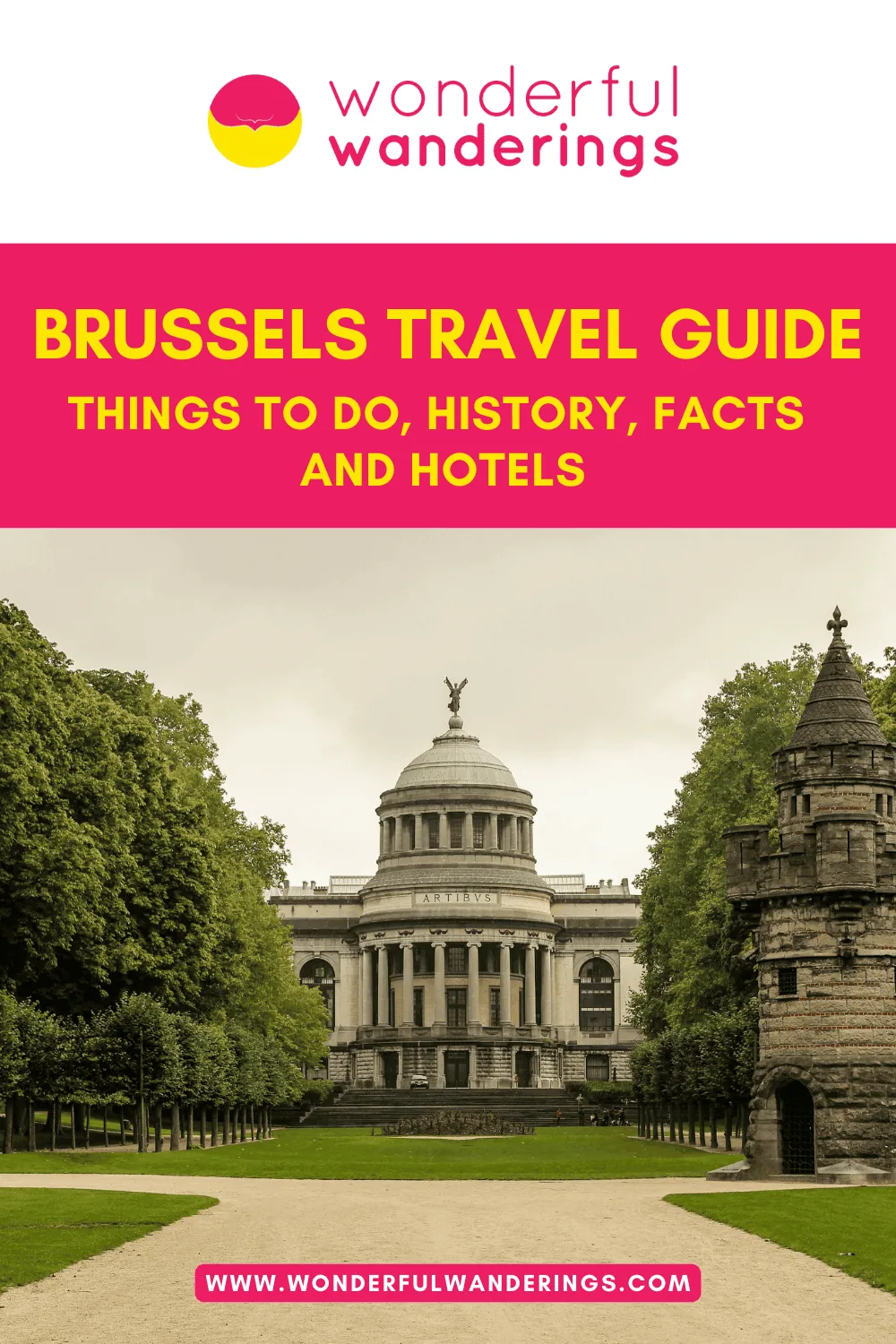
The editorial team at Wonderful Wanderings brings together travel experts with backgrounds in travel writing, web development and digital marketing. The team, through their collaborative effort, provides readers with relevant travel experiences and up-to-date digital content. The vast expertise within the team ensures an informative blend of travel stories and useful online travel guides and trip experiences, built on a foundation of both industry recognition and hands-on global adventures. Learn more about Wonderful Wanderings
Your email address will not be published. Required fields are marked *
Join 58,000+ other Wonderful Wanderers!
As an Amazon Associate I earn from qualifying purchases.
Nomadic Matt's Travel Site
Travel Better, Cheaper, Longer
Brussels Travel Guide
Last Updated: August 9, 2023
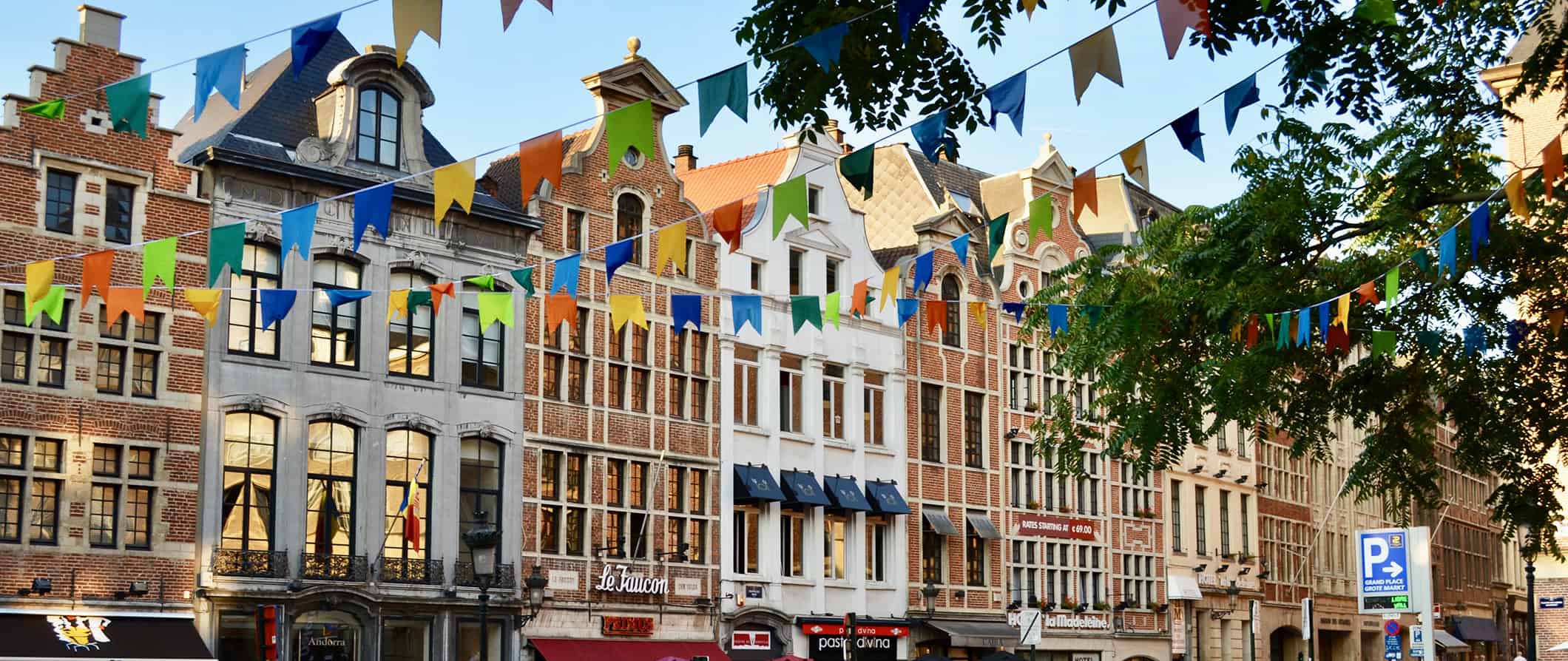
Brussels is a bit of an underdog city in Europe . Most travelers speed through on their way to Paris or Amsterdam. Or they skip the city altogether.
I think that’s a mistake.
As the administrative center of the European Union, Brussels can feel a bit “stuffy” — but don’t let that fool you. The city is hip, filled with history, (many museums have free entry on the first Sunday of the month), and boasts tons of cutting-edge restaurants. With its countless restaurants and bars devoted to beer, Brussels is a foodie’s dream.
Spend at least a couple of nights here. Enjoy the beer, devour some Belgian fries, and experience this often-overlooked European capital. It might just surprise you (it did me).
This travel guide to Brussels can help you plan your trip, save money, and make the most of your time in this underrated city!
Table of Contents
- Things to See and Do
- Typical Costs
- Suggested Budget
- Money-Saving Tips
- Where to Stay
- How to Get Around
- How to Stay Safe
- Best Places to Book Your Trip
- Related Blogs on Brussels
Top 5 Things to See and Do in Brussels
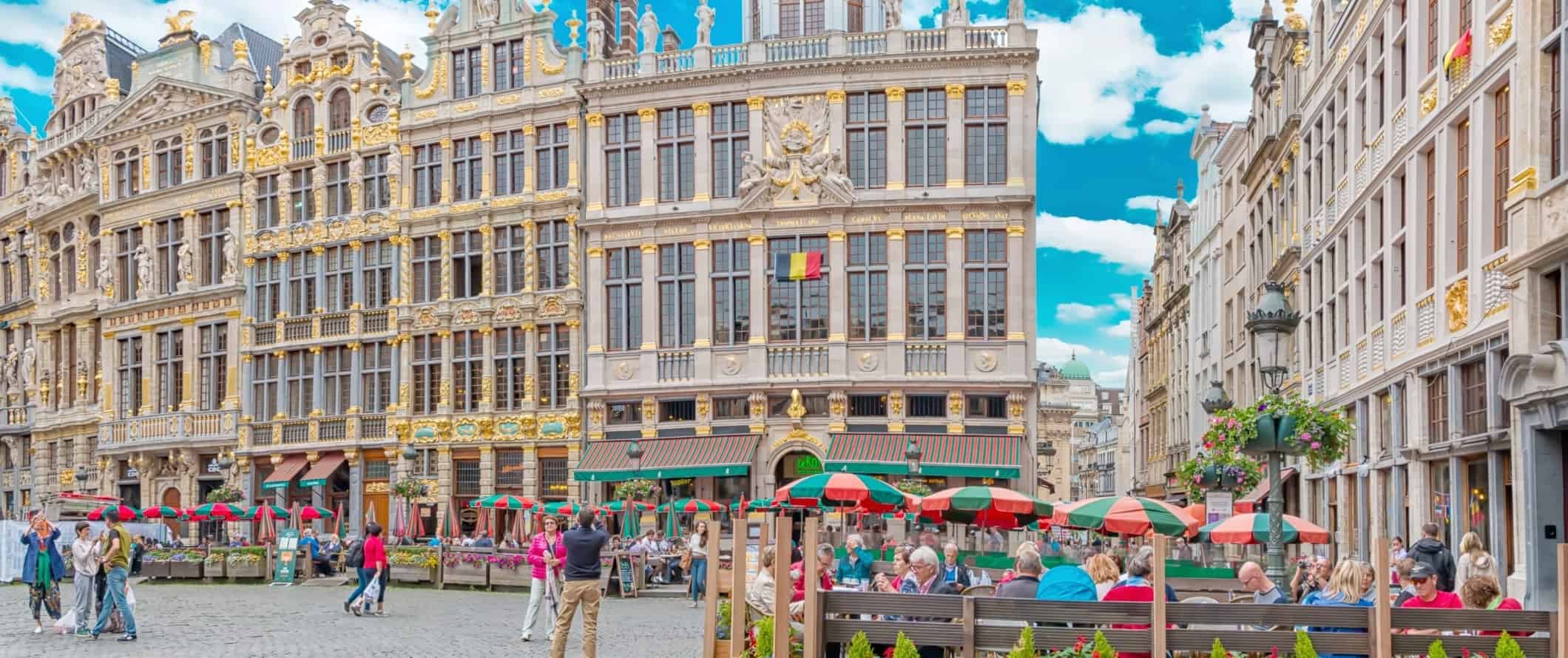
1. Visit the European Parliament
Founded in 1952, the EU parliament is where all 705 members (from 27 countries) meet to debate the future of the EU. You can watch a parliamentary session in the debating chamber (known as the Hemicycle) or tour the building (with an audio guide) when parliament isn’t in session. Space is limited so book in advance (it’s free). On Mondays at 11am and 3pm, there are in-depth guided tours offered in both English and French.
2. Hang out at Grand Place
Brussels’ most popular tourist attraction is its Grand Place. This is the heart of the city and includes the Town Hall, the famous Breadhouse, and, every two years in August, displays a huge floral arrangement. The Grand Place is a bustling part of Brussels and a popular meeting spot for locals.
3. Visit St. Michael and Gudula Cathedral
Built in 1047, this cathedral is the official site of all royal Belgian weddings, funerals, and coronations. It houses a lot of medieval artifacts, including stained-glass windows donated by Holy Roman Emperor Charles V. Entrance is free but it’s 3 EUR to see the Romanesque crypt, 1 EUR for the church’s archaeological site, and 2 EUR for the Treasury.
4. See Manneken Pis
Manneken Pis is a bronze sculpture fountain of a young boy urinating. It was put in place to distribute drinking water in the 15th century and now it’s a local icon. Each day he wears a new costume (and all the old costumes are kept in a museum). Nearby you can also find Jeanneke Pis, which is of a little girl urinating (it’s as weird as it sounds), and Het Zinneke, a statue of a urinating dog.
5. Drink beer at Delirium Café
This is easily the most famous bar in Brussels, thanks to its selection of some 2,000 beers from around the world (it made the Guinness Book of World Records). They brew their own beer as well, and the enormity of the menu draws a fun-loving, talkative crowd.
Other Things to See and Do in Brussels
1. take a free walking tour.
One of the first things I do in a new city is to take a free walking tour. It’s the best way to get the lay of the land, see the main sights, and connect with a local guide who can answer all my questions. New Europe runs regular free tours that cover all the highlights. Just remember to tip your guide at the end!
2. Explore The Horta Museum
The Horta Museum was once the house of famous art nouveau architect, Victor Horta, who built the property in the late 1890s. It is an excellent example of the art nouveau style that made Horta one of the most acclaimed architects in Belgium. The unique orange-and-yellow glass ceiling and the detailed curlicues of the wrought iron railings are beautiful. Admission is 12 EUR.
3. See the Chinese Pavilion and Japanese Tower
Located at the end of the Royal Estate at Laeken, the Chinese Pavilion and Japanese Tower were constructed between 1901-1910 on the orders of King Leopold. The pavilion has a museum dedicated to Chinese porcelain and furniture from the 17th and 18th centuries. NOTE: The Chinese Pavilion and Japanese Tower are currently closed due to safety reasons until further notice.
4. Learn about beer at the Cantillon Brewery
Cantillon Brewery was founded in 1900 and is the last surviving lambic brewery (a Belgian beer brewed with raw wheat and wild yeast and fermented for at least a year) in Brussels. The brewery still makes use of its original 19th-century equipment, including its wooden barrels, where the beer matures for up to three years. Guided tours are offered on Saturdays only for 10 EUR, or you can take a self-guided tour throughout the week for 7 EUR. You’ll learn a lot about the production process and you’ll get a free beer at the end. If visiting one brewery isn’t enough for you, you can also take this beer tasting tour where you’ll visit a number of different breweries and enjoy some traditional Belgian snacks with your beers.

5. Gorge at the Gare du Midi market
If you are in Brussels on a Sunday morning, there is no better place to be than the Gare du Midi Market. This is the biggest market in the city and the third-largest food market in Europe, so you can expect to find tasty food like crepes from North Africa, Mediterranean spices, meats, cheese, and pretty much any type of food you desire. Bring an appetite!
6. Eat chocolate
Aside from beer, one of Belgium’s most famous exports is chocolate. Chocolatiers’ shops dot the city, each with its unique recipes (and price tags). My favorite chocolate shop is Maison Pierre Marcolini, as Pierre Marcolini is one of the only chocolatiers in the city to personally select the cocoa beans to roast himself. A close runner-up is Galler Chocolatier, where Jean Galler has perfected some interesting flavor combinations (including an apricot praline). If you want to dive even deeper into Belgian chocolate, visit Choco-Story, the chocolate museum where you can also take a chocolate-making workshop to design your very own chocolate.
7. Learn some history at Waterloo
Just south of the city is Waterloo, the site of Napoleon’s final battle against Europe in 1815. The battle pitted Napoleon against Wellington and the Prussians, marking the end of the Napoleonic Wars. Some 200,000 soldiers were involved and tens of thousands were killed over the course of the day. Although the fields are empty now, at the center of it all is a 40-meter-tall (131 feet) Lion’s Mound, which you can climb to look out across the whole battlefield. There’s also a visitor center where you can watch films that explain the battle and what it meant for world history. Admission to the museum is 17-19 EUR.
8. Admire the view from the Basilique de Koekelberg
The Basilica of the Sacred Heart is the 5th largest church in the world, standing 89 meters tall (291 feet) and measuring 167 meters long (548 feet). It was built to celebrate the 75th anniversary of Belgium’s independence, and King Leopold II laid the first stone in 1905. The art deco style contrast of its green dome against red terracotta stones is a striking sight, but the best part is the view over the city from the church’s terrace. It costs 8 EUR to reach it.
9. Hang out at the Grand Salon
The Grand Salon is a square ringed by old mansion houses. The Gothic-style Church of Notre Dame du Sablon can also be found here, but one of the best things to do is sit at a sidewalk cafe, people-watch, and take in the local pace of life. There’s also a fun book and antique market during the weekend if you want to browse.
10. Visit AutoWorld
AutoWorld is a car museum that has over 250 vintage European and American automobiles from the late 19th century up to the 1970s. It has limousines used by the royal family, Belgian-produced Minervas (a defunct car manufacturer that went out of business in the 1950s), and all kinds of prototype vehicles. Admission is 13 EUR. You can buy tickets online in advance here .
11. Climb the Atomium
The Atomium is a giant iron crystal that stands 102 meters (335 feet) tall, magnified 165 billion times its normal size. The structure was originally built for the Brussels World’s Fair in 1958 and was never meant to be permanent. But it quickly became so beloved by Belgians that it was kept standing. Today, you can go inside the six spheres for panoramic views over the city. There’s even a restaurant in the top sphere. Admission is 16 EUR. It’s recommended to buy tickets online in advance .
12. Explore Mini-Europe
While you’re visiting the Atomium, you can also explore the nearby Mini-Europe, a theme park featuring incredibly detailed miniature replicas of famous European monuments, including Big Ben, the Eiffel Tower, and the Berlin Wall. There are over 350 monuments in the park, including live-action ones, such as an erupting Mt Vesuvius. Admission to Mini-Europe is 17.30 EUR , while joint tickets that also include entry to the Atomium are 29.40 EUR.
13. See some comic strip art
Located in an Art Nouveau home designed by Victor Horta, The Belgian Center for Comic Strip Art is a must for comic lovers or anyone who’s interested in seeing a different kind of art museum. There are permanent as well as temporary exhibitions with prints, drawings, books, and an entire exhibit dedicated to telling the history of the comic. There’s also a massive comic book shop and library with the biggest collection of comic books globally. Admission to the museum is 12 EUR.
For information on other cities in Belgium, check out these guides:
- Bruges Travel Guide
Brussels Travel Costs
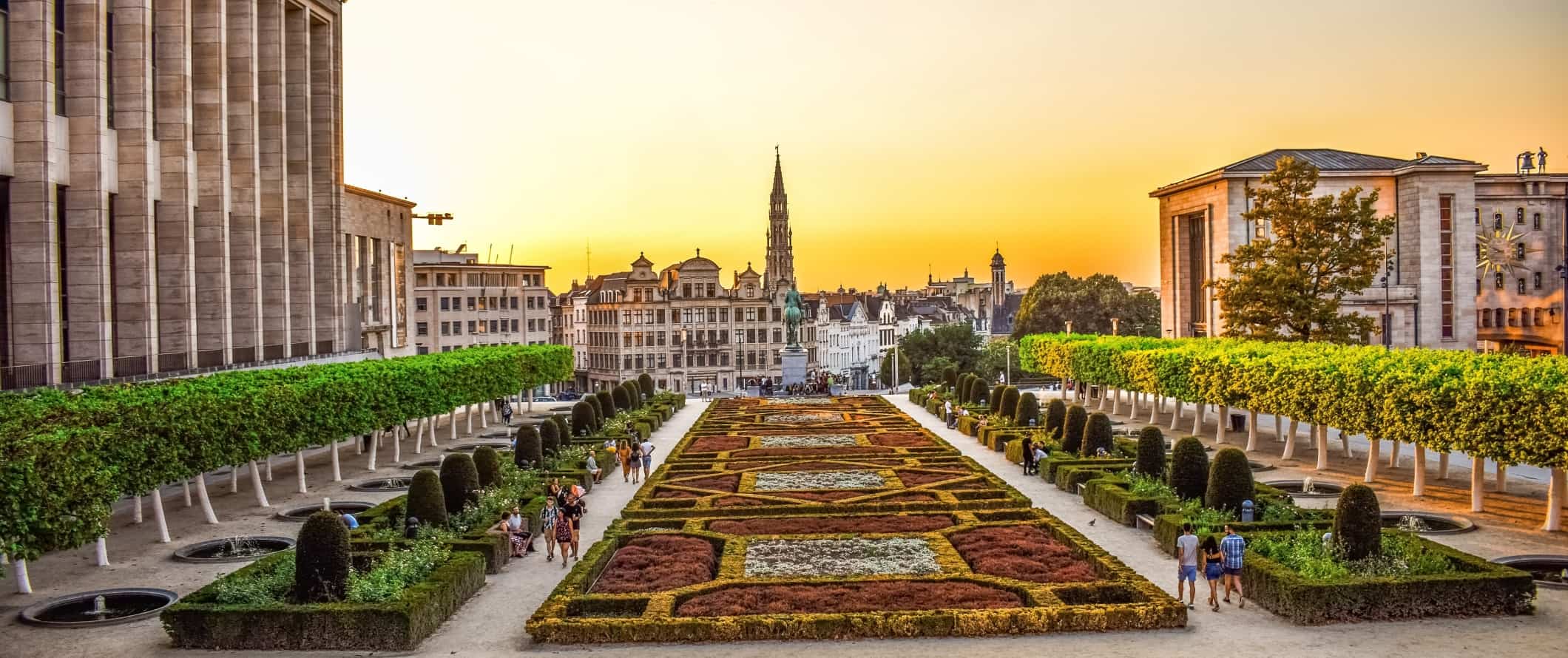
Hostel prices – For a hostel dorm, prices range from 31-39 EUR per night for a dorm with 4-6 beds, while rooms with 8 beds or more cost 27-30 EUR. For a private room, expect to pay 95-155 EUR per night. Free Wi-Fi is standard and most hostels have self-catering facilities. Some also include free breakfast.
For those traveling with a tent, camping is available outside the city. A basic plot costs around 13 EUR per night.
Budget hotel prices – A room in a budget two-star hotel costs 100-130 EUR per night. Expect basic amenities like free Wi-Fi, coffee/tea makers, and TVs.
Airbnb is available in the city with private rooms starting at 50-75 EUR per night. Entire apartments start around 115 EUR per night. Prices double when not booked in advance so be sure to book early.
Food – Belgian cuisine has been strongly influenced by its European neighbors over the centuries, specifically France, Germany, and the Netherlands. The food here is hearty with chocolate, waffles, fries, and beer being the most famous cultural staples. Steak and fries, mussels (often with fries), smoked ham, stew, and sausages are just some of the common dishes you’ll find here. Portions are large and filling too (the saying goes that Belgian food takes the portions of German cuisine but adds the quality and delicacy of French cuisine).
Generally speaking, eating out in Brussels isn’t super affordable. Light meals at cafes (like a sandwich, soups, salads, or crepes) cost around 7-11 EUR. Fast food (think McDonald’s) costs 9 EUR for a combo meal. Takeaway snacks, like a cone of fries at one of the ubiquitous frite shops, cost 3-4 EUR.
At a casual restaurant serving traditional cuisine, expect to pay around 15-22 EUR for a main dish. If you want to splash out, a three-course meal with a drink costs at least 40-60 EUR. Chinese food costs around 9-14 EUR for a dish while a takeaway pizza is around 8-10 EUR.
Beer or a glass of wine are both around 4-5 EUR, a cocktail is 9-12 EUR, and a latte/cappuccino is 3-4 EUR. Bottled water is 2 EUR.
Some of my favorite places to eat are Delirium Cafe, Wolf (which is a food hall with tons of different stalls), and Maison Antoine (for frites).
If you want to cook your meals, there are some great markets throughout the city. Expect to pay around 60 EUR for a week’s worth of groceries. This gets you basic staples like pasta, rice, bread, seasonal produce, and some meat or fish.
Backpacking Brussels Suggested Budgets
If you’re backpacking Brussels, expect to spend around 65 EUR per day. This budget covers a hostel dorm, cooking most of your meals, taking public transportation to get around, limiting your drinking, and doing mostly free activities like free walking tours, visiting the markets, and touring the EU parliament.
On a mid-range budget of 150 EUR per day, you can stay in a private Airbnb or private hostel, enjoy a few drinks, eat out for some meals, take the occasional taxi to get around, rent a bike, and do more paid activities like visiting museums and going to AutoWorld.
On a “luxury” budget of 270 EUR or more per day, you can stay in a hotel, eat out for all your meals, drink as much as you want, take more taxis, and do whatever activities you want. This is just the ground floor for luxury though. The sky is the limit!
You can use the chart below to get an idea of how much you need to budget daily. Keep in mind these are daily averages – some days you’ll spend more, some days you’ll spend less (you might spend less every day). We just want to give you a general idea of how to make your budget. Prices are in EUR.
Brussels Travel Guide: Money-Saving Tips
Brussels is a city of diplomats and they have big expense accounts. That means the city is not a super budget-friendly place to visit. However, it’s not impossible to save money here. Here are some of my suggestions to help you keep costs down:
- Get the plat du jour – Many restaurants offer a dish of the day or a fixed menu at lower prices during lunch so this is the best time to eat out if you plan on doing so. That said, cooking your food is still the cheapest option here.
- Eat Belgian fries – For an inexpensive and quick snack, try Belgian fries, or frites (usually eaten with mayonnaise). A large cone of fries costs no more than 4-5 EUR and are available everywhere. It’s not healthy, but it’s filling and delicious!
- Rent a bicycle – As taxis are so expensive, consider renting a bike to get around. Companies like Villo! and Blue-bike have low rates starting from 3.50 EUR per 24 hours (with the first half-hour often being free).
- Use student discounts – Students can receive discounts into many attractions upon presentation of an ISIC card, including half-price entry to the Royal Museum of Fine Arts.
- Stay with a local – Couchsurfing connects you with locals who can give you a free place to stay. Not only does it save you money but they can share their insider tips with you too. It’s the best way to connect with a local while saving money.
- Take a free walking tour – Free walking tours are the best way to see the city on a budget. Just remember to tip your guide at the end!
- Bring a water bottle – The tap water here is safe to drink so bring a reusable water bottle to save money and reduce your plastic use. LifeStraw is my go-to brand as their bottles have built-in filters to ensure your water is always clean and safe.
Where to Stay in Brussels
There are a lot of hostels in Brussels to help keep your budget intact. My recommended places to stay are:
- Sleep Well Youth Hostel
- easyHotel Brussels
- Meininger Brussels City Center
- Brussels 2GO4 Quality Hostel City Centre
How to Get Around Brussels
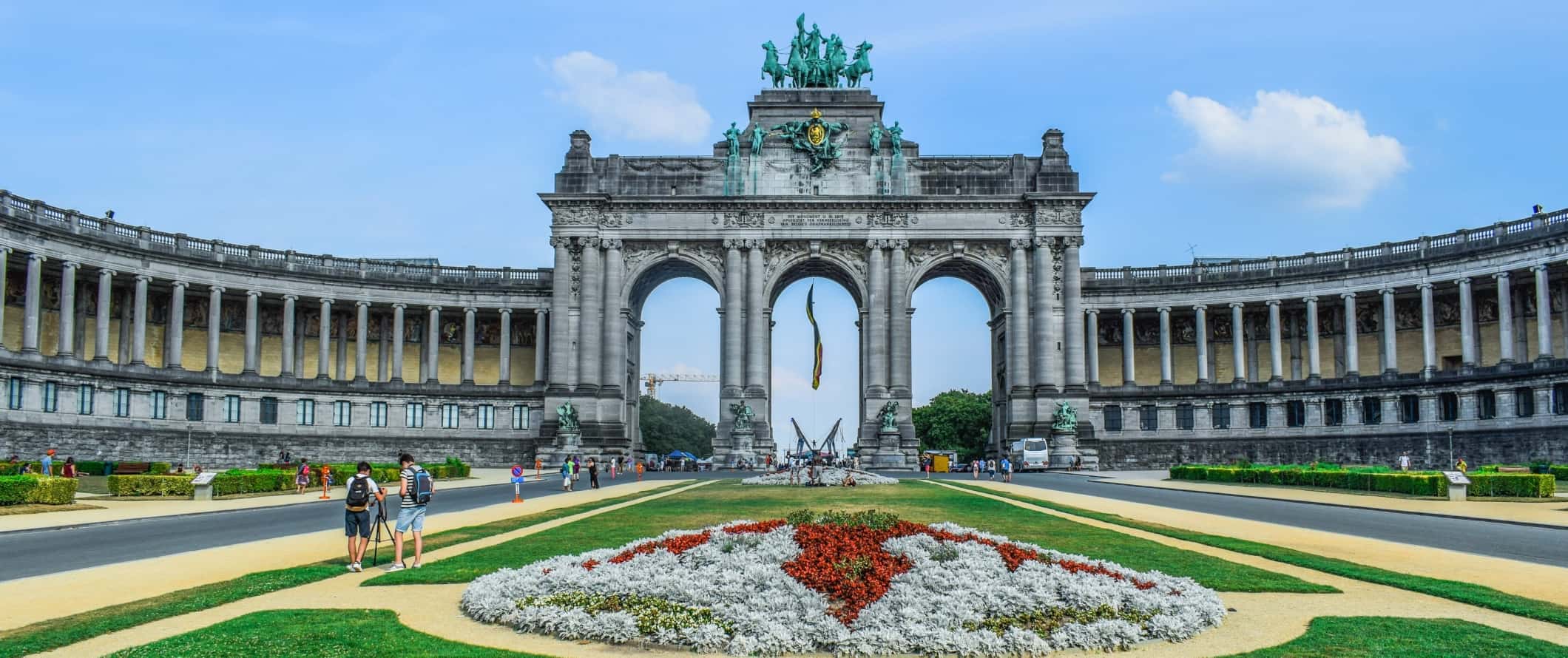
Public transportation – Brussels’ extensive public transportation system includes trams, buses, and subway (metro) lines. The city is pretty spread out so you’ll find yourself on public transportation often. It’s the best way to get around.
A single metro ticket costs 2.40 EUR when purchased inside the vehicle, or 2.10 EUR when using contactless payment methods. You can get a ten-journey pass for 15.60 EUR. A one-day ticket is 7.80 EUR (7.50 EUR daily cap when using contactless payment) and gives you unlimited travel across all public transportation.
Remember to validate your ticket every time you take public transportation. Failing to do so can result in a significant fine!
The airport bus is 7 EUR each way.
Bicycle – There are a handful of bicycle rideshare companies in Brussels, including Villo! and Blue-bike, with incredibly low rates starting from 3.50 EUR per 24 hours. Villo! Rentals are free for rides under 30 minutes.
Taxi – Taxis are very expensive. With the base rate starting at 4.98 EUR and then 1.94 EUR for each additional kilometer, they add up fast. With great public transportation, there’s few times you’ll need a taxi!
Ridesharing – After a brief ban, Uber is back in operation in Brussels. But, like taxis, it’s expensive, so skip the ridesharing if you’re on a budget.
Car rental – Car rentals are expensive here, costing at least 50 EUR per day. However, the city is easy to get around via public transportation so you definitely don’t need a car here unless you are leaving the city to explore the rest of the country/region. Divers need to be at least 21 years of age.
When to Go to Brussels
The best time to visit Brussels is during the shoulder seasons, between March-May and September-October. Room rates are much cheaper, and you won’t have to compete for space at all the city’s top attractions. The average daily high in March-May is about 16°C (62°F), while it’s around 18°C (66°F) from September-October.
The summer is the busiest and most popular time to visit. I would avoid visiting during this time, when average daily temperatures are about 23°C (73°F), as prices are inflated and the city’s attractions are very busy.
Winter can be frigid, averaging 6°C (43°F) during the day but often dropping lower. That said, Brussels is alive with Christmas markets and prices are much lower so it’s a fun time to visit if you’re going to be browsing markets and enjoying the museums.
If you come during February you can attend Brussels’ Carnival. It’s a bit of a booze fest and there are lots of costumes and parades, but if you’re in the mood to have fun, this is an ideal time to do it.
Brussels weather can also change on a dime all year round so make sure you pack a light sweater and rain jacket no matter what time of year you visit.
How to Stay Safe in Brussels
Brussels is very safe to visit. Violent crime is very rare here. However, pickpocketing and petty theft can occur so always keep your valuables secure and out of reach (especially in crowded areas and on public transportation).
In the evenings, avoid wandering through certain areas alone due to increased chances of crime, including Schaerbeek, Brussels North, Molenbeek, and Anderlecht.
Solo female travelers should feel safe here for all those reasons. However, the standard precautions you take anywhere apply here too (never leave your drink unattended at the bar, never walk home alone intoxicated, etc.). There are numerous solo female travel blogs that can provide more specific tips.
Scams in Brussels are rare, however, if you’re worried about getting ripped off you can read about common travel scams to avoid here.
If you experience an emergency, dial 112 for assistance.
Always trust your gut instinct. Make copies of your personal documents, including your passport and ID. Forward your itinerary along to loved ones so they’ll know where you are.
The most important piece of advice I can offer is to purchase good travel insurance. Travel insurance will protect you against illness, injury, theft, and cancellations. It’s comprehensive protection in case anything goes wrong. I never go on a trip without it as I’ve had to use it many times in the past. You can use the widget below to find the policy right for you:
Brussels Travel Guide: The Best Booking Resources
These are my favorite companies to use when I travel. They consistently have the best deals, offer world-class customer service and great value, and overall, are better than their competitors. They are the companies I use the most and are always the starting point in my search for travel deals.
- Skyscanner – Skyscanner is my favorite flight search engine. They search small websites and budget airlines that larger search sites tend to miss. They are hands down the number one place to start.
- Hostelworld – This is the best hostel accommodation site out there with the largest inventory, best search interface, and widest availability.
- Booking.com – The best all around booking site that constantly provides the cheapest and lowest rates. They have the widest selection of budget accommodation. In all my tests, they’ve always had the cheapest rates out of all the booking websites.
- Get Your Guide – Get Your Guide is a huge online marketplace for tours and excursions. They have tons of tour options available in cities all around the world, including everything from cooking classes, walking tours, street art lessons, and more!
- SafetyWing – Safety Wing offers convenient and affordable plans tailored to digital nomads and long-term travelers. They have cheap monthly plans, great customer service, and an easy-to-use claims process that makes it perfect for those on the road.
- LifeStraw – My go-to company for reusable water bottles with built-in filters so you can ensure your drinking water is always clean and safe.
- Unbound Merino – They make lightweight, durable, easy-to-clean travel clothing.
- Top Travel Credit Cards – Points are the best way to cut down travel expenses. Here’s my favorite point earning credit cards so you can get free travel!
- BlaBlaCar – BlaBlaCar is a ridesharing website that lets you share rides with vetted local drivers by pitching in for gas. You simply request a seat, they approve, and off you go! It’s a cheaper and more interesting way to travel than by bus or train!
Brussels Travel Guide: Related Articles
Want more info? Check out all the articles I’ve written on backpacking/traveling Belgium and continue planning your trip:
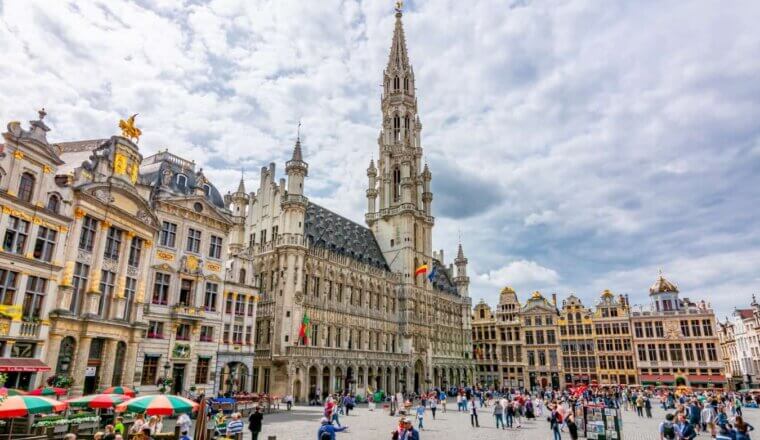
The Best Things to Do and See in Brussels
Get my best stuff sent straight to you, pin it on pinterest.
- Where To Stay
- Transportation
- Booking Resources
- Related Blogs
Brussels Travel Guide
What do you need to know before going to Brussels? This travel guide lists the top things to see in Brussels, thereby serving as a useful reference for any traveler planning his/her first trip to the Belgian capital. Apart from the main tourist attractions, this guide also includes local tips on authentic restaurants, original bars and fun events. Also check out the section on getting around in Brussels, which will come in handy while you’re sightseeing Brussels!
12 Main sights in Brussels
Most of the main sights (apart from the Atomium) are located in the historic city center and can be easily visited by foot. Wander through the pedestrian area around the Grand Place and explore the center at your own peace, with a regular break for waffles and beer ;-) If you’re on a budget, check out the list of free things to do in Brussels . Below is an overview of Brussels’ main landmarks to help you plan your trip. Click on an image to learn more about the place.

How much time in Brussels?
If you’re tight on schedule, you can visit Brussels in 1 day, although you’ll mainly get to see its main sights and you’ll kind of have to rush around. Two, or even three days, would be recommended to visit Brussels, as you’ll be able to discover the city as a tourist but also experience some of its more authentic places that unveil the true identity of the city. We’ve drawn up a few itineraries for various time schedules.
- 1 day in Brussels
- 2 days in Brussels
- 3 days in Brussels
6 Places for Belgian food
When in Brussels, there are a few culinary treats you cannot miss out on. I’m sure you’ve already put fries, chocolate and waffles on your to-do list. Below are a few recommendations for places where you can get them. If you also feel like having something more nutritious, try one of the Belgian restaurants that serve traditional Belgian dishes like carbonnade flamande (beer stew), bloempanch (blood sausage) or rabbit with prunes…

6 typical Brussels bars
Given that Brussels boasts a countless number of bars, you might be wondering where to go first. Below is a selection of special pubs in the city center of Brussels where you can try some of Belgian’s famous beers. Make sure to gulp them down with moderation, as they are pretty strong! You would be surprised. Apart from the beer selection, this shortlist has been made based on the exceptional setting and decoration of these places. You’ll find out ;-)

How to get around in Brussels?
Despite being a capital city, Brussels really isn’t that big which makes it easy to get around. Most of the main sights in the historical center are within walking distance of each other. For larger distances, Brussels has a decent offer of public transportation, made up by a network of metros, trams, buses and trains. This article describes how to get around in Brussels while offering a detailed overview of all the mobility options in Brussels.
Handy apps while in Brussels
You’re wondering how to get from A to B? Or where to eat tonight? You need the timetables of a bus, train, metro… Mobile applications make life so much easier as they provide the answers to all these questions. Also for Brussels, there is a series of apps that will come in handy when you’re visiting or living in Brussels. You’ll find the extensive list in this article about indispensable apps for Brussels .
Other places to visit in Belgium

Blog about Brussels revealing our favorite spots in the city. The best restaurants, authentic bars, mind-boggling sights, fun events... Apart from things to do in Brussels, you'll also find inspiration for various trips in the surroundings. Follow us us on social media to stay tuned!
Most Popular articles

Looking for something?
Brussels Travel Guide

Courtesy of Getty Images |

Why Go To Brussels
Brussels has been the de facto capital of the European Community (and now European Union) for decades, and for a good reason. The city's Gothic- and Baroque-style squares, set between medieval streets, are the playgrounds of international politicians and adventurous tourists alike. Authentic Belgian fare offers hearty comfort food, and daily doses of chocolate and beer are worth every cent. Brussels is cosmopolitan in ways other cities are not – it's truly multilingual (French, German and Dutch). The multicultural influences have led to an explosion of museums, marketplaces, restaurants and boutiques that make it far more than just a sleepy alternative to some of its busier neighbors like Paris or Amsterdam .
Find Flight and Hotel Deals
Navigate forward to interact with the calendar and select a date. Press the question mark key to get the keyboard shortcuts for changing dates.
Navigate backward to interact with the calendar and select a date. Press the question mark key to get the keyboard shortcuts for changing dates.
- # 12 in Best Cheap European Honeymoon Destinations
Best of Brussels
Best hotels in brussels.
- # 1 in Hotel Amigo, a Rocco Forte Hotel
- # 2 in Sofitel Brussels Europe
- # 3 in Stanhope Hotel Brussels by Thon Hotels

Best Things to Do in Brussels
- # 1 in Grand-Place
- # 2 in St. Michael and St. Gudula Cathedral
- # 3 in Musical Instruments Museum
Popular Tours

Bruges and Ghent - Belgium's Fairytale Cities - from Brussels
(3679 reviews)
from $ 54.20

Luxembourg and Dinant Day Trip from Brussels
(982 reviews)
from $ 71.90

Hungry Mary's Famous Beer and Chocolate Tour in Brussels
(1381 reviews)
from $ 99.55
Brussels Travel Tips
Best months to visit.
The best time to visit Brussels is between March and May and September and October, the shoulder seasons; this is when room rates are cheaper and the weather is mild. This city experiences all four seasons and rain is a possibility year-round. Average lows range from the mid-30s in winter to the low 70s in summer.
No matter when you're in town, you can count on something going on at the Grand-Place , from street performances and flower shows to the nightly light shows in winter. But if you can, try to plan your trip around the Ommegang festivities (the first week in July). This Renaissance-style festival recreates the celebration held when Emperor Charles V first entered the city in the 16th century. Another festive time to visit is around Christmas when the entire square is illuminated by a massive Christmas tree.
Weather in Brussels
Data sourced from the National Climatic Data Center
What You Need to Know
Brussels is a melting pot Dutch, French and English are all spoken in the city.
Take a look at the architecture Belgium is known for its architecture, especially Art Nouveau.
Plan a weekend daytrip Daytrips to Belgian locales like Bruges , Antwerp and Ghent are fast and easy thanks to the country's extensive train system. Plus, since Brussels is a business hub, it's cheaper to travel to nearby hot spots on the weekends than it is during the work week.
How to Save Money in Brussels
Buy a Brussels Card Available in 24-, 48- and 72-hour versions, this card gets you free entry to more than 40 museums, as well as discounts at shops, bars, restaurants, select tourist attractions and tours.
Rent a bike Instead of paying taxi fares or the cost of public transport, rent a bike and make your way around the city on the cheap.
Get the prix-fixe or "plat du jour" Belgian dining can get expensive, so stick to the fixed price menus or the “plate of the day” instead. Your wallet and stomach will thank you.
Culture & Customs
The official currency in Brussels is the euro. Since the euro to U.S. dollar exchange rate fluctuates often, be sure to check what the current exchange rate is before you go. Major credit cards may not be accepted at all restaurants, hotels and shops.
Belgium is also largely Catholic, celebrating many Catholic holidays. In Brussels, three languages are commonly spoken: French, Dutch and German. You'll also want to be sure to shake everyone's hand when you greet them and before leaving.
When dining in Brussels, it's considered polite to keep both hands (not elbows) above the table while eating. It is also polite to finish all the food on your plate; if you find yourself too full to finish, indicate that you have finished eating by placing both your knife and fork on your plate with the handles facing outward. Gratuity is normally included in the bill, but you should feel free to round up the total or leave a few extra euros for exceptional service.
What to Eat
Brussels offers an abundance of Michelin-starred restaurants, serving meals inspired by both French and Dutch cuisine. And a trip to Brussels is not complete without steamed mussels and a side of fries (moules-frites). If you're not hungry enough for a full meal, grab a snack (such as a paper cone of extra crispy frites served with a mayonnaise-based dipping sauce) from one of the city's many sidewalk food carts. Visitors to Cafe La Brocante, located about a mile south of the Grand-Place, enjoy its beer selection, baguettes and traditional dishes like stoemp, a potato dish with Brussels sprouts.
Brussels is also famous for its mouth-watering waffles, and visitors can find an abundance of waffle places around Grand-Place . Travelers love the waffles at Mokafe, which you can accompany with a cup of coffee, hot chocolate or tea.
Restaurants overall can be found in clusters around tourist areas like Grand-Place and Rue des Bouchers. Unfortunately, meal prices are generally high. To save money, order the prix-fixe menus, which offer choices for two or three courses for a set price. Or, venture beyond these tourist hot spots when it's time to eat and seek out eateries frequented by locals and travelers alike, such as La Quincaillerie (for a contemporary take on Belgian classics), Noordzee Mer du Nord (a popular seafood spot) and Comptoir des Galeries (for a splurge-worthy French meal).
If there are two things for which Belgium is known for, it's chocolate and beer. When you're craving a sweet treat, you can easily find Godiva. Though it's now a worldwide brand, Godiva had humble beginnings in Brussels where it was a family-run business beginning in 1926. You can visit the company's first shop, which opened in 1937, on the Grand-Place. If you're on the hunt for chocolate you wouldn't necessarily be able to source easily at home, consider shops like Mary or Elisabeth .
If you're not one to indulge your sweet tooth, succumb to your love of hops instead. Belgium is home to a dizzying array of beer types, most of which you can find at the city's many cafes and pubs. For those looking to grab some Belgian beer, or any beer really, head over to Delirium Cafe , which boasts more than 2,000 beers from around the world. Plus, Delirium Cafe sits less than a half-mile north of the Grand-Place, making it an easy stop for tourists.
The U.S. Department of State warns visitors to Belgium of possible terrorist activities, especially in crowded areas or at high-profile events. You should also watch out for purse-snatchers and pickpockets. Oftentimes, these criminals work in groups in crowded tourist areas, as well as at train and metro stations. The Department of State advises drivers to park in garages and not on the street. Keep your bags with you when traveling by train, and don't wear expensive jewelry or watches. Only use bank ATMs and ask restaurants to swipe your card in front of you.
Getting Around Brussels
The best way to get around Brussels is on its extensive public transit system, the Brussels Intercommunal Transport Company (often referred to by its French acronym, STIB). Trains run every 15 minutes from Brussels Airport (BRU) to central Brussels. There are three major train stations: Brussels Central Station, located in the heart of the city; Brussels-South, which sits southwest of the city center; and Brussels-North, just north of the city center.
Biking is also popular in Belgium with bike rentals available across the city through companies like Villo! and Pro Velo. There are even waterbuses from May through October, which will take you between Brussels, Van Praet and Vilvoorde on the canal.
Entry & Exit Requirements
A valid passport is required for United States citizens to travel to Belgium. U.S. citizens can stay for up to 90 days without obtaining a visa. At customs, you'll have to present a return airline ticket, as well as a passport that is valid for at least three months after the date of return. If you're planning to stay in Belgium for more than 90 days, you'll have to obtain the proper visa before leaving the U.S. For more information, visit the U.S. Department of State's website .
Brussels is a beautiful city to explore both during the day and night.
Explore More of Brussels

Things To Do
Best hotels.

You might also like

# 5 in Best Places to Visit in Switzerland

# 1 in World's Best Places to Visit for 2023-2024

# 3 in Best Winter Vacations in Europe
If you make a purchase from our site, we may earn a commission. This does not affect the quality or independence of our editorial content.
Recommended
The 50 Best Hotels in the USA 2024
Christina Maggitas February 6, 2024

The 32 Most Famous Landmarks in the World
Gwen Pratesi|Timothy J. Forster February 1, 2024

9 Top All-Inclusive Resorts in Florida for 2024
Gwen Pratesi|Amanda Norcross January 5, 2024

24 Top All-Inclusive Resorts in the U.S. for 2024
Erin Evans January 4, 2024

26 Top Adults-Only All-Inclusive Resorts for 2024
Zach Watson December 28, 2023

Solo Vacations: The 36 Best Places to Travel Alone in 2024
Lyn Mettler|Erin Vasta December 22, 2023

26 Cheap Beach Vacations for Travelers on a Budget
Kyle McCarthy|Sharael Kolberg December 4, 2023

The 50 Most Beautiful White Sand Beaches in the World
Holly Johnson December 1, 2023

The 26 Best Zoos in the U.S.
Rachael Hood November 16, 2023

44 Cheap Tropical Vacations That Feel Expensive
Holly Johnson|Alissa Grisler November 10, 2023

Kirstie Will Travel
Making Everywhere You Go An Adventure
Brussels · February 21, 2022
The Essential Brussels Travel Guide
Nestled between some of Europe’s powerhouses in the north of the continent is Belgium, a tiny country with a cultural heritage much bigger than its geographical size. The capital, Brussels, lies pretty much bang in the centre of the country and brings together all the best parts of Belgium in a lively, walkable city.
Whether exploring the eclectic architecture, quirky attractions that capture the Belgian spirit, or chowing down on a great variety of traditional food and drink, a trip to Brussels is guaranteed to be a unique time, filled with charm and enriching experiences.
Planning a trip to somewhere like Brussels can be overwhelming, and the thought of trying to pick out what to see and do and where to eat and drink might seem impossible. Luckily, with my expert knowledge of the city of Brussels, this Essential Brussels Travel Guide will take you through all you need to know to plan your trip. From practical information like how to get to Brussels and where to stay, and all the fun stuff like planning your activities and culinary feasts, by the time you get to the end of this guide you’ll feel like you’ve already been! So get ready to learn all about this city and plan an unforgettable trip to Brussels.

This post may contain affiliate links meaning I may earn a commission if you click through and make a purchase, at no additional cost to you. Read more in my disclaimer .
How to Get to Brussels
Brussels is the capital city of Belgium, a small country in Northern Europe that’s bordered by France , Germany, The Netherlands and Luxembourg. Given its central location and proximity to other countries, it’s really easy to get to Brussels!
Brussels has two airports- Brussels Zaventem, and Charleroi. Brussels Zaventem is located just outside of the city and can be reached in around 20 minutes. Charleroi is used by several low-cost airlines and is a lot further away – it takes around an hour to reach Brussels.
Brussels Zaventem
From Brussels Zaventem , there is a train and a bus connection to Brussels city centre. The train is quicker and more convenient but costs more, and the bus is a great budget option if you don’t mind spending a bit longer getting to and from the airport.
Airport Train
- Daily 5 am-midnight
- Departure every 10 minutes
- Single €9,30; Return €18,60
- Stops: Schuman, Nord, Central, Nord
Airport Bus
- Daily 5:40 am- 00:30 am
- Departure every 10-15 minutes
- Location (map)
- Stops: Schuman, Trône (metro connections for onward transport)
- Single (to airport) €2-3; Single (from airport €7)
Alternatively, you can book a private transfer from Brussels Zaventem to the city . This is a great option if you’re travelling in a bigger group or with lots of luggage.
Charleroi Airport
Given that it’s an hour outside of Brussels, it’s a little more complicated to get from Charleroi Airport to Brussels. There are four options – a ridesharing app called BlaBlaCar where airport workers sometimes offer rides; a bus to Charleroi train station and then a STIB train to Brussels; a shuttle bus; and a private transfer . The shuttle bus is by far the most economical and hassle-free.
Charleroi Airport Shuttle Bus:
- Run by Flibco
- Daily ~ midnight – 00:30 am
- Departure every 30 minutes – 1 hour
- €14,70 each way (when booked online)
- Stops: Midi Station
By Train/Bus
There are loads of easy train and bus links from Belgium’s neighbouring countries, including the U.K. across the channel.
From the U.K., you can take the Eurostar train from London St Pancras to Brussels Midi. It takes two hours and is a fantastic way to travel from the U.K. to Brussels without having to fly. It’s also possible to take a Flixbus coach from London to Brussels, but personally, I wouldn’t recommend it – it takes around 8 hours and I don’t think the cost is low enough to make it worth it.
For other bus and train connections, it’s best to check out Omio . There are several train companies across different countries and this site brings them all together into one convenient search.

How to Get Around in Brussels
Brussels is a small and very walkable city, and to see as much of the city as possible, I recommend walking as much as you can. However, it’s always useful to have a quick overview of the public transport system.
In Brussels, the metro, tram and bus system are run by the same company, STIB, so you can use the same tickets for all three forms of transport. You can also combine transport methods within one journey, as your ticket is valid for one hour from its first use. For journeys around the centre of Brussels, the metro is the easiest mode of transport.
Ways to pay:
- Contactless payment (€2,10 per journey up to a charge of €7,50, the price of a day ticket)
- Paper ticket from kiosk (€2,60 per ticket)
Timetables (Metro, Tram and Bus) Metro Map Interactive Public Transport Map
Another great way to travel around as a tourist is by booking a hop-on/hop-off bus tour . The bus stops at all the main sites and more, so you can easily get around without having to navigate the public transport system.
The Best Things to See and Do in Brussels
Brussels is bustling with things to see and do, unsurprisingly in a city with such a rich history and culture! I’ve selected the six top things to see and do in Brussels that give a great overview of everything Brussels has to offer!
Grand Place

Grand Place (also known as Grote Markt in Flemish/Dutch) is Brussels’ main city square, and definitely the most famous spot in the city. With cobblestones on the ground and traditional, ornate buildings surrounding all four sides of the square, Grand Place is celebrated for its beauty and is even listed as a UNESCO World Heritage Site.
At Grand Place, you’ll find the Brussels Town Hall and the city museum. The other buildings around the square are historic guildhalls and private houses that have now been converted into various shops, dining places, and museums. Grand Place is always bustling with activity, and it’s fun to grab a coffee or a Belgian beer and watch the world go by in one of the most beautiful city squares in the world.

While visiting Grand Place, make sure you find the Everard ‘T Serclaes statue. Everard t’Serclaes was a Brussels hero, and it’s a common legend that if you touch the statue and wish to return to Brussels, it’ll come true! You’ll find the statue just off Grand Place, on Rue Charles Buls .
Visit a Museum
Brussels has a lot of quirks, leading to many interesting museums. There is also a great mix of museums to suit every interest.
For those who love history, and traditional museums, there’s the city museum in Grand Place and the Magritte Museum . If you’re looking to learn more about Belgian culture, visit the Choco-story Museum or the Parlamentarium . Brussels has some of the most unique museums in the world, and if you’re looking to experience that I recommend Gardrobe Manneken Pis or the Musical Instruments Museum .

Comic Book Route
Brussels is famed for its comic history and there is so much culture relating to comics to explore in the city. One of the best ways to explore this is by walking the Comic Book Route. This was a project carried out by the City of Brussels to celebrate the rich comic history and showcase some incredible artists. The route is composed of over 50 murals on walls around the city, with some very famous characters such as Tin-Tin and Asterix and Obelix.
Check out my full guide to the Brussels Comic Book Route if you want to learn more about the Comic Book Route and Brussels’ comic history!

Manneken Pis
Continuing on with the quirks, the most celebrated statue in all of Belgium is Manneken Pis, a tiny fountain statue of a little boy peeing. He is well-loved by the Belgians and has come to be a mascot of the unique and culturally rich Belgian life.

Manneken Pis is often dressed in outfits to mark special occasions, such as sporting events or commemorating notable historical figures. In fact, this little statue has over 900 costumes, that are all on display at Gardrobe Manneken Pis .
You’ll find Manneken Pis in the centre of Brussels, just a five-minute walk from Grand Place. Make sure you also check out Jeanneke Pis and Zinneke Pis . They are the girl and dog version of Manneken Pis.

Up in the north of Brussels is the Atomium, a huge steel atom structure that is both an iconic landmark and the most popular museum in the city. The Atomium was built for the 1958 Brussels World’s Fair and was so popular that they decided to keep it standing – initially it was only meant to be there for six months! The structure of the Atomium represents the molecular structure of an atom, hence the name.
Unbelievably, there is a museum inside the spheres of the Atomium, and the connectors have escalators to move between the spheres. The museum is mainly dedicated to telling the story of the Atomium, and there is usually a temporary exhibition running as well. From the top sphere, you can look out over Brussels from the viewing deck, and there’s even a restaurant if you’re looking for a really special experience.
Location | Open Daily 10 am-6 pm | Tickets | Website
If you’re interested in learning more about how to visit the Atomium museum and what to expect, check out my full Atomium museum guide .
Cinquantenaire Park
Brussels is home to many amazing parks and gardens , but if you have to visit one, make it Cinquantenaire Park . Located in the European quarter in the east of Brussels and rubbing shoulders with the European Parliament and Commission, Cinquantenaire Park is a huge green space, perfect for a picnic on a sunny day. In the summer, you can even enjoy drinks from the outdoor park bar.
It wouldn’t be Brussels without some culture included, and Cinquantenaire park is also home to several museums, including Autoworld and the Art and History Museum . You’ll also find Brussels’ huge triumphal arch here, towering over the park.

More Things to See and Do in Brussels
This list is the perfect starting place for your Brussels itinerary. If you want to expand and discover more things to see and do in Brussels, check out this list of 10 Fun and Unique Things to Do in Brussels. I’ve selected my favourite activities that are a little more off the beaten track but just as exciting to visit as all the main attractions in Brussels.
Or, choose one (or more) of these Brussels activities!
Where to Eat and Drink in Brussels
Brussels is a huge foodie city, and there is so much to try! This section of the essential Brussels travel guide takes you through the top places to eat and drink in Brussels, including some must-try traditional foods. You’ll find five recommendations for places to eat in Brussels, and two for places to drink beer in Brussels.
Fin de Siècle
Trying traditional, hearty Belgian food in Brussels is a must, and Fin de Siècle is the perfect place for that. Loved by tourists and locals alike, the cosy bistro serves up a whole range of the best traditional food, like carbonnade and stoemp, and more Belgian beer than you could drink in ten trips to Brussels!
Fin de Siècle is praised for its welcoming and vibrant atmosphere, so it’s more than just food here – it’s a look into the fun and friendly Belgian way of life!
Address | Open Mon-Fri 6 pm-midnight; Weekends 12 pm-11 pm | Website (with menu)
Veggie/Vegan Friendly? Yes; Vegan options limited
Maison Antoine
If there’s one thing Brussels does well, it’s fries! Maison Antoine is a delicious friterie found at Place Jourdan in the European Quarter of Brussels. The best way to enjoy fresh Belgian fries from Maison Antoine is covered in sauce (I recommend brazil, but there are over 20 to choose from).
Place Jourdan is home to many bars where you can sit down to enjoy your cornet of fries from Maison Antoine as long as you buy a drink. Alternatively, you could take your fries to the nearby Cinquantenaire Park and enjoy them there.
Maison Antoine is one of the best places to get fries in the city, but if you’re interested in trying more during your trip, check out this list of where to get the best Belgian fries in Brussels .
Australian Waffles
After enjoying your Belgian fries, you’d better enjoy a sweet snack with Belgium’s other street food wonder, waffles. Australian waffles are found all over Brussels and serve up these delicious doughy snacks for just a couple of euros. You can also get ice cream and various toppings to put on your waffle.
Just like the fries, there is an endless list of places serving waffles in Brussels. If you want to learn more about Belgian waffles and the best places to eat them in Brussels, check out my full Belgian waffle guide !

Baogo is an amazing Asian fusion restaurant in the centre of Brussels. Belgium has a lot of great traditional food but it’s always great to try other cuisines, and this is some of the most delicious food in Brussels.
At Baogo, they serve up burgers in soft bao buns, and the fillings are so varied and well thought out. You can also get rice bowls and sides.
Address | Open Daily 12 pm-11 pm | Menu |
Veggie/Vegan Friendly? Yes
Traditional Belgian food but with a budget-friendly twist, Ballekes is a restaurant dedicated to Belgian meatballs. Each portion comes with one giant meatball and a sauce of your choice, and you can get fries and other sides to accompany it. At Ballekes they also have an extensive Belgian beer menu to pair with your meatballs.
I recommend the Lapin and Belgian cheese sauces, as well as the cheese fries and Ballekes beer.
Address (Grand Place) | Address (Janson) | Website | Menu
Opening Hours vary, see website
Veggie/Vegan friendly? Yes

Belgians are mad for their beer, and Delirium is one of the most vibrant bars in the city. It can be quite touristy, but with over 2000 beers on offer, the attraction is understandable.
Delirium Café is the main bar, but along the Impasse de la Fidelité you’ll find different Delirium bars (eight in total), each offering a slightly different experience. Even with several floors, Delirium Café is busy, noisy, and full of life – if that’s the kind of atmosphere you’re looking for then you will adore Delirium.
Address | Website
Poechenellekelder
I couldn’t even begin to name all the places to try Belgian beer in Brussels, so when something unique comes up, you tend to remember it. Poechenellekelder not only has a unique name (don’t ask me how to pronounce it!) but the exterior is covered in colourful bicycles – it’s quite a spectacle.
They boast an extensive list of Belgian beers, a typically cosy atmosphere and a great outdoor seating area for the warmer months where you can look out over Manneken Pis. They do have a small food menu, mainly offering bar snacks, cheese, and meats.
Address | Open Tues-Sun 11 am-1 am (2 am Fri & Sat) | Website | Menu

The Brussels Foodie Guide (Where to Eat in Brussels)
This list of places to eat and drink in Brussels has given a great overview of places to eat in the city. If you want to see a bigger list of places to eat in Brussels with more traditional food, international food, street food, cafés…. (I could go on!), then check out my dedicated Brussels Foodie Guide!
Where to Stay in Brussels
For a special experience in Brussels, book a room with a view at Hotel Residence Le Quinze . This hotel is located in one of the buildings surrounding Grand Place, meaning you can get a unique angle of one of the most beautiful views in Europe!
The top floor of Le Quinze has the best views, with circular windows to look out and watch the bustling square – I don’t know if I’d ever leave my room!
Meininger Hotel
The Meininger Hotel on the Brussels canal is a great option for mid-price hotel rooms and cheap dorms. The modern hotel has a fun, young vibe, and great quality rooms.
Private rooms start around €70 a night and hostel rooms around €20. The hostel rooms are great for a budget trip without compromising on comfort – they are like hotel rooms just with more beds!

This Essential Brussels Travel Guide has taken you through all you need to start planning a trip to Brussels! You’ve got all the practical info sorted, and have started building a list of things to see and do, and another list of places to eat and drink. There are several additional guides linked throughout if you want to read even more about Brussels, but here is a recap list:
- 10 Fun and Unique Things to Do in Brusels
- 9 Amazing Belgian Foods To Try In Brussels
- Where to Get the Best Belgian Fries in Brussels
- Where to Get the Best Belgian Waffles in Brussels
- How to Visit the Atomium in Brussels, Belgium
- The Brussels Comic Book Route: The Complete Guide
Thanks for reading, and I hope you enjoy your trip to Brussels! Let me know your thoughts by leaving a comment below.
Sharing is caring!
You’ll Also Love

October 17, 2019 at 6:59 am
so helpful! will be going there in a couple months, thanks!
November 6, 2019 at 9:43 am
glad you liked it! I hope you enjoy Brussels, it’s an amazing city x
December 22, 2019 at 12:05 am
I love Brussels! I can’t wait to revisit!
December 30, 2019 at 8:45 pm
This is extensive! I’m excited to try your recs on things that aren’t waffles, but also indulge in numerous waffles. 🙂 Thanks for all the info!
January 5, 2023 at 9:01 pm
Great guide. I recently visited Brussels and it was a great trip. The city is full of history and culture, and there is so much to see and do. I particularly enjoyed touring the beautiful Grand Place and trying some of the delicious Belgian chocolate. Overall, it was a wonderful trip.
January 11, 2023 at 8:42 pm
Thank you! It’s a such a great city, I’m glad you had a good trip 🙂
February 7, 2023 at 9:21 am
Hi, This is Anindita and I happen to discover your blog while researching for a trip to Brussels. I will be visiting Brussels coming weekend from Dusseldorf via train and will get down at Brussels Midi station. Wanted to know if I should get a day pass or is it safe to walk from Midi station to Grand Plac? Will I get a pass or a ticket to Hop on and Hop off bus from Midi station?
Hoping to get a reply
February 27, 2023 at 8:13 pm
Hi Anindita, sorry I couldn’t reply to this before your trip. How was it, did you have a good time? 🙂
Leave a Reply Cancel reply
Your email address will not be published. Required fields are marked *
This site uses Akismet to reduce spam. Learn how your comment data is processed .
- Privacy Policy
- Destinations
- Travel Tips

Copyright © 2024 Kirstie Will Travel · Theme by 17th Avenue
Ultimate Brussels Itinerary: How to Spend 2 days in Brussels
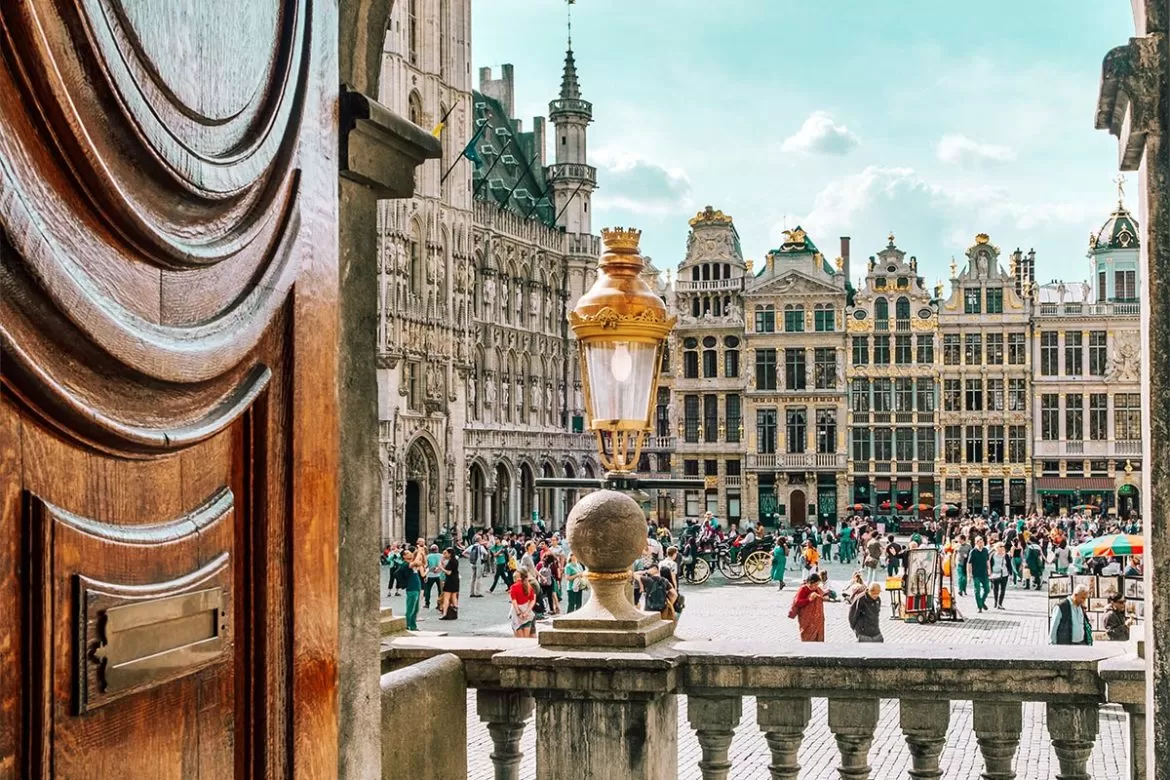
First time in Brussels? Here is everything you need to know to spend two perfect days in Brussels. Know where to eat in the best restaurants and see the best Brussels has to offer with this detailed Brussels travel guide.
Brussels is Belgium’s capital and bilingual heart of the country with street signs written in both French and Flemish Dutch . Brussels might be home to the headquarters of the European Union but its most famous landmark (and favourite amongst locals) is a small statue of a boy peeing (Mannekin Pis). Beyond its many world-class musuems, Brussels is also a culinary hub that must be savoured. Start with a sweet Belgian waffle, enjoy moules-frites for lunch, try Waterzooi for dinner and wash it all down with a Belgian beer. Don’t forget to take home some delicious Belgian chocolate.
Are you ready to explore Brussels? Here’s how to spend 2 days in Brussels.
Looking for something in particular? Use this table of contents below to jump around using the links.
Table of Contents
- Map of Brussels Itinerary
1. Brussels Comic Book Route
- 2. Manneken Pis
3. Jeanneke Pis
4. het zinneke, 5. la grand-place of brussels, 6. brussels city museum, 7. galeries royales saint-hubert, 8. brussels cathedral of st. michael and st. gudula, 9. mont des arts & the whirling ear.
- 10. National Basilica of the Sacred Heart
- 11. Parc Élisabeth
12. Palace of Justice (Palais de Justice)
13. brussels royal palace (palais royal de bruxelles), 14. park of the fiftieth anniversary (parc du cinquantenaire), 15. place du petit sablon, 16. atomium of brussels, 17. royal greenhouses of laeken (serres royales de laeken), what to eat in brussels – typical belgian food to eat.
- Where to Eat in Brussels
- How to Get to Brussels from the airport
Where to Stay in Brussels
- Got more time? Here are more things to do and see in Brussels
Map of Brussels, Belgium
This map shows you all the locations mentioned in this guide. Click on the pins for more information.
Blue Pins – Day 1 – Things to see in Brussels Pink Pins – Day 2 – Things to see in Brussels Green Pins – Where to eat in Brussels Yellow Pins – Extra things to do in Brussels if you have more time
Tip: For a larger view of the map, click on the icon in the top right corner.
How to Spend 2 Days in Brussels, Belgium
Day 1 – things to do in brussels (blue pins).
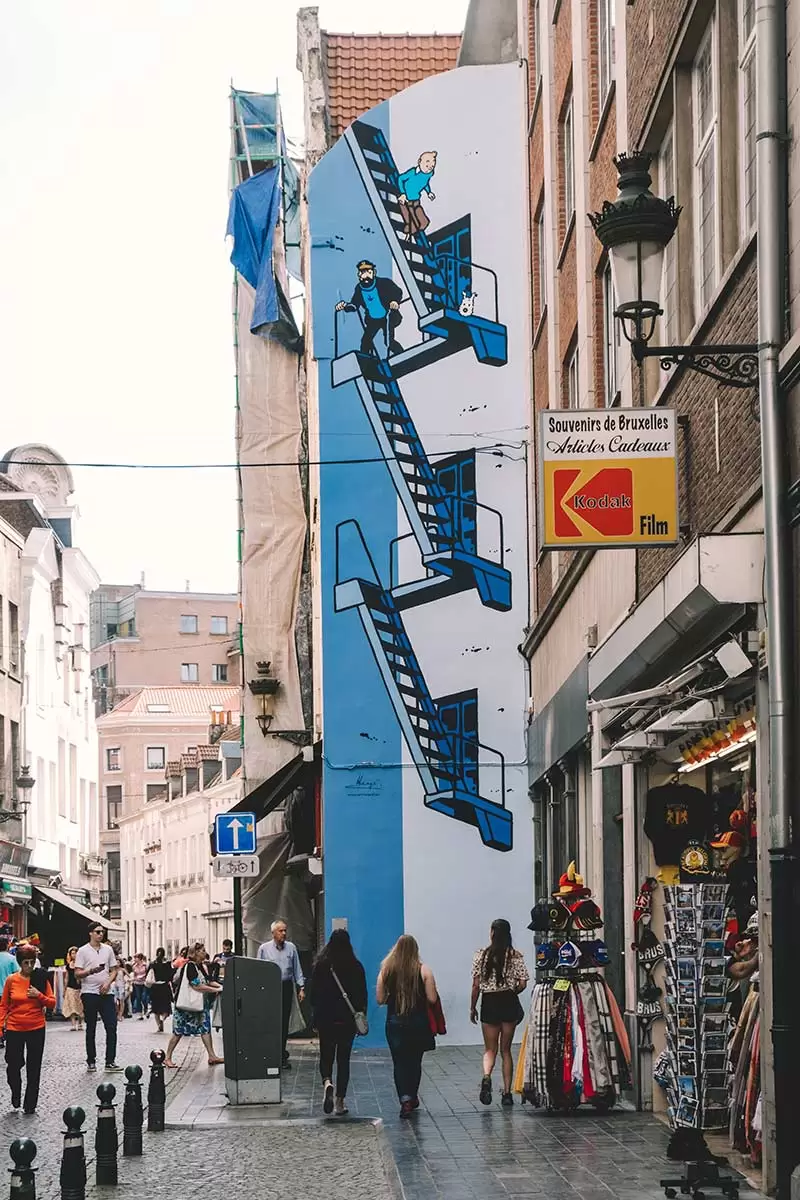
See Tintin by Hergé on Rue de l’Étuve
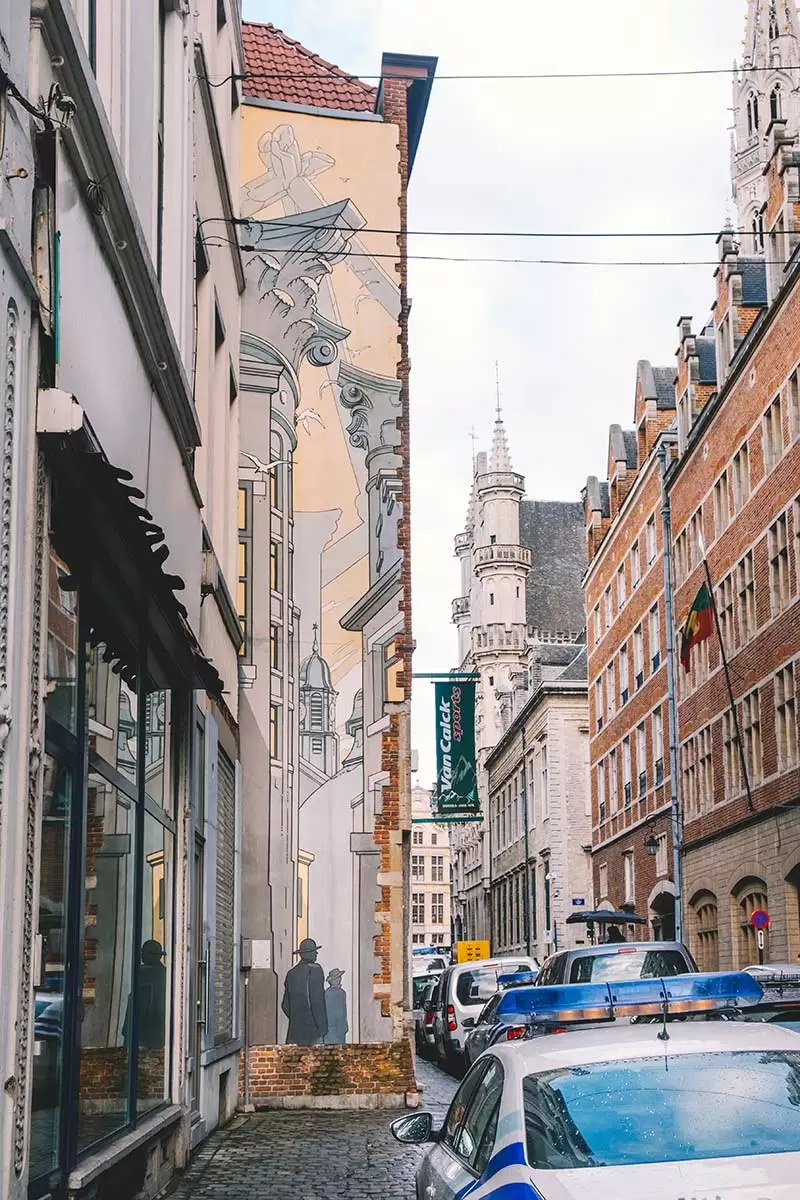
See ‘Le Passage’ by François Schuiten & Benoît Peeters on by Rue du Marché au Charbon 19
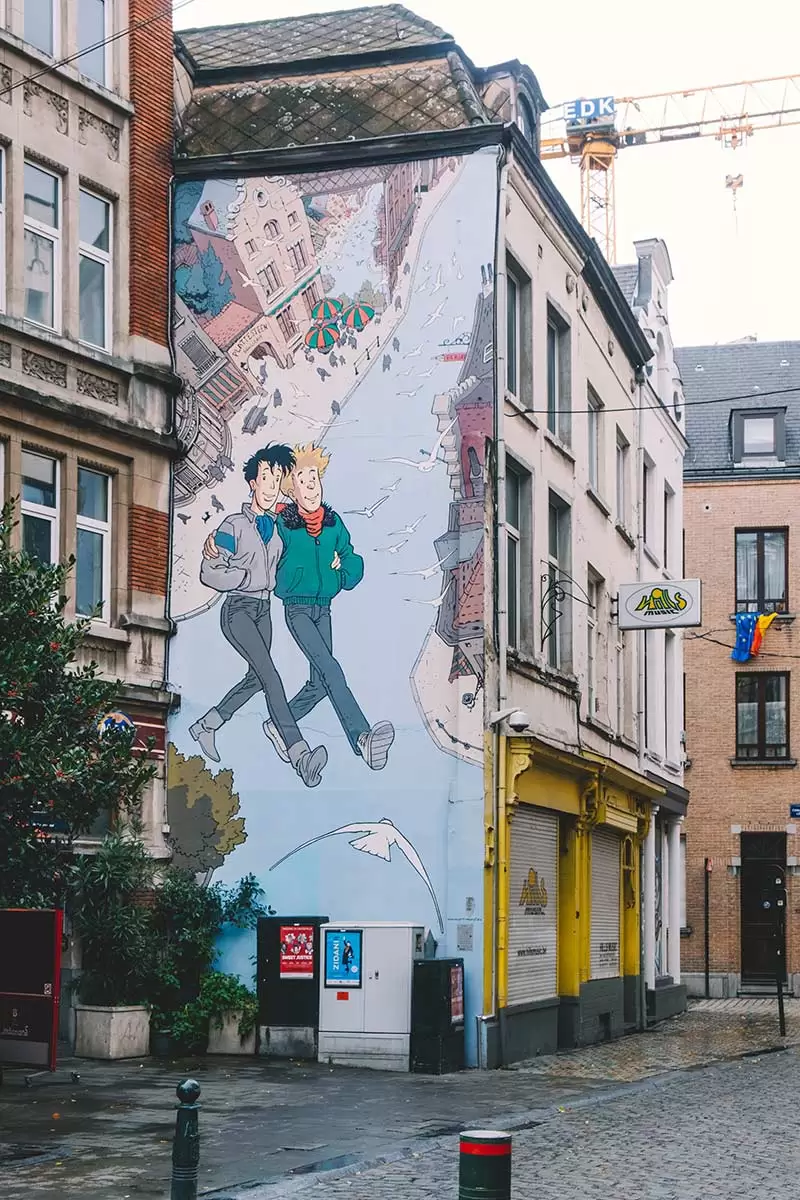
See ‘Broussaille’ by Frank Pé at Plattesteen
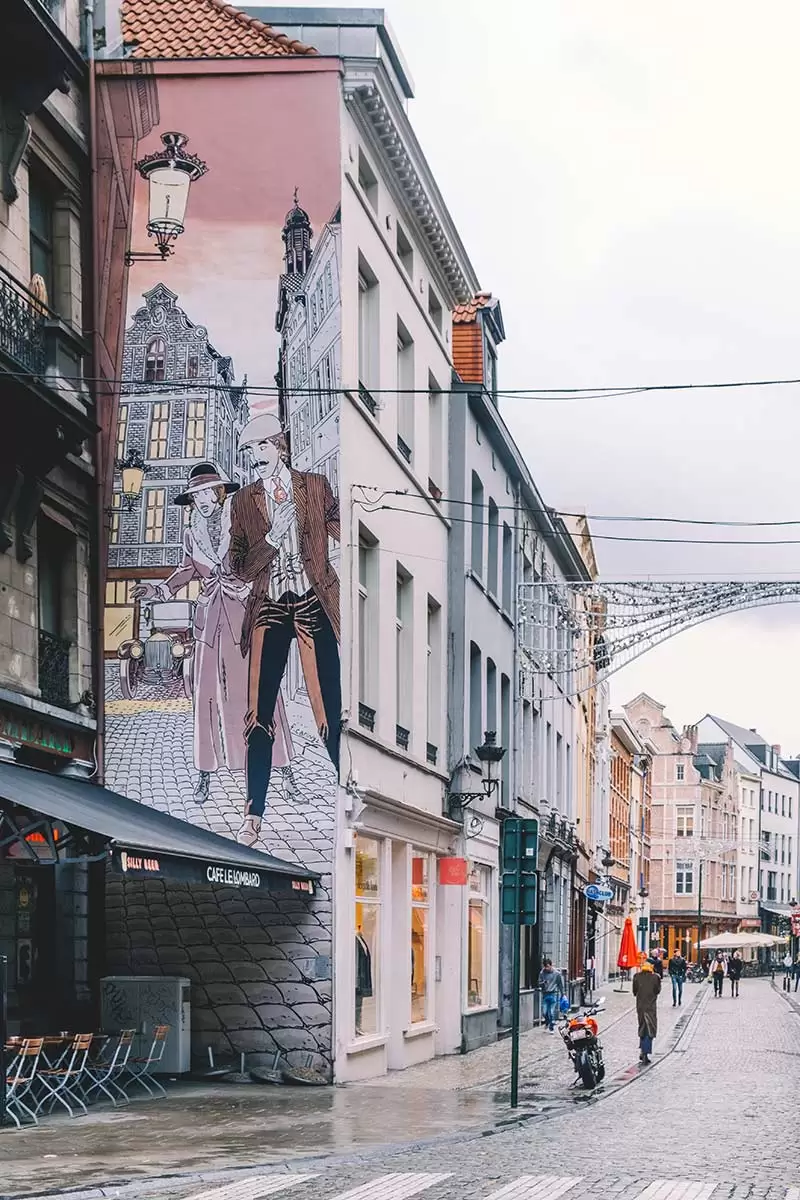
See ‘Victor Sackville’ by Francis Carin on Rue du Marché au Charbon 60
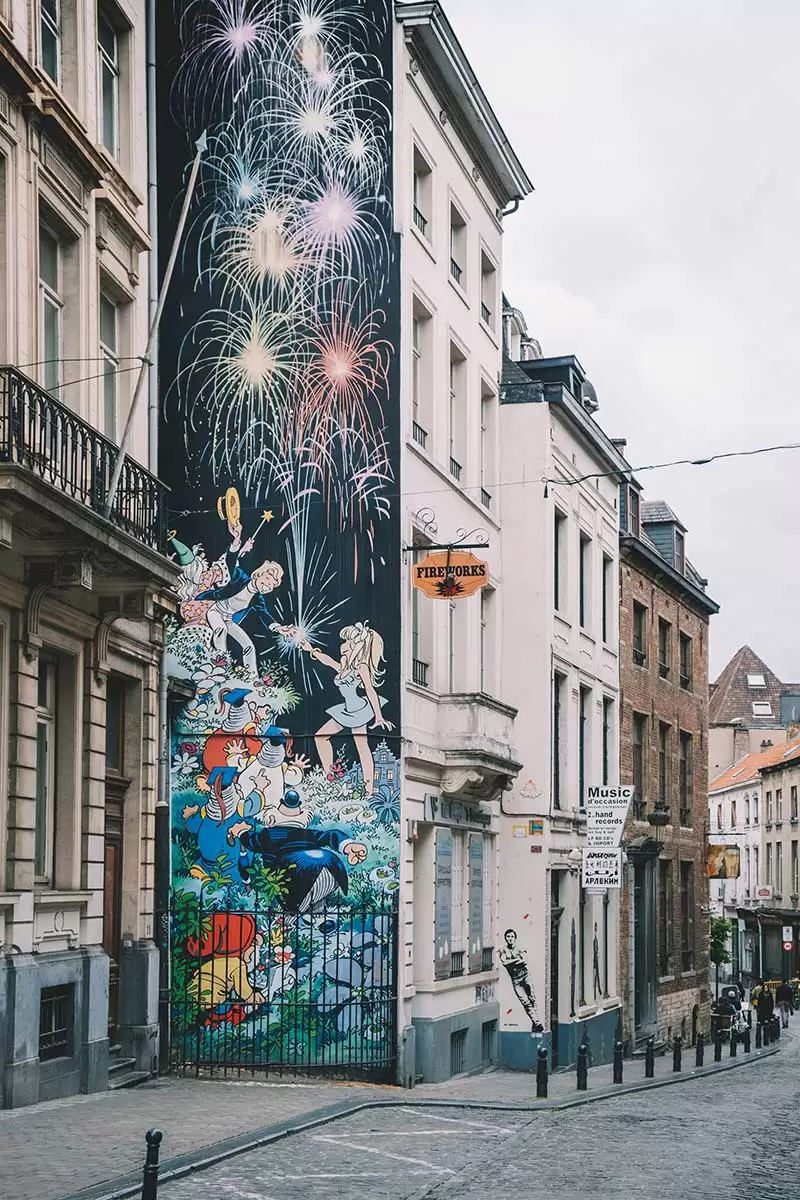
See ‘Olivier Rameau’ by Dany on Rue du Chêne 9
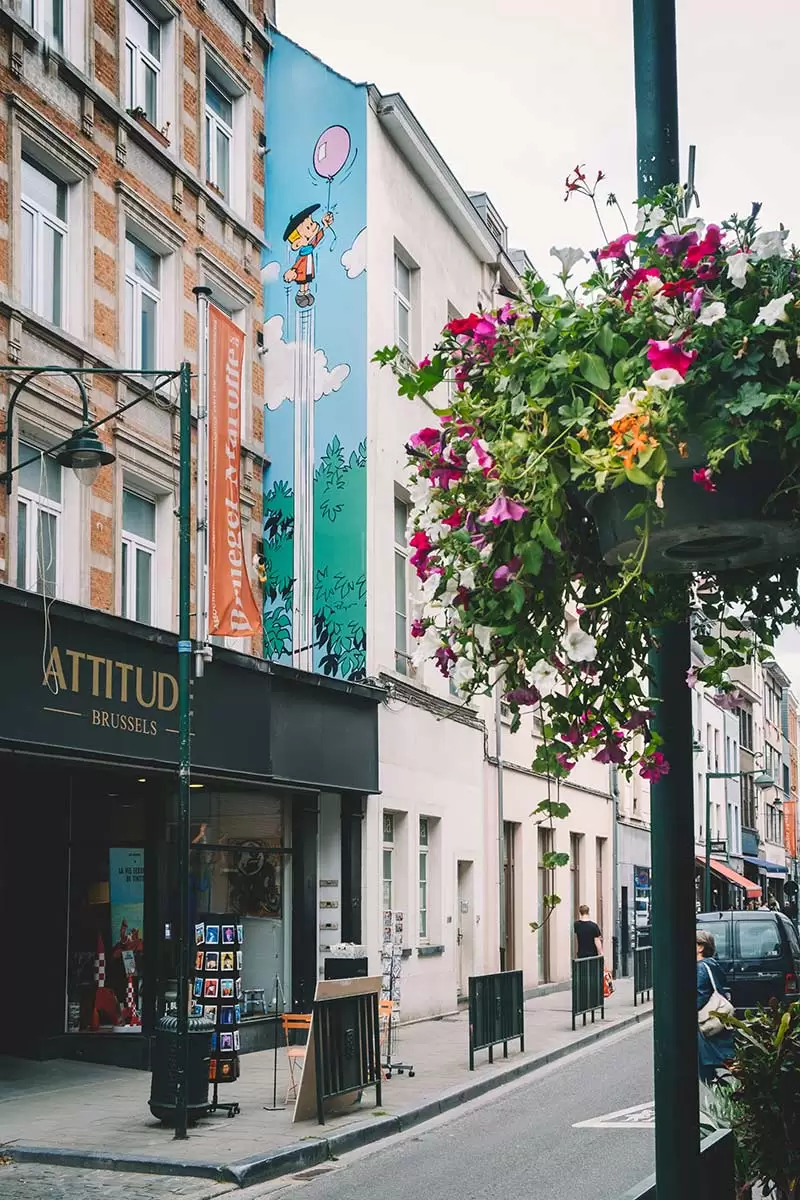
See ‘Benoit Brisefer’ by Peyo on Rue Haute 119
I’ve been to Brussels three times now and my absolute favourite thing to do in Brussels is still to scout out the street art murals that make up the Comic Book Route.
Belgium, especially Brussels, has a wonderful history and love for comic books and their creators. Did you know that Brussels was the birthplace of Tintin? To honour Belgium’s most famous comics the city of Brussels collaborated with the Belgian Comic Strip Center to install more than 50 large comic strips murals across the city.
These vibrant motifs show Tintin, Gomer Goof, the gauls Asterix and Obelix, Lucky Luke, Spirou and many others. Most of the murals are located inside the ‘Pentagon’, a local term used to describe the city centre due to its geometrical shape.
I’m mentioning this first on the itinerary because as you explore the city, you may want to take a few detours to see these incredible murals. Plus, hunting down these comic strips mural is a fantastic way to discover Brussels and explore some neighbourhoods that are less crowded by tourists.
How many can you find? Here is a complete list of the Comic Book Route.
2. Manneken-Pis
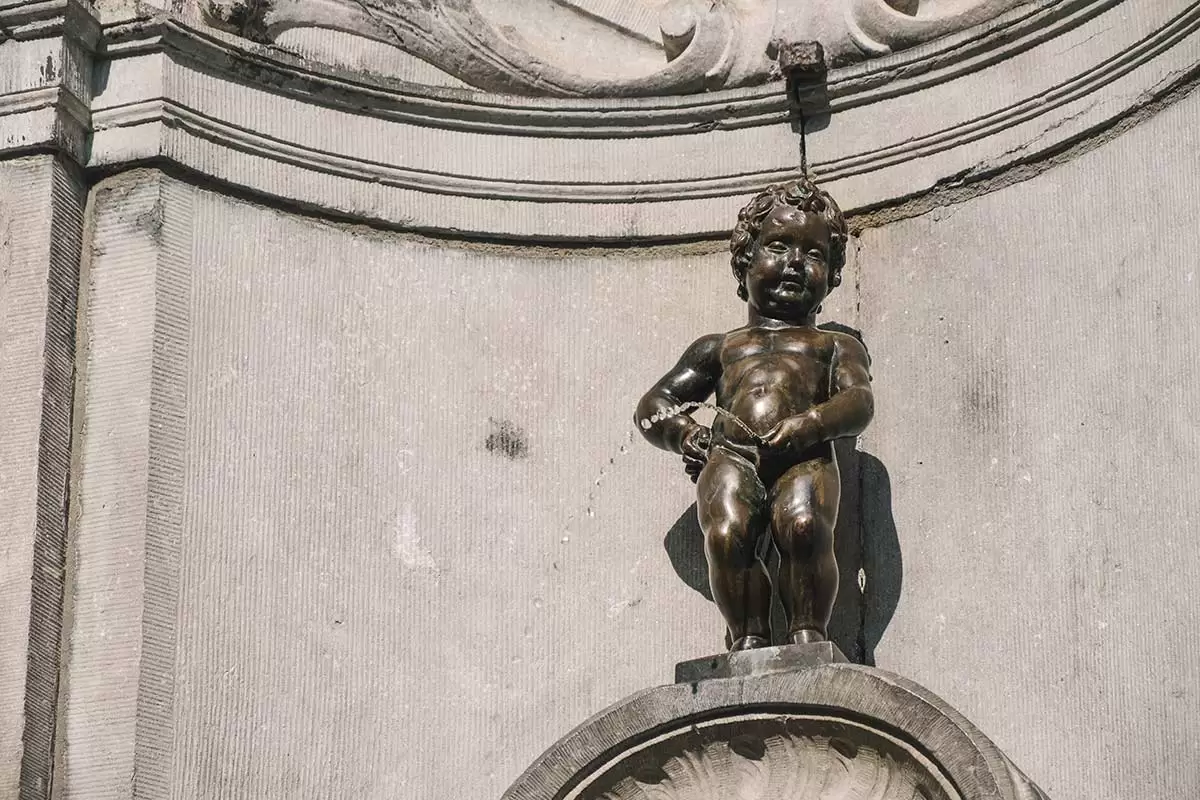
This small bronze statue of a little boy peeing boy was designed by Hiëronymus Duquesnoy the Elder between 1618 and 1619. When the Manneken-Pis was first put in place, it played an important role is the distribution of drinking water.
When Brussels’ water network changed in the 19th century, Manneken-Pis slowly became a symbol for the people of Brussels representing their sense of humour and independence.
What many people don’t know is that the real name of the statue is Menneke Pis . In the local Brussels dialect, een manneke means a small man, whereas een menneke means a little boy.
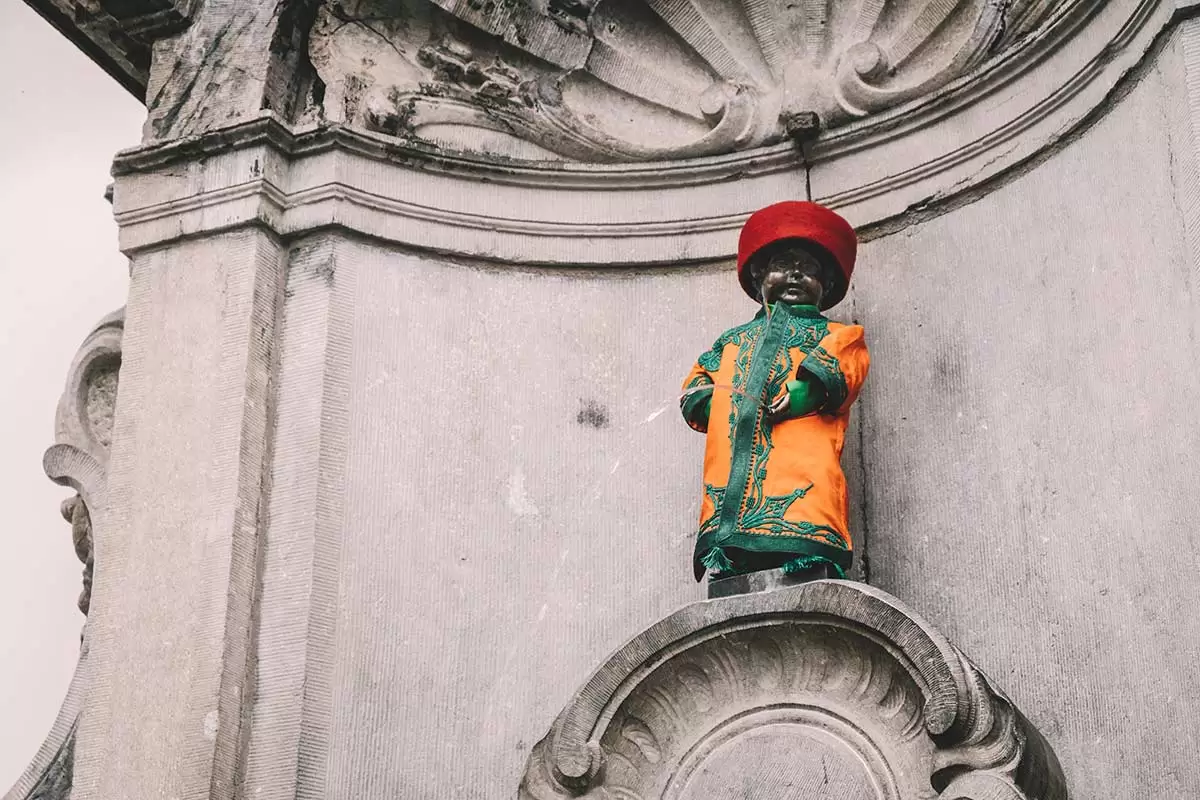
During special events and festivities, this little boy peeing is dressed up in clothes in celebration. The current statue you see is a copy made in 1965, however, you can see the original in the Museum of the City of Brussels
Location: Corner of Rue de L’Etuve and Rue du Chêne, and Rue des Grands Carmes Metro: Bourse and Gare Centralle Tram: Annessens
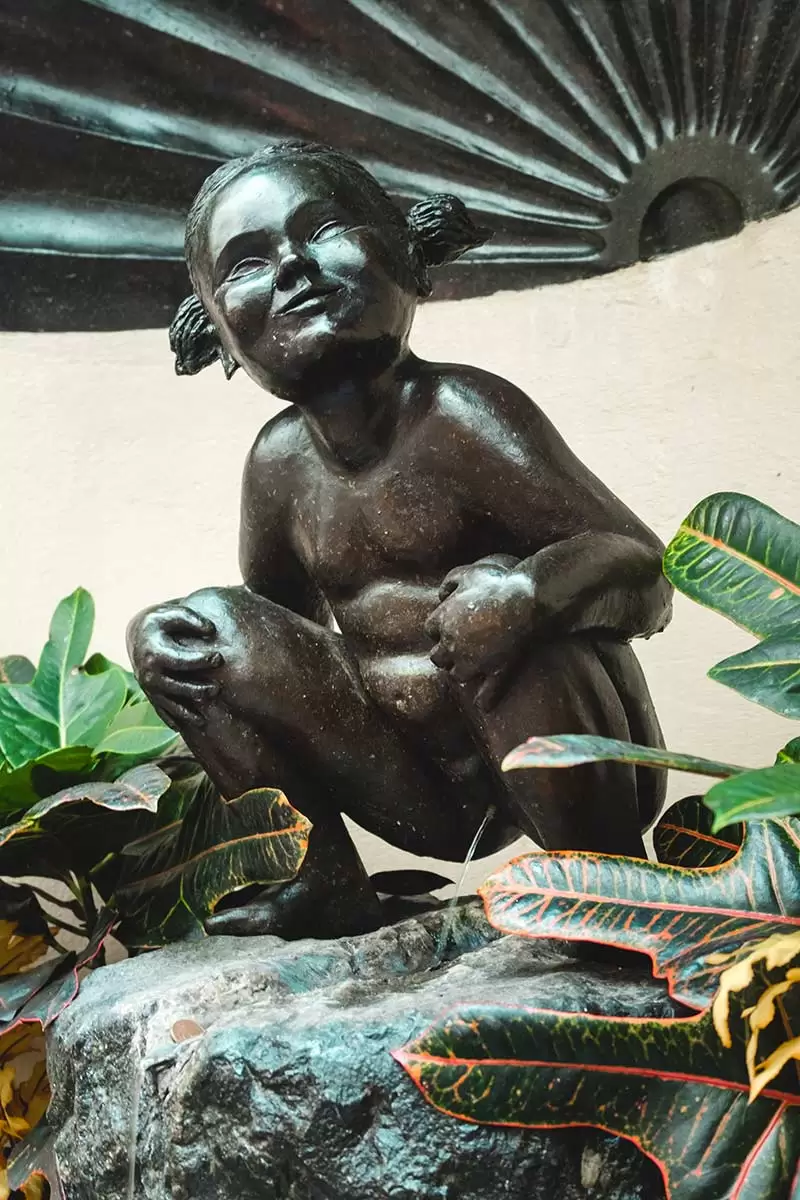
Location: Rue des Bouchers Metro: Gare Centralle and De Brouckère
Going to Brussels? Get my free Flemish and French travel phrase guides.
To create a trilogy, there is a third statue called Het Zinneke, which depicts the dog of Manneken and Jeanneke peeing next to the road just like his owners. As the legends goes, Manneken and Jeanneke trained their dog to pee the only way they knew how – in public.
Location: Rue des Chartreux 35, 1000 Bruxelles, Belgium Bus: Bourse
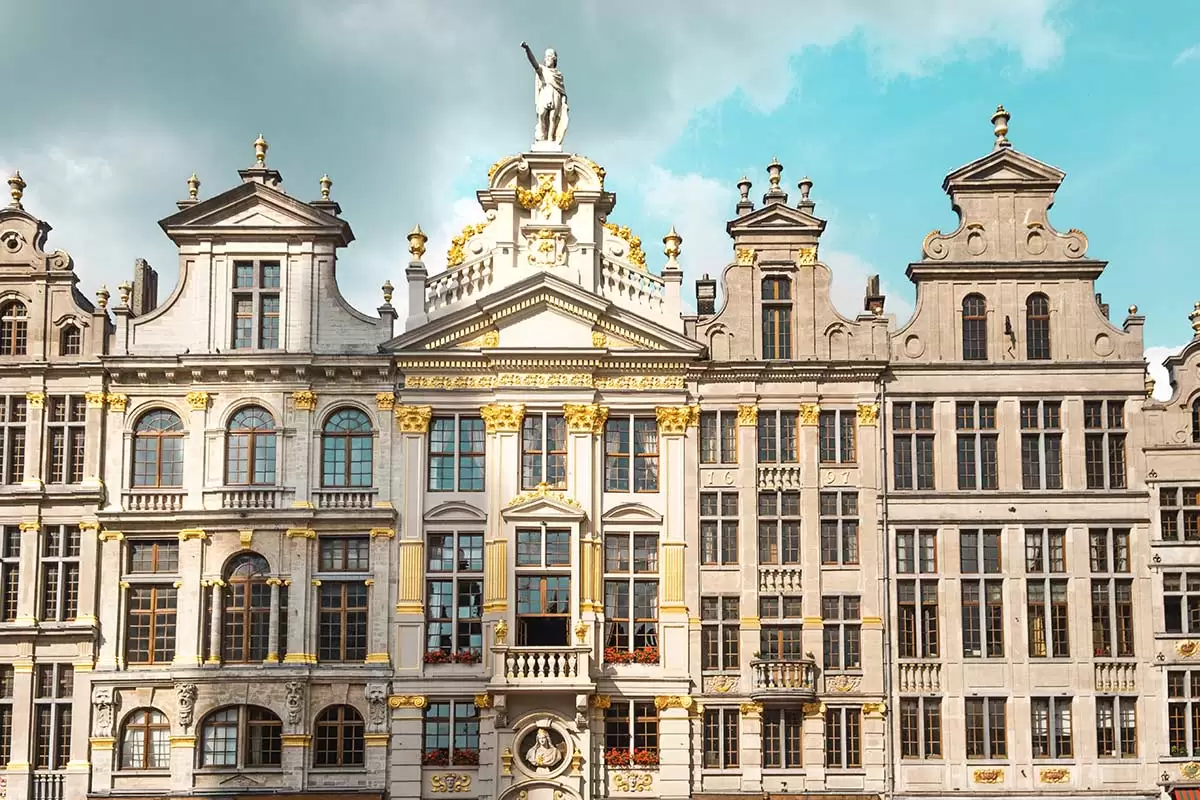
La Grand-Place was almost completely destroyed after it was bombarded by the French army in 1695. There is a wonderful mix of architectural styles including baroque, neoclassical and neo-gothic. Some of Belgium’s most opulent examples of 17th-century architecture can be found in the square with many buildings decorated in gold gilt.
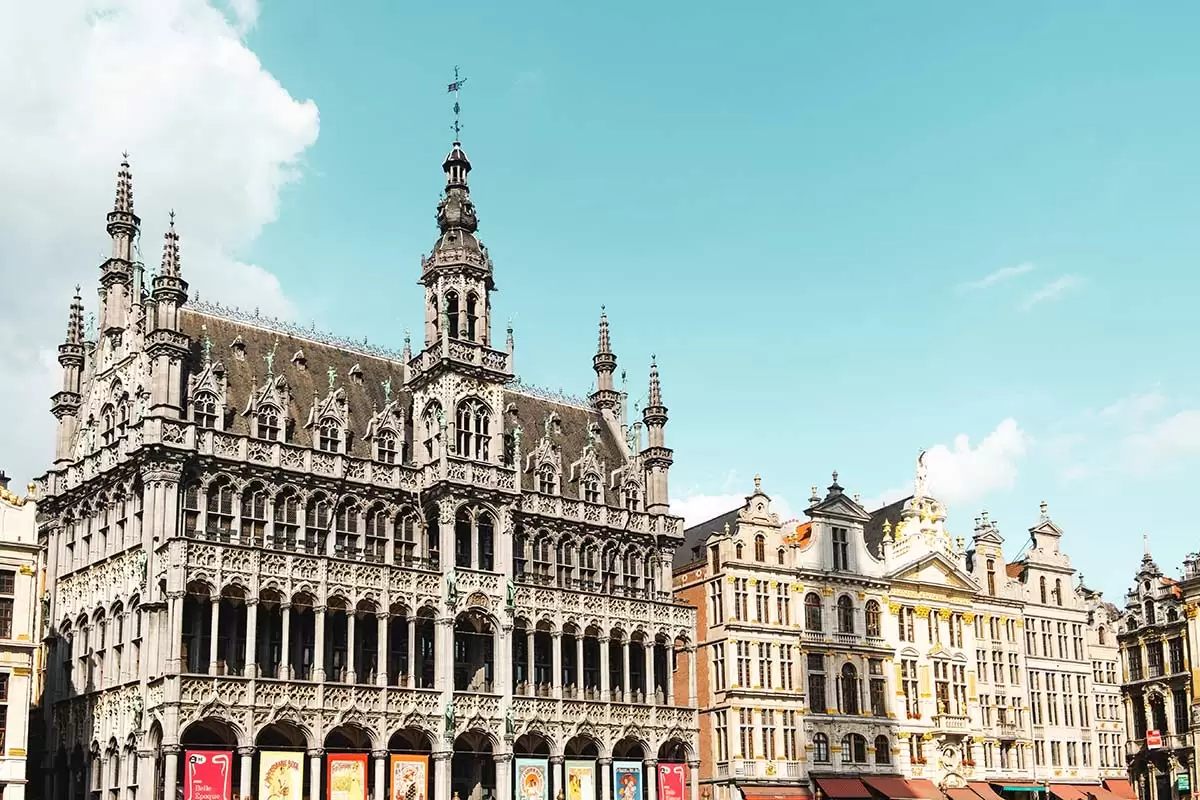
The most impressive building of them all is City Hall built in the Gothic style and with a tower that stands 96 meters tall.
Don’t miss the monument to local boy Everard t’Serclaes, famous for helping to successfully push Flemish troops out of the city and named a liberator of Brussels.
In 1388 Sweder d’Adcoude, Lord of Gaesbeek, sent his men to attack t’Serclaes, a move that sadly cost Everard his tongue and his life. Everard breathed his last breath in La Grand Place in the Maison de l’Etoile. To ensure your return to Brussels, be sure to rub the arm of his statue.
Metro: Bourse Tram: Bourse
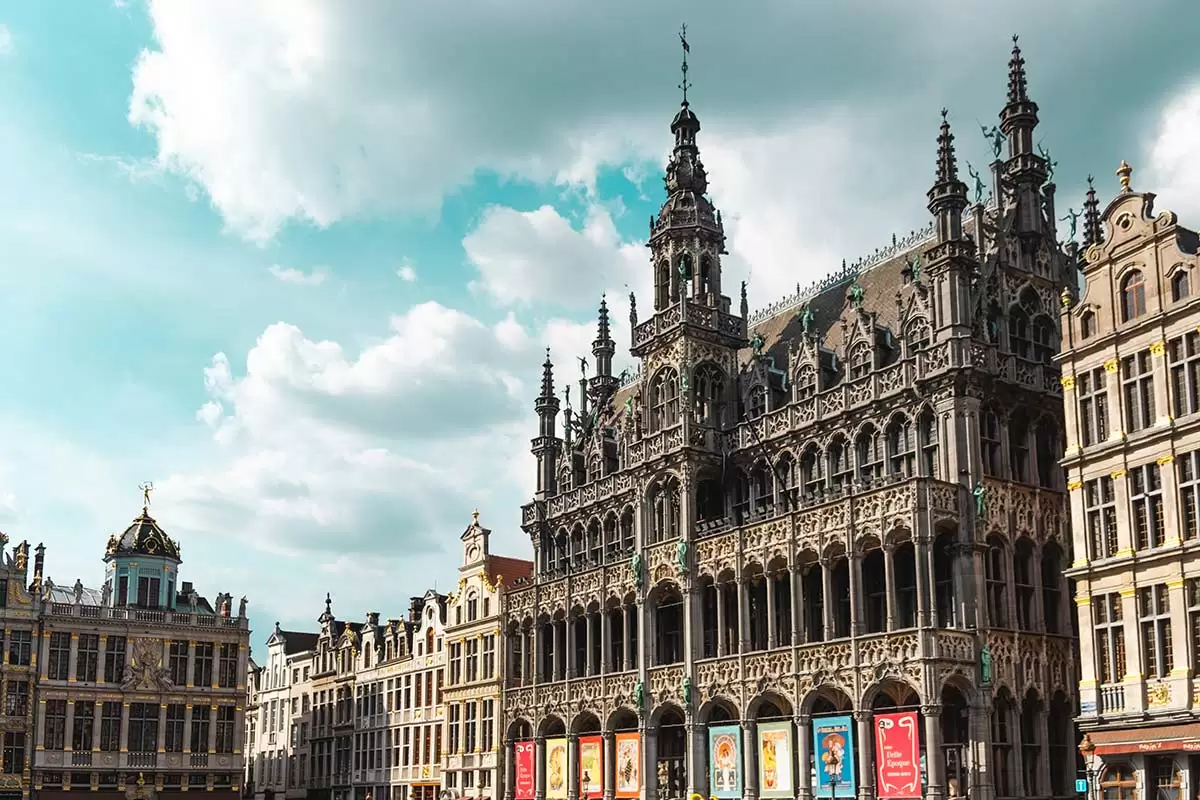
Opening Hours Tuesday to Sunday from 10am to 5pm. Closed on Mondays, January 1st, May 1st, November 1st, November 11th, December 25th
Admission: Adults: €8 <18 years old: free Seniors: €6 Students: €4
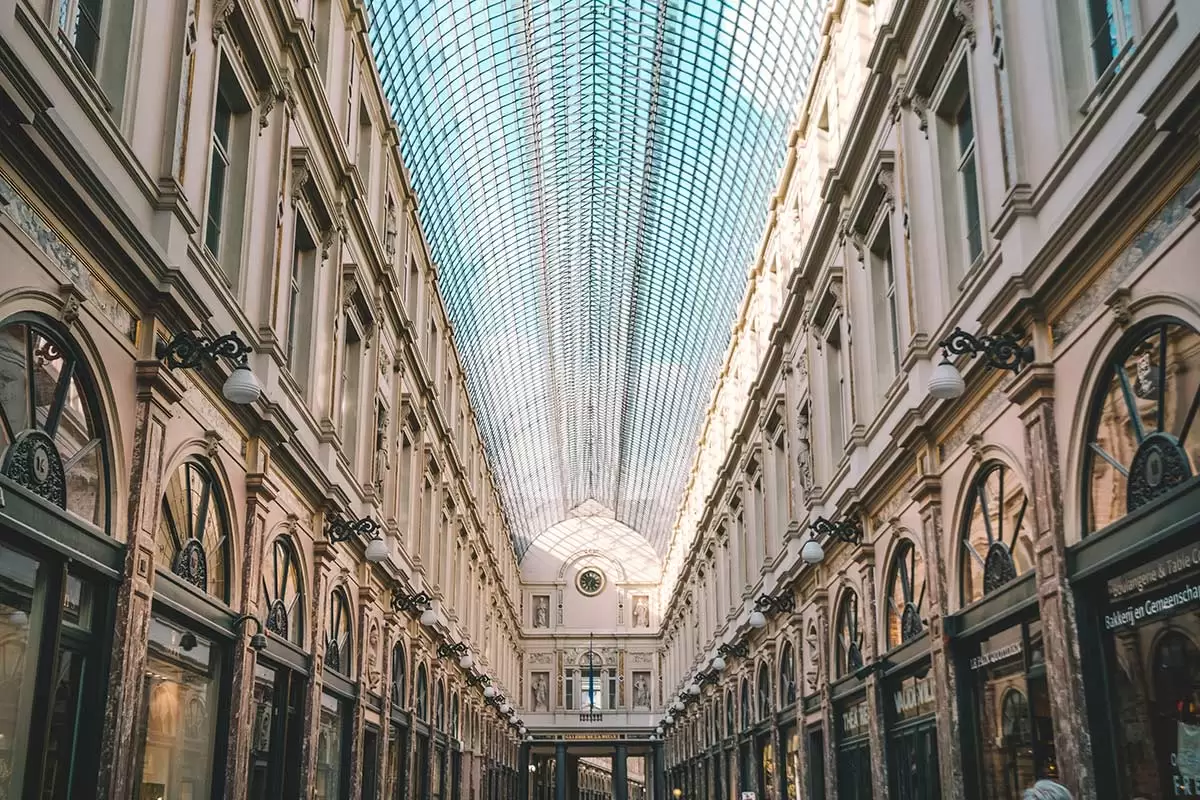
Split into two major sections, this is the oldest commercial galleries in Europe opening in 1847. Today is it still one of the most elegant. Each gallery is a hundred metres long and covered by a high glass dome that naturally lights the arcade.
Up until 1892, the Café des Arts that was located here was a meeting place for painters and writers of the time including Victor Hugo, Alexandre Dumas, and Edgar Quinet.
Galeries Royales Saint-Hubert is definitely one of the highlights in Brussels and a great place sit in a cafe, sip on a Belgian hot chocolate and watch the world go by.
Location: 5 Galerie du Roi Opening Hours: Shops close at different hours but are open every day from 9:00 til late. Metro: Gare de Bruxelles-Central Tram: Royale
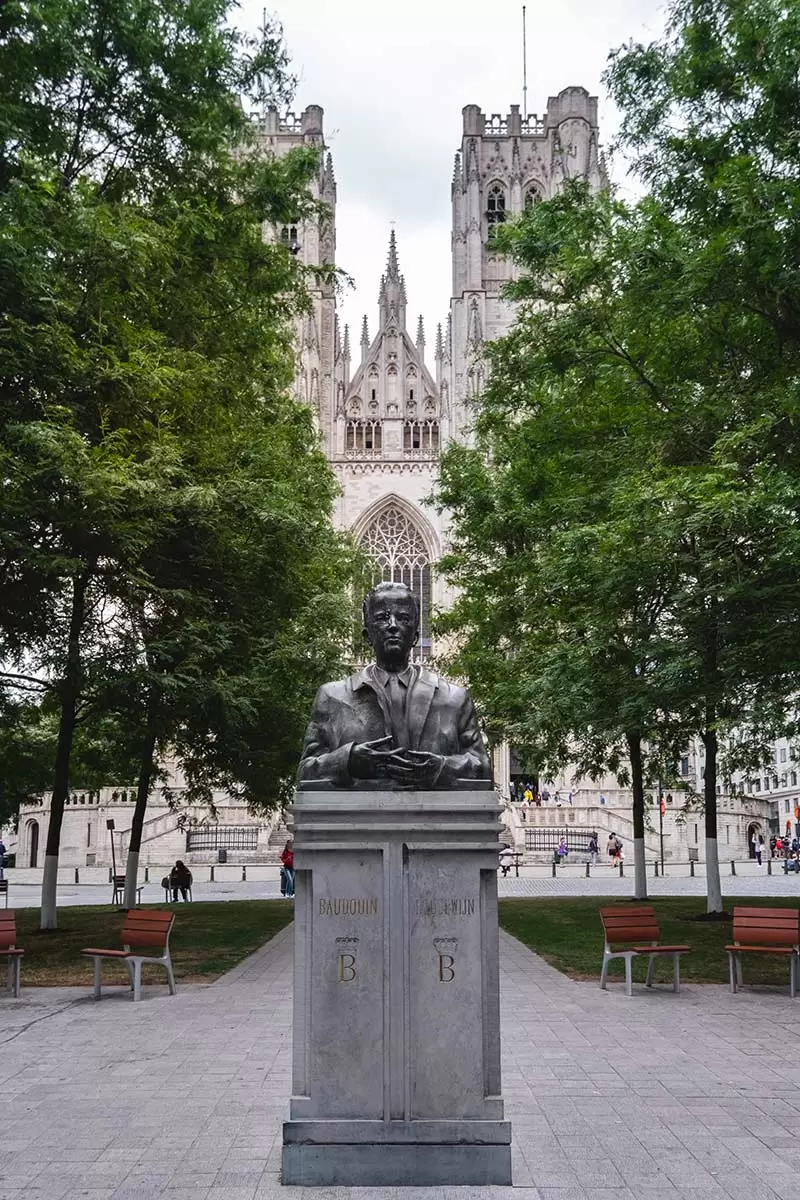
Due to its importance and location in Belgium’s capital, Cathedral of St. Michael and St. Gudula is often used for important ceremonies that are of national interest including royal weddings and state funerals. The “Treasure” of the cathedral is in the Chapel of the Blessed Sacrament, guarded by a wrought iron gate originating from the 18th century.
Location: Parvis, Sainte-Gudele. Opening Hours: Monday to Friday, 07:00 – 18:00 Saturday, 08:30 – 15:30 Sunday, 08:30 – 14:00 Metro: Gare Centrale and Parc Tram : Parc
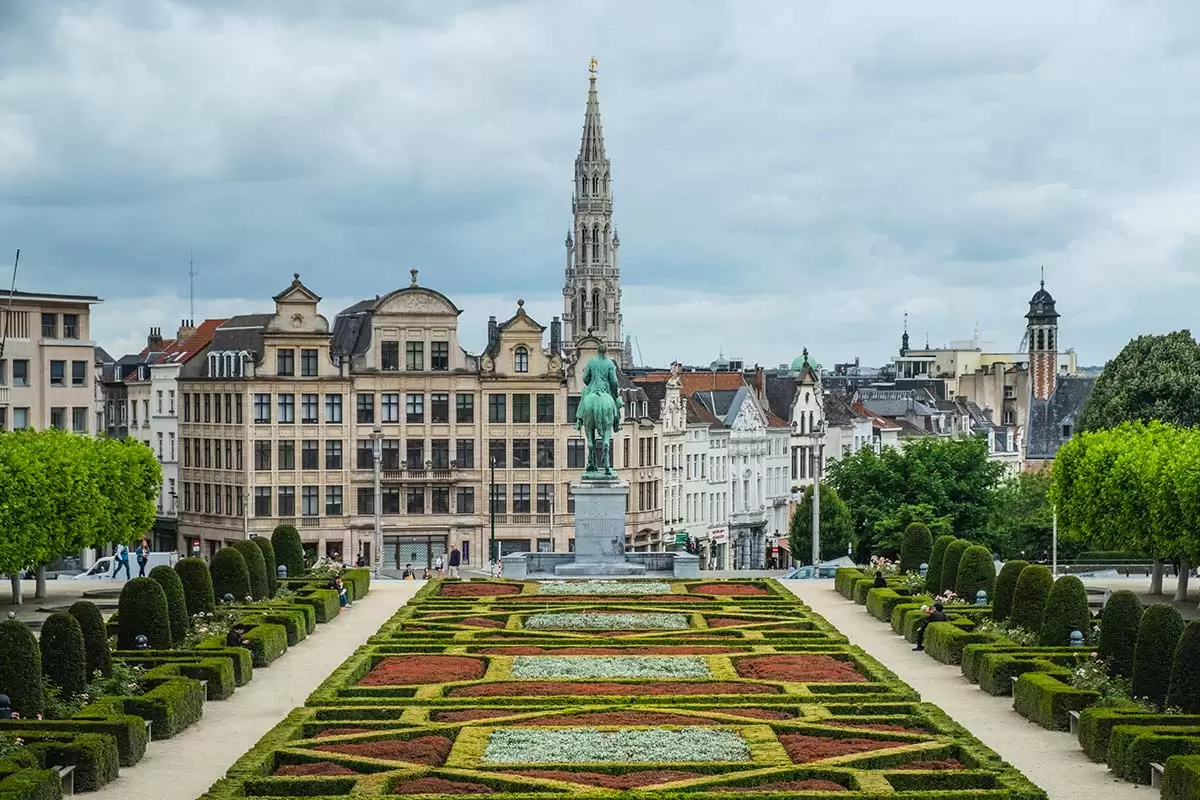
There are wonderful views over Brussels city from up here where you can see Brussels City Hall in La Grand-Place.
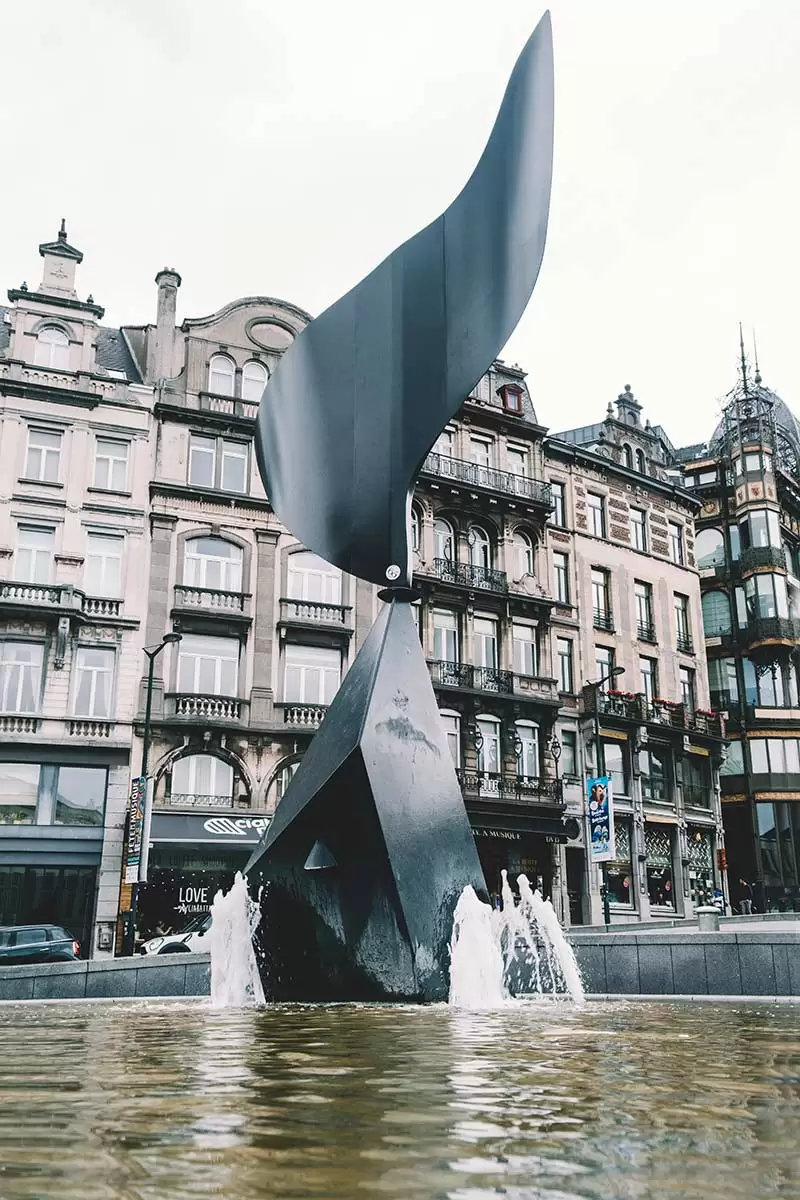
Metro: Gare de Bruxelles-Central Tram: Royale
10. National Basilica of the Sacred Heart (Basilique Nationale du Sacré-Cœur)
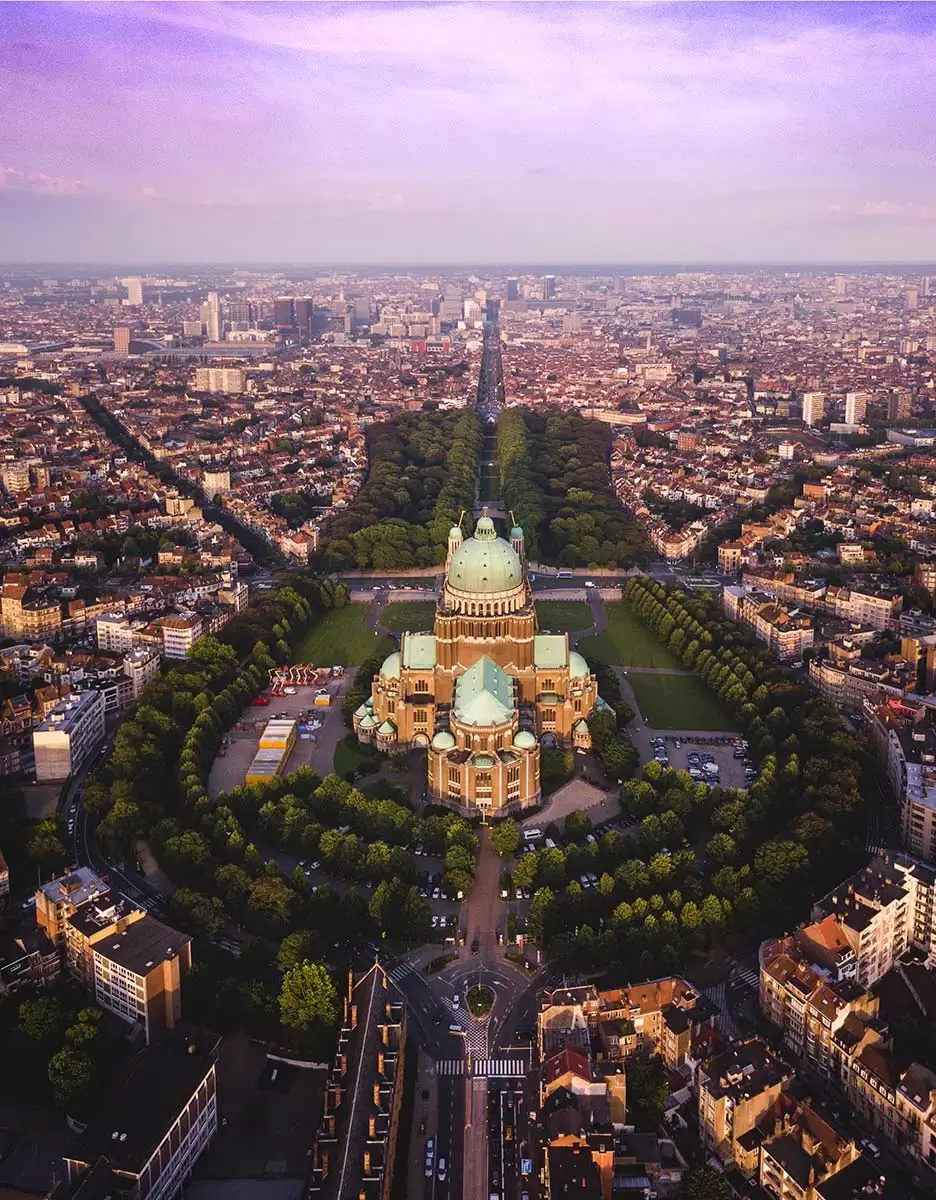
Inspired by the Basilique du Sacré-Coeur in Paris, the basilica stands 90 metres tall and 167 metres wide making it the fifth largest church in the world.
The National Basilica of the Sacred Heart was built to commemorate the 75th anniversary of Belgium’s independence. Its most attention-grabbing feature is the enormous green dome.
Make sure you head to the terrace of the basilica for panoramic views over Brussels from 53 metres up. You can also access the museum and other semi-hidden parts of the basilica from the dome.
Location: 1 Parvis de la Basilique.Koekelberg. Opening Hours: Summer Opening Hours: 09:00 to 17:00. Winter Opening Hours: 10:00 to 16:00. Metro: Simonis (Leopold II). Tram: Bossaert-basilique.
11. Parc Élisabeth
Located in front of the National Basilica of the Sacred Heart is the largest urban public park in the centre of Brussels. Be sure to take a stroll along its beautiful promenades lined with trees and flower-beds or sit on the lawn and relax. The park even has an outdoor gym, a resting area and playground.
Day 2 – Things to do in Brussels (Pink Pins)
The Palace of Justice or Law Courts of Brussels is the most important court building in Belgium. This monumental building is said to be the largest building constructed in the 19th century, covering 260,000 square feet (24,000 square meters) and bigger than St. Peter’s Basilica in Rome. This angered locals for a long time and the word “architect” became a derogatory term.
The Palace of Justice is visible from almost the everywhere in the city plus there is an impressive view from the Palace itself in Place Poelaert. You’ll definitely want to head inside to see its gorgeous staircases.
Location: 1 Poelaert Square Opening Hours: Monday to Friday, 08:00 – 17:00 Metro: Louise Tram: Poelaert and Louise
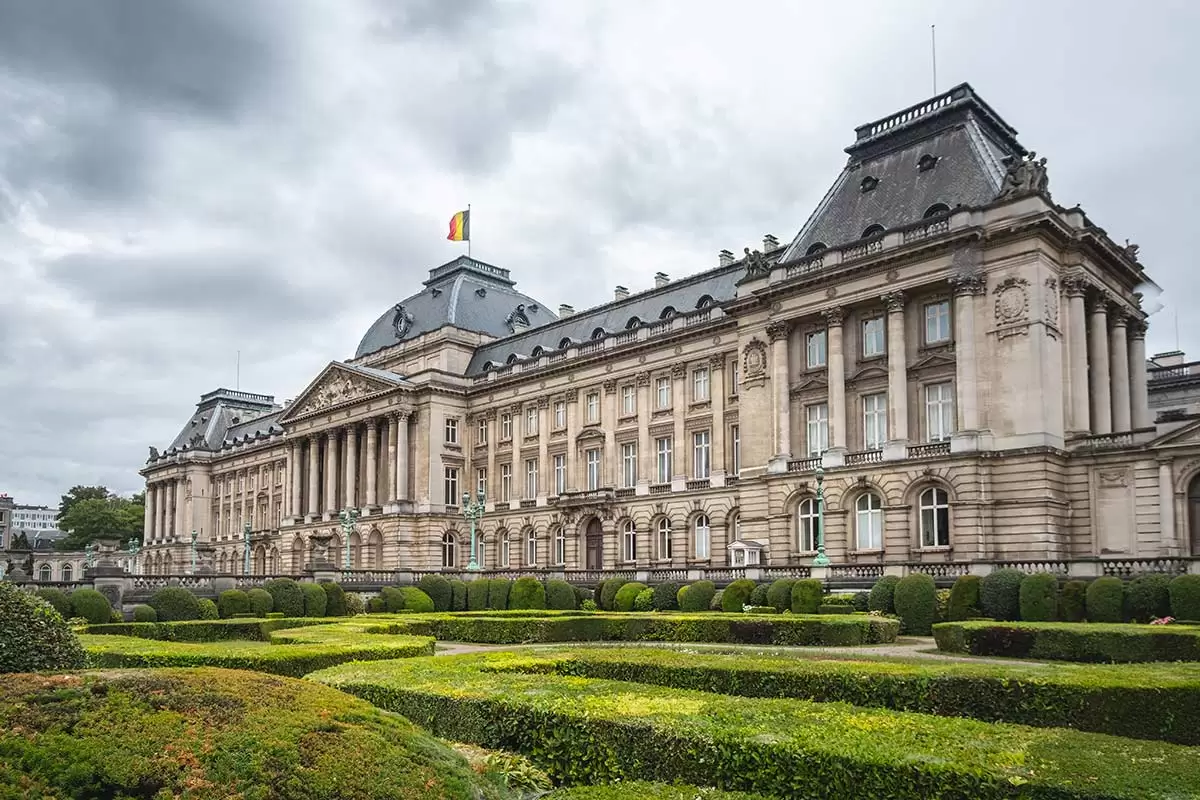
Location: Place du Palais, Paleizenplein. Opening Hours: Tuesday to Sunday, 10:30 – 17:00 last entry at 15:45, Open from 21st July to September Admission: Free as part of an official guided tour. Metro: Parc Tram: Palais
The Parc du Cinquantenaire, literally ‘Park of the fiftieth anniversary’ is more than just a large public park, it’s a national landmark in Brussels. The park was built during the reign of Leopold II to commemorate the fiftieth anniversary of Belgium’s independence in 1880.
Covering approximately thirty hectares, the park features various spacious gardens, a large arch, and three museums including Cinquantenaire Museum, Autoworld (a collection of more than 350 cars from different eras), and the Royal Museum of the Armed Forces.
For epic views over Brussels and the European Quarter, head to the top of the arch via the entrance at the Royal Museum of the Armed Forces. Admission is free!
Throughout summer the city holds numerous events in the park including concerts, club nights, festivals, drive-in cinemas, environmental days, aperitifs, and even the starting line to Brussels marathons.
Location: 11 Jubelpark Metro: Schuman and Mérode Tram: Place Saint Pierre
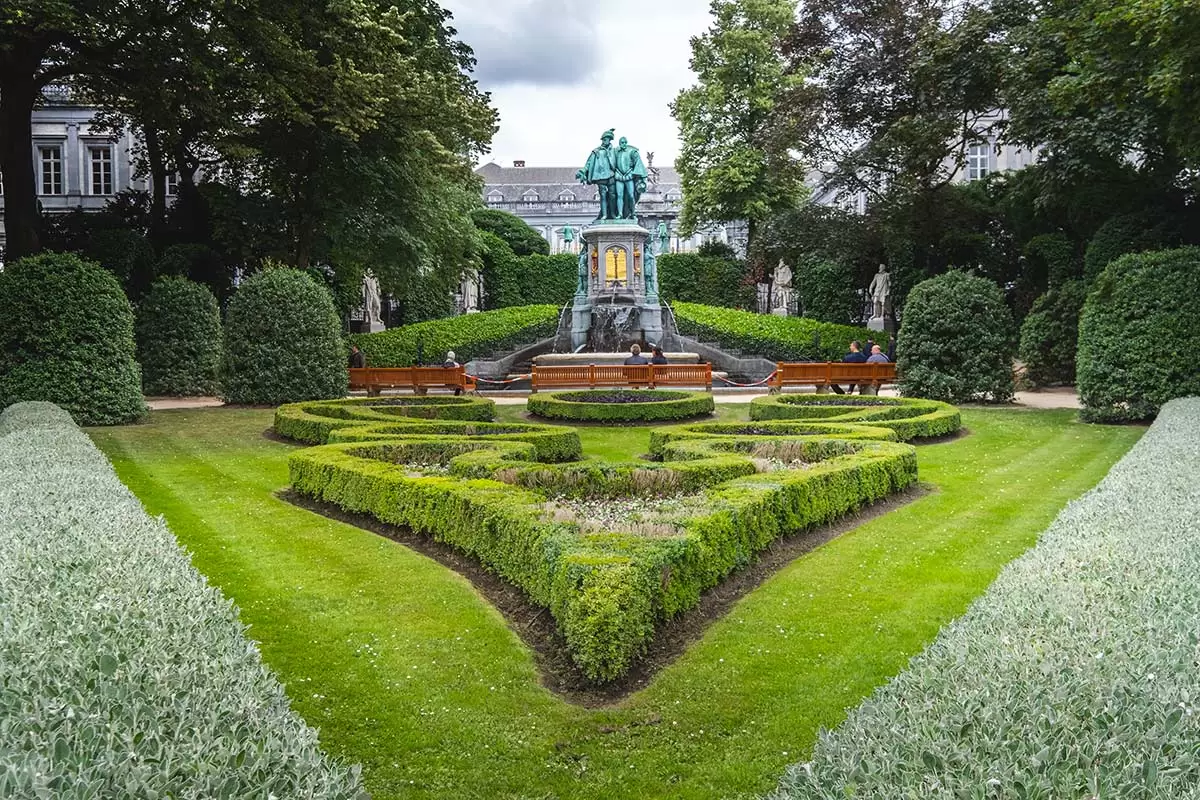
Location: 11 Jubelpark Metro: Porte de Namur Tram: Royale
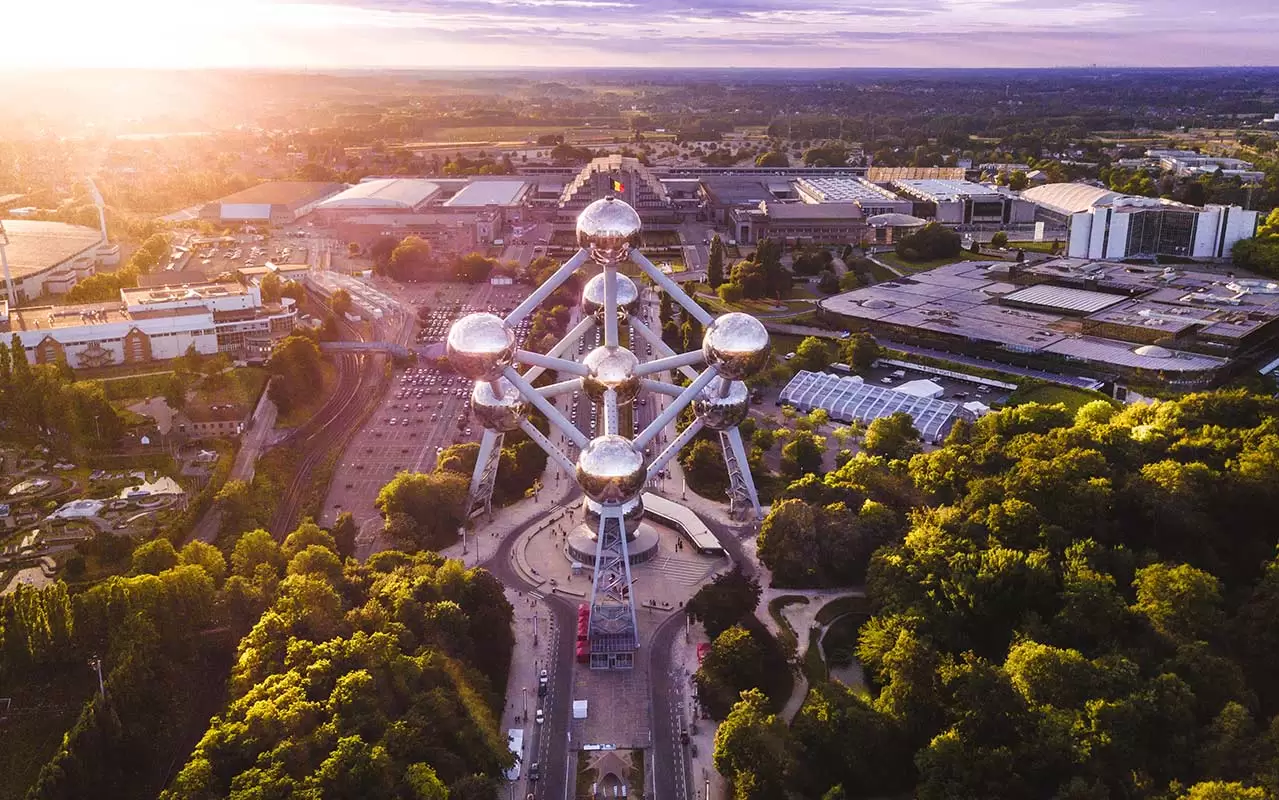
The Atomium stand 102 metres tall and is composed of nine spheres of 18 metres in diameter connected to each other by tubes with escalators. Inside the spheres are permanent and temporary exhibitions with the top-most sphere including a restaurant with wonderful panoramic views of the city.
The nine spheres of the Atomium represent an iron crystal magnified 165 billion times. They symbolise the faith one had in the power of science and in nuclear power.
Initially, the Atomium was only meant to be dismantled after for six months but thanks to its huge popularity it was left standing and soon became a symbol of ideas of the future and universality.
Location: Atomium Square. Opening Hours: Everyday from 10:00 to 18:00. The restaurant opens until 23:00. Admission: Adults (18-65): €15 Senior citizens(>65): €13 Teens (>115cm-17): €8 Kids (≤115cm) : €0 Buy tickets online here Metro: Heysel Tram: Heysel
Located near the Atomium are the Royal Greenhouses of Laeken, a complex of huge tropical, subtropical and cold greenhouses. The flora collections are a veritable feast for the senses. You’ll have to time your trip perfectly because the Royal Greenhouses are only open to the public for three weeks during Spring. This is an excellent and rare opportunity to see the wonderful architecture of Alphonse Balat, the mentor of Victor Horta, and the many plants in the greenhouses.
Location : Avenue du Parc Royal 61 Metro: Stuyvenbergh Tram: Araucaria
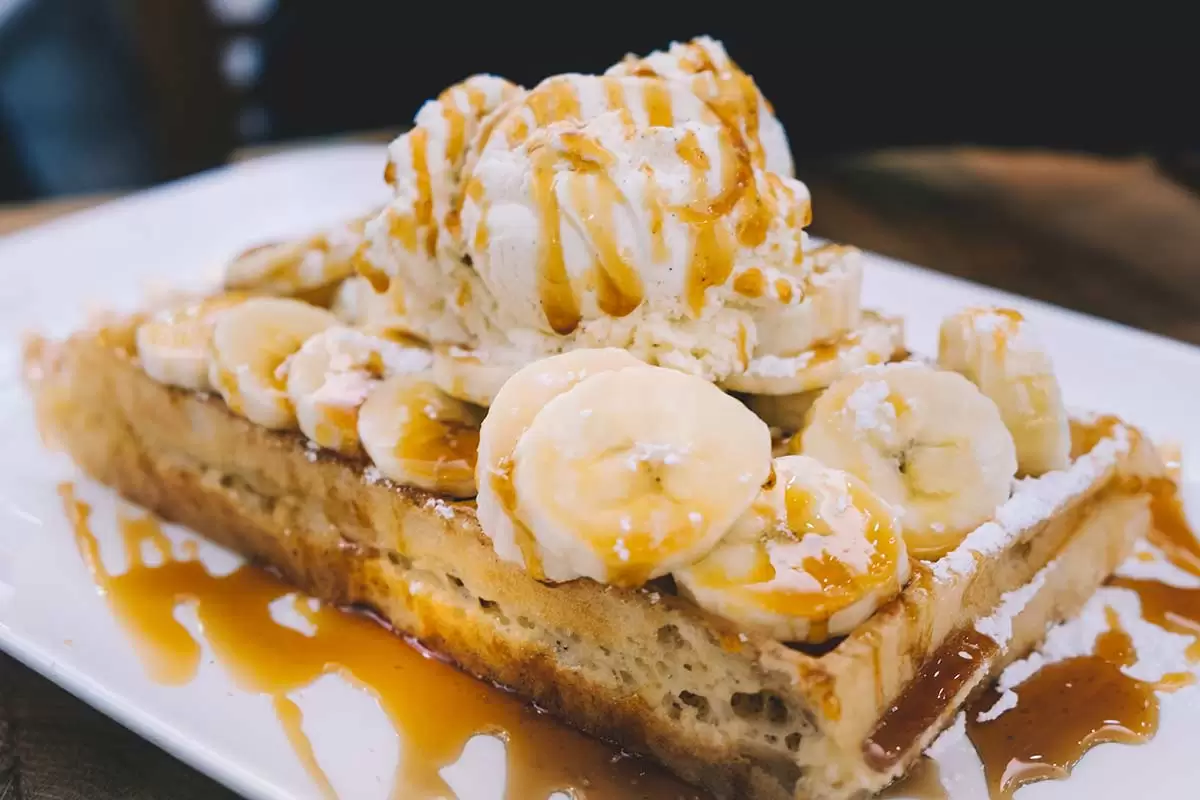
Belgian waffle with banana and ice-cream
Here are local culinary specialities to try in Brussels:
- Carbonade flamande: Stew made with meat, beer, carrot, onion and panela (brown sugar).
- Mitraillette : It consists of half a baguette with meat, sauce, salad and fries, all of it inside the bread!
- Fricadelle : Deep-fried sausage served with French fries.
- Waterzooi : Dish made of chicken or fish swimming in a vegetable broth (onion, leek, celery, carrot) and cream. Usually served with potatoes or rice.
- Lapin à la bruxelloise: Slow stove-cooked rabbit with Geuze, a typical Brussels beer that is brewed with sour cherries.
- Stoemp : Potato puree mixed with one or more types of mashed vegetables (it can be carrot, leek, spinach, Brussels sprouts…). Commonly served with sausages or pan-seared bacon.
- Chicon au gratin : This dish is made of endives wrapped in a slice of cooked ham and covered in béchamel; all of it oven gratinated.
- Faisan à la Brabançonne : Typical Belgian dish that’s made of young pheasant, butter, peanut oil, chicory (endive) and parsley.
- Moules frites: Cooked mussels and French fries.
- Caricoles : A speciality of Brussels, caricoles are sea snails cooked with chopped celery, parsley leaves, pepper seeds, ground pepper and a dash of salt.
- Pâté gaumais : Pie filled with pork marinated in white wine or vinegar with spices and local herbs.
- Belgian chocolate.
- Cramique: Raisin brioche.
- Speculoos : Crunchy chunky-textured biscuit made with brown sugar.
- Gaufres de Bruxelles: The Brussels waffle is a rectangular-shaped pastry that’s eaten warm and can be served with whipped cream and powdered sugar.
- And, of course, all Belgian beers .
Where to Eat in Brussels (Green Pins)
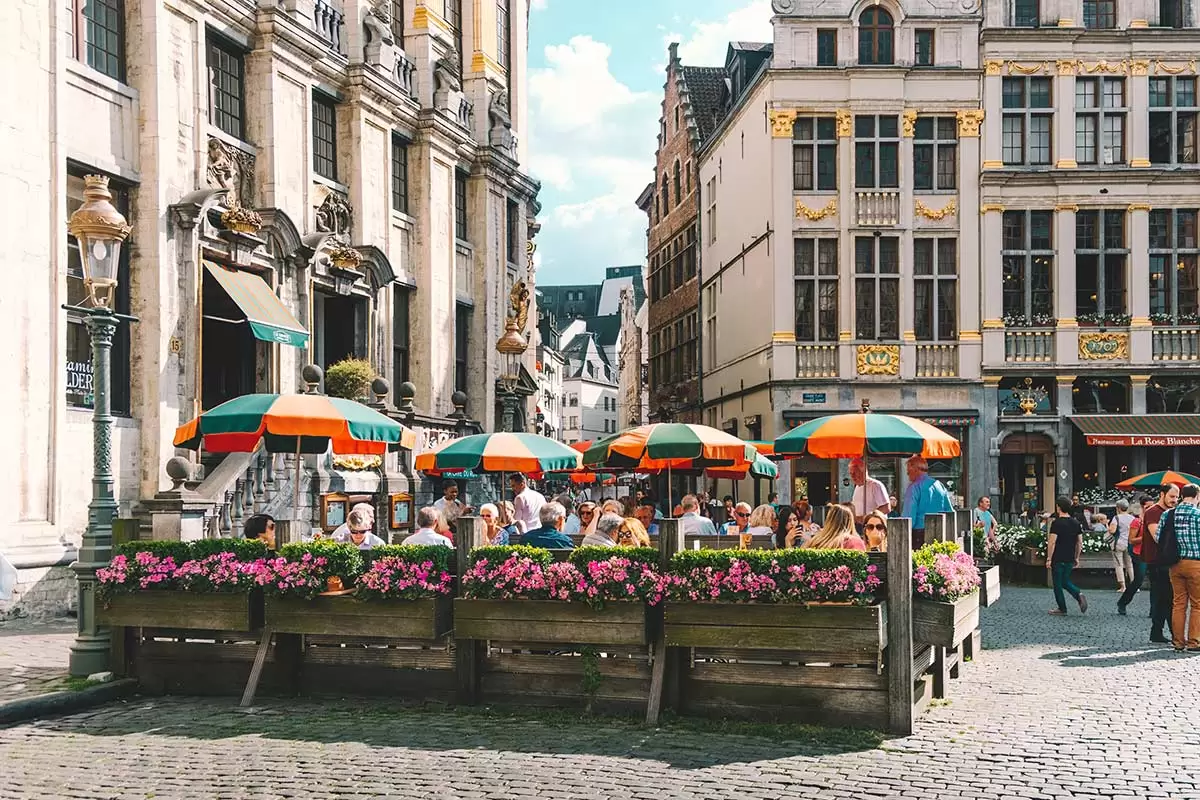
‘T Kelderke in La Grand Place
Wondering where to eat in Brussels? I recommend dining in typical bistros for your best chances of trying the dishes mentioned above.
This is one of Brussels’ most emblematic restaurants, founded in 1893. The star of the menu is “moules frites”, the quintessential Belgian dish. These can come in a variety of sauces: marinara, white wine, tomato or garlic, just to name a few.
Location: Rue des Bouchers 18, Brussels 1000
Nuetnigenough
In this brasserie restaurant, some of the best “Carbonades Flamandes” can be found, served with a beer picked from the great selection on offer.
Location: Rue du Lombard 25, Brussels 1000
La Roue d’Or
Traditional brasserie of Brussels, located next to the Grand Place, that serves “Waterzooi”, which originates from Ghent and has spread all over Belgium.
Location: Rue des Chapeliers 26, Brussels 1000
‘T Kelderke
Typical restaurant housed inside an old 17th-century beer cellar. All the food is fresh from the same day’s market and an excellent place to try “Chicon au gratin”.
Location: Grand-Place 15, Brussels 1000
Au Brasseur
Belgian beer is as world-famous, probably more, as Belgian food. Belgium is the world’s number 1 beer producer and Belgians are said to drink an average of 100 litres of the stuff per year. Here, you will find all the most popular beers in Belgium.
Location: Rue des Chapeliers 9, Brussels 1000
How to get to Brussels City from the Airport and Back
From sur charleroi (crl) to brussels and back.
Bus (shuttle bus) The best way to reach Brussels from the airport is by shuttle bus. The company Flibco runs buses that connect Charleroi Airport with Brussels-Midi (on Rue de la France) every 20-30 mins. The journey takes 1 hour and costs 14,20 EUR one-way ticket costs £15 and the return ticket costs 28,40 EUR. These can be purchased at the terminal or onboard the bus. Buying a ticket online is slightly cheaper and will give you priority if the buses are busy.
Once you reach Brussels-Midi station, you can take the metro, tram or train to get to other stations in the city. On the way back to the airport, arrive at the bus stop 15 minutes before its scheduled departure to get a good spot in the queue.
Bus and train From Charleroi Airport you can catch a bus to Charleroi Train Station and take a train to Brussels from there. The combined bus & train ticket to/from Brussels costs around 9,90 EUR (depending on train fares).
From National Zaventem (BRU) to Brussels and back
Train: Quickest and cheapest The train is a good option to reach central Brussels from Zaventem. Trains stop at all the stations in Brussels and tickets start from 7,20 EUR . The journey only take 20 minutes. The train station is located on the lower ground floor of the airport. Check the latest times and prices here.
Bus: recommended for the European zone The company De Lijn connects the airport with the centre of Brussels and the company STIB does with the European Parliament. The ride time is between 30 and 40 minutes and it’s the recommendable option for business travellers or tourists who live in the European district. Check the lastest times and prices here.
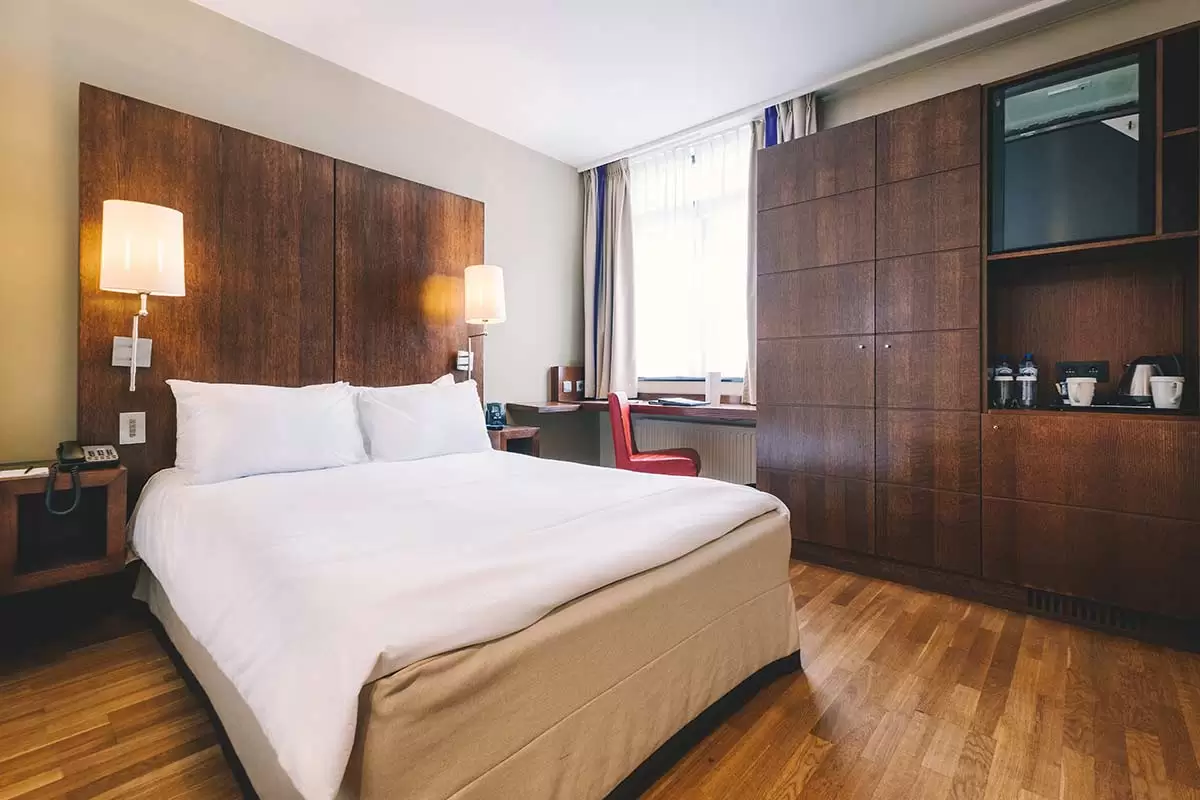
For an alternative accommodation option, I would also recommend renting out one of these apartments or rooms through Airbnb . Cute Airbnb options are popping up all over the city so you’ll find some really beautiful places at very affordable prices. If it’s your first time get US$65 OFF here or get £50 OFF your first stay here , when you sign up using my unique reader referral link.
Got more time in Brussels? Here are more things to see in Brussels and Belgium (Yellow Pins)
In brussels.
- Mini Europe – Located next to the Atomium is Mini Europe Park. Inaugurated in 1989, see over 350 reproductions on a 1 to 25 scale that represent 80 cities of the European Union.
- Royal Museums of Fine Arts of Belgium (Musees Royaux des Beaux-Arts De Belgique) – Explore the size museums that make up the Royal Museums. Not to be missed is the Oldmasters Museum with its famous “Rubens Room”, which houses more than 20 paintings by the artist and Magritte Museum with the richest collections of paintings by the Belgian surrealist painter René Magritte.
- Hergé Museum – Immerse yourself in the world of Tintin. Fans of Tintin won’t want to miss visiting Hergé Museum to see exclusive illustrations of the beloved detective and his dog Snowy. Even though the museum runs a shuttle service to the museum, this tour includes museum entry and round-trip transportation from Brussels for slightly cheaper.
Beyond Brussels
- Belgium’s Cutest City: 10 Wonderful Things to Do in Bruges
- Ghent Day Trip Itinerary: Top 10 Things to See in Ghent in One Day
- Day trip to Antwerp from Brussels
I hope this guide has answered all your questions and helped you plan your two days in Brussels. If you still have any questions or concerns, please reach out and leave a comment below. I’d be happy to help where I can. If not, then I wish you a wonderful trip!
Merci / dank je (thank you) for reading! 😉
Like it? Pin it for later
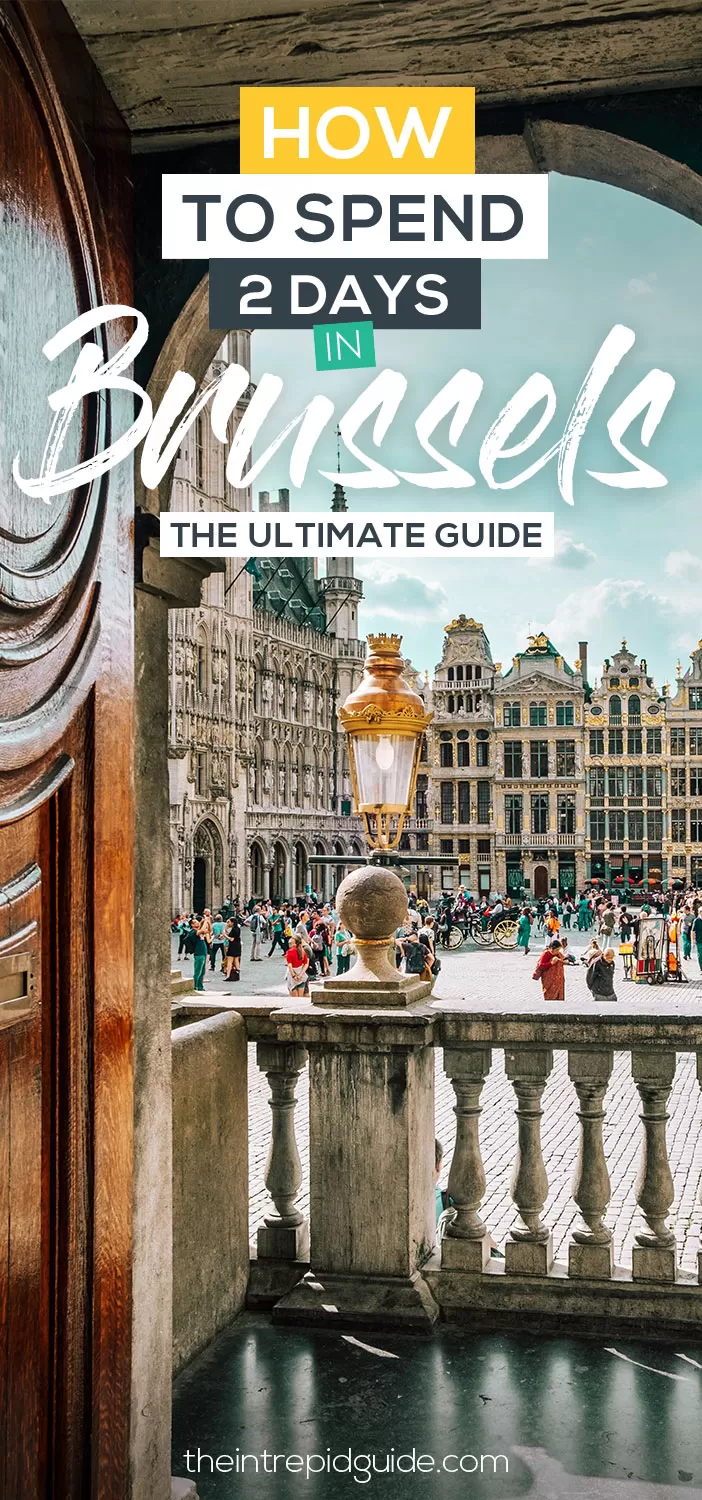
Sources Visit Brussels | Visit Flanders
Over to you!
Do you have a question about this guide to Brussels? Have you visited Brussels before? What else would you recommend doing? Tell me below! Let me know using the comments section below or join me on social media to start a conversation.
Thanks for reading and I hope you enjoyed this post.
Like what you see? Subscribe using the form below to have all of my posts delivered directly to your email.
Success! Now check your email to confirm your subscription.
There was an error submitting your subscription. Please try again.
Get my best language and travel tips FREE by email...
Subscribe to my newsletter to receive detailed travel guides, exclusive travel and language learning tips, priority access to giveaways and more!
I will never give away, trade or sell your email address. You can unsubscribe at any time.
Michele creates language learning guides and courses for travel. What separates her from other instructors is her ability to explain complex grammar in a no-nonsense, straightforward manner using her unique 80/20 method. Get her free guide 9 reasons you’re not fluent…YET & how to fix it! Planning a trip? Learn the local language with her 80/20 method for less than the cost of eating at a tourist trap restaurant Start learning today!
70+ Flemish Dutch Phrases for Travel with Pronunciation
70+ survival danish travel phrase guide with pronunciation.
Hello, Michele. Very interesting article, as always. Just a little comment: it says the French army bombarded the Grand Place in 1965…obviously it’s a typo since the right date is 1695. 😉 Greetings and keep up the good work!
Ah! Yes, a silly typo. I appreciate the feedback. Thank you!
Leave a Comment Cancel Reply
Save my name, email, and website in this browser for the next time I comment.
This site uses Akismet to reduce spam. Learn how your comment data is processed .

If you don't know where you are , how do you know where you're going? Find out how well you know Italian grammar today!

20+ Brussels Travel Tips & Tricks: Must-Knows Before You Visit
Last Updated: April 15, 2021
*FYI - this post may contain affiliate links, which means we earn a commission at no extra cost to you if you purchase from them. Also, as an Amazon Associate I earn from qualifying purchases. Check out our Privacy Policy and Disclosure. for more info.
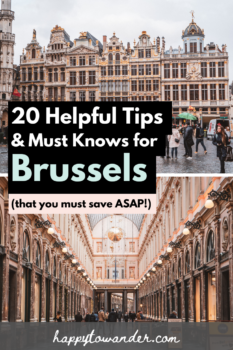
Looking to make the most of your time in Brussels, the beautiful capital of Belgium? Here are some must-know travel tips before your visit.
I have to admit, I screwed up big time on my first visit to Brussels.
The first time I visited this sugary Waffleland, I was no more than a beginner backpacker in Europe midway through her first long term trip, with an ego and confidence inflated after several “easy” weeks of travel in Paris and London.
Unsurprisingly then, when I met my match in Brussels, mistakes were made, expectations ruined and illusions shattered…
… I definitely did not do the city properly, I’ll tell you that.
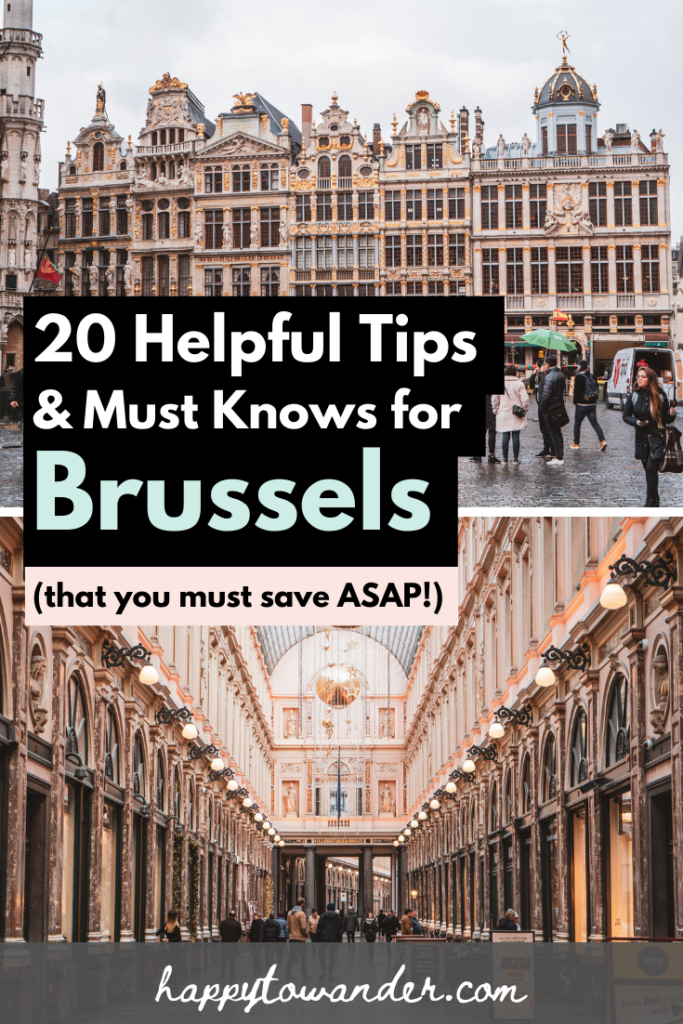
Save these Brussels travel tips for later!
You’ll be very glad you did.
And so for a long time, I thought I hated Brussels. Like truly, hated it! In fact, between you and me, this blog post was initially published in 2014, and in it I spewed a looot of vitriol about why Brussels was not the city for me.
Then something changed. I had to visit Brussels for work one day. Then I visited again. And again. I mean, call it exposure therapy, but whatever it was, it worked! I am now a believer, and see how poorly I had done Brussels justice on that first visit so many years ago.
Brussels really is an amazing city if you know how to visit it properly.
So, in the spirit of helpful advice, I’d like to share my best Brussels travel tips to ensure you enjoy the city, rather than feel duped by it like I did all those years ago.
Hint: beer and waffles are maybe involved.
Accumulated over many visits to the Belgian capital, here are some of my best tips for when you visit Brussels.

Brussels Travel Planning Tips
We’ll start with planning-related tricks for Brussels, from finding cheap flights to booking the right accommodation.
Learn the tricks to getting cheap flights TO Brussels
If you’re visiting Brussels from overseas and haven’t booked your flights yet, be sure to check out my guide on how to get the cheapest flights to Europe . I promise it’ll save you hundreds of dollars on your flight!
If you’re coming from within Europe, you might also find my guide to the cheapest ways to travel around Europe helpful.
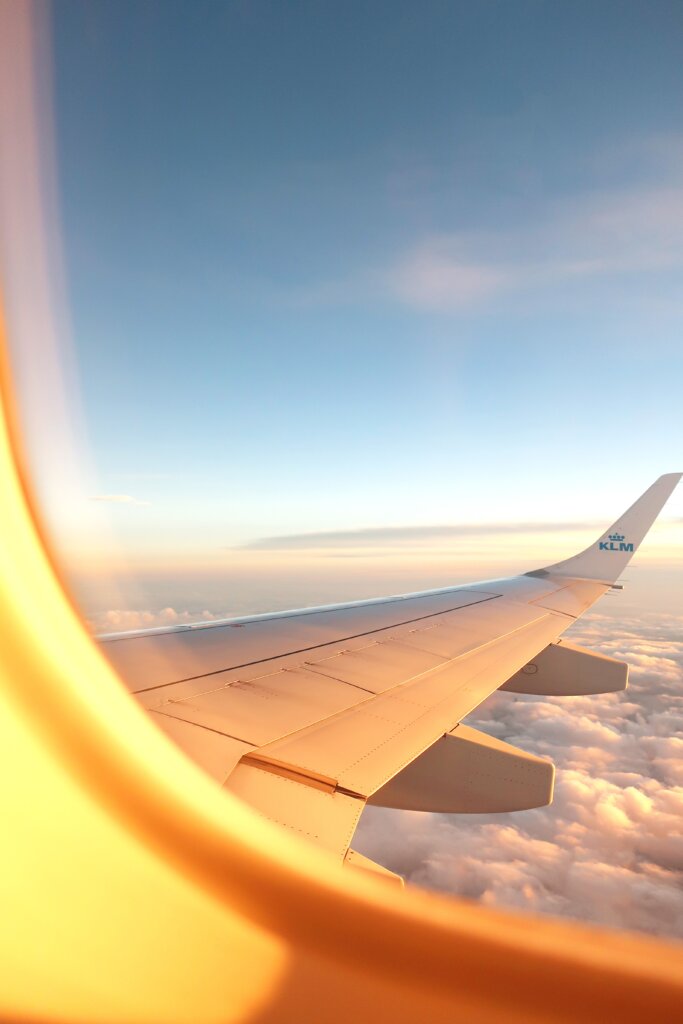
Know the difference between Brussels’ two airports
When flying into Brussels, you’ll either be flying into Brussels Airport (BRU) or Brussels South Charleroi Airport (CRL).
Those travelling on a budget should definitely look into flights for Charleroi, as this is the one that services budget airlines like Ryanair and Wizz Air , which means you’ll likely find cheaper fares here vs.Brussels Airport.
That said, Charleroi is located an hour from Brussels city center, with no train station of its own, so the only way to get from Charleroi to Brussels is a shuttle bus or private transfer. This costs a bit more than the train from BRU to the center, so factor that into your costs!
NOTE: BRU does have some low cost airlines too like easyJet.
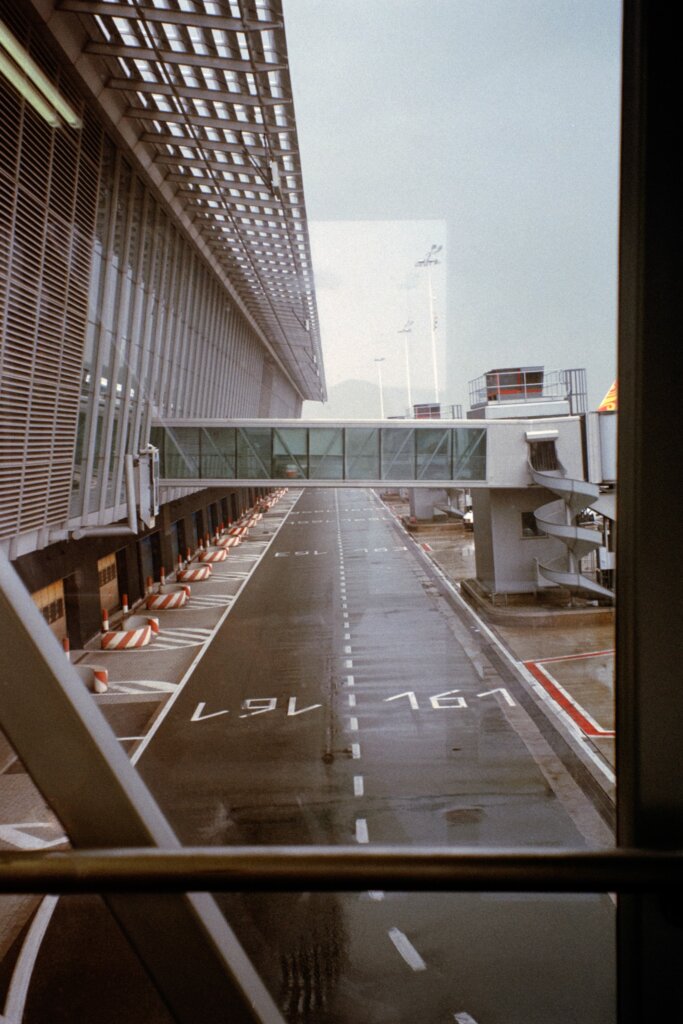
Book your hotel somewhere central
Most of Brussels’ most touristy sights are within walking distance of each other, so if you want to maximize your time in the city, it’s important to book somewhere in the heart of the action.
I have a full list of recommended hotels in Brussels, but generally speaking these are some good areas to book in:
- Around Grand Place: Expensive but as central as it gets. For a splurge, this top rated hotel is right on the corner of Grand Place.
- Sablon: Close to the sights but in a quieter, lovely area. Here is the top rated hotel in this neighbourhood.
- European Quarter: Very safe but kind of boring and quiet. Here is the top rated hotel in this neighbourhood.
For a budget-friendly stay close to the center, I can also recommend this Motel One. The rooms are small, but the property is very safe and comfortable.
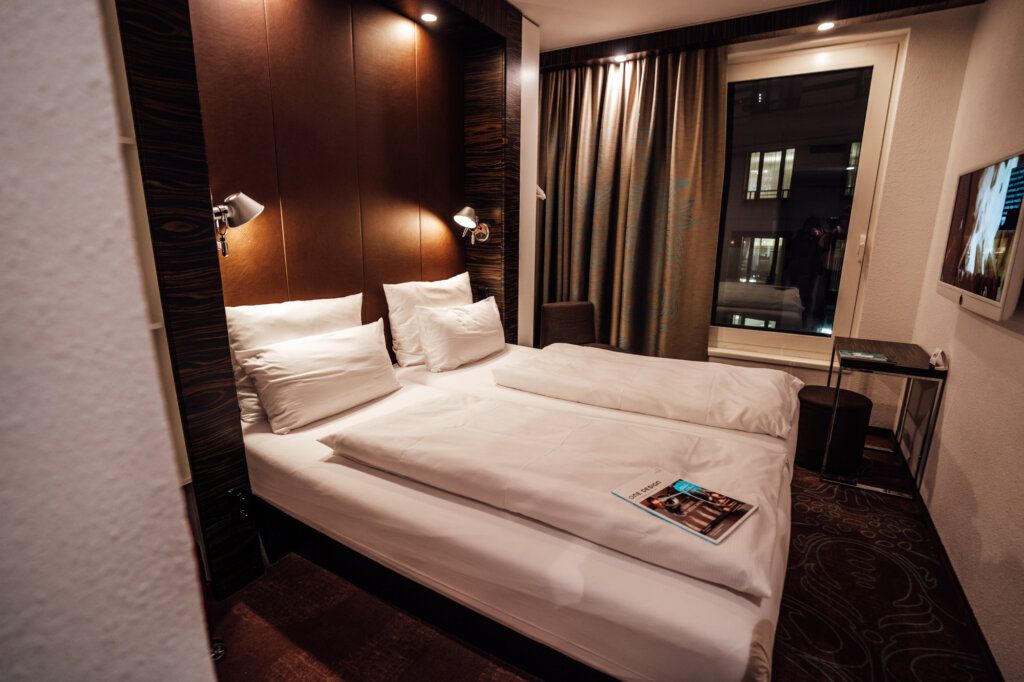
Know which areas to avoid in Brussels when booking accommodation
Brussels is full of many lovely neighbourhoods and areas, but for tourists booking a dream trip, there are certain areas that should be avoided as well.
One of the primary reasons I hated Brussels on my first visit was because of where I stayed, a hostel near Place de Brouckère. Walking home (even before dark) made my friend and I feel uneasy because the entire 10 minute stretch home would be filled with cat-callers and strange men staring us down.
So, choose your base wisely!
While I am by no means an expert on safety in Brussels, I can speak from personal experience on places around the city where I had negative experiences and wouldn’t stay/visit again.
I never like to generalize about a city, so of course, be sure to supplement these personal stories with your own research, but I definitely think you would be better off booking accommodation away from the following neighbourhoods:
Around Place de Brouckère :
Again, this is where I stayed on my first visit and I wouldn’t do it again. The entire stretch from the Bourse de Bruxelles to the Gare du Nord was littered with casinos and weird catcallers lurking around.
As two young female backpackers, we definitely didn’t feel safe. That said, during Christmas market season, this area was a lot livelier and felt like a completely different place.
Molenbeek :
This is a part of Brussels where I almost got pickpocketed at the Comte de Flandre (Graaf von Vlaand) station.
I was on my way to a museum (which was unfortunately closed) and so I headed back to the station, where some teenagers surrounded me and tried to take a wallet straight out of my purse!
Unfortunately, this neighbourhood does have a reputation for being popular with pickpockets and petty crime, so I would avoid it if possible, especially given that there aren’t many touristy things to do in this neighbourhood anyway
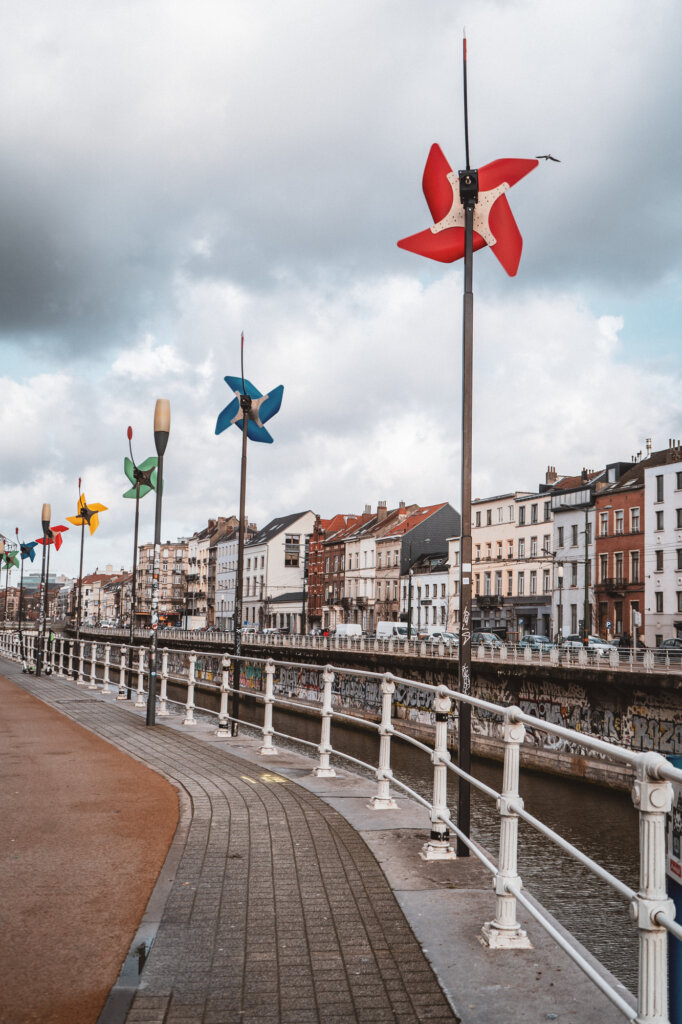
When it comes to neighbourhoods to avoid in Brussels, often people bring up the areas around Brussels’ train stations, and Cureghem (located around the Brussels Midi station) is perhaps the one with the worst reputation.
I did stay here during a short stopover one trip and I wouldn’t do it again. I felt incredibly uneasy during the walk from the station to my AirBNB (which was really short) and I’m quite certain there was a guy following me for most of the way.
Anyways, I definitely wouldn’t book a hotel by here, certainly if you’re travelling alone!
One or two days in Brussels is enough
Of course, you can easily spend more time in Brussels if you try to make a larger dent in its hefty museum scene, but in terms of hitting all the main sights of the city, one or two days is actually sufficient for Brussels itself.
If you have more time to spare, I’d recommend squeezing nearby cities like Bruges , Antwerp or Ghent in your itinerary, all of which are amazing and well worth a visit.
Actually wait – let’s make that a tip of its own.
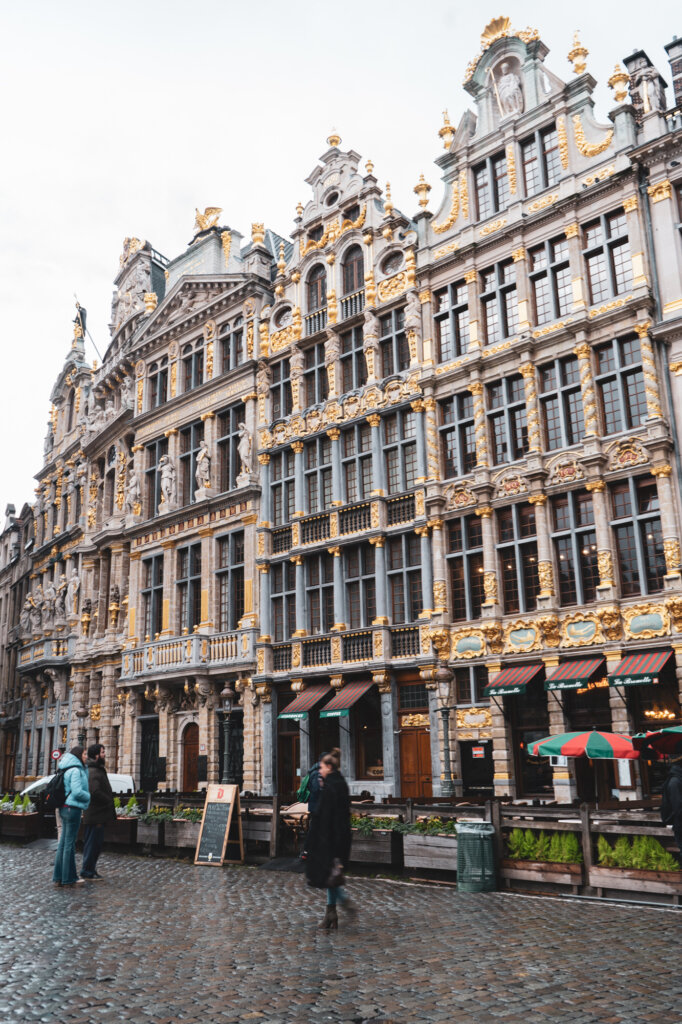
Make time for other Belgian cities in your itinerary
I have to confess, while I’ve slowly learned to love Brussels over the years, it still isn’t my favourite place in Belgium.
I honestly think that Belgium is one of the most underrated countries in Europe, especially considering most people pass through Brussels and that’s it.
If you can, definitely take some time and explore other parts of Belgium besides Brussels. Since the country is so small, you could easily do them as day trips!
I’ve been to Bruges , Ghent, Antwerp and Leuven – they’re all amazing.
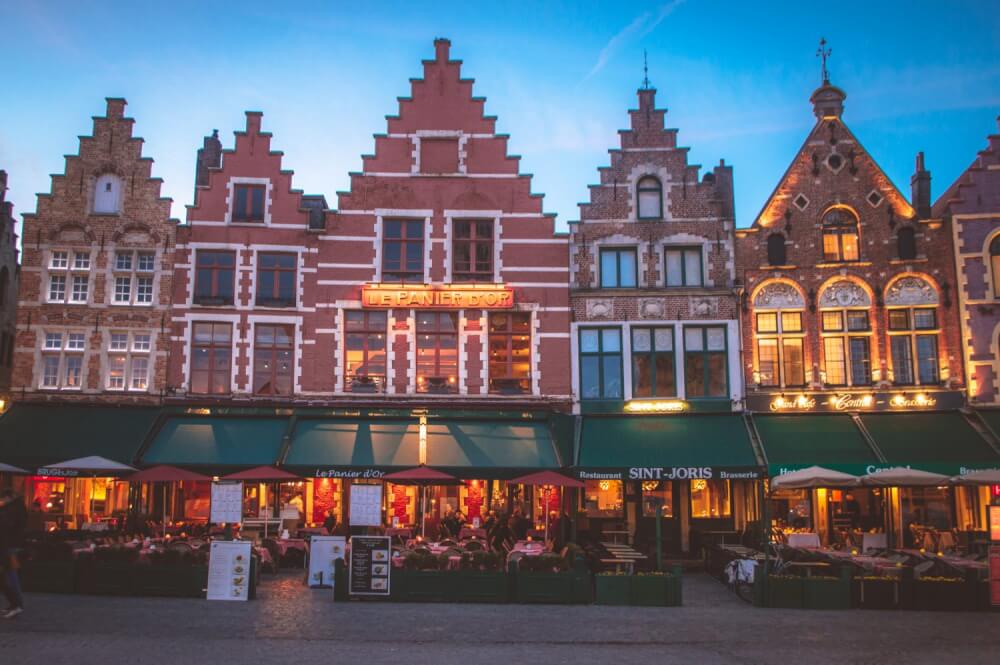
Brussels Transportation Tips
Next up: tips for public transport in Brussels, and getting around Belgium in general.
You probably don’t need unnecessary public transportation passes
Learn from my mistakes and don’t get talked into a transit pass you don’t need! Brussels is very walkable and odds are you might not use it much.
Upon my first ever arrival to Brussels, I encountered a (fairly odd) ticket stall attendant who moved at a sloth-like pace and was strangely obsessed with China. He pushed my friend and I into getting a 48 hour transit pass , which we barely used at all.
So, before committing to any costly passes for Brussels, be sure to do the math first and see if you’d even need them. Or, look into a sightseeing pass like the Brussels Card which comes with a public transport pass too, as well as entry to most Brussels museums.
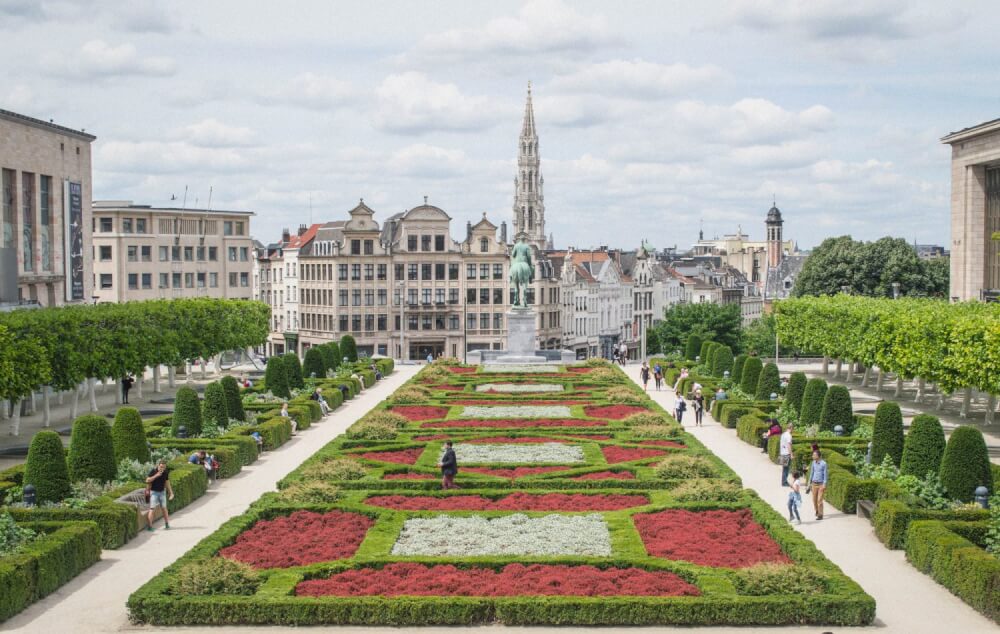
Know there are three train stations in Brussels
Straightforward advice, but you should know that Brussels has three main train stations. Double check the name of the station when boarding/disembarking the train to ensure you’re going to the right one.
There’s Brussels Midi, Brussels Centraal and Brussels Nord.
I know it sounds dumb, but one time I truly did show up at Brussels Centraal 5 minutes before my train, only to realize it was a train that left from Midi. Needless to say, I did not make that train.
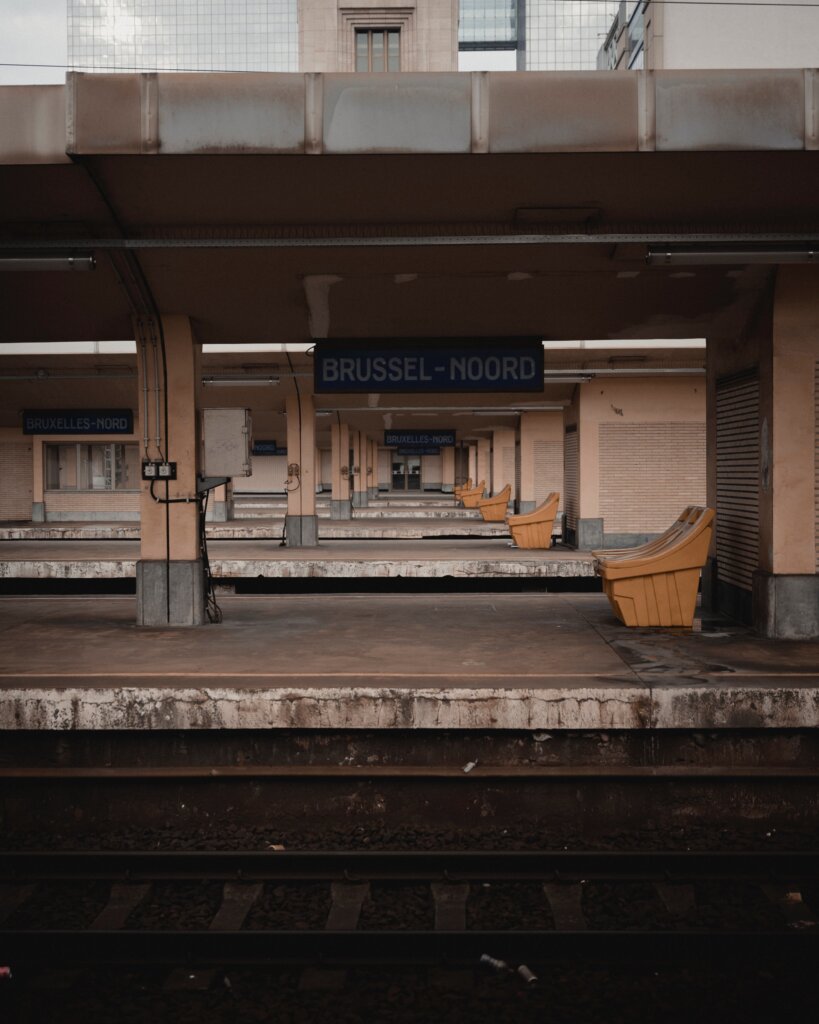
Under 26? Buy a Go Pass 1 for Day Trips
The Belgian train system is blessed with a number of enticing discounts that will let you see the country for a low price.
For example, those under the age of 26 can enjoy a ridiculously cheap Go Pass 1 , which is 6.40 for anywhere in the country. This is way cheaper than paying full-price!
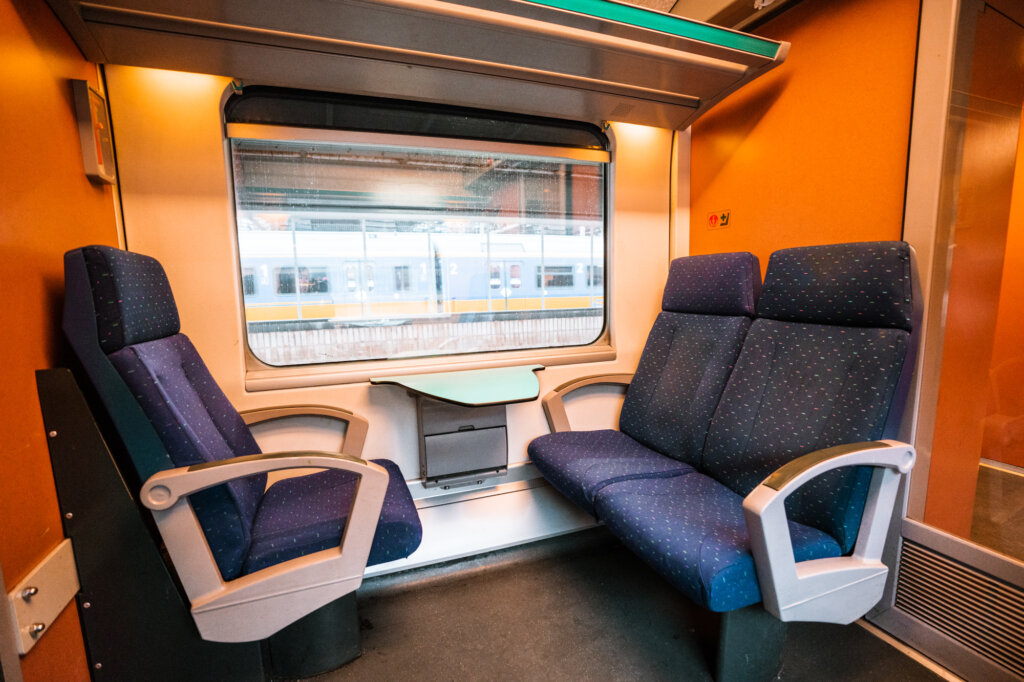
Memorize the French and Dutch names of Belgian train stations
As you probably know, Belgium is a tiny country that nonetheless has three official languages : Flemish (like Dutch), French, and German.
The confusing thing is, train stations (including Metro stations) are marked with the names of both Flemish and French… and trust me – they’re usually not that similar.
This can cause some confusion if you’re looking for the right train to catch or the right station to get off at.
For example, Antwerp is Antwerpen in Flemish and Anvers in French, while Bruges is Brugge in Flemish. Be sure to have the name of your destination in both languages so that you don’t get confused when taking day trips!
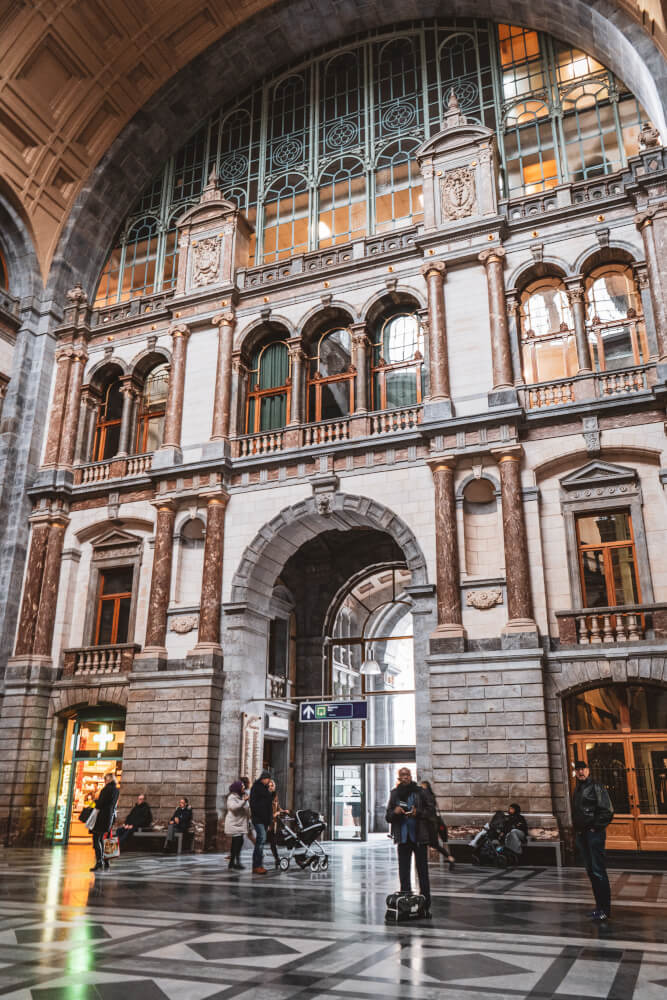
Brussels Tips for Attractions
In need of tips for visiting Brussels’ many interesting attractions? Here are some must-knows and tricks:
Lower your expectations for Brussels’ top guidebook attractions
Brussels is an awesome city… the problem is most of the existing guides out there don’t do it justice!
I know this because I didn’t “get” Brussels until my third or fourth visit.
Especially on my first visit, I remember doing all the must sees that I read about on TripAdvisor, scurrying from one peeing kid statue to the next, having overpriced waffles in the center and going out of my way to see attractions that left me underwhelmed… all while sweating amongst hordes of fellow tourists doing the exact same circuit.
Trust me, if this is how you visit Brussels, you’ll likely be disappointed too!
Instead, I encourage you to check the attractions off your list, then explore the lovely neighbourhoods surrounding the Brussels city centre, visit some quirky museums, and read local blogs to get a feel for what people who actually live in Brussels enjoy doing, because I assure you it’s not “visit Mannekin Pis” (commonly considered one of the worst tourist traps in Europe ).

Planning to sightsee a lot? Get a Brussels Card
While I find the so-called “must-dos” of Brussels like Mannekin Pis fairly underwhelming, I do think Brussels has a TON of highly underrated attractions and museums for every interest under the sun.
If it’s your first time in the city and you want to check a lot of these places off your list, you should look into money-saving passes like the Brussels Card , which gives you access to pretty much all of Brussels’ museums for one price, so you can sightsee your eyeballs off.
On my most recent visit, I bought a Brussels Card so I could visit as many museums as I wanted and I definitely got my money’s worth… I probably saved (no joke) over 100 euros because of how many places I visited.

Visit one of Brussels’ many quirky and offbeat museums
Even if you don’t get a Brussels Card, I do recommend you visit at least one weird museum while in Brussels.
I’m not usually a museum person, but Brussels is filled with so many fun and quirky museums that it’s hard to resist!
I’m working on a full guide to the different Brussels museums you should visit, but definitely don’t rule out the Museum of Musical Instruments, the Royal Museum of Army and Military History, Autoworld, and the Belgian Comic Strip Museum.
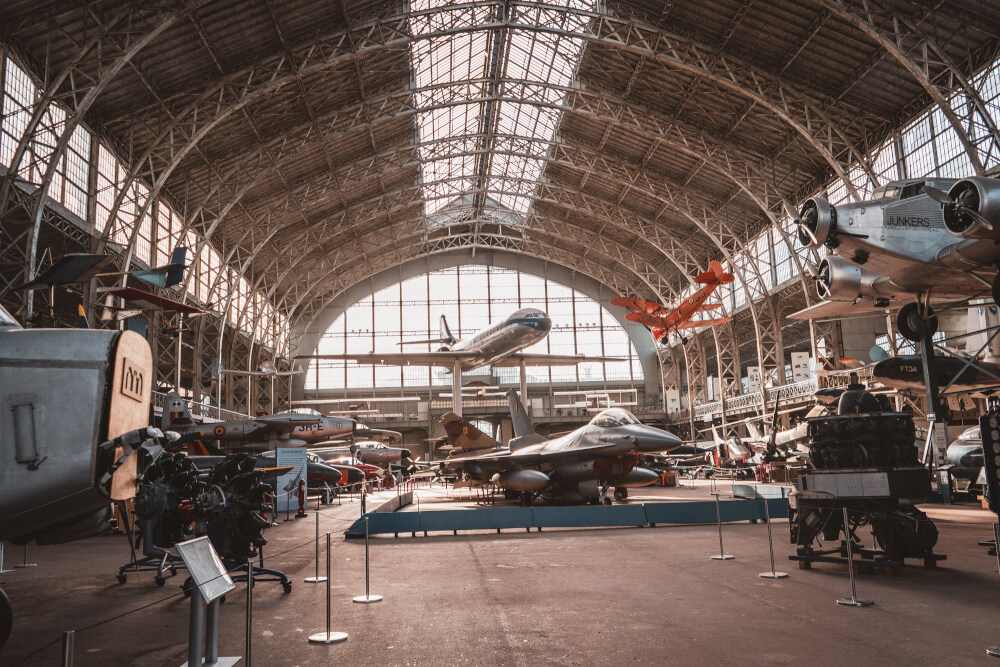
Explore Brussels neighbourhoods outside the city center
While I must admit that Grand Place is one of the most beautiful squares in Europe, where I think Brussels really thrives is in the little neighbourhoods surrounding the center, the ones that most visitors don’t think to visit!
To help get you started here are some Brussels neighbourhoods that are well worth a wander during your trip.
Sablon: With its charming cobblestoned streets and scenic surplus of chocolate shops, the Sablon district of Brussels is a wonderful place to wander and get a bit off the tourist trek. The Eglise Notre-Dame du Sablon is of course a must-see.
St Gilles: Saint Gilles is a trendy, artsy neighbourhood in Brussels which is a complete magnet for artists and students thanks to its hip mix of eateries, boutiques and street art.
Les Marolles: Last but not least, this multicultural neighbourhood is Brussels’ melting pot, with all sorts of shops, restaurants, cafes and markets representing cultures from around the globe. A special highlight? It’s home to the most famous flea market in Brussels: the Jeu de Balle Flea Market which is open 365 days a year!
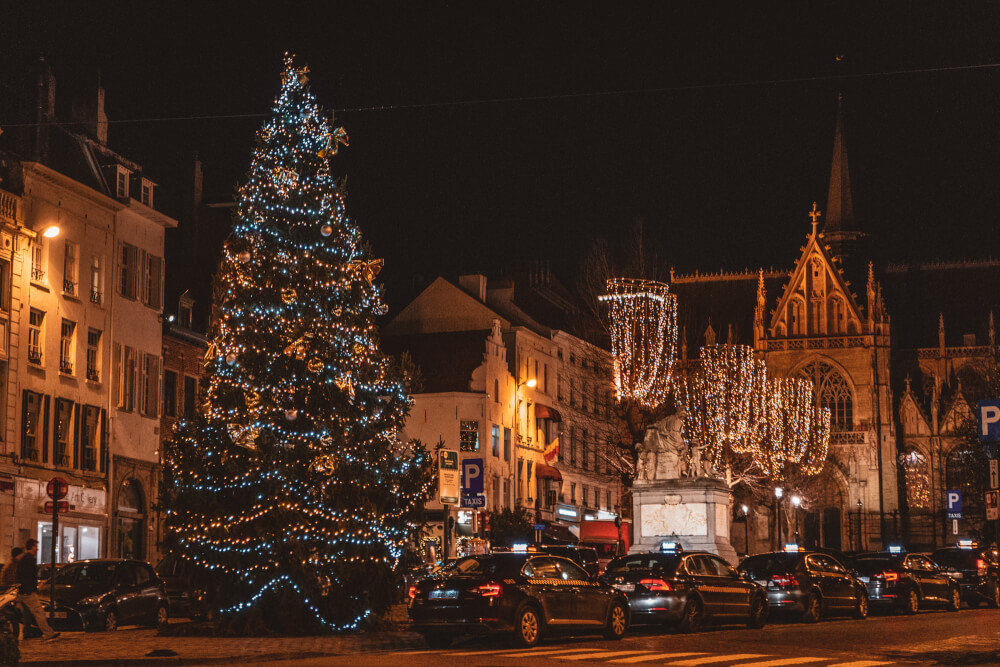
Learn about Brussels’ best hidden viewpoints
The view from the Mont de Arts is a well-known Brussels attraction, but there are in fact plenty of other (much lesser known) viewpoints that are worth checking out if you have time.
Getting these secret vantage points over the city really makes it much easier to fall in love with Brussels!
Two I recommend are:
- From the 5 th floor cafeteria of the Royal Library of Belgium
- From the 10 th floor restaurant of the Museum of Musical Instruments

Avoid bringing big bags with you sightseeing
I’ve noticed that Brussels in particular is very strict on the bags you bring into major attractions and museums.
In fact, most large bags aren’t allowed in museums, and they make you lock up your stuff in a small locker that wouldn’t fit more than a small backpack. So, prepare fo this and don’t bring any huge bags if your plan is to visit many museums or attractions.

Safety Tips for Brussels
One of the biggest questions first time visitors have is always “is Brussels safe?”
In my opinion, Brussels isn’t any more dangerous than other major European cities, but there are certain safety tips to keep in mind to ensure your trip is pleasant and stress-free. Here are my top safety tips for Brussels.
Get to know common pickpocketing scams
Like in most major European cities, the biggest threat to tourists in Brussels safety-wise is pickpockets.
I have written a full guide on how to avoid pickpockets in Europe, but in Brussels, here are some general tips:
- Never leave your phone within reach (i.e. on restaurant tables, poking out of your pocket, etc.)
- Never leave your bags unattended (common sense, but this goes for restaurants too where you might be used to just hanging your purse on your chair)
- Consider investing in theft-proof bags like these
- Try hiding your belongings somewhere safe like in a money belt or (more stealthily) one of these hidden passport scarves
- Keep an eye out for distractions – often pickpockets will work in teams, so if someone stops you to chat, ensure your hand is covering your valuables
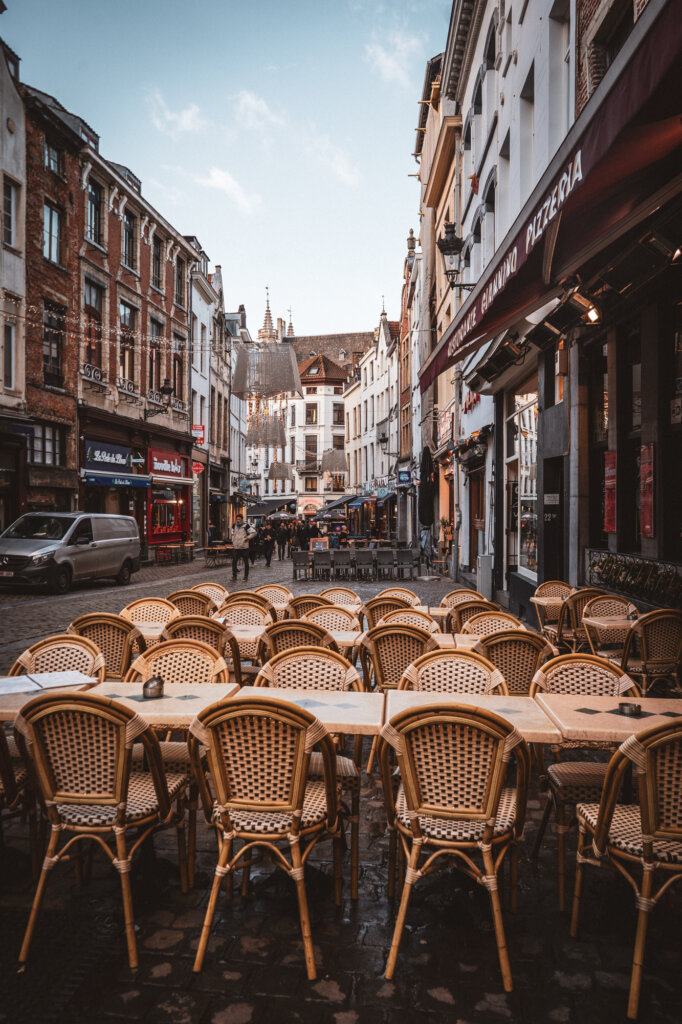
Try to blend in as much as possible
The beautiful thing about Brussels is that it is very multicultural, which makes it substantially easier to masquerade as a local no matter where you’re from.
And I do highly recommend you try to blend in as much as possible, because a lot of the safety issues in Brussels concerning tourists come down to how obviously you make yourself a target for opportunists.
Generally, here are some things I’d avoid in Brussels if you want to seem like less of a target:
- Looking lost and having a map out (either a paper map or your phone)
- Walking around with an expensive camera on your neck, and not paying attention to your surroundings
- Lugging around big shopping bags of expensive purchases (e.g. luxury shops, chocolate, etc.). I would conceal pricey purchases and bring them back to your hotel as soon as possible
- Flaunting your valuables (e.g. wearing expensive jewelry, leaving your phone out on a terrace table, etc.)
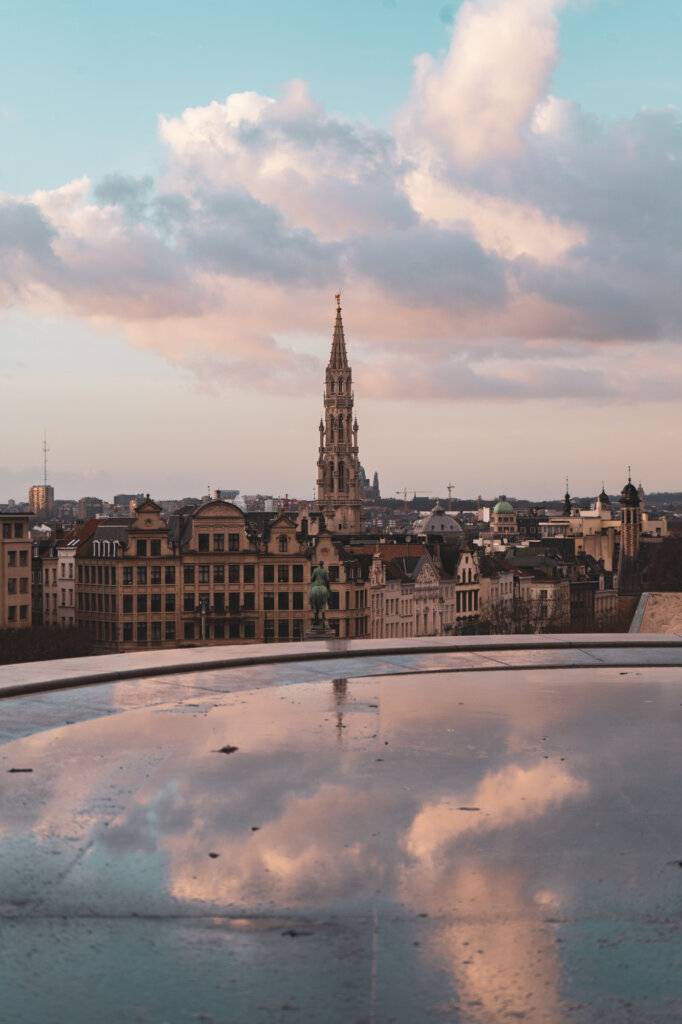
Be especially careful and vigilant near Brussels train stations
In Brussels, pickpockets tend to gather in busy transport hubs like train stations.
In most cases, simply keeping a close eye (and hand!) on your belongings is enough to thwart most pickpockets, who thrive on opportunity and “easy wins”.
That said, it’s important that you are especially cautious at train stations, particularly when arriving/leaving the city because all your belongings will be with you, and there’s plenty of potential distractions.

Avoid getting lost
While I’m usually a proponent of “getting lost” for fun in cities as a way of discovering it, this is less of a thing I’d recommend in Brussels.
This is because many of the areas often considered dangerous or seedy actually aren’t far from major tourist areas, so walking into them is pretty easy.
Again, Brussels isn’t a particularly dangerous city for tourists, but if you present yourself as an easy target, you’ll of course find people who are willing to take advantage, much like in other major cities around the world.
So, are there areas you should avoid in Brussels?
I mentioned these above, but here are some neighbourhoods and areas I would avoid in Brussels if possible, based on my own experiences:
- Around De Brouckere (after dark): I stayed here on my first visit and felt like there were large groups of catcallers and persistent men after dark, which made me feel very unsafe
- Molenbeek: I caught pickpocketers redhanded here as they tried to steal from me in the Metro while I got on a train
- Cureghem: I stayed near Brussels Midi station on a work trip once and, as a solo traveler, I wouldn’t do it again. There was a strange man who followed me pretty much all the way to my AirBNB, and I’ve heard of lots of theft/opportunist crime near the station
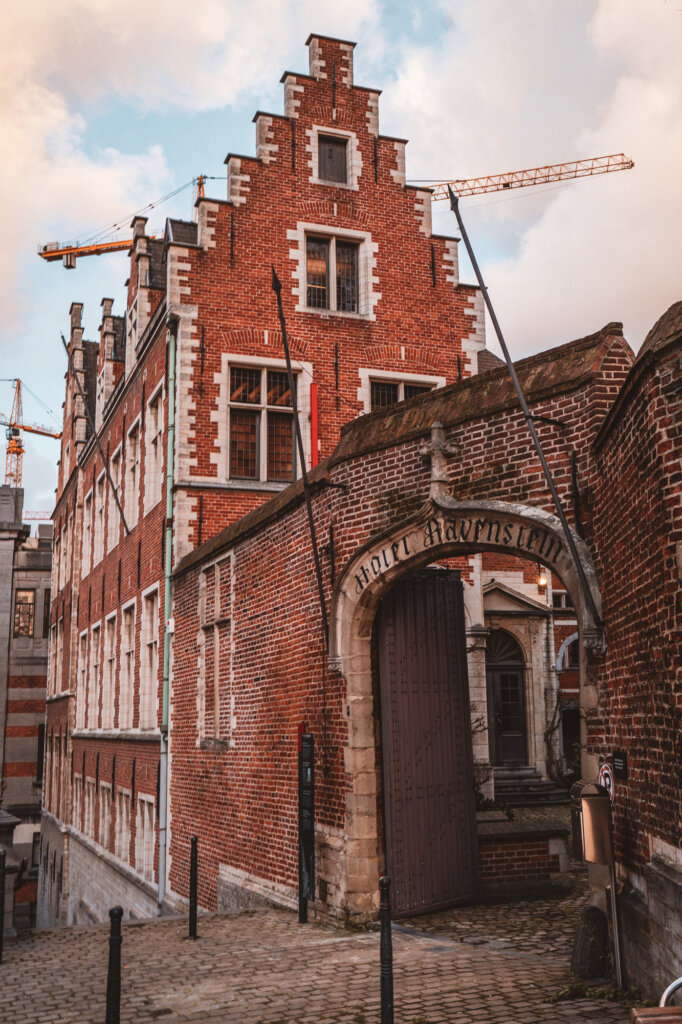
Food and Drink Tips for Brussels
Ah – now onto the good stuff. If you’re headed to Brussels, odds are you want some combination of beer, waffles and chocolate to be part of your itinerary. Well, here are some Brussels food/drink tips for you:
Avoid eating on Rue de Bouchers and other tourist trap restaurants
Rue de Bouchers is a notorious little street in Brussels that is infamous for its pushy restauranteurs, inflated tourist prices and subpar food.
As my tour guide emphasized, “this street is home to some of the worst restaurants in Brussels!”
Unfortunately, because of their approachable English menus and scarily adamant staff, this street is a natural trap for tourists, so be sure to steer clear of them.
Some evident signs that you might be at a tourist trap restaurant are 1) there’s an over-insistent staff member trying to get you to sit down, 2) there are big signs with giant pictures and all the menu items in English, 3) they have big block letters saying things like “TOURIST MENU, ENGLISH MENU, or FREE WIFI”.
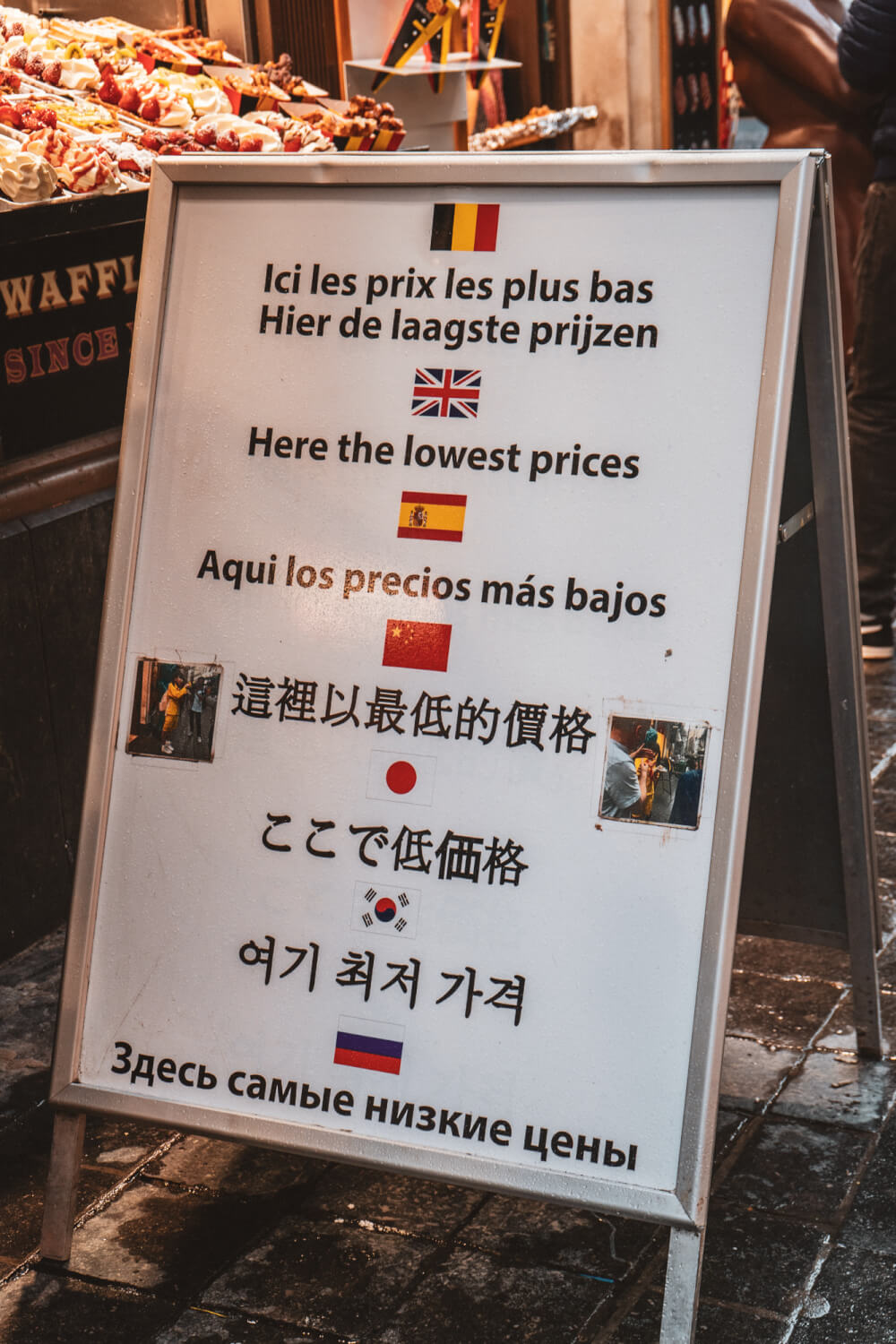
Don’t shop for chocolate at Galeries Saint Hubert
One of my favourite spots in Brussels is the Galeries Saint Hubert. It’s a touristy place, but so beautiful I can’t resist!
What I don’t love though is the crowds.
I think the Galeries are lovely for strolling through, but not ideal for shopping, given the Hunger Gamesy nature of it when the bus tours roll in… so here’s a tip.
Most of the chocolatiers inside the Galeries (if not all of them) have other shops and locations in Brussels which will be MUCH less busy.
Punch the name of your preferred chocolatier into Google Maps and head to one of those other locations instead, because then you can take your time and eat your chocolate in peace (with substantially better customer service to match).
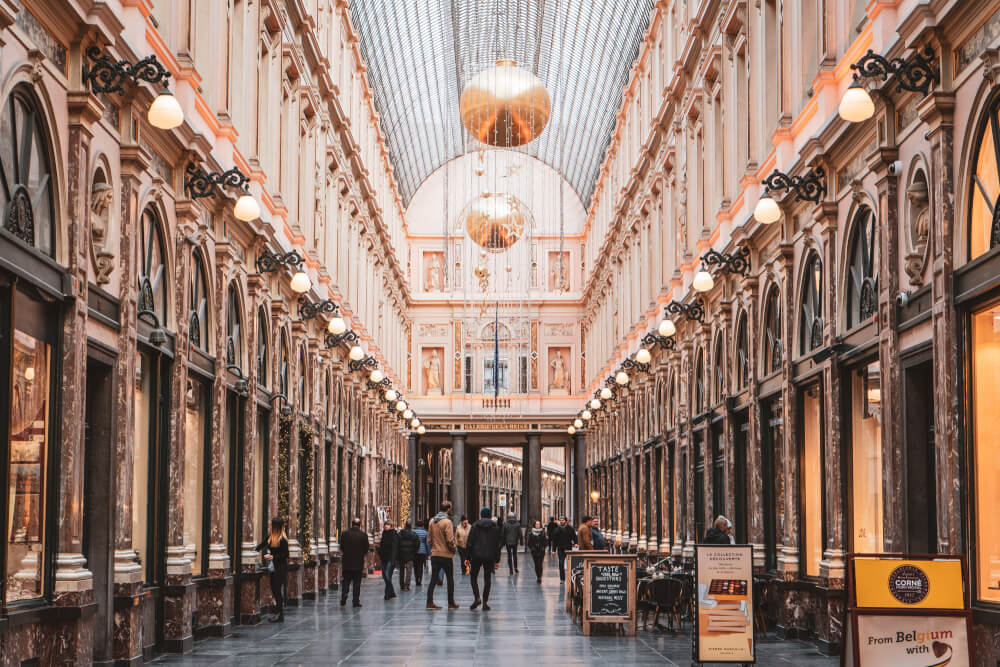
Learn how to identify medicore waffle stands
I know it sounds impossible, but yes, you actually CAN find bad waffles in Brussels, and they are usually found in the most touristic parts of the city because they’re out to dupe tourists who don’t know better.
Any generic-looking place that flaunts “1 EURO WAFFLES” and lures you in with plastic-y looking waffle displays covered in toppings is, unfortunately, likely to be mediocre.
I’m not saying they’ll be terrible (because come on, they’re still waffles) but the overwhelming consensus among my local friends is that no actual Belgian would get a waffle there, so that to me is telling!
For some local recommendations, here is a nice post from local blogger S Marks the Spots.’

Splurge at lunch
Many restaurants in Brussels offer lunch specials that serve the same quality meals as dinner, but at a much cheaper rate. If you want the best bang for your buck, consider going all out for lunches rather than dinners.
NOTE: Look out for the “Plat du Jour” (Dish of the Day) which is usually also cheaper.
Love beer? Delirium Café is a must
Many dismiss it as a tourist trap, but I still think the Delirium Café in Brussels is worth a visit for beer lovers so long as you’re in it for the novelty.
This café is world famous for holding the Guinness World Record for most beers available to taste, exceeding 2000 brews from around the world. You get to pick your beer from a giant binder, and trust me when I say there’s every flavou of beer you can imagine… including banana.
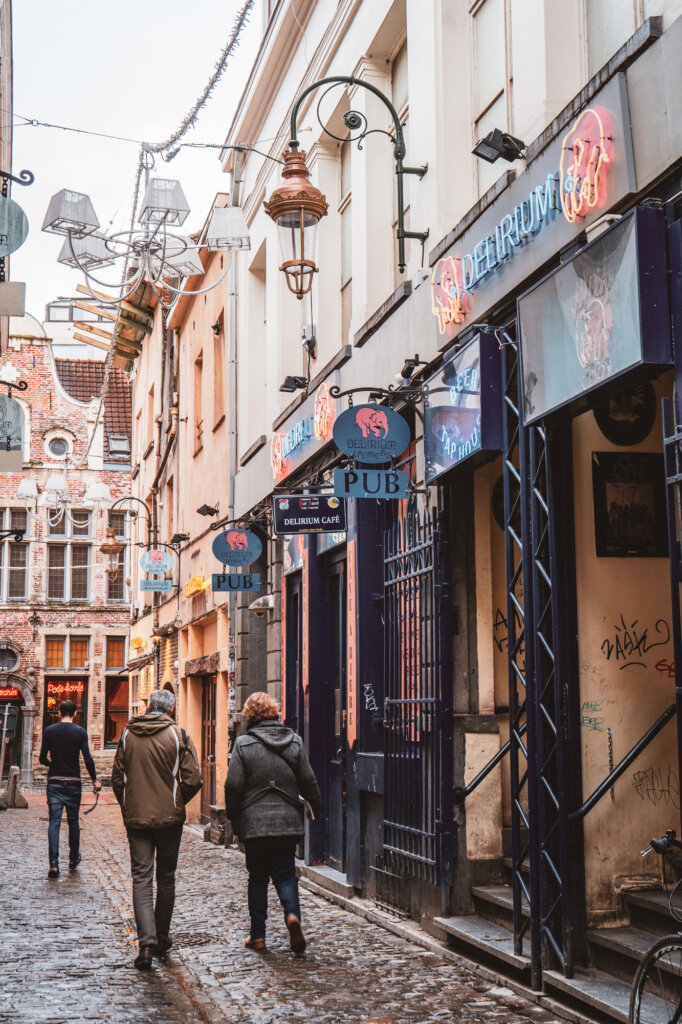
Go beyond Belgian cuisine
Brussels is one of the most international cities in the world, so don’t think you need to limit yourself to strictly Belgian cuisine during your visit!
If you begin to grow wary of waffles, chocolate and frites, then consider cleansing your palette (and arteries) with tasty global fare.
This website is an excellent resource for stylish restaurants in Brussels of all cuisine types.
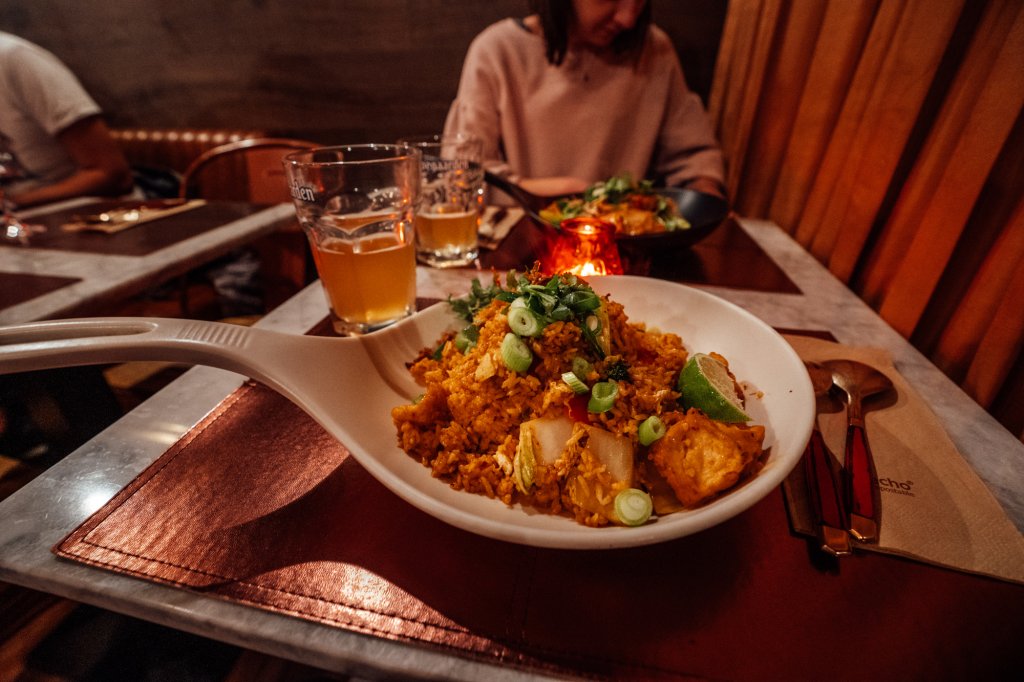
I hope these Brussels Travel Tips were Helpful!
Let me know if you’ve ever been to Brussels. I’d love to hear your stories!
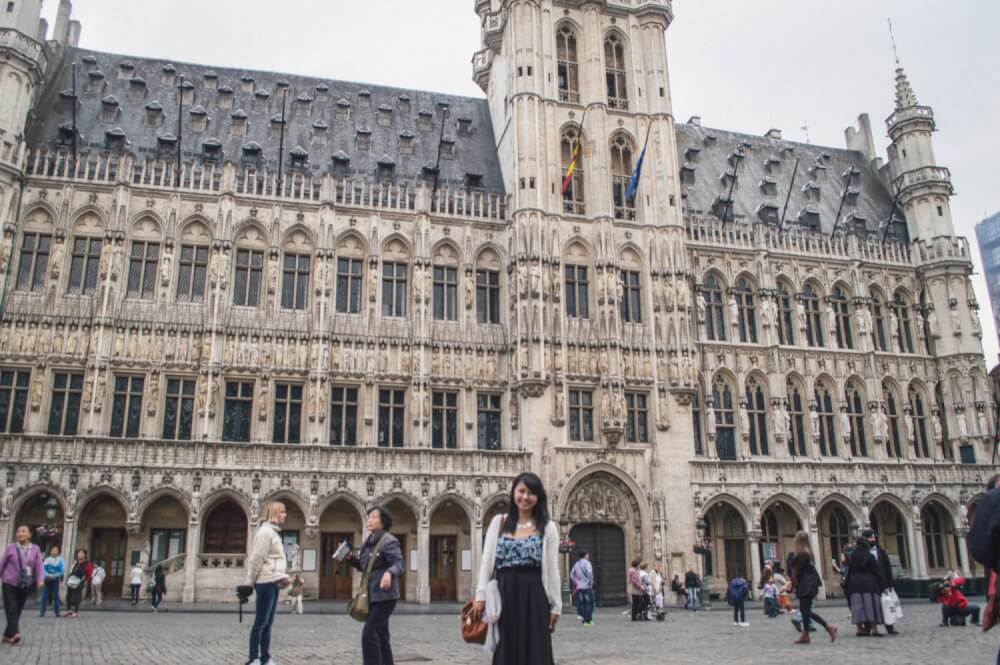
My Go-To Travel Favourites:
🧳 Eagle Creek: My favourite packing cubes
💳 Wise: For FREE travel friendly credit cards
🍯 Airalo: My go-to eSIM
🏨 Booking.com: For searching hotels
📷 Sony A7IV: My (amazing) camera
✈️ Google Flights : For finding flight deals
🌎 WorldNomads: For travel insurance
🎉 GetYourGuide: For booking activities
3 thoughts on “20+ Brussels Travel Tips & Tricks: Must-Knows Before You Visit”
heading there for the first time in april, starting to plan and this article’s awesome!
So happy you found it helpful! Hope you enjoy Brussels 🙂
This blog is awesome! It’s not the typical one and you recommend different things. Thank you!!
Leave a Comment Cancel reply
By using this form you agree with the storage and handling of your data by this website. *

The Ultimate Brussels City Guide: What To See, Eat, & Do?
Posted on Published: December 23, 2018 - Last updated: December 19, 2023
Categories Belgium , Europe , Travel
Brussels Belgium might appear to be a boring city, known as the financial district of Belgium, but there’s so much worth discovering! There’s no shortage of art, culture, beer, and delicious food to explore.
I’ve been to Brussels twice now -the first time nearly wasn’t enough time that I ended up choosing to live there for a month!
So in this Brussels city guide, I’ll go over everything you need to now about visiting this beautiful city. What are the must sees in the city, what food do you have to try, and where you should stay in Brussels !
Psst! This blog post contains affiliate links in it which sends me a bit of extra money if you use them… at no extra cost to you!

Plan your Belgium vacation with these tools!
Digital & Printable Travel Planner Printout : Etsy
Book hotels: Booking.com | Expedia Book Flights : brusselsairlines.com Rent a car: Enterprise | europcar.com Brussels Tours : Viator.com
You might also be interested in reading… Why Ixelles Brussels Is The Best Neighbourhood? | Top 20 Best Brussels Hidden Gems
Brussels City Guide
Brussels is in the Northern part of Belgium in the Flanders region (Belgium is split into Flanders and Wallonia).
What Language Is Spoken In Brussels?
You may notice that Brussels is in the Flanders region of Belgium, the Flemish speaking region. But, Brussels is the exception, everyone speaks French in Brussels (don’t worry they still understand and speak English).
How To Spell/ Pronounce Brussels
In French, the city name is spelled Bruxelles. Don’t make the mistake of pronouncing the X as an X should sound. It should always be pronounced as though it was spelled Brusselles .

Fun Fact: There Used To Be A River Through Brussels…
As you may know, most other major European cities have a river running through it (you know, La Seine in Paris, or the River Liffey in Dublin …etc). Brussels, on the other hand, is a bit different, the river is missing! Or is it…?
It’s not actually missing, it’s just hidden. La Senne/ Zenne (French/ Flemish) is the hidden or forgotten river of Brussels Belgium. It’s was covered up and built on top of in 1865. Civilians used to throw their garbage into it, making it a source for spreading mass outbreaks of diseases. So the Mayor decided to cover it.
There are still some spots around Brussels where you can see a glimpse of it still flowing… find out more in my top hidden gems in Brussels .
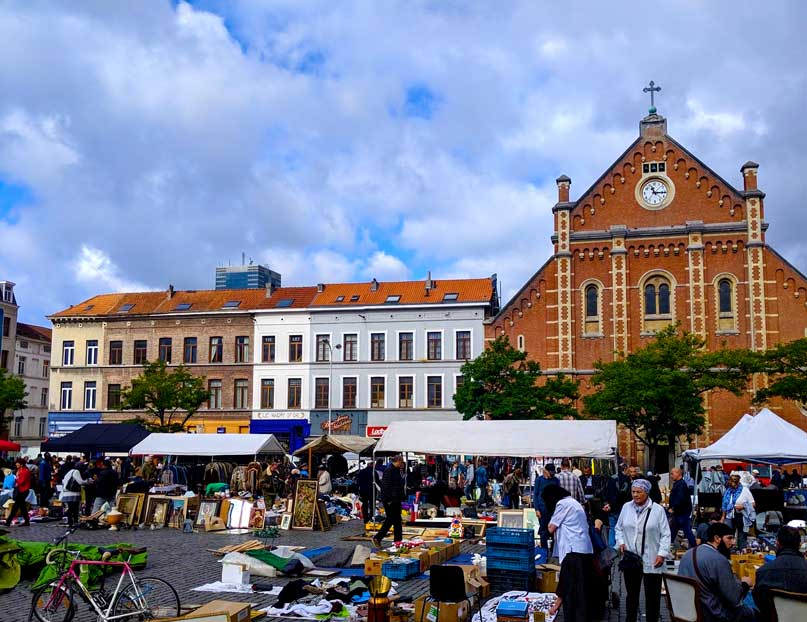
You might also be interested in reading…
Top 20 Best Brussels Hidden Gems You’ll Want To Visit
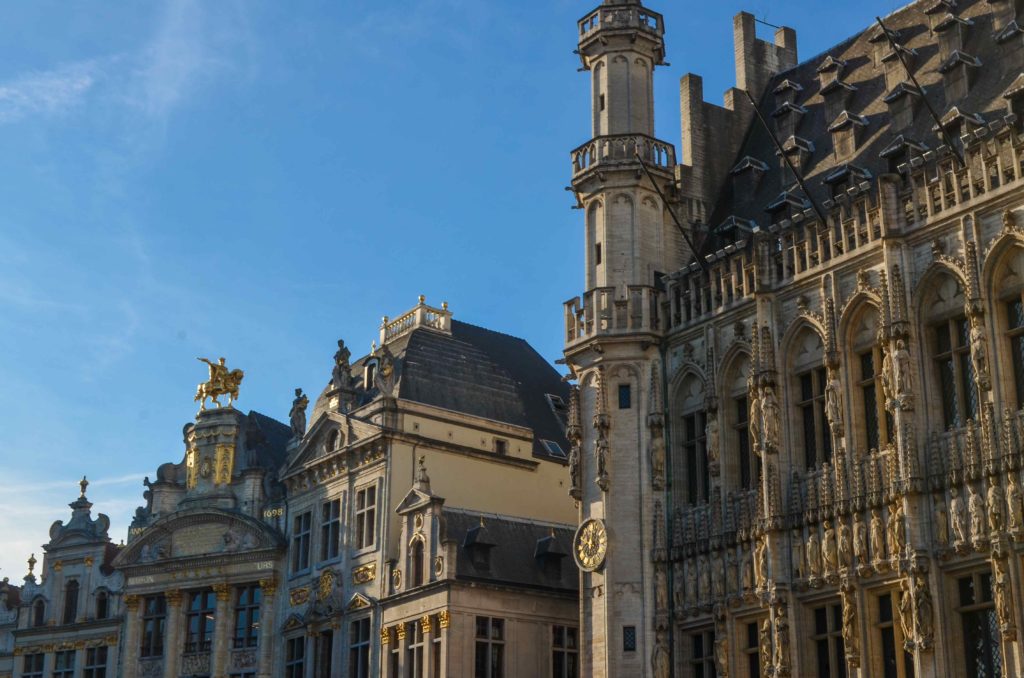
How Long Should You Spend In Brussels Belgium?
My first time in Brussels I only had a day to explore the entire city. Although it was a bit rushed, I was still able to see all the main attractions in the city centre. You will miss out on some of the hidden gems and all around culture of Brussels though.
The second time I visited, I lived there for an entire month and absolutely fell in love with the city. I’m not saying you need to stay for an entire month, but definitely recommend staying at least two days in the city.
Brussels also makes a great base city if you want to stay in one location and explore surrounding cities (or countries)… but more on that in a bit!

Where To Stay In Brussels Belgium?
If you’re only staying in Brussels for a night or two, I recommend staying in the city centre. It’ll be the most expensive, but it will also be the most centrally located to everywhere you want to go. You have such a limited time in the city that you don’t want to waste time traveling back and forth from your hotel.
If you’re staying for a bit longer, I recommend staying in a more local area just outside the city centre. I stayed in the Ixelles neighbourhood and LOVED it ( read why here !)! It was about a 20 minute walk from The Grand Place and Bruxelles Centrale (the train station). Other neighbourhoods you can stay in are St. Catherine and St. Gilles.
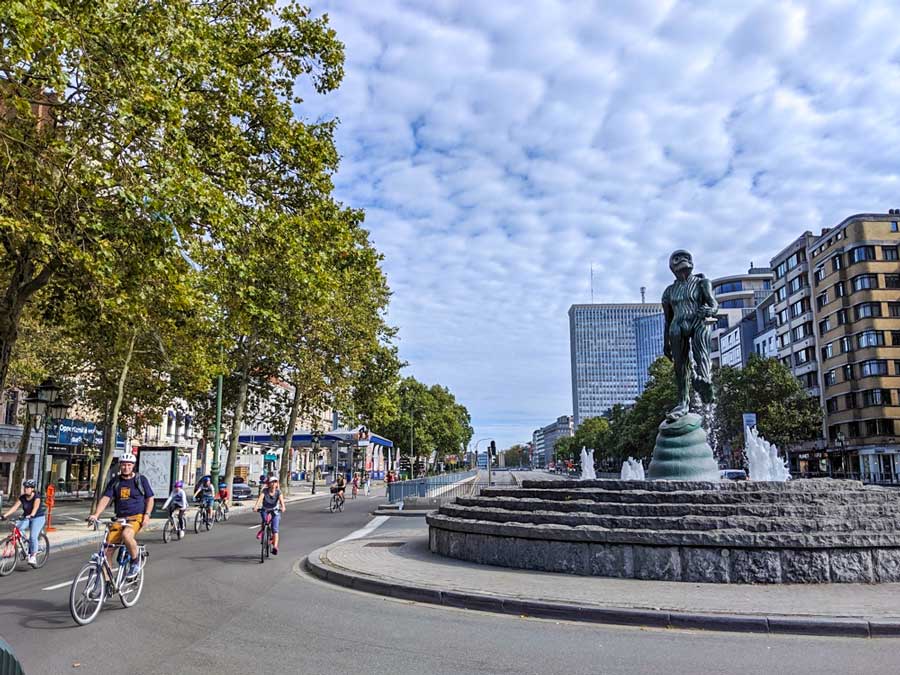
Why Ixelles Brussels Is The Best Neighbourhood To Stay In?

Brussels Hotel Recommendations
I stayed in an Airbnb while in Brussels Belgium, but here are some hotels I found in the city stay at.
For a luxury 5-star hotel experience in the heart of Brussels, stay at Rocco Forte Hotel Amigo . You are one block away from Brussels Grand Place – you can’t get a better location than that! See room rates and availability .
If you’re looking for a bed and breakfast in Brussels stay at Art de Séjour B&B . You’ll get a delicious homemade breakfast included with your stay. See room rates and availability .
Bringing the family to Brussels or need a space for all your friends? Check out Spacious modern appartments in Brussels city centre. You can get an apartment for up to 6 adults! See room rates and availability .
For more accommodation options in Brussels, click here .

Before You Do Anything: Go On A Walking Tour of Brussels
My favourite ‘free’ walking tour is offered in Brussels from Sandeman NewEurope . It’s about 3 hours and they bring you to the must see in Brussels. They offer them twice a day at 10:00 A.M and 1:00 P.M. I say ‘free’ because it’s “pay what you want”. I always recommend doing a walking tour as the first thing when you arrive in a new city.
A walking tour in Brussels Belgium is a great way to orient yourself and get some extra information about what you’re seeing. It’s also a way to meet people or find out about local food recommendations.
Go On A Brussels Belguim Organized Tour
P.S. See Why I Love Walking Tours in Every City I Visit

What Is A Must See In Brussels
The symbol of brussels: see a little boy pee.
The Mannequin Pis is the Mona Lisa of Belgium, and yes, it’s a little boy peeing. If you speak to locals, you’ll hear many different theories floating around as to why there’s a statue of a little boy peeing as their mascot. One of the main ones is that this boy saved Brussels by peeing on a burning fuse that would have otherwise led to the city being blown up!
Belgian’s loved their peeing mascot so much that in 1985 they gave him ‘sister’ Jeanequin pis. And then added a dog peeing in 1998 – Zinneke pis.
Did you know this isn’t the original Mannequin Pis statue…?
Find out where you can see the original (and more!) in my post on Brussels hidden gems!

You Can’t Leave Brussels Belgium Without Seeing The Grand Place
Around the corner from the Mannequin Pis is Grand Place, A.K.A Grote Markt. This is the city’s main square, and frankly it’s one of the most impressive in Europe!
The main buildings of interest in Grand Place are the Town Hall and The King’s House (Maison du Roi). Take an extra second to look at the Town Hall, it’s actually non-symmetric, that’s because it was built at different times.

Plan the ultimate vacation
My digital travel planner template has everything you need to plan your vacation: research templates, travel planner itinerary, travel budget templates…etc. . You can print it out or use it digitally on your phone, tablet, or computer.
Directly across is the King’s House, which was actually never home to any king). Today it’s the Brussels City Museum . The museum is a worthwhile visit if you have some extra time, or are interested in learning about the history and folklore of Brussels.
Next to these buildings are some ones with gold on them, and yes, that’s REAL GOLD! So, is it the most impressive, or just the most expensive square in Europe!?
If you have a chance, visit the Grand Place at night as well to see the buildings all lit up.
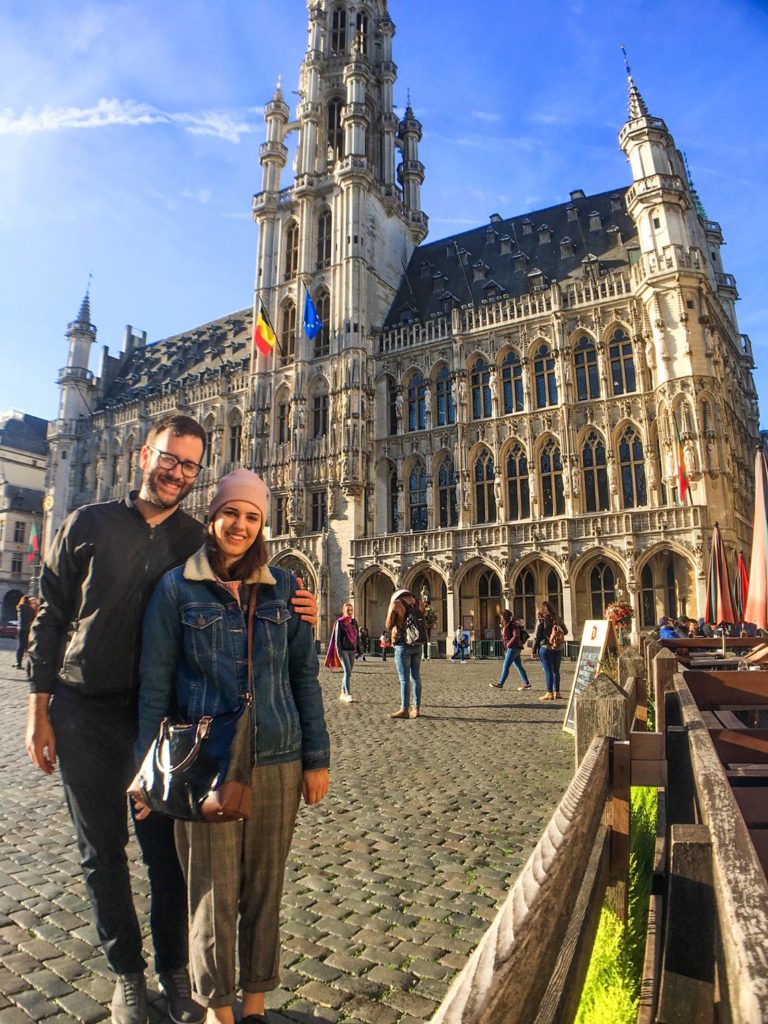
What To Do In Brussels?
Indulge in brussels’ comic book culture.
Brussels is the birthplace of two famous comic books, Tintin and the Smurfs (or in French, les Schtroumpf). Because of that, Brussels LOVES comic books. They have everything there is to do with them – from museums, stores, and even murals painted around the city .
There are about 50 comic book murals painted throughout Brussels that were commissioned by the city. Go on a Brussels comic book walk to find them all, plus, it’s a great way to organically see the city.
Brussels also has a dedicated Comic Book Museum that you can visit. It’s a bit out of the main area but definitely worth it considering how obsessed Brussels is with comic books. They give you information about the process of making comics, the different genres, and in-depth exhibits about Tintin and the Schtroumpfs. It’s also one of the only museums open on Mondays. Accepts card – see updated prices .

Brussels Comic Book Walls: The Complete Guide
Go On A Brussels Comic Book Walking Tour
For more organized tours in Brussels, click here .
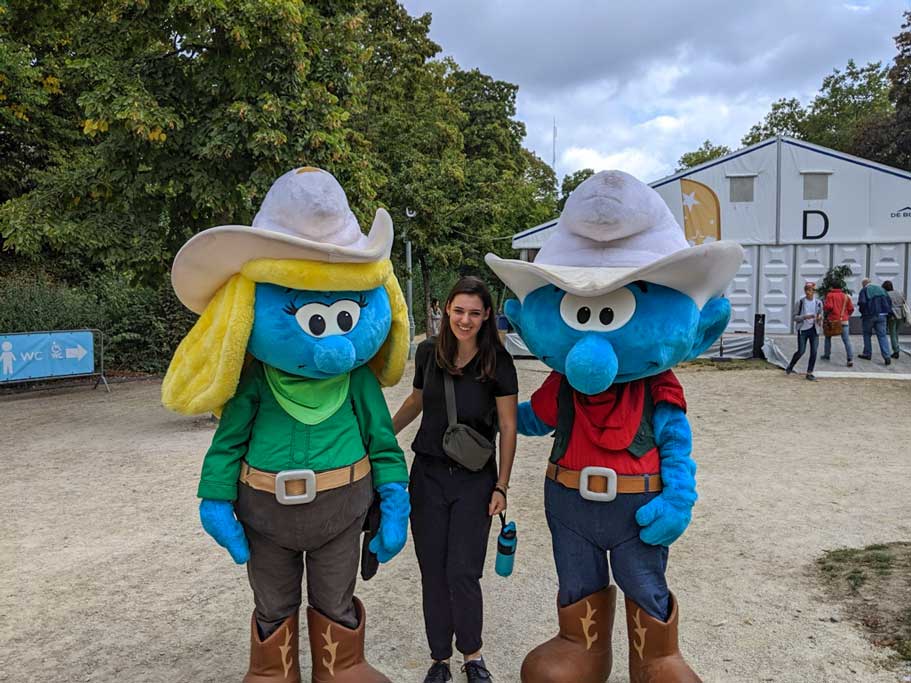
The Mont Des Art Brussels Museums
Monts des Arts is Brussels museum district with museums and an even better view of the city (and is one of the best places for sunset!).
Make a point to check out the museum of Musical Instruments . Not only do you learn about different instruments throughout history, but you it’s also a great spot for an even better photo opportunity at the top. Just make sure you’re not visiting BrusselsBelgium on a Monday because all the museums are closed.

Miscellaneous Buildings To See In Brussels Belgium
There are a few buildings in Brussels that you have to see during your visit. For example, be sure not to miss the Galeries Royale St Hubert , a beautiful indoor shopping experience with real marble and high-end shops. You’ll find some of the best chocolate shops in Belgium (Neuhaus and Mary’s).
Some other must see in Brussels are St. Michael and St.Gudula Cathedral , and the Brussels Stock Exchange . You’ll also want to walk by the Royal Palace of Brussels to check if the Belgian King is in Belgium. You’ll be able to tell if he’s in Belgium based on the flag, if it’s raised that means he’s in!
Across the street from the Royal Palace is the Brussels Park , if it’s a nice day, there’s no better place to get a break from the city than here!
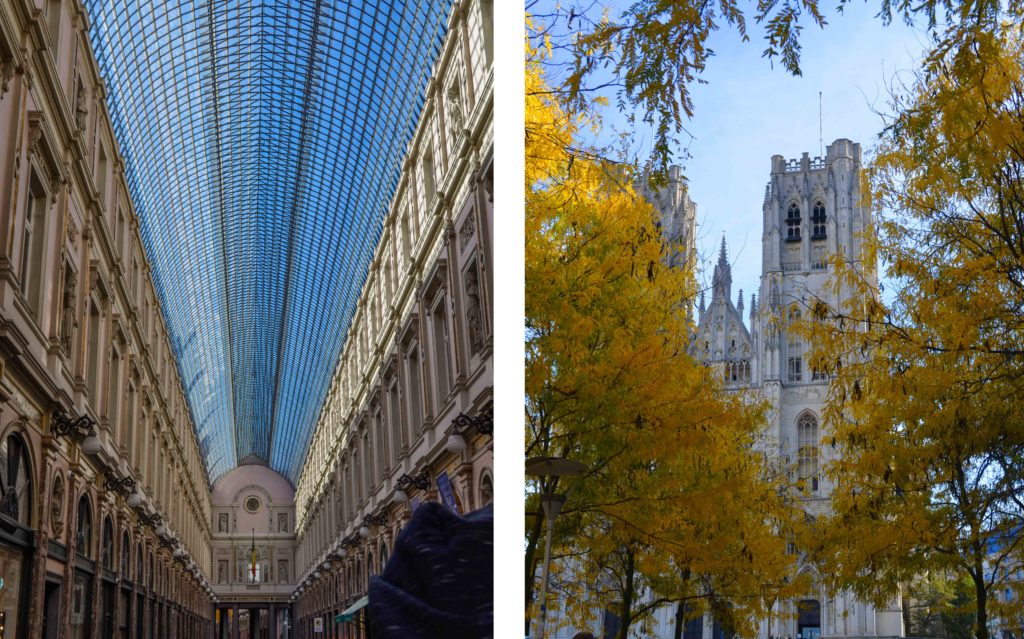
Venture Outside The City Centre: The Heysel Area
The Heysel Area is where you’ll find the famous Atomium of Brussels. You know, the weird atom-like structure that you see everywhere. It was originally built for Expo 58, and houses different exhibitions now.
You can easily spend a half day exploring the Heysel area, if not an entire day! It’s about 30 minutes outside the city by public transport, so you can really only do this if you’re there for more than one day.

Never forget a favourite travel memory
Keep track of your travels every day with my digital and printable travel journal . Use it on the go on your phone or tablet, or print it out!
In the same area, you’ll also find Mini Europe and the ADAM museum. Mini Europe is a neat collection of Europe’s main attractions, but miniaturized! It’s all about the awesome photo opportunities here!
The ADAM museum, Art & Design Atomium Museum, is (you guessed it) all about design. You’ll see unique furniture designs here that are really more like art pieces. A ticket to Atomium usually includes entrance to ADAM.
See combination ticket options, prices, and more.
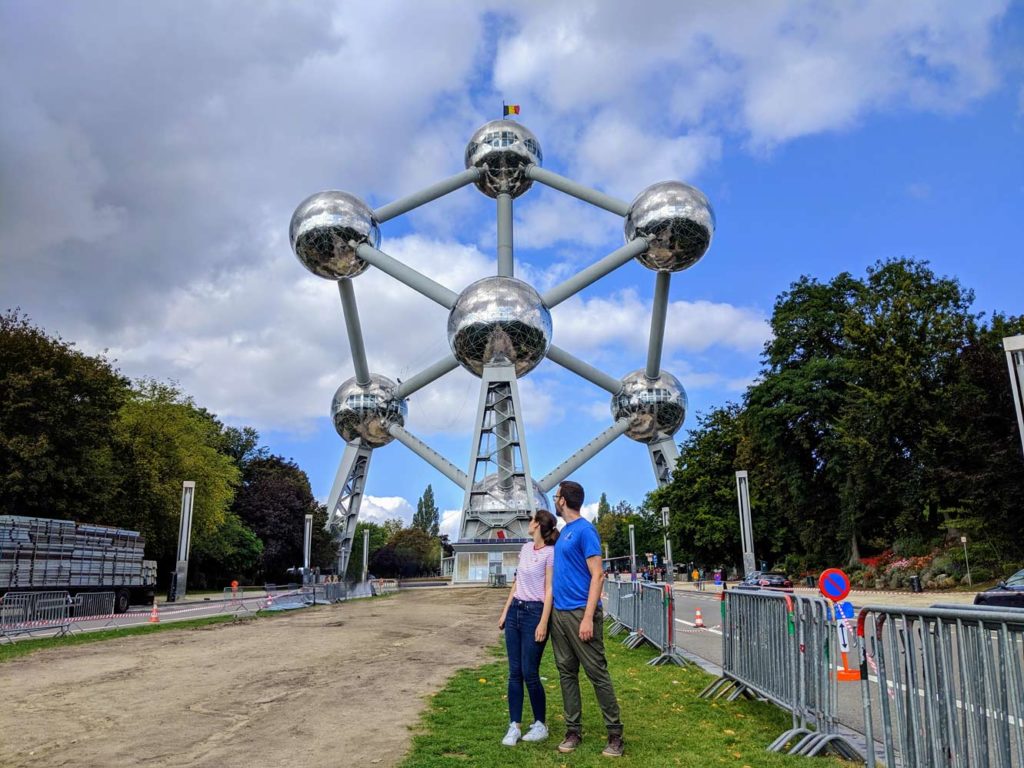
Where To Eat In Brussels
When you’re visiting Belgium, it’s all about the food. From sweets like waffles and chocolate to savoury treats like muscles and fries. We also can’t forget about out of this world beer in Brussels!
Waffle Trucks In Brussels!
The best place to get a waffle in Brussels Belgium is actually from a waffle truck on the street. Our favourites were just next to Bruxelles Central train station (just after the underpass) in an orange truck. Or, we had some good ones from the truck at the top of Monts des Arts. But, you’re best bet to getting a delicious waffle is to ask how fresh they are, you want it hot off the press!
Many people might recommend Maison Dandoy for the best waffles in Brussels. Personally, these were far from my favourite; for both the Brussels and Liège waffles. The waffles from the food trucks are superior in quality.
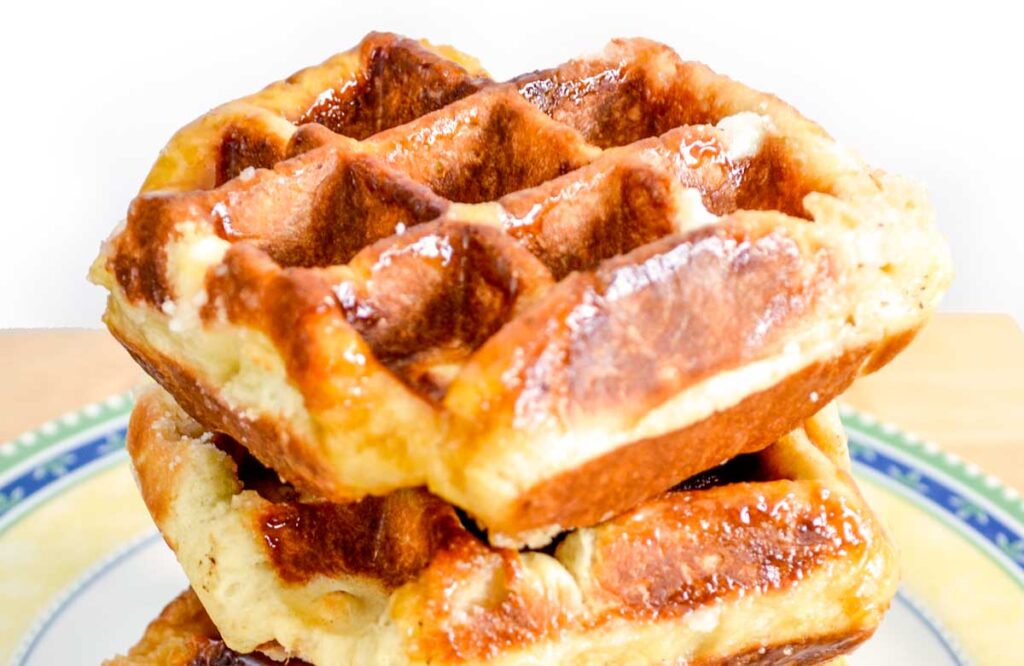
Miss Belgian Waffles Back Home? Make Them Yourself!
Easy Traditional Belgian Liège Waffle Recipe You’ll Love

What’s The Deal With Boucher Street in Brussels?
You might have heard about Boucher street for food in Brussels Belgium. This is an interesting street to walk down. It reminded me a lot of Brick Lane in London (where all the restaurants are trying to entice you to eat at theirs). They yell out different deals to get you into their restaurant.
But all the restaurants are just tourist traps, so don’t actually eat at any of them.
P.S. Go On A Brussels Food Tour
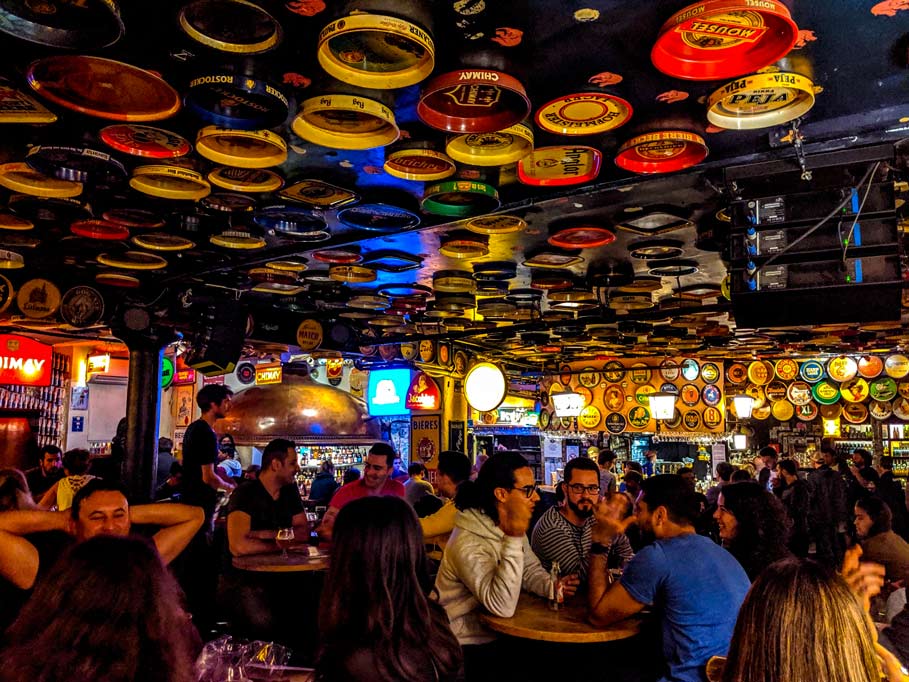
Where To Find Beer In Brussels
If you’re looking for beer in Brussels, the best place to go is Delirium. Although it might seem like it is, it’s not a tourist trap. The beers aren’t overpriced, and they offer more than just a great selection. You’ll even find locals here trying new beers because it’s just the best place to do that!
You literally cannot find a better selection anywhere else. They offer 2004 beers. So if there’s an obscure beer you want to try, this is the place to find it. They also have a cute pink elephant as their mascot. *Accepts card with a minimum purchase of 5 euros.
Go on a Belgian beer tasting tour in Brussels
For more beer in Brussels tours, click here .

Day Trip Opportunities From Brussels
What’s really nice about Brussels Belgium is that the train station is located less than a 10-minute walk from the city centre (Grand Place). This makes it especially easy to make Brussels your base city (which is exactly what we did).
There are tons of trains heading to other Belgian cities, or even the surrounding countries.
From Brussels, we visited Namur , Dinant , Ghent , Antwerp , Bruges , and Leuven . But there are countless other day trips around Belgium you can go on as well.
We even left Belgium to visit Cologne in Germany, Amsterdam in the Netherlands, and Luxembourg…in Luxembourg !
Day Trip Organized Tours From Brussels
Easy Day Trips From Brussels
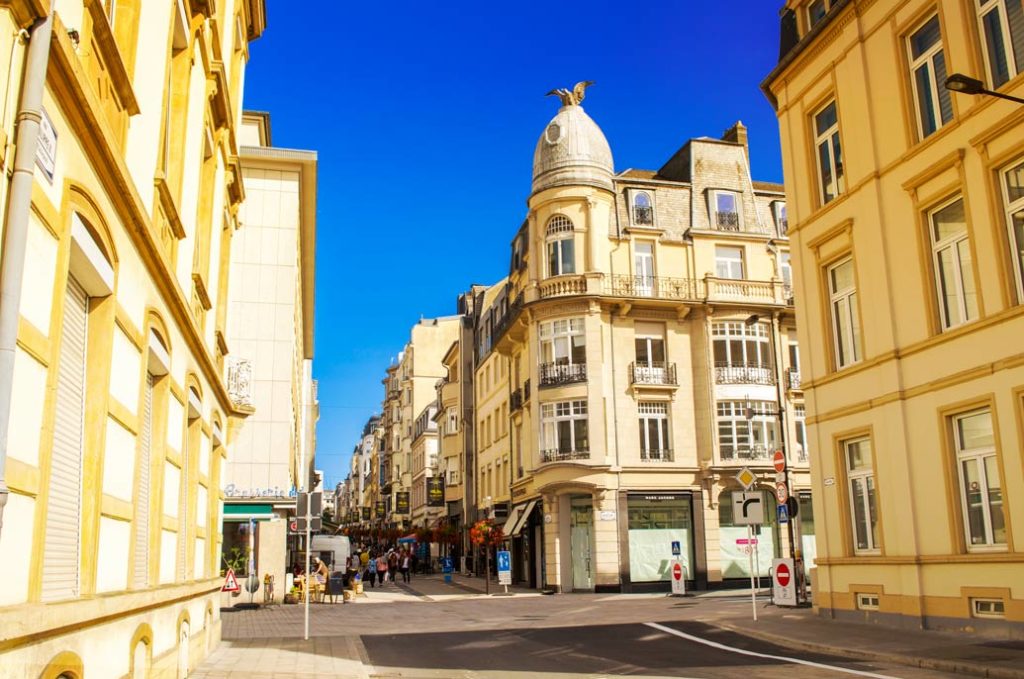
Read Popular Belgian Comics Before Your Trip To Brussels

More Brussels Guides!
- Why You Should Visit Brussels In September?
- A Guide To The Brussels Comic Strip Walls
- The Top Hidden Gems In Brussels You Don’t Want to Miss
- The Top Cafes In Brussels
- The Top 9 Day Trips From Brussels
- Where Should You Stay In Brussels? Guide To Ixelles
Click Image To Share Or Save For Later!
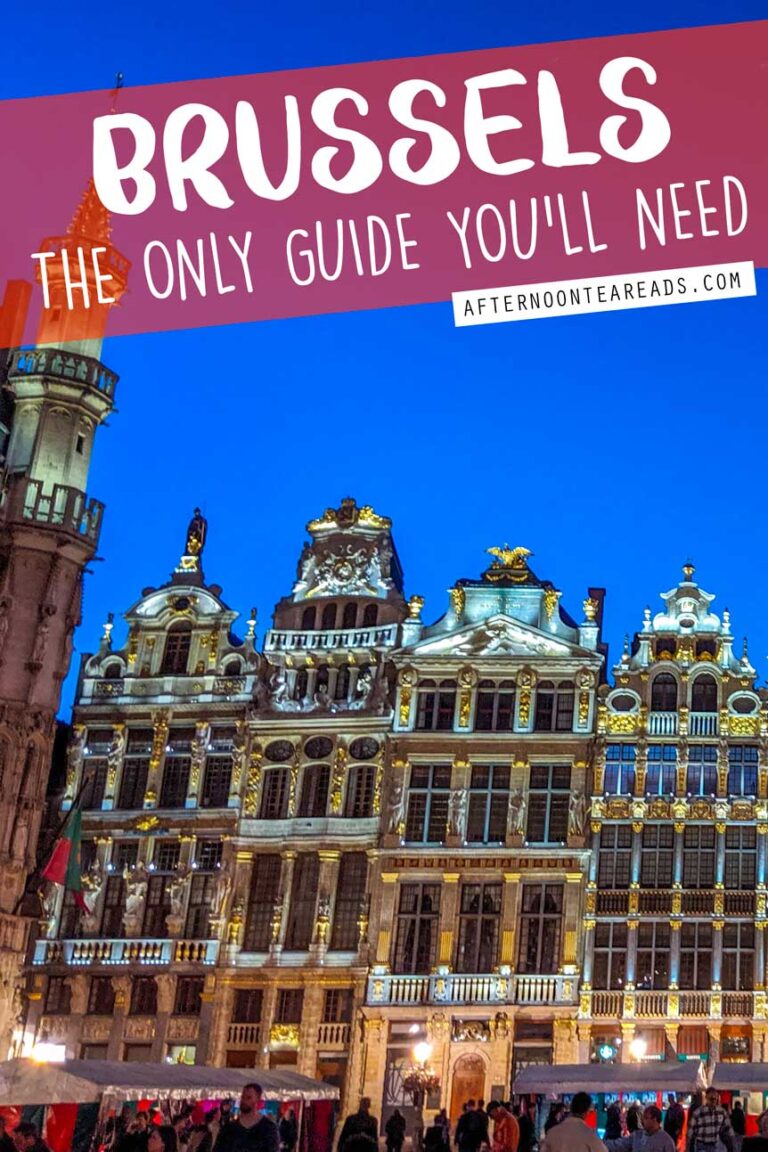
Last update on 2024-04-11 / Affiliate links / Images from Amazon Product Advertising API
Saturday 12th of December 2020
This is a great guide to Brussels. It's such an under-rated city. And my goodness are the waffles glorious. Thanks for bringing back memories.
Monday 14th of December 2020
My pleasure :P I LOVE Brussels, and Belgium is possibly my favourite country in Europe (honestly for the waffles alone! They're so good there!). Would go back in a heartbeat!
Such a great guide with some cool facts like the hidden river. Loved reading it.
Thanks so much, I loved writing it :D
The Ultimate Guide to Cafés in Brussels Belgium | Afternoon Tea Reads
Friday 7th of August 2020
[…] to Brussels? Here’s everything you’ll want to know before your trip […]
Top 20 Best Brussels Hidden Gems You'll Actually Want To Visit -
Saturday 21st of March 2020
[…] it’s your first time in the city, check out my general guide to Brussels as not to miss any main […]
Bruges Belgium: How To Make The Most Of Your Next Trip -
Tuesday 17th of March 2020
[…] less accessible from the other cities). But you can also easily visit Ghent, Antwerp, and Brussels as well from […]
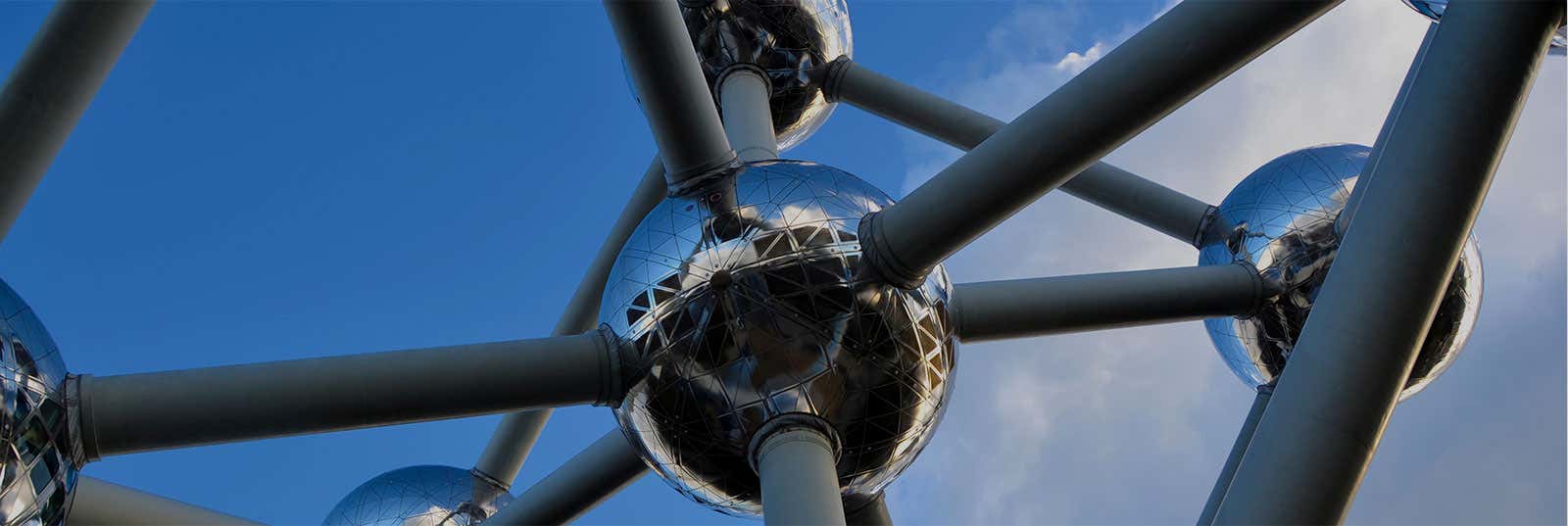
Planning to visit Brussels? We can help you! At introducingbrussels.com, you will find updated information about the top attractions , where to stay , or the best places to eat and drink .
Brussels Travel Guide
- General Information
- Top Attractions
- Getting to Brussels
- Where to Eat
- Where to Stay
- Two Day Itinerary
If you’re planning a trip to Brussels the first things you'll want to read about are the city’s top attractions, where to stay, and the general prices of hotels and restaurants, among other useful information . To make it as easy as possible for you, Civitatis offers you this travel guide to Brussels and the country's nearby cities so you make the most of your holidays.
Why visit Brussels?
You'd like to discover Brussels because you want to try the best chocolate and beer in the world because you’ve found a very cheap plane ticket, you’ve heard great things about the city, you're a fan of moules-frites (mussels and chips) or simply because you have always wanted to see the city’s most important symbol: The Manneken Piss .
Brussels is the capital of Belgium and is also considered the principal city of the European Union. It has all the characteristics of a metropolis, but at the same time is a small tranquil city. It has extremely modern neighborhoods that contrast with its renowned Art Deco buildings, and the streets of Brussels are packed with charm and history and make for a great getaway.
Any excuse is good to organize a holiday in Brussels , whether it be for 2 days, a week or longer. This city offers good food, interesting museums, and a selection of offbeat attractions, which will not leave you indifferent.
How to organize your trip?
Organizing your travel in advance is key to making the most of your holiday in Belgium's capital . We recommend reading first a little about the city’s history and reading our article on the most frequently asked questions about Brussels , such as travel advice, the languages spoken in Belgium, and its healthcare system. Followed by discovering Brussels’ top attractions and museums .
Book the hotel in advance!
If you still don't have accommodation booked, we recommend you visit our search engine where you’ll find all types of hotels, hostels, and apartments with the best rates guaranteed . You can get up to 75% off the price you would pay directly at the hotel.
- Hotels in Brussels – Book online for the best rates guaranteed.
top activities
Bruges and Ghent Day Trip On this day trip from Brussels, we'll visit the two great jewels of Belgium : Bruges and Ghent . Two must-see cities for any traveller.
Bruges Day Trip Known as “The Venice of the North”, Bruges is one of the most picturesque medieval towns in Europe. Explore it with an English-speaking guide.
Luxembourg and Dinant Full-Day Trip Set off on a day trip to Luxembourg, one of the less-known cities of Europe and on your way back to Brussels stopping at Les Ardennes and the city of Dinant.
Brussels Free Walking Tour Join us on a captivating journey through the vibrant streets of Brussels . Let's explore its rich history, stunning architecture, and unique cultural treasures .
Belgian Chocolate & Beer Tasting Tour Sweeten your visit to the Belgian capital on this chocolate & beer tour of Brussels, which includes a tasting of 3 cocoa products & 3 beverages.
Belgian Beer Tour Embark on a fascinating tour of Brussels , where we'll delve into the captivating world of beer , exploring the art of brewing that makes Belgian beer so great!
Luxembourg Day Trip Discover the contrasts between the abundant history and modern business centre with this Luxembourg Day Trip. Visit the vibrant city with 170 nationalities.
Brussels Card The Brussels Card offers free admission to 49 museums in Brussels, as well as discounts for numerous guided tours, attractions, restaurants, stores and bars!
Day Trip to Antwerp and Ghent On this day trip from Brussels you'll get to see two of the most beautiful cities in the Belgian region of Flanders: Antwerp and Ghent .
Belgian Chocolate Workshop at Choco Story Become a master chef for a day & learn how to make Belgian chocolates with the help of a professional chocolate maker with this workshop in Brussels.
Ghent Day Trip Explore the UNESCO World Heritage city of Ghent & its historic center on this day trip from Brussels accompanied by an English-speaking guide.
Amsterdam Day Trip Travel from to Amsterdam on a 12-hour day trip and explore the city’s canals and tilted houses accompanied by an expert English-speaking guide.
Choco Story Brussels Learn about the history of cocoa at Choco Story, the Chocolate Museum in Brussels. The ticket also includes a tasting of the museum's irresistible products.
Alternative Brussels Free Walking Tour Forget about chocolate, waffles and beer and set off on an alternative tour of Brussels where you will discover what makes the capital of Belgium truly unique .
Art Nouveau Free Guided Tour At the end of the 19th century , a movement emerged that perfectly combined these materials. Be captivated by modernism in Brussels with Art Nouveau Guided Tour .
Brussels Hop On Hop Off Bus The Brussels Hop On Hop Off Bus is the best option for getting to know the main sights around the Belgian capital in a comfortable and entertaining way.
Private City Tour of Brussels Book our private guided tour of Brussels and discover the best of the capital of the European Union with an expert English-speaking guide . You'll love it!
Antwerp Day Trip Enjoy a trip from Brussels to Antwerp: The Diamond Capital of the World, and join a guided tour of this trendy medieval city and hometown of Peter Paul Rubens.
Hard Rock Cafe Lunch or Dinner Enjoy American-style music and delicious food with the Hard Rock Cafe Lunch or Dinner. Have fun at the restaurant in the Belgian capital at the Grand Place.
Mini-Europe Ticket Discover fabulous miniatures of the most famous monuments in Europe when you buy this ticket for the amazing Mini-Europe Park in Brussels .
Brussels Open-Top Bus Tour Discover Brussels' most iconic landmarks and areas on this panoramic tour of the city aboard a comfortable open-top bus !
On this excursion to Keukenhof and Delft , we'll travel to the Netherlands to enjoy the colorful Dutch spring and see sprawling fields of beautiful tulips.
Train World Ticket Do you want to discover the history of the oldest train network in Europe ? Book your ticket for the Train World museum and travel back in time.
Brussels Comic Tour Belgium is spelled with a b for "bandé dessinée ", the French word for Ninth Art . In this comic tour of Brussels we'll see various urban vignettes .
Private Tour: Ghent, Bruges, Antwerp Surrender to the charm of Belgium's three most beautiful cities: Ghent, Bruges and Antwerp on a private tour from Brussels with an English-speaking guide.
Brussels Chocolate, Beer and French Fries Tour Experience an authentic gourmet experience on our chocolate, beer and french fries tour in Brussels. Enjoy some of the best treats Belgium has to offer.
Flanders Fields Tour Join us and explore one of the most important scenes from the First World War in Belgium on this tour to Flanders Fields in Brussels .
Free Tour of the European Quarter In this free tour of the European Quarter , we'll visit one of the most elegant areas in Brussels . Join us to discover the contrasts in the Belgian capital.
Art Nouveau Pass With the Art Nouveau Pass , you can visit 3 Art Nouveau buildings in Brussels - the undisputed capital of Art Nouveau architecture.
Brussels Christmas Bus Tour Immerse yourself in the magic of the holiday season on this Christmas Bus Tour through Brussels , turning the Belgian capital into a winter wonderland!
Introducingbeussels.com has been created for travelers like you, by travelers like you, based on personal experiences. We'll try to help you to plan your trip as comprehensively as possible, saving money and getting to know some of the little tricks to get the most out of your time.
The information contained in this guide has been updated in December 2022 . If you see any errors or anything which should be changed, we would be happy to hear from you .


IMAGES
VIDEO
COMMENTS
Brussels Card. The key to easily discover Brussels! Free access to 49 Brussels museums. Discounts at attractions, shops, restaurants, bars and guided tours. Free information guide, city map and museum map. Optional: unlimited access to public transport, Hop on Hop off buses and access to the Atomium. More about Brussels Card.
Holly Johnson|Alissa Grisler November 10, 2023. Ranking of the top 19 things to do in Brussels. Travelers favorites include #1 Grand-Place, #2 St. Michael and St. Gudula Cathedral and more.
Rough Guides® is a trademark owned by Apa Group with its headquarters at 7 Bell Yard London WC2A 2JR, United Kingdom. Plan your visit to Brussels, Belgium: find out where to go and what to do in Brussels with Rough Guides. Read about itineraries, activities, places to stay and travel essentials and get inspiration from the blog in the best ...
Europe's newest night train will link these grandiose cities. Feb 29, 2024 • 2 min read. Passengers can travel from Brussels to Prague (and even link up with London) on a cross-border night train service. in partnership with getyourguide.
Hallerbos (Blue Forest) The Hallerbos is a magical forest located about 30 minutes from Brussels and it is argued to be one of the most beautiful places in Belgium. Every year around mid-April, the Hallerbos turns completely blue. Millions of hyacinths start blooming and form a beautiful carpet of blossom.
Good to know: We list the main landmarks and tourist attractions in the center of Brussels first, followed by places a bit further away. In addition to all the 'must-sees', we include some of the most typical Belgian food experiences as well. After all, no visit to Brussels would be complete without tasting Belgian waffles, beer, or trying moules-frites.
Get information on Brussels Travel Guide - Expert Picks for your Vacation hotels, restaurants, entertainment, shopping, sightseeing, and activities. Read the Fodor's reviews, or post your own.
Brussels, the capital city of Belgium, is an intriguing destination with much to offer. Brussels is pronounced as "bruh-suhls" or "bruh-suhlz" in English. The city is also known by its French name, "Bruxelles" (pronounced "bruh-kel"), and its Dutch name, "Brussel" (pronounced "bruh-suhl"). It is home to the iconic Atomium, a unique structure with futuristic spheres that ...
Brussels Travel Costs. Hostel prices - For a hostel dorm, prices range from 31-39 EUR per night for a dorm with 4-6 beds, while rooms with 8 beds or more cost 27-30 EUR. For a private room, expect to pay 95-155 EUR per night. Free Wi-Fi is standard and most hostels have self-catering facilities.
This travel guide lists the top things to see in Brussels, thereby serving as a useful reference for any traveler planning his/her first trip to the Belgian capital. Apart from the main tourist attractions, this guide also includes local tips on authentic restaurants, original bars and fun events. Also check out the section on getting around in ...
Buy a Brussels Card Available in 24-, 48- and 72-hour versions, this card gets you free entry to more than 40 museums, as well as discounts at shops, bars, restaurants, select tourist attractions ...
Stops: Schuman, Nord, Central, Nord. Airport Bus. Daily 5:40 am- 00:30 am. Departure every 10-15 minutes. Location (map) Stops: Schuman, Trône (metro connections for onward transport) Single (to airport) €2-3; Single (from airport €7) Alternatively, you can book a private transfer from Brussels Zaventem to the city.
Middelburg. Plan your Visit to Brussels with free Brussels itineraries, guides, activities and maps. Create your personal travel guide to Brussels with full information on all Brussels attractions.
Map of Brussels, Belgium. This map shows you all the locations mentioned in this guide. Click on the pins for more information. Blue Pins - Day 1 - Things to see in Brussels Pink Pins - Day 2 - Things to see in Brussels Green Pins - Where to eat in Brussels Yellow Pins - Extra things to do in Brussels if you have more time. Tip: For a larger view of the map, click on the icon in ...
Like in most major European cities, the biggest threat to tourists in Brussels safety-wise is pickpockets. I have written a full guide on how to avoid pickpockets in Europe, but in Brussels, here are some general tips: Never leave your phone within reach (i.e. on restaurant tables, poking out of your pocket, etc.)
La Senne/ Zenne (French/ Flemish) is the hidden or forgotten river of Brussels Belgium. It's was covered up and built on top of in 1865. Civilians used to throw their garbage into it, making it a source for spreading mass outbreaks of diseases. So the Mayor decided to cover it.
If you're planning a trip to Brussels the first things you'll want to read about are the city's top attractions, where to stay, and the general prices of hotels and restaurants, among other useful information.To make it as easy as possible for you, Civitatis offers you this travel guide to Brussels and the country's nearby cities so you make the most of your holidays.
Register a tourist accommodation. Discover Brussels with Option B. Grand-Place of Brussels. Guided visits at the City Hall of Brussels. Bourse Brussels. Atomium. Place Royale. Visit.brussels is the Brussels Tourist Agency.